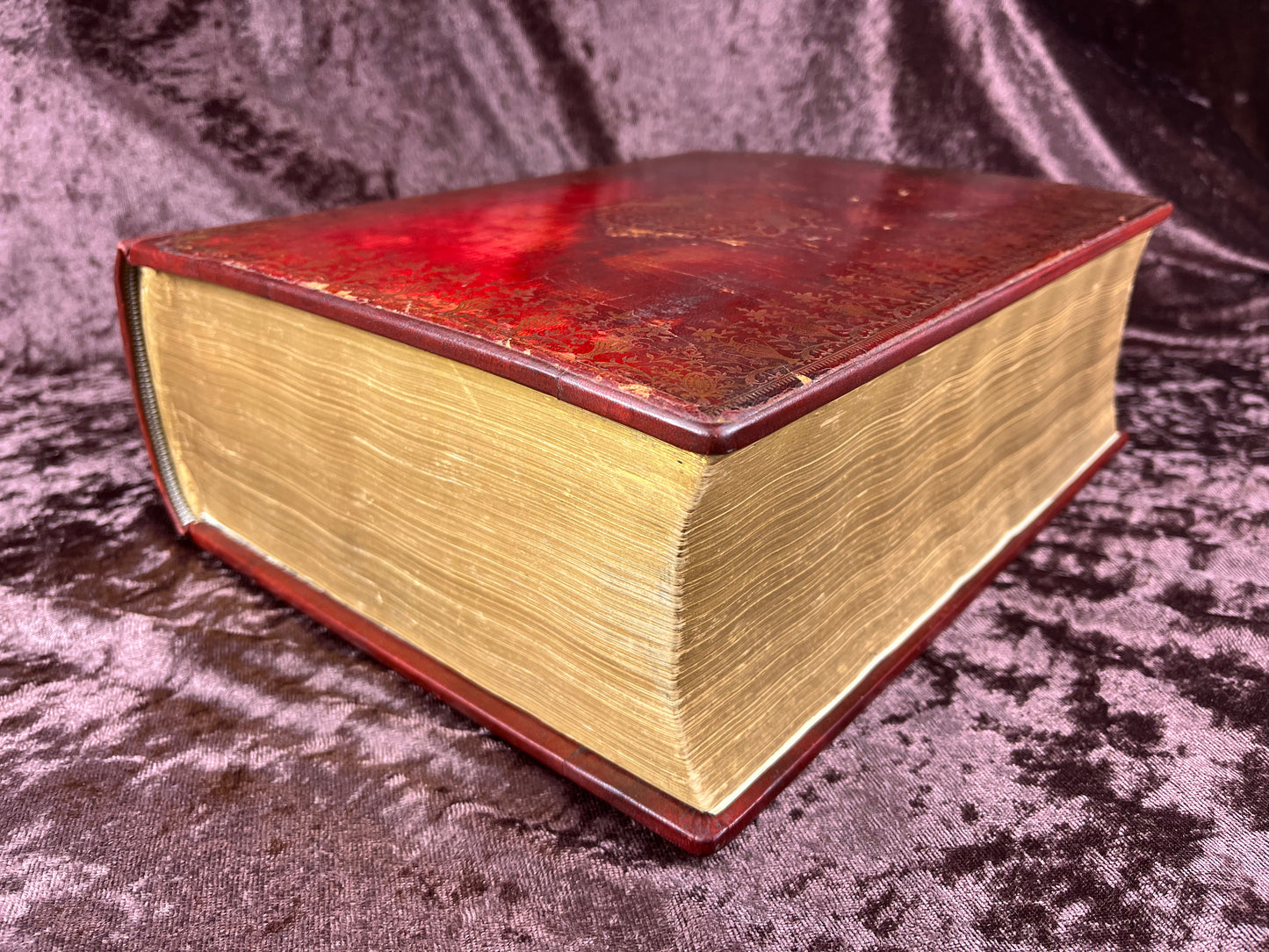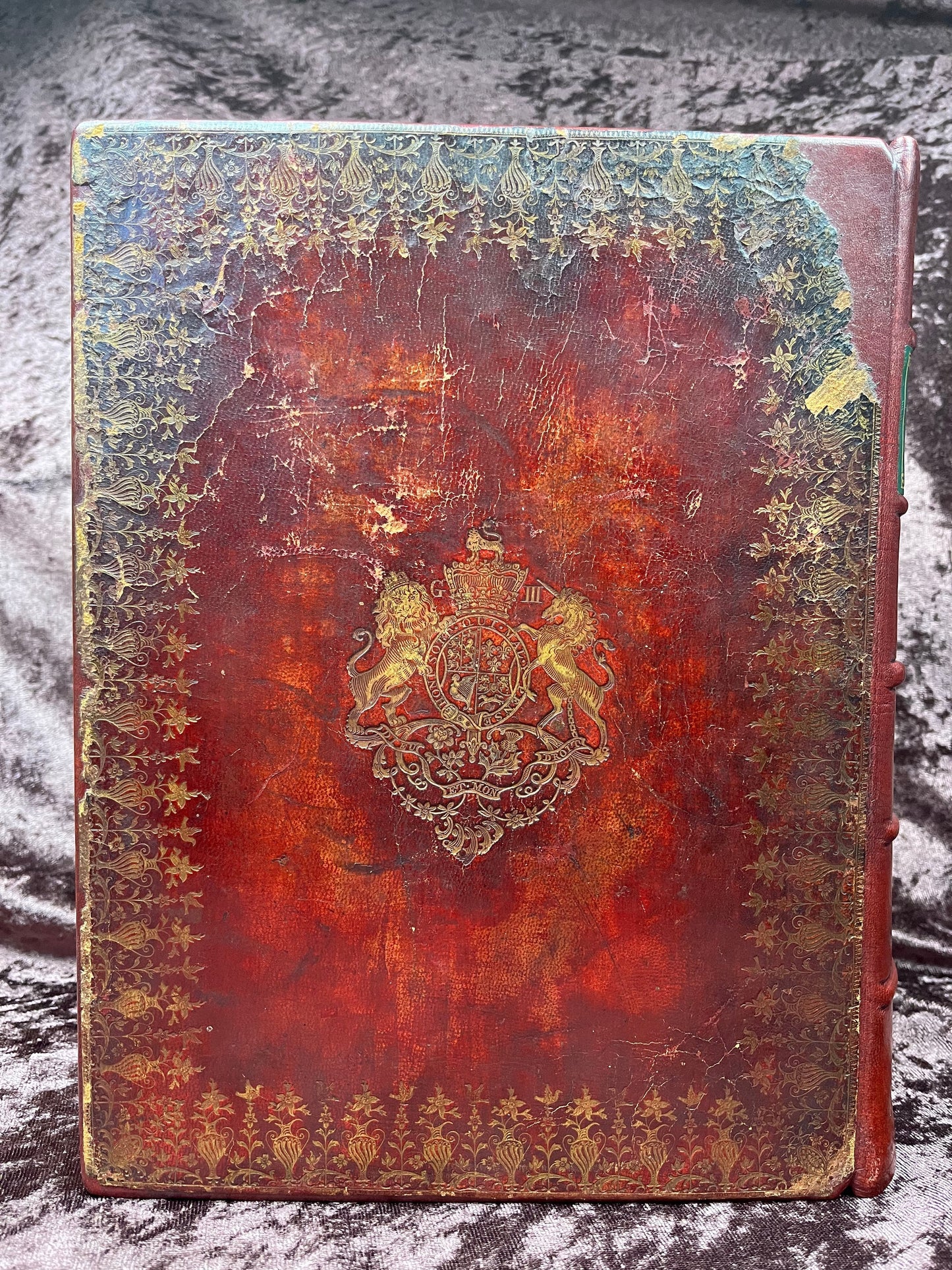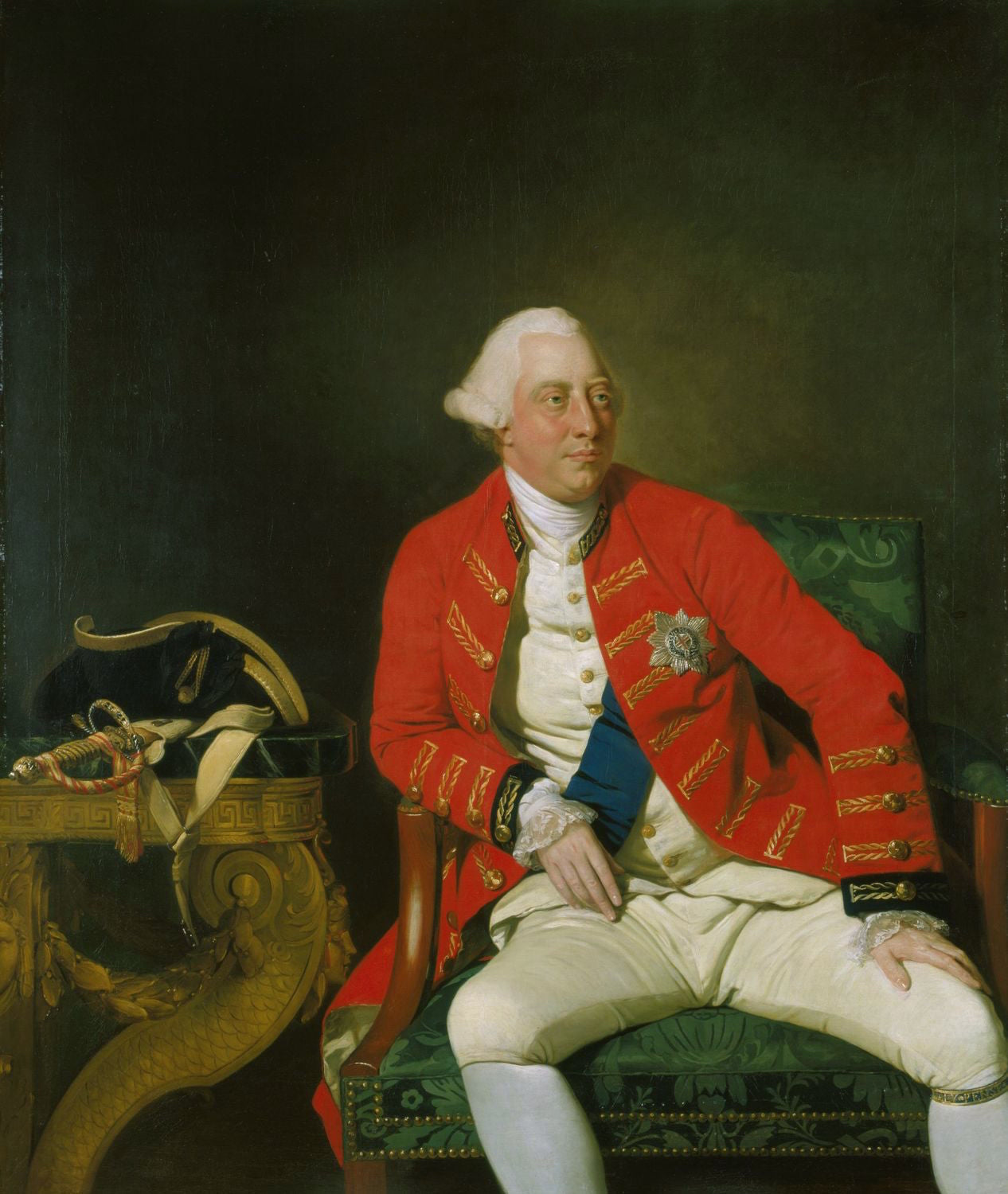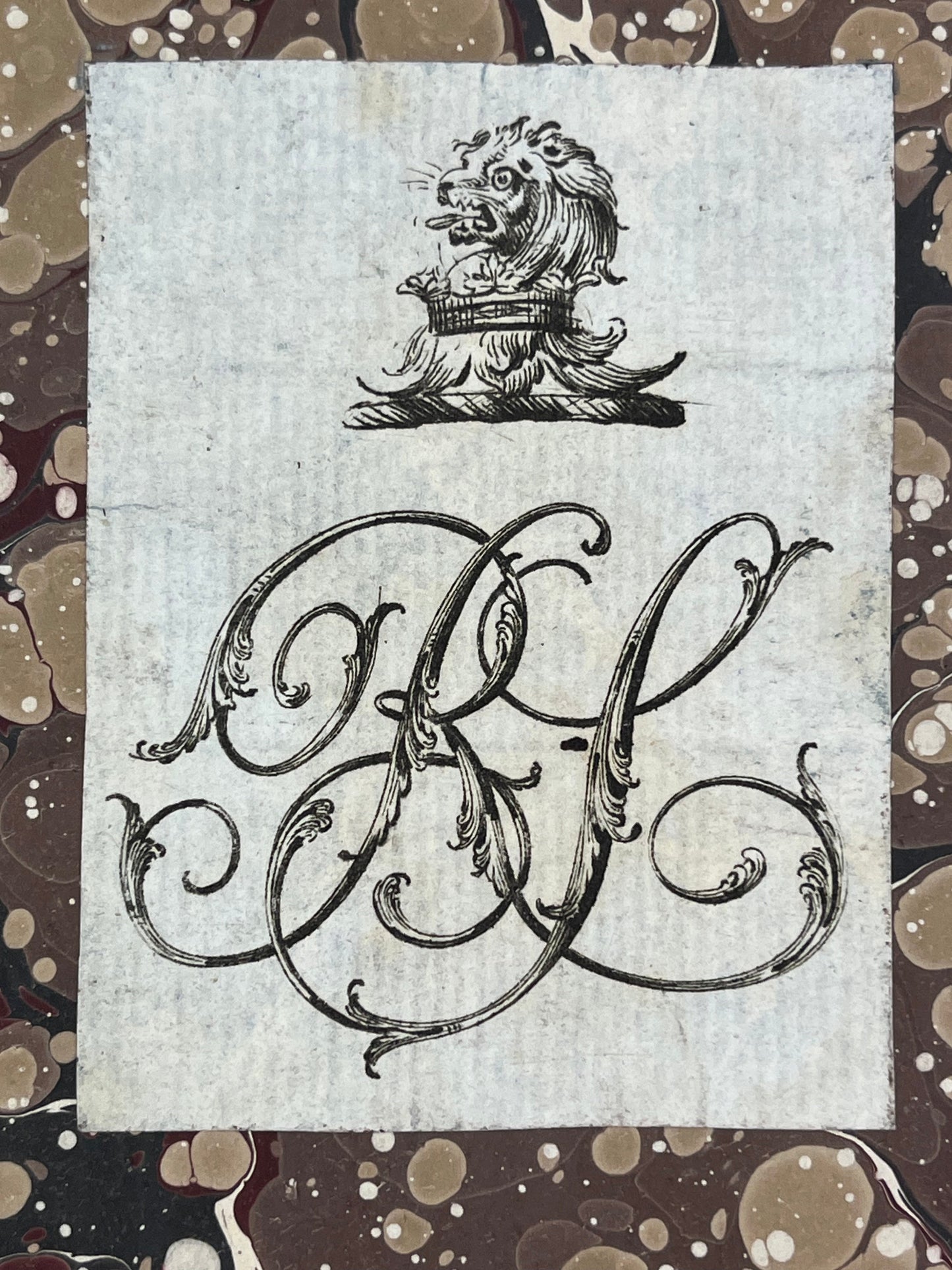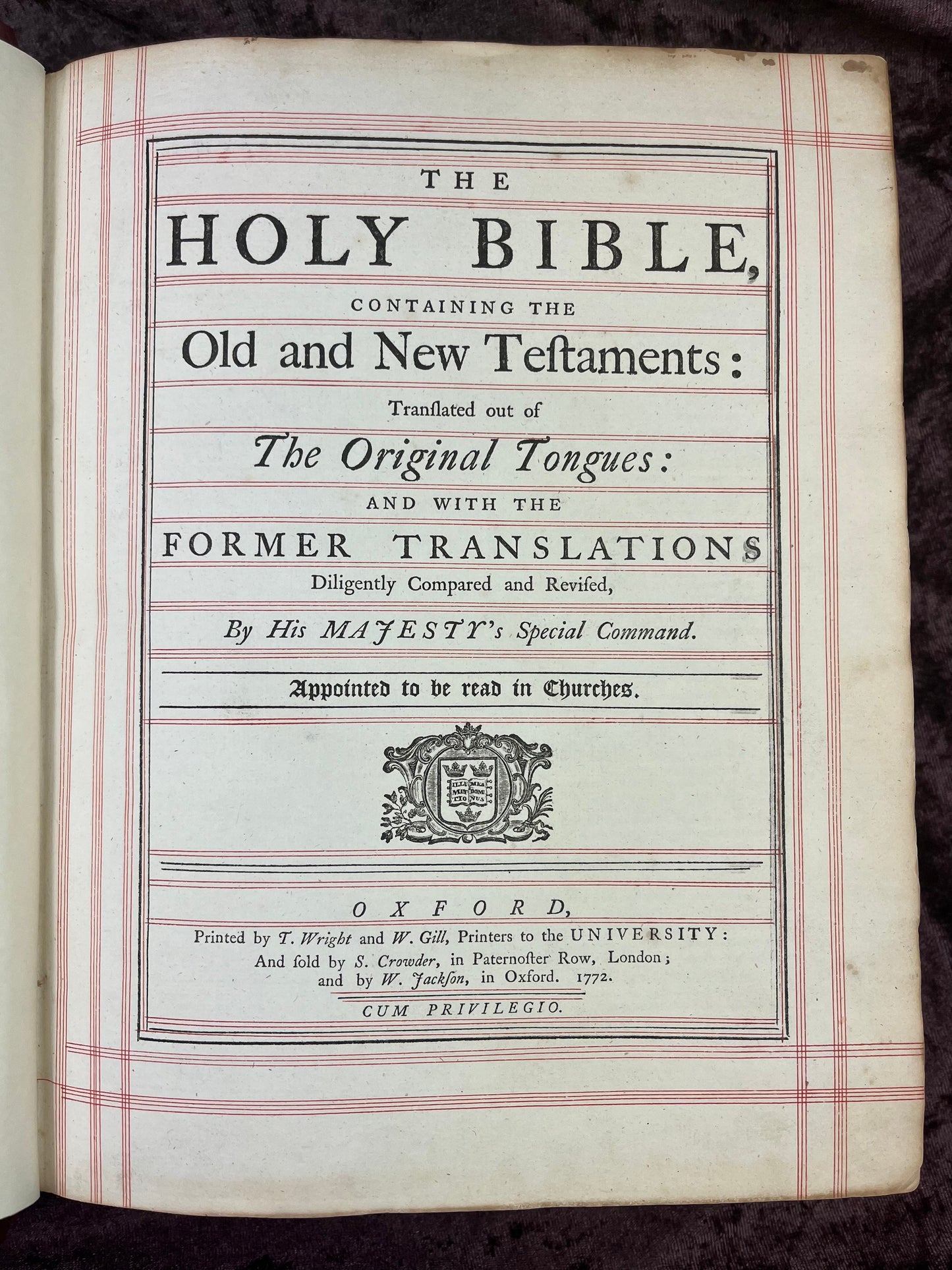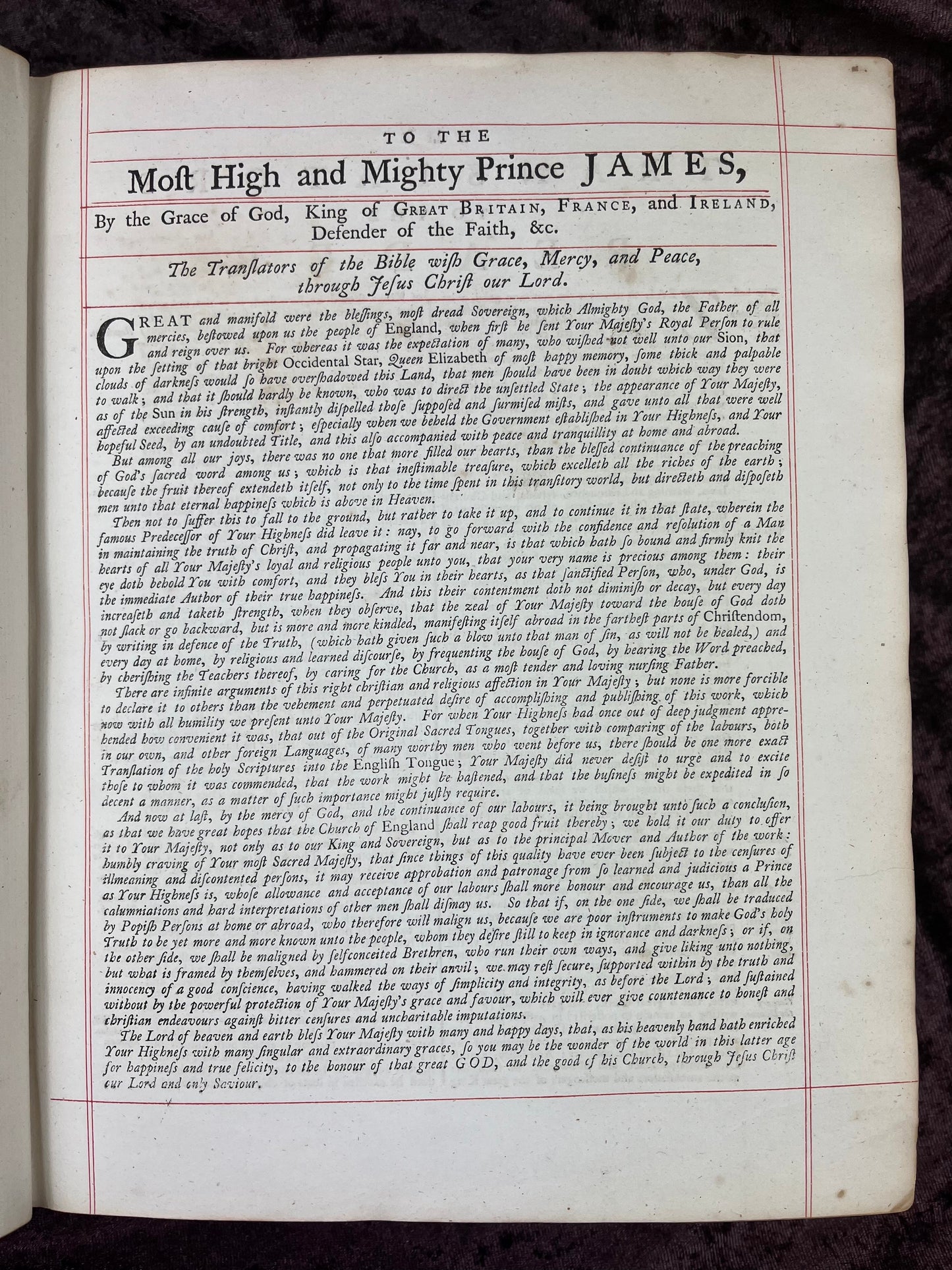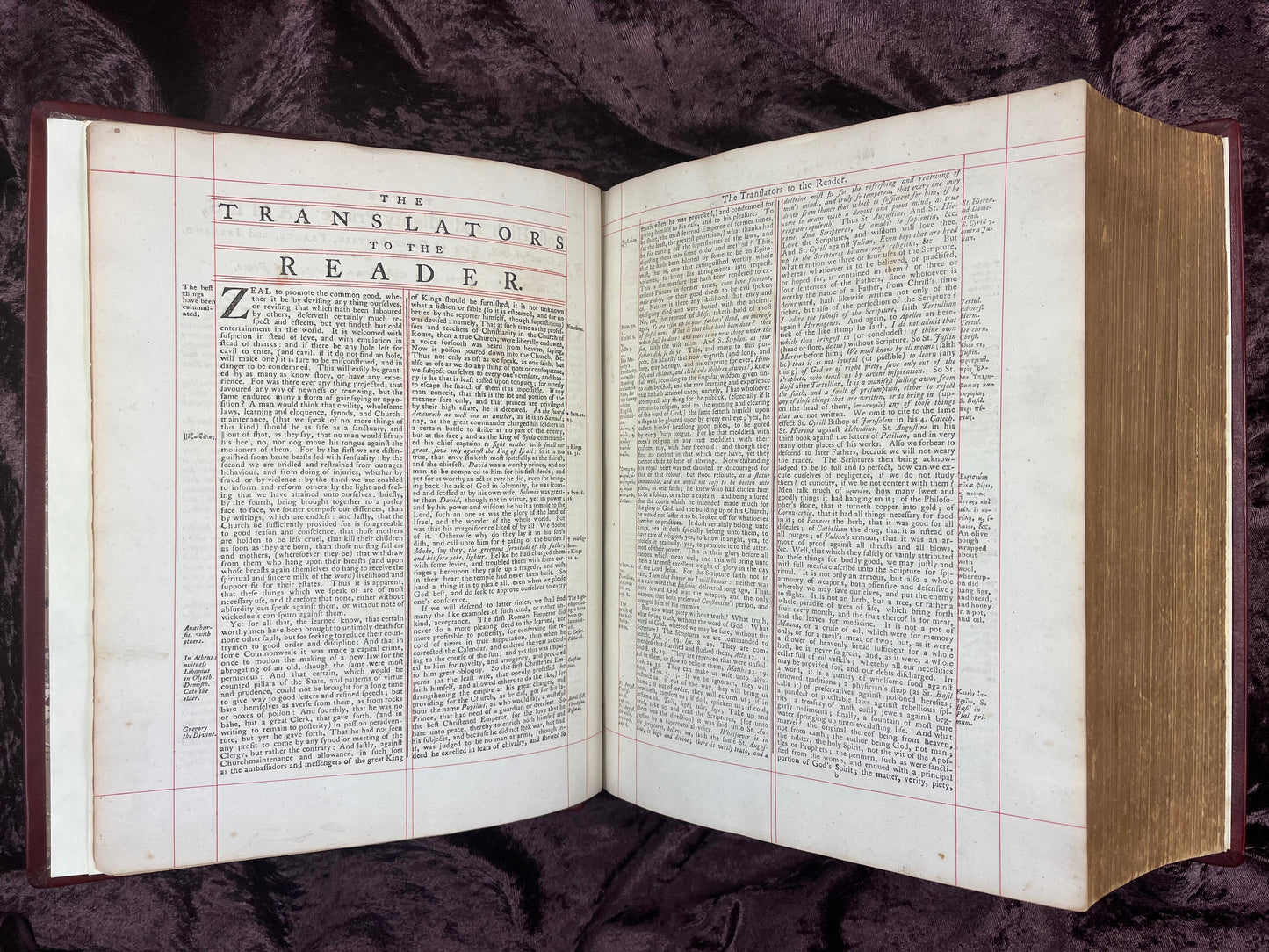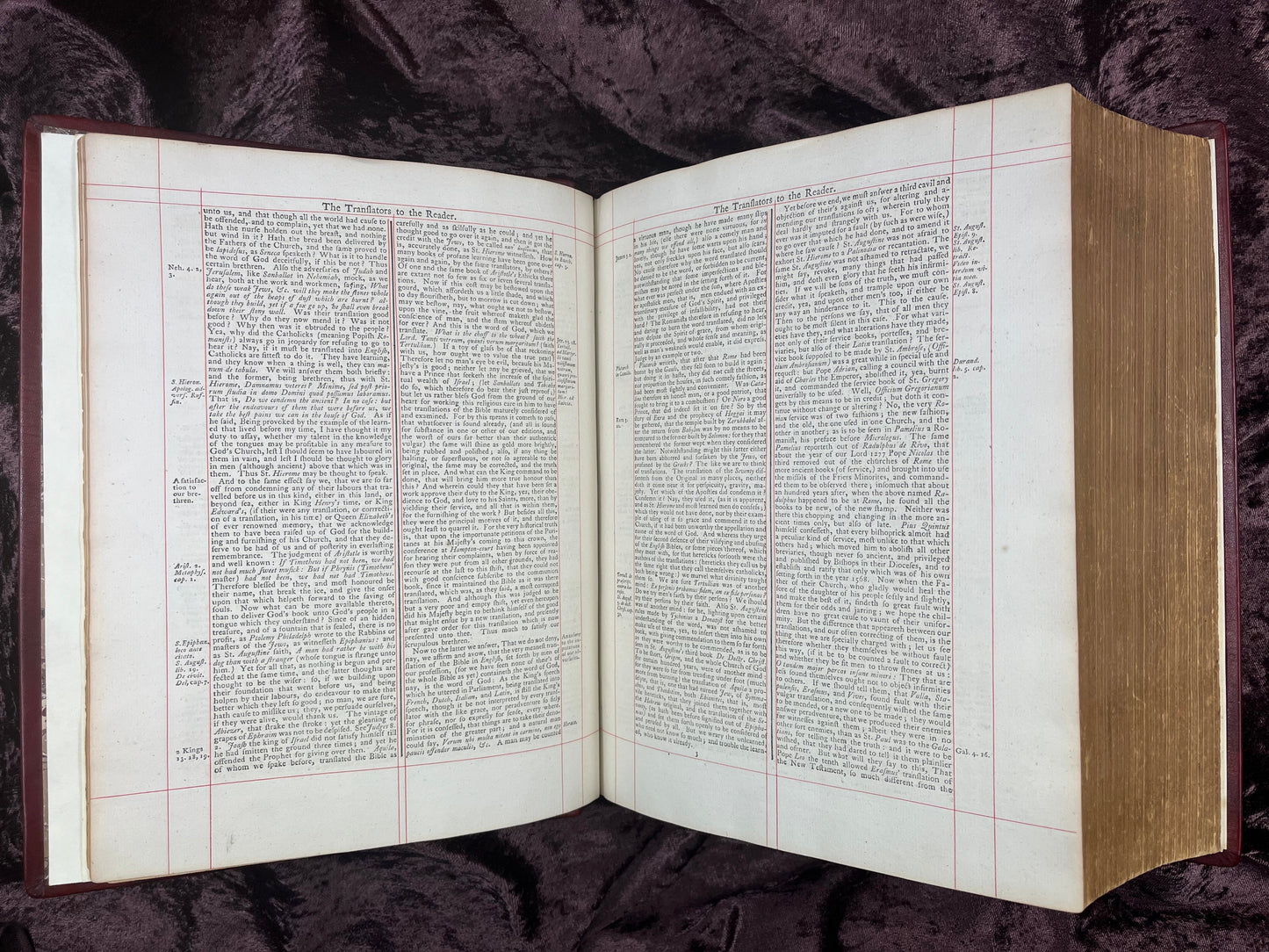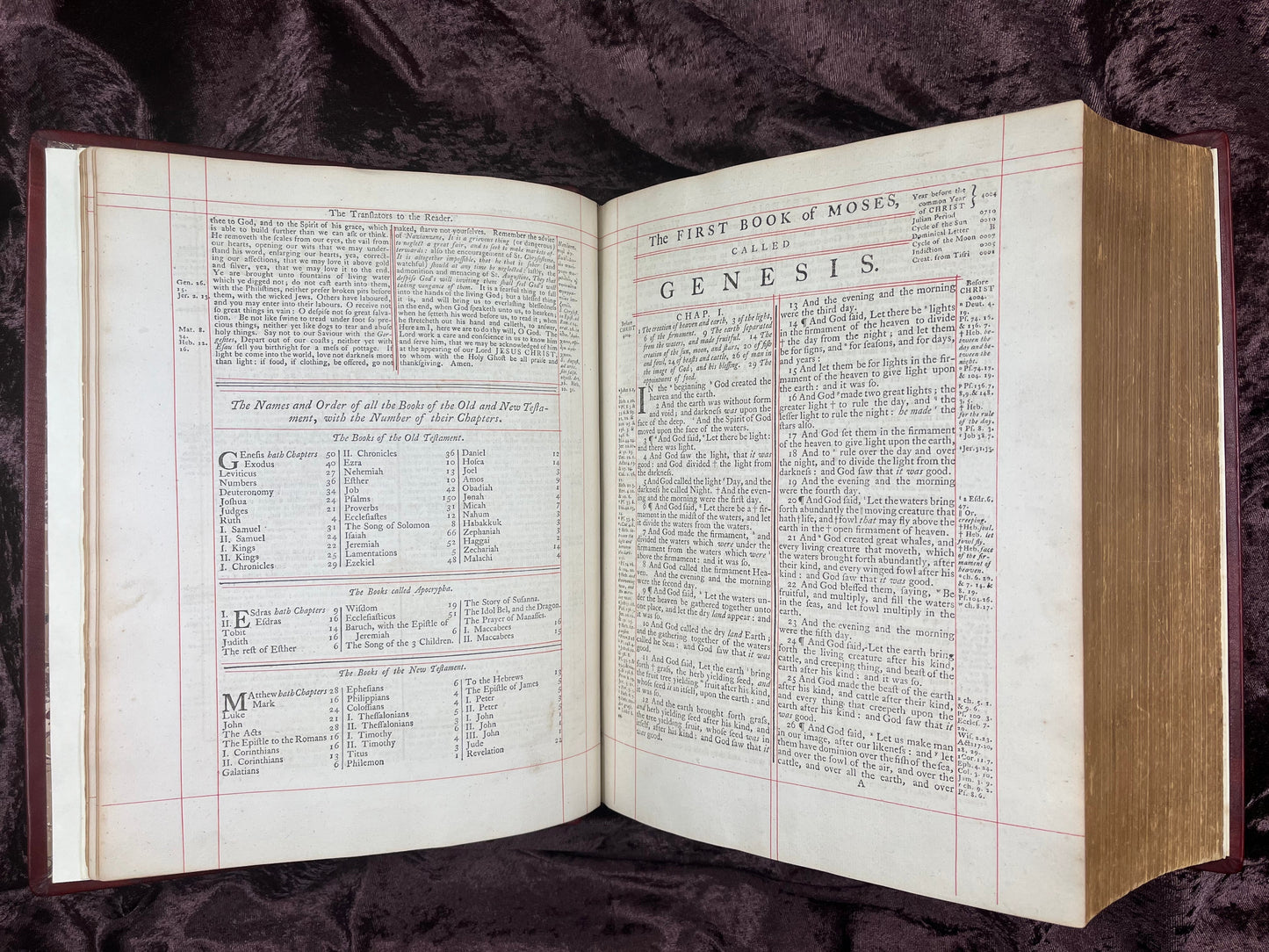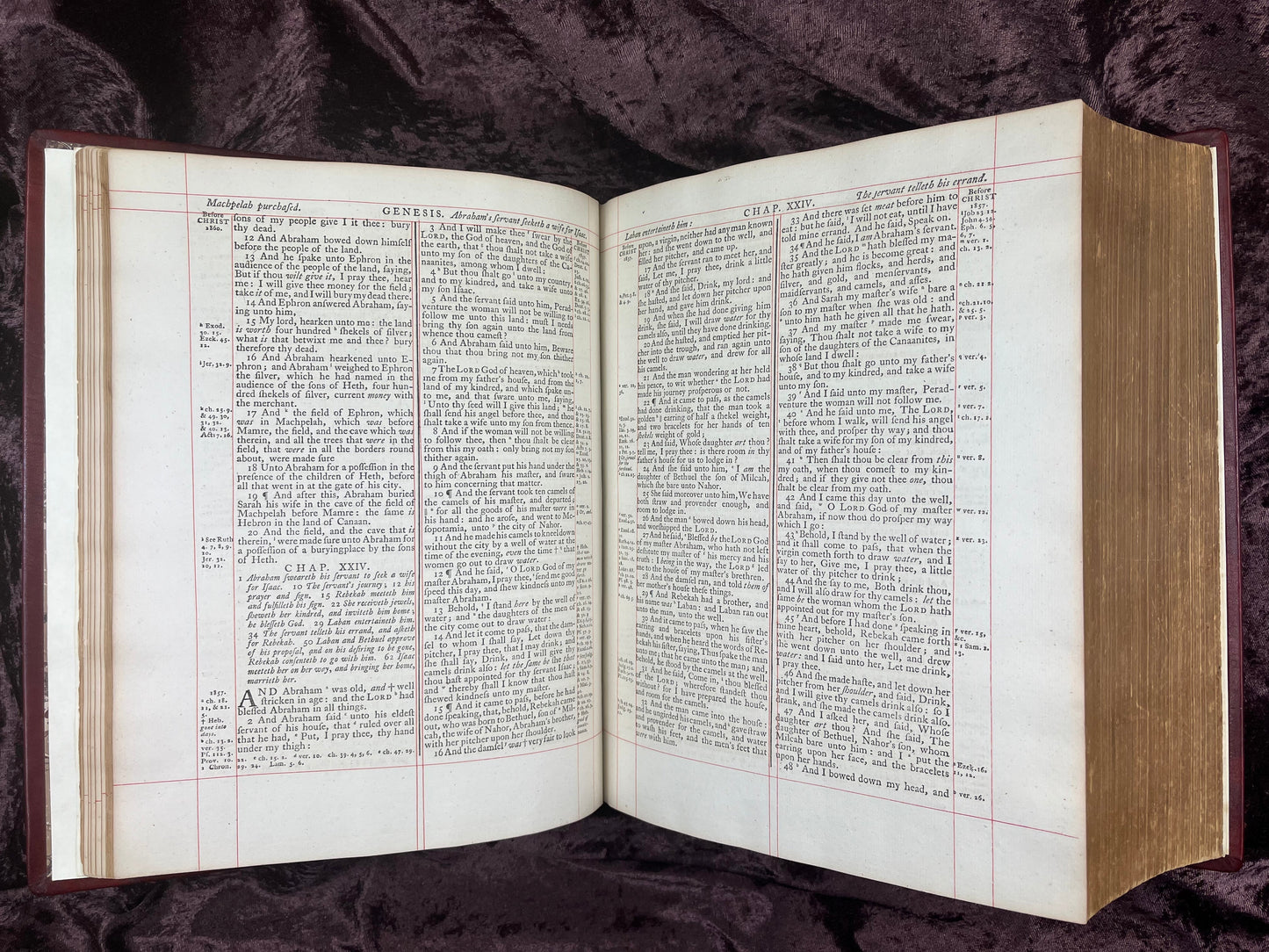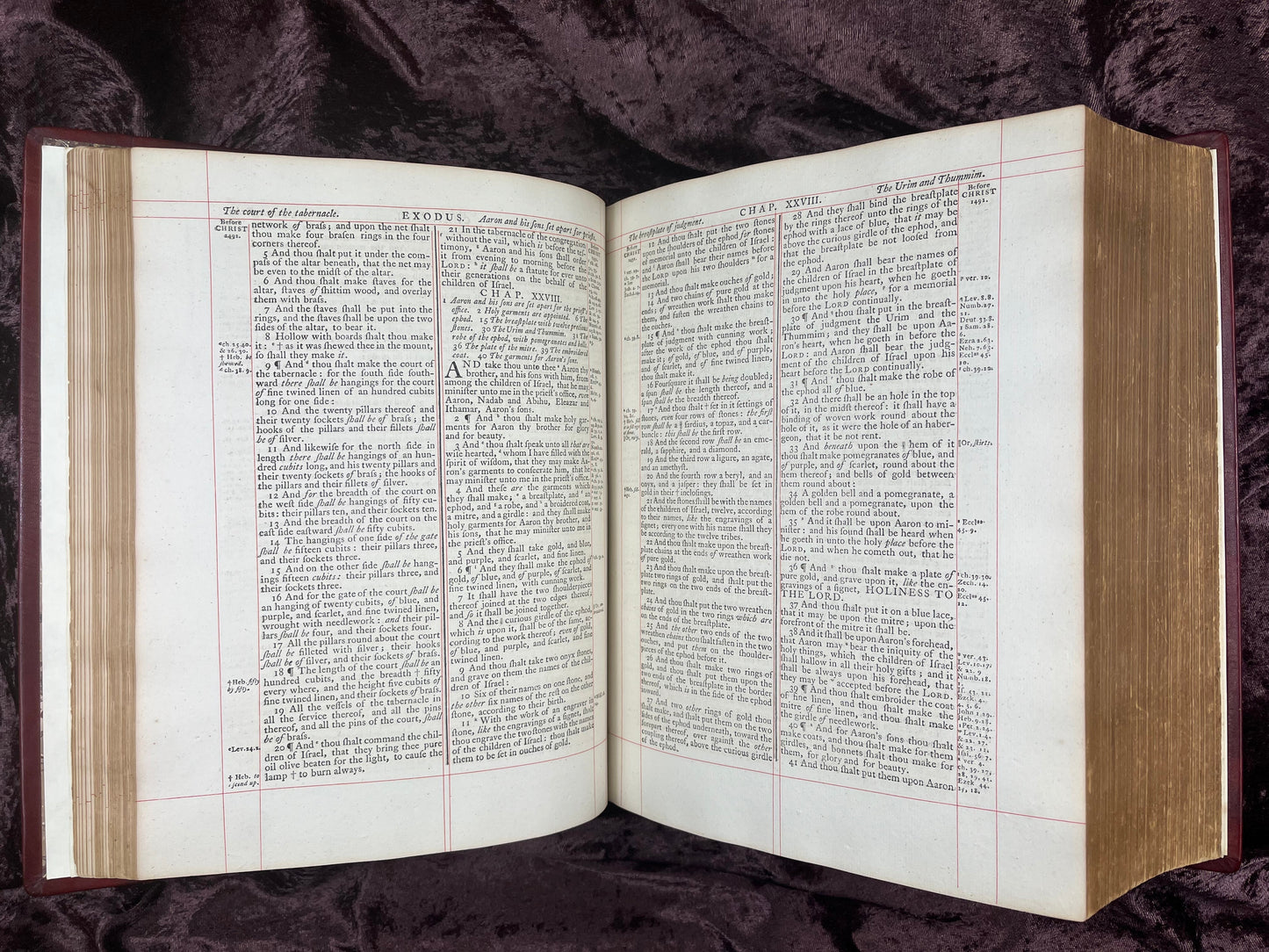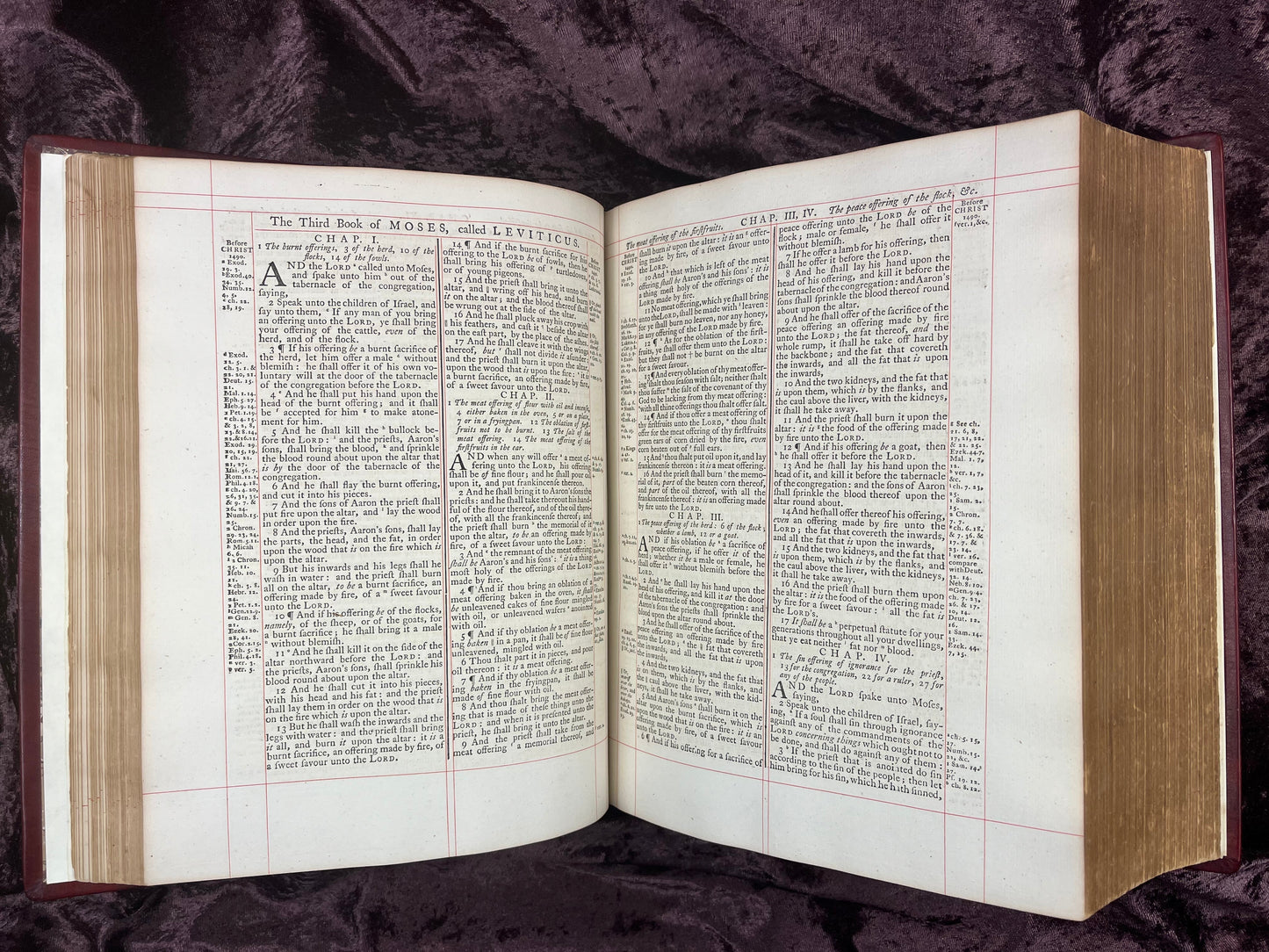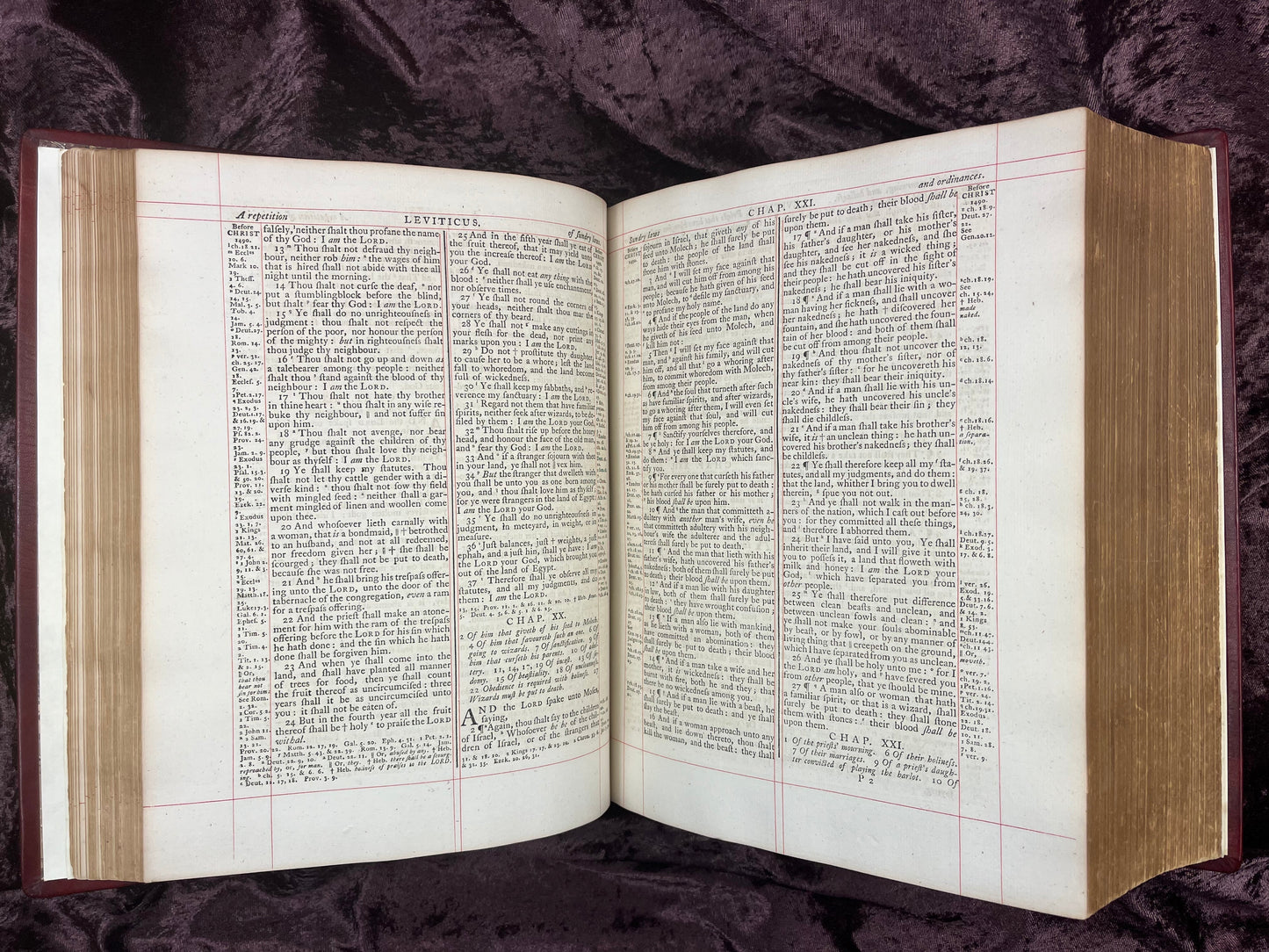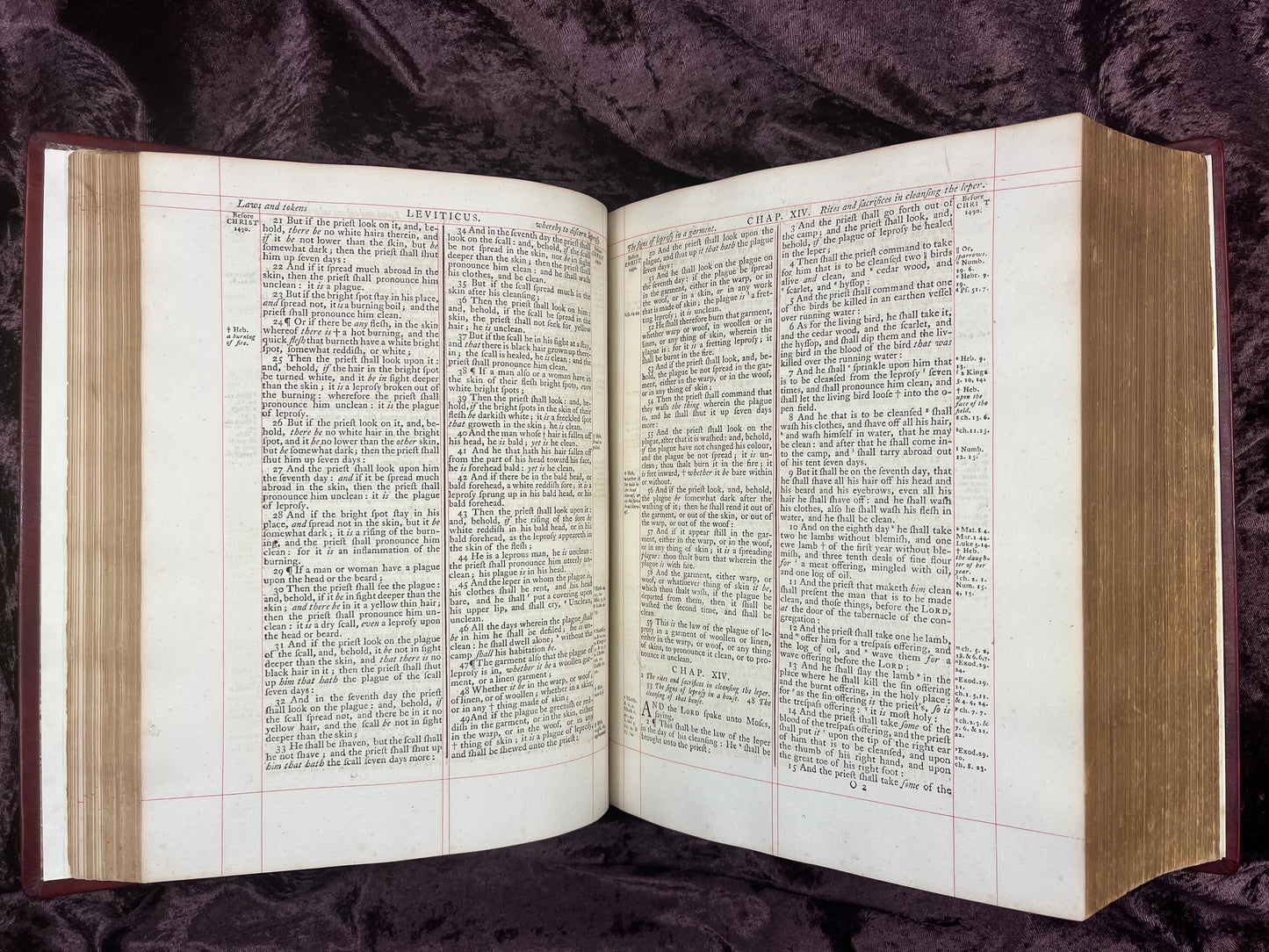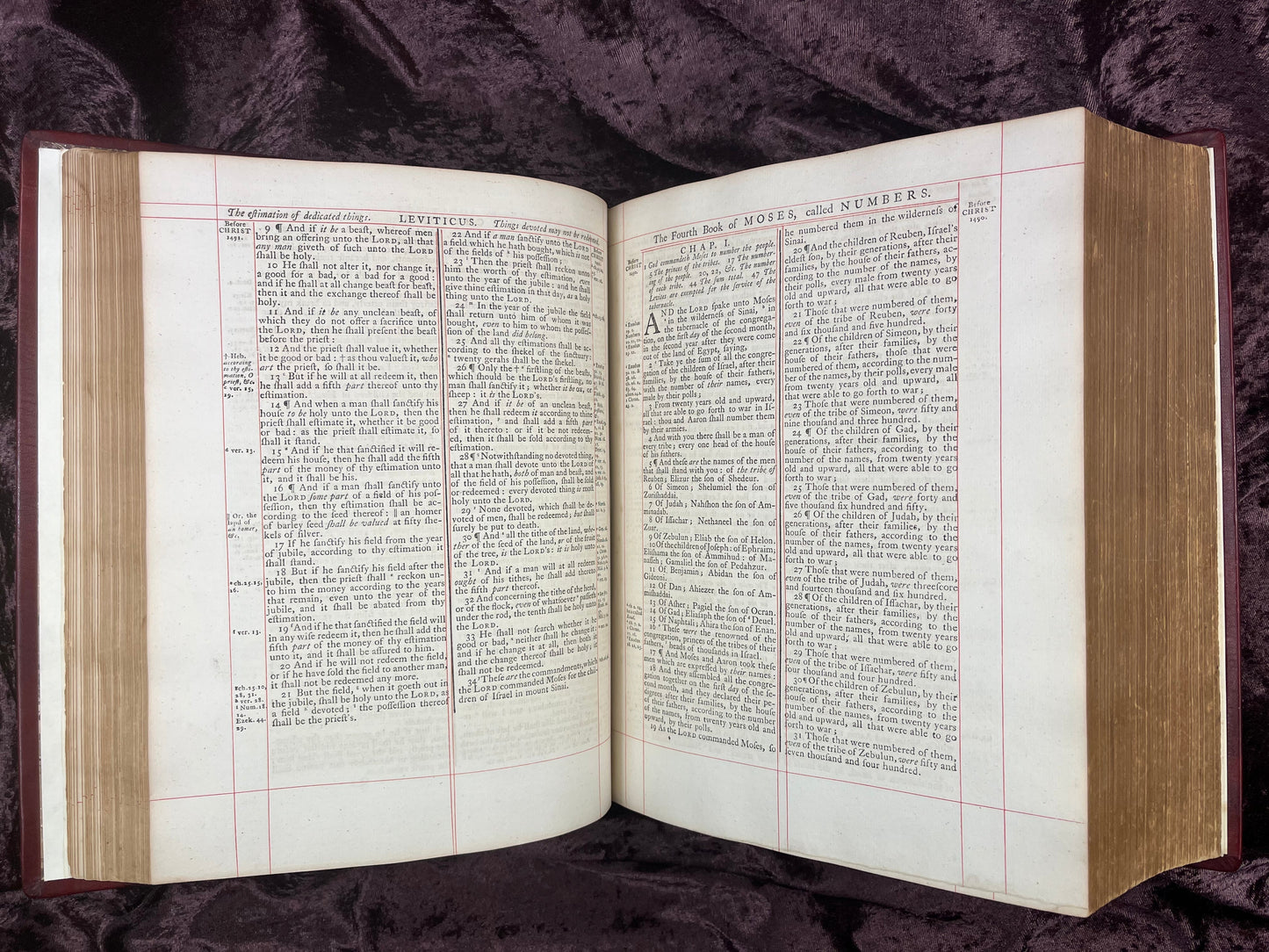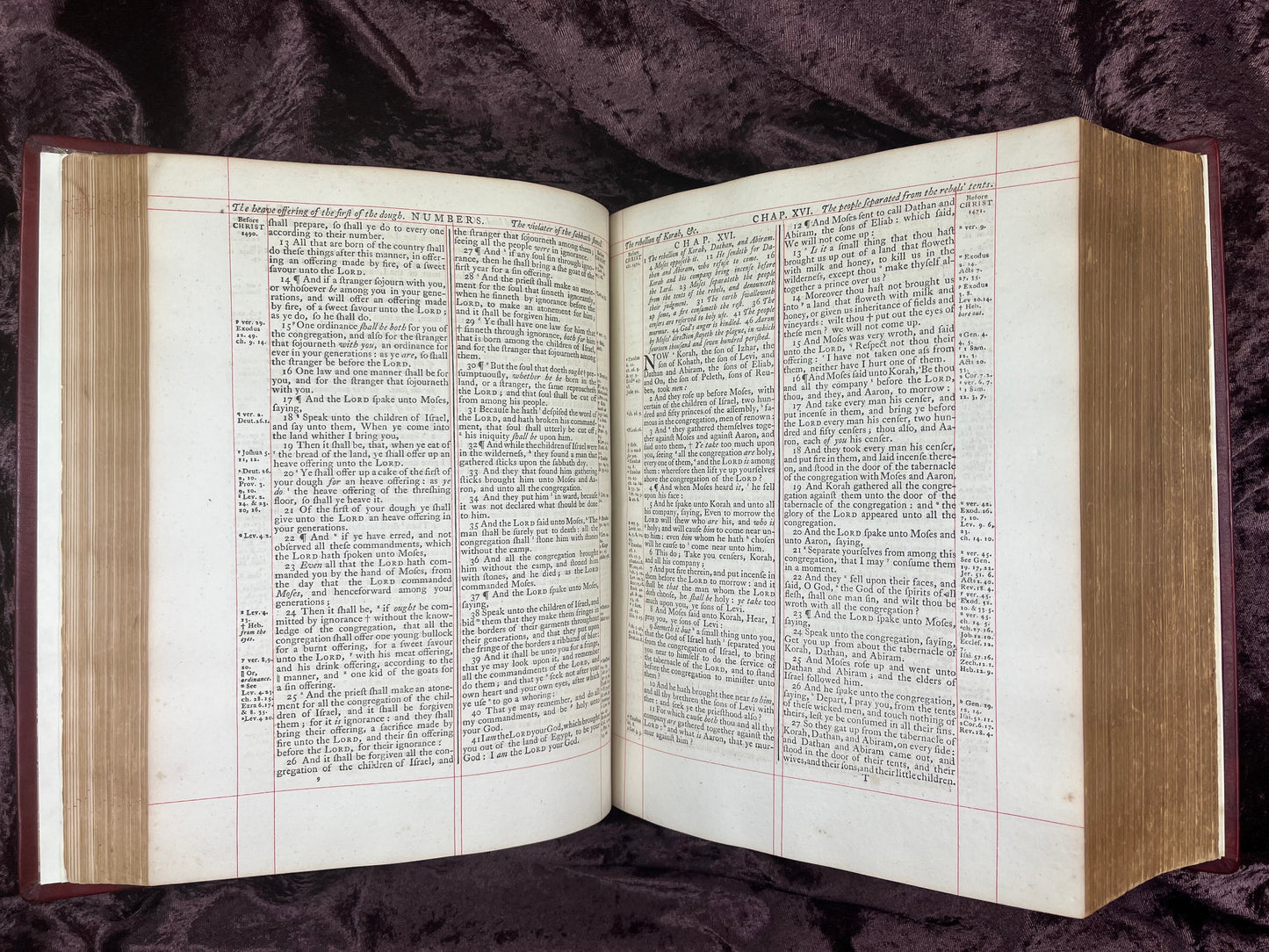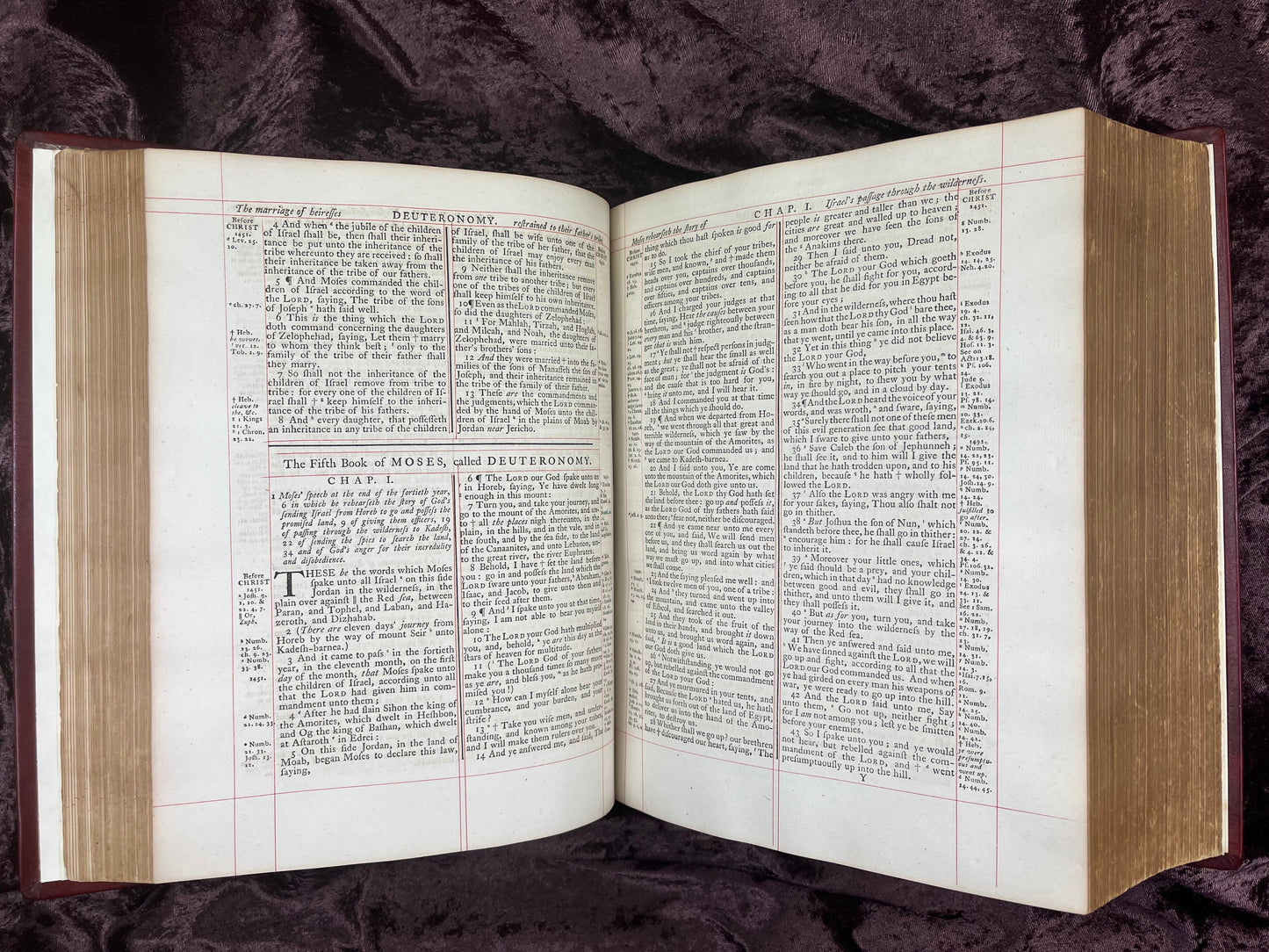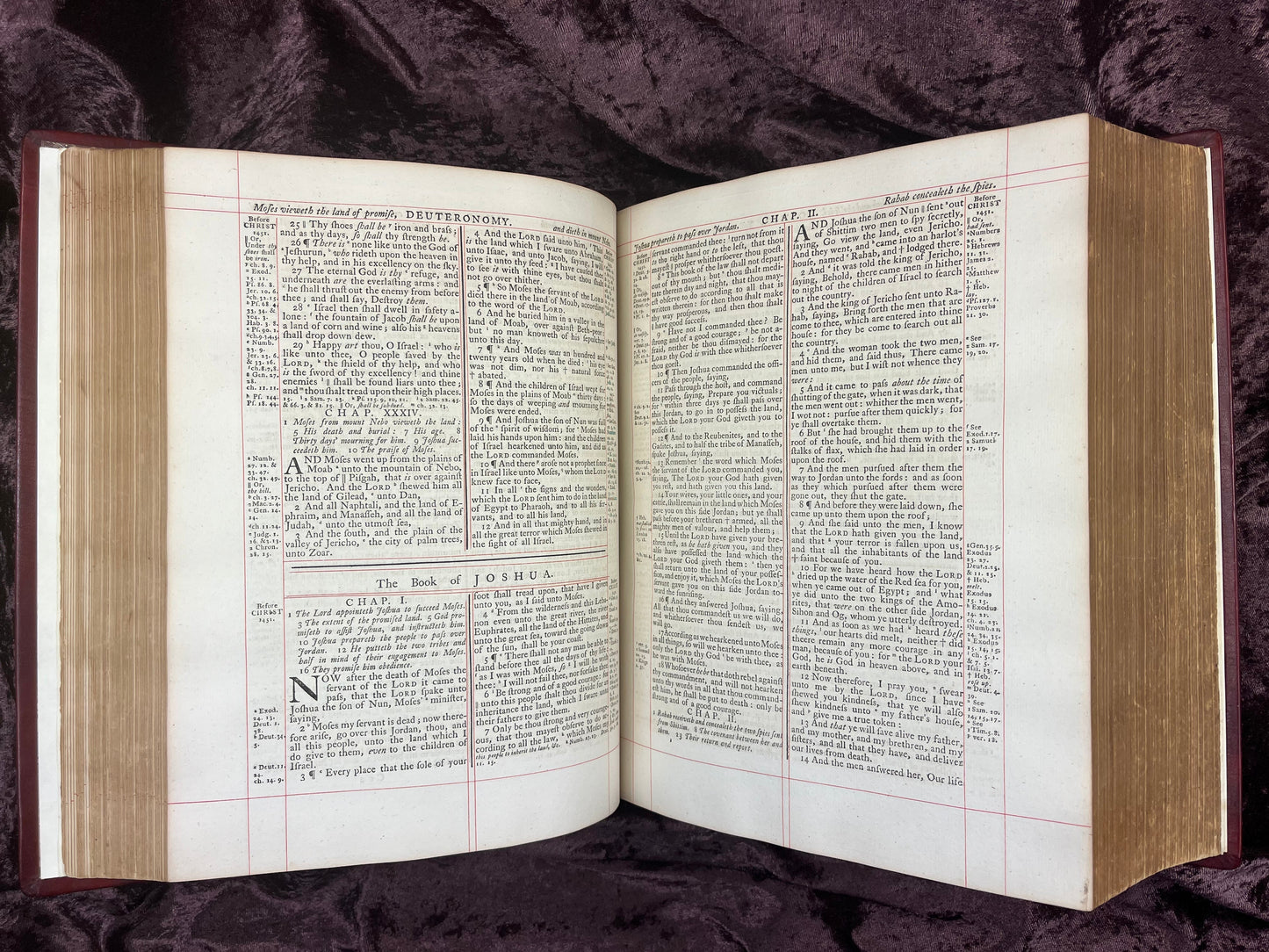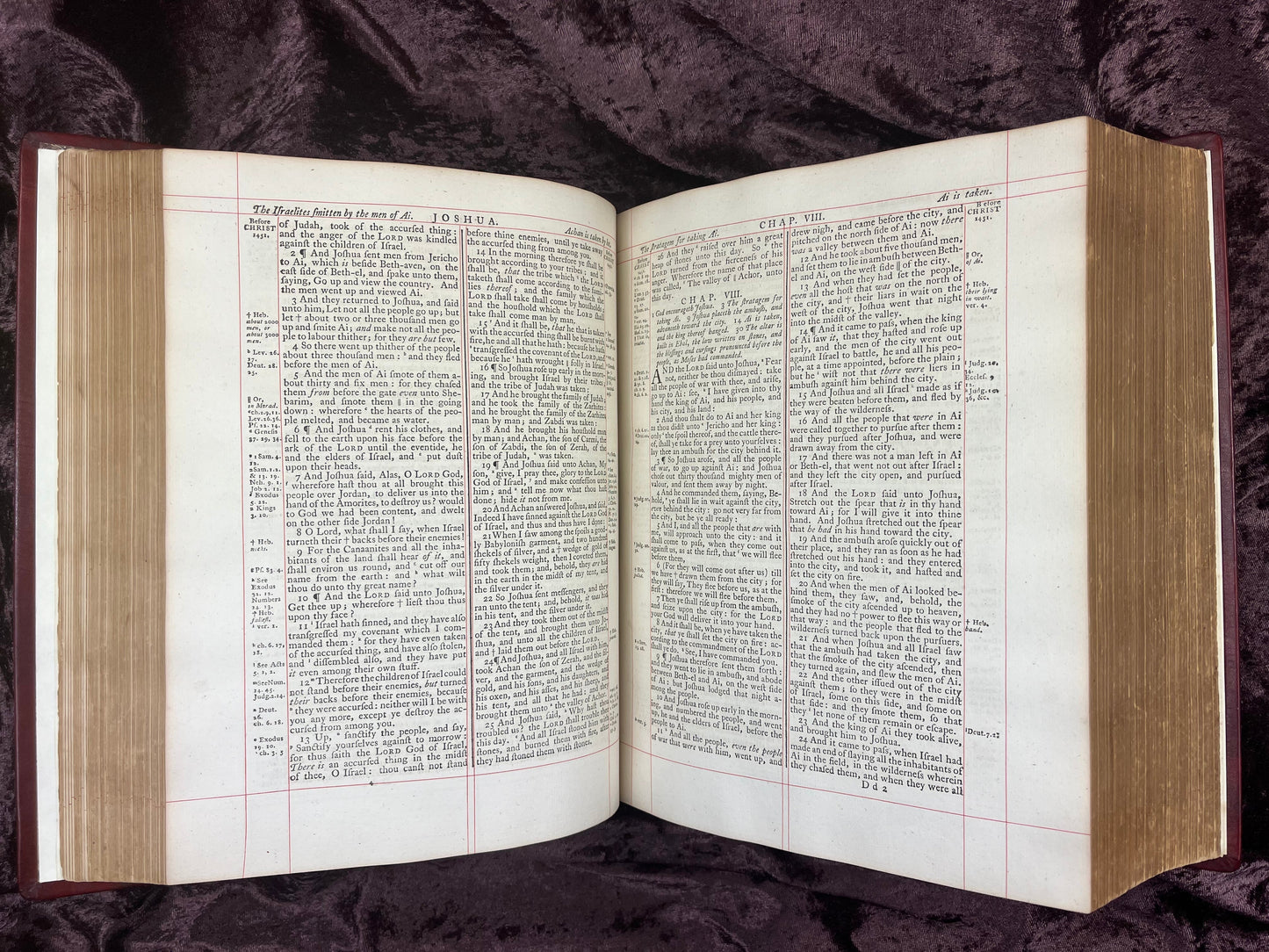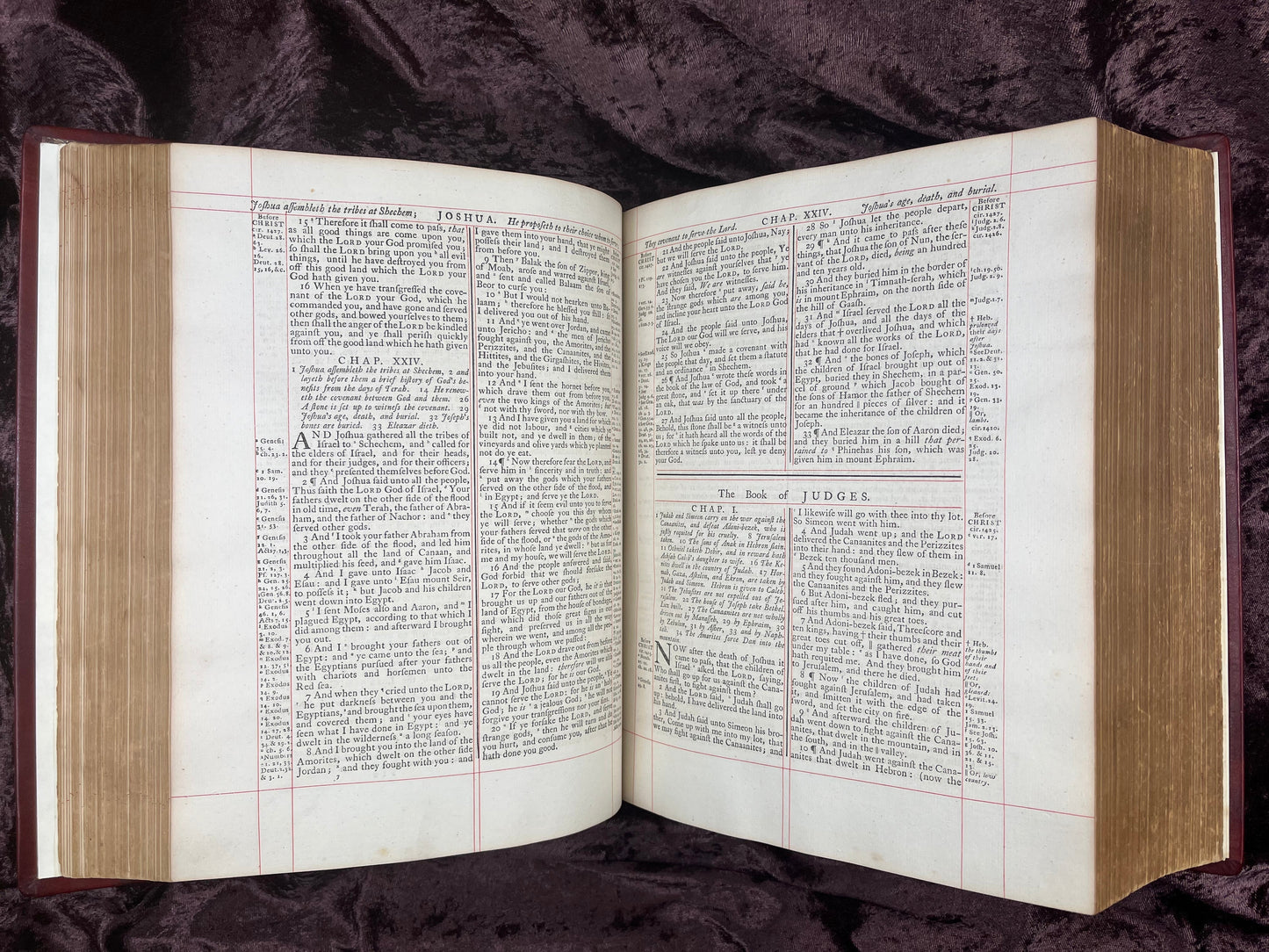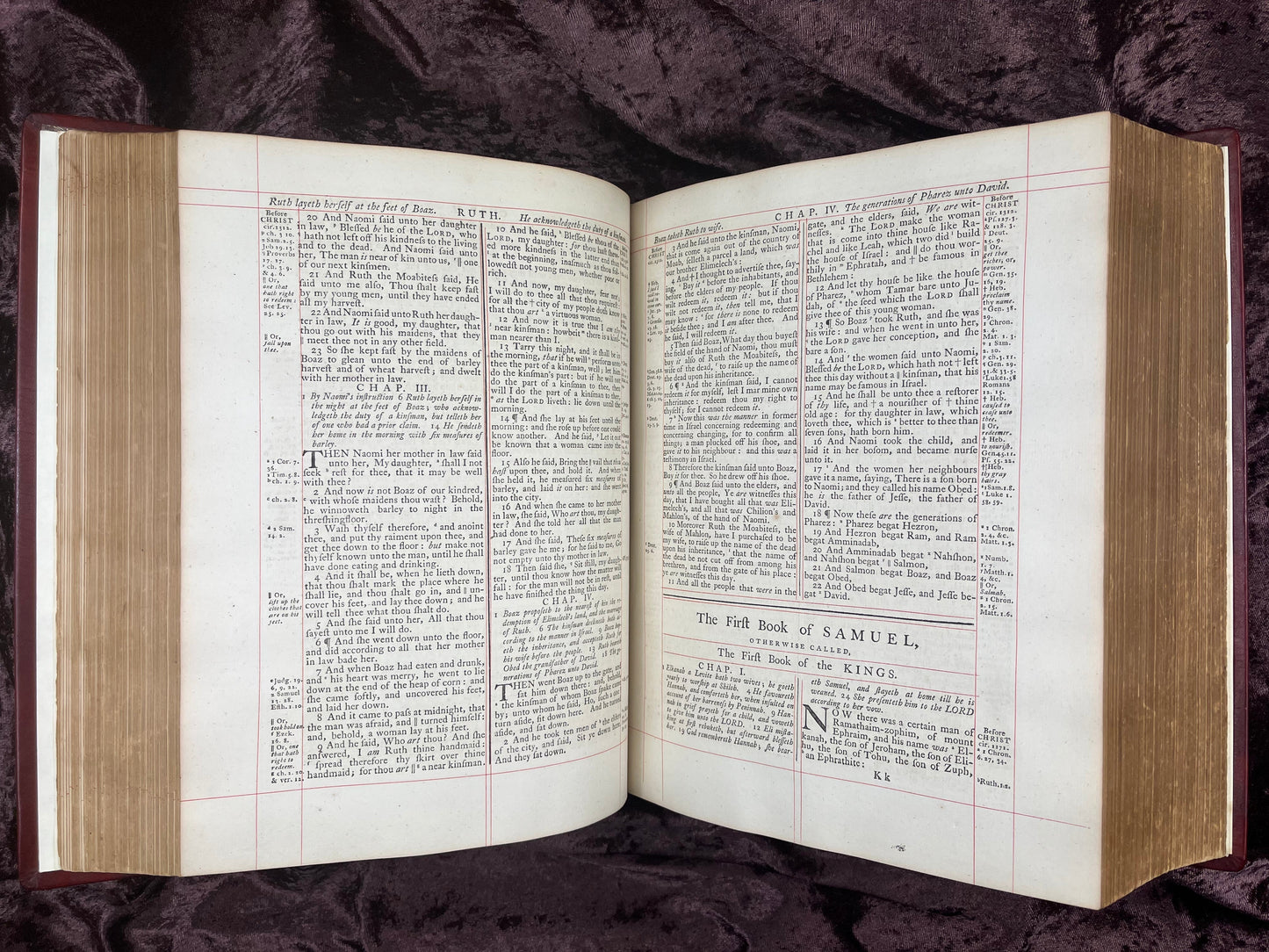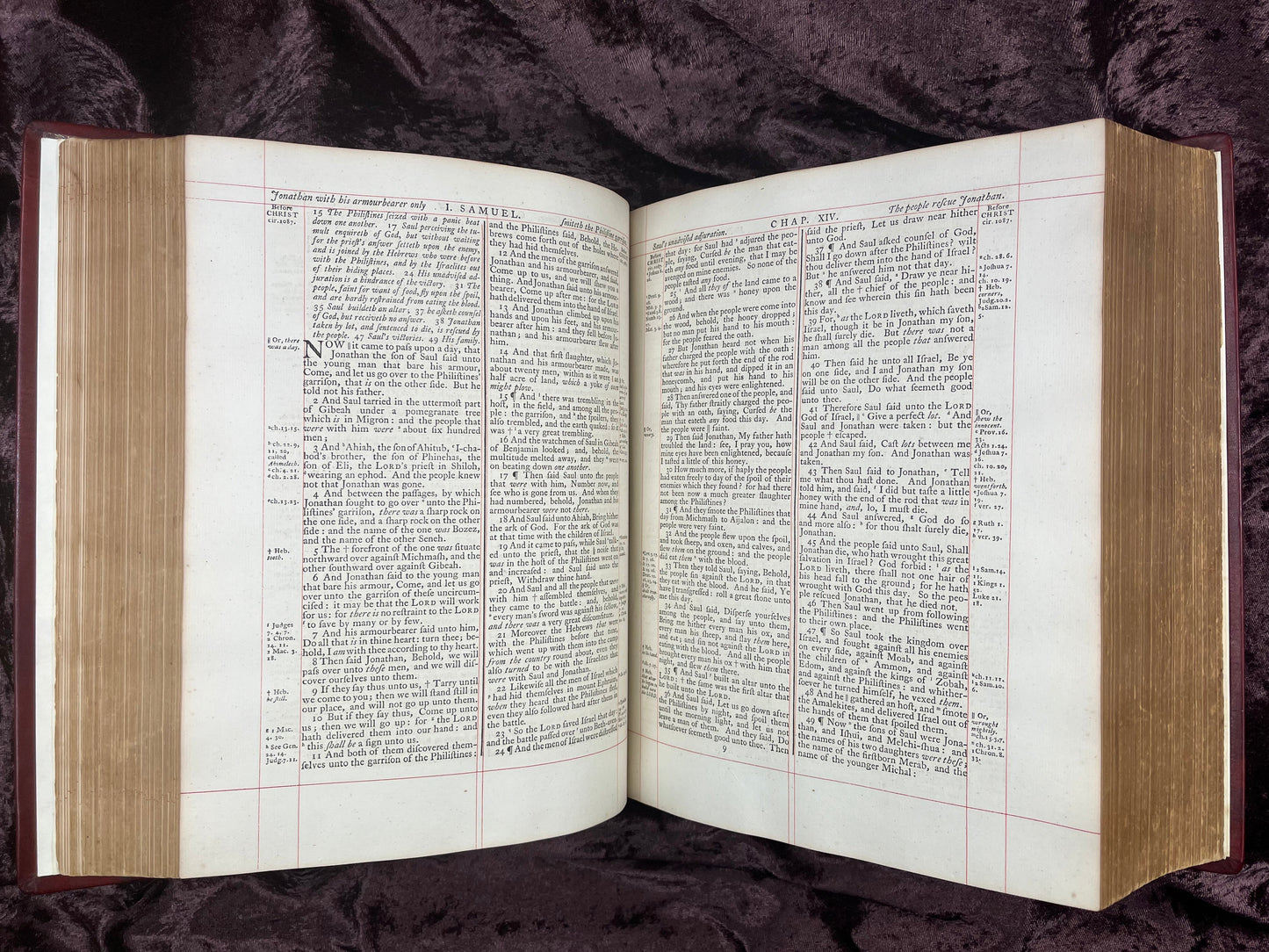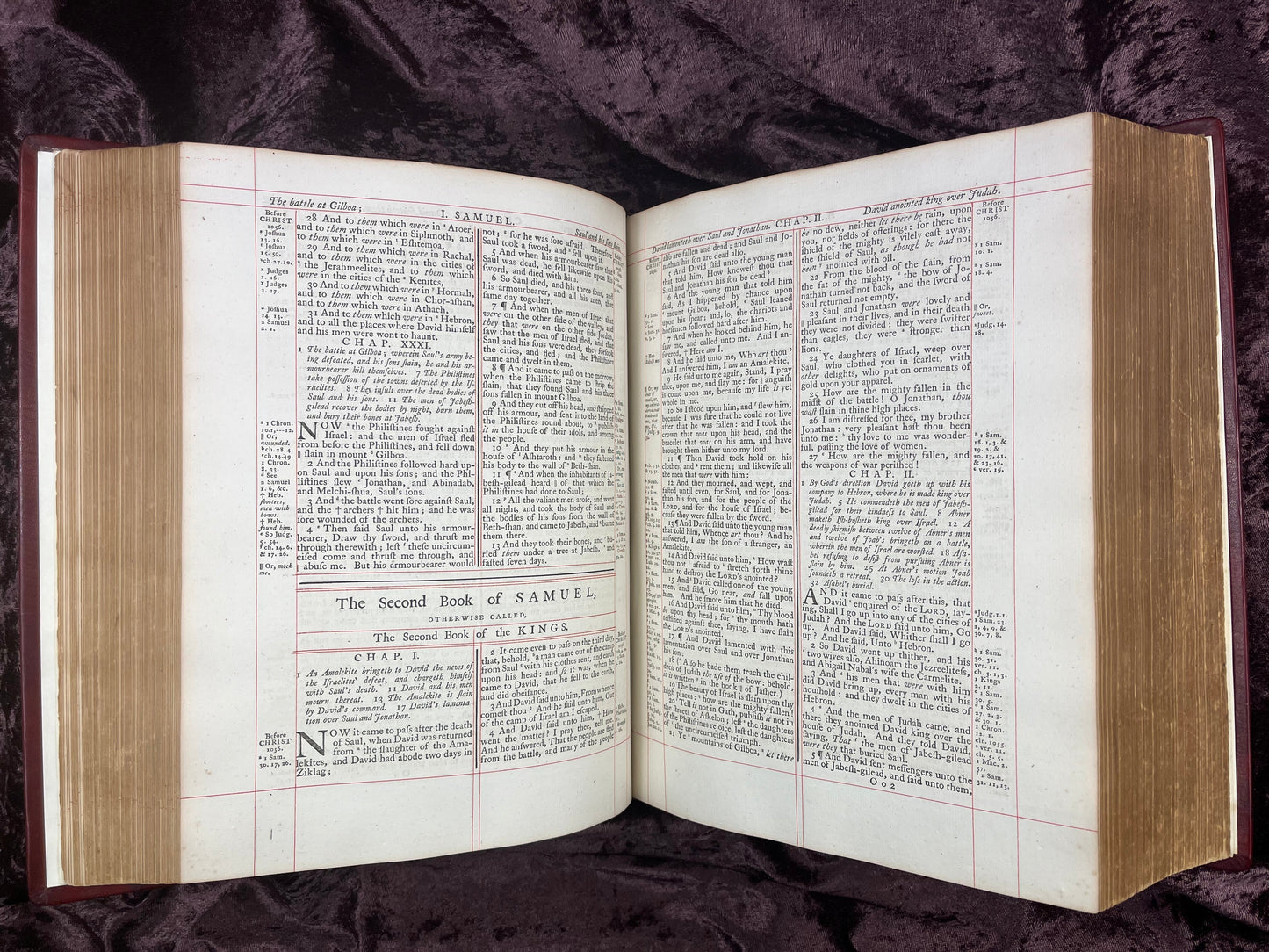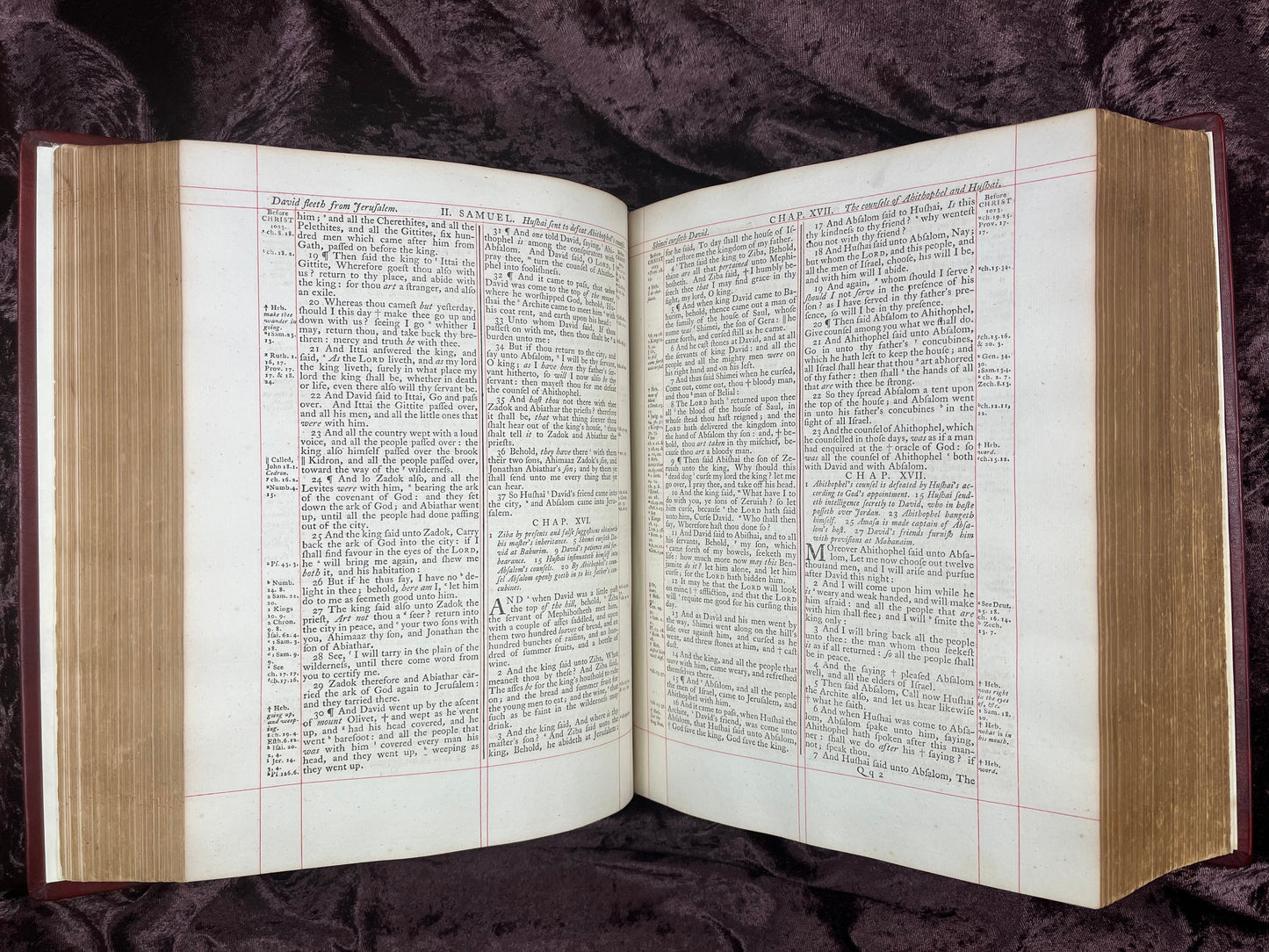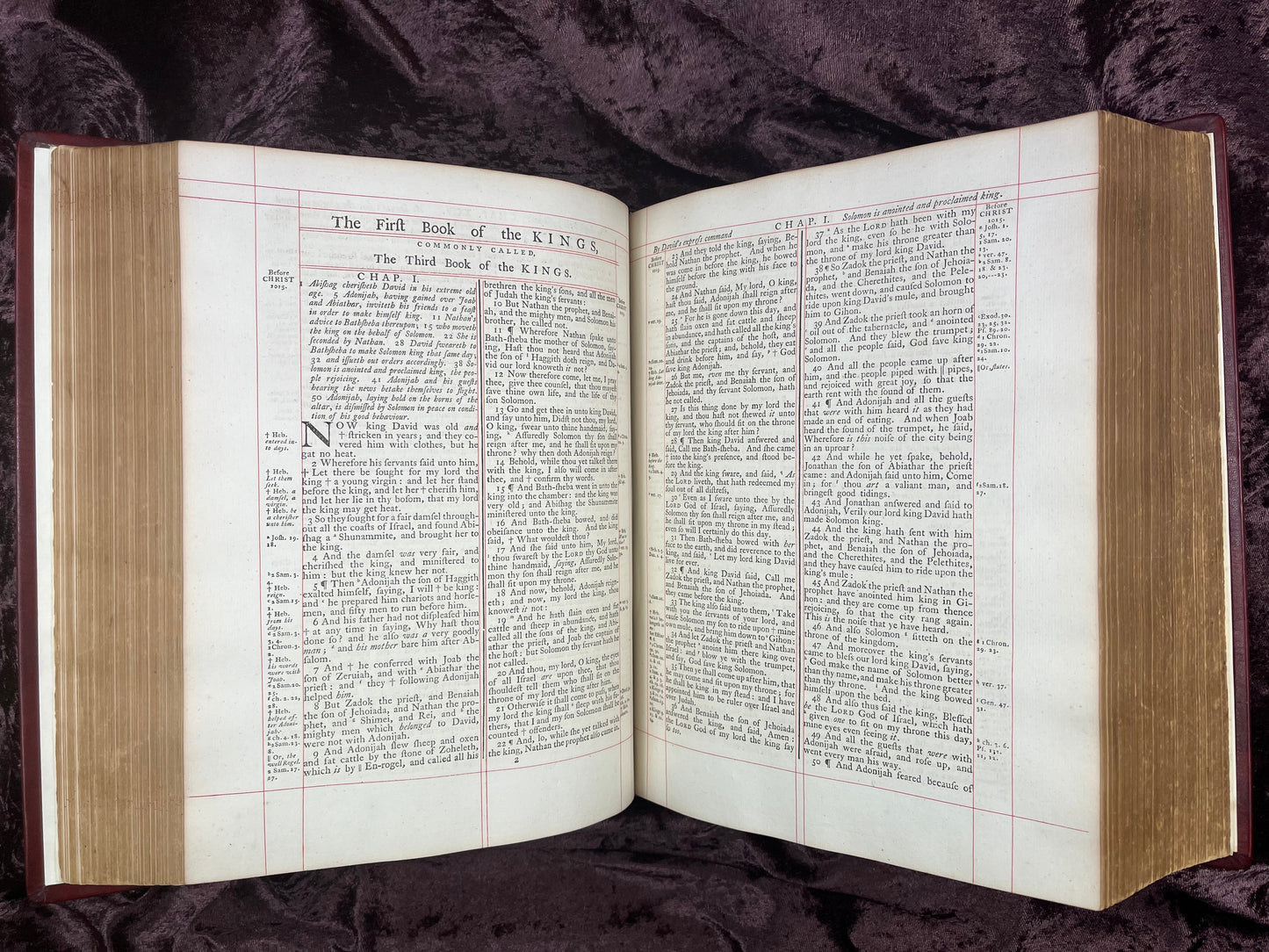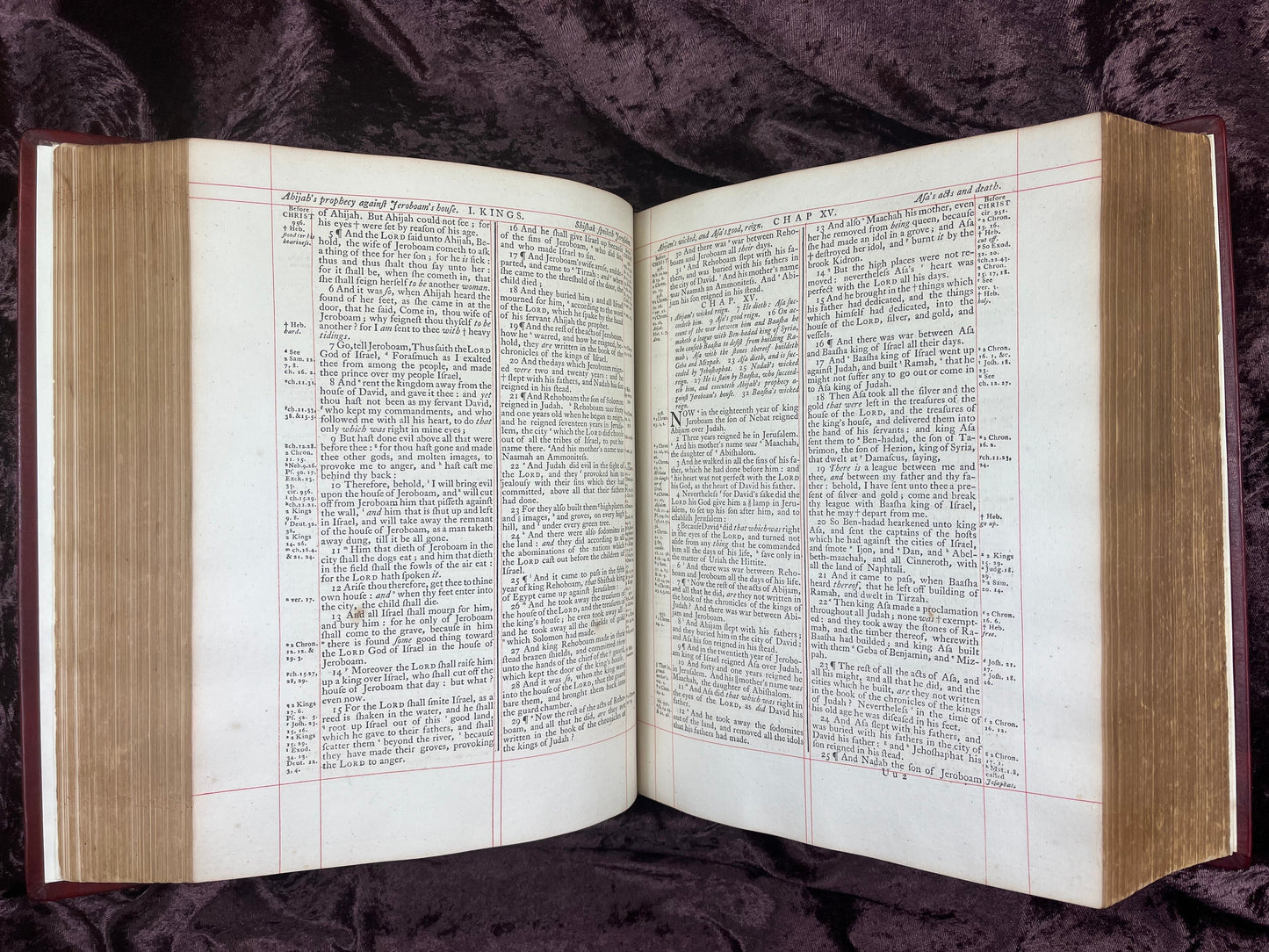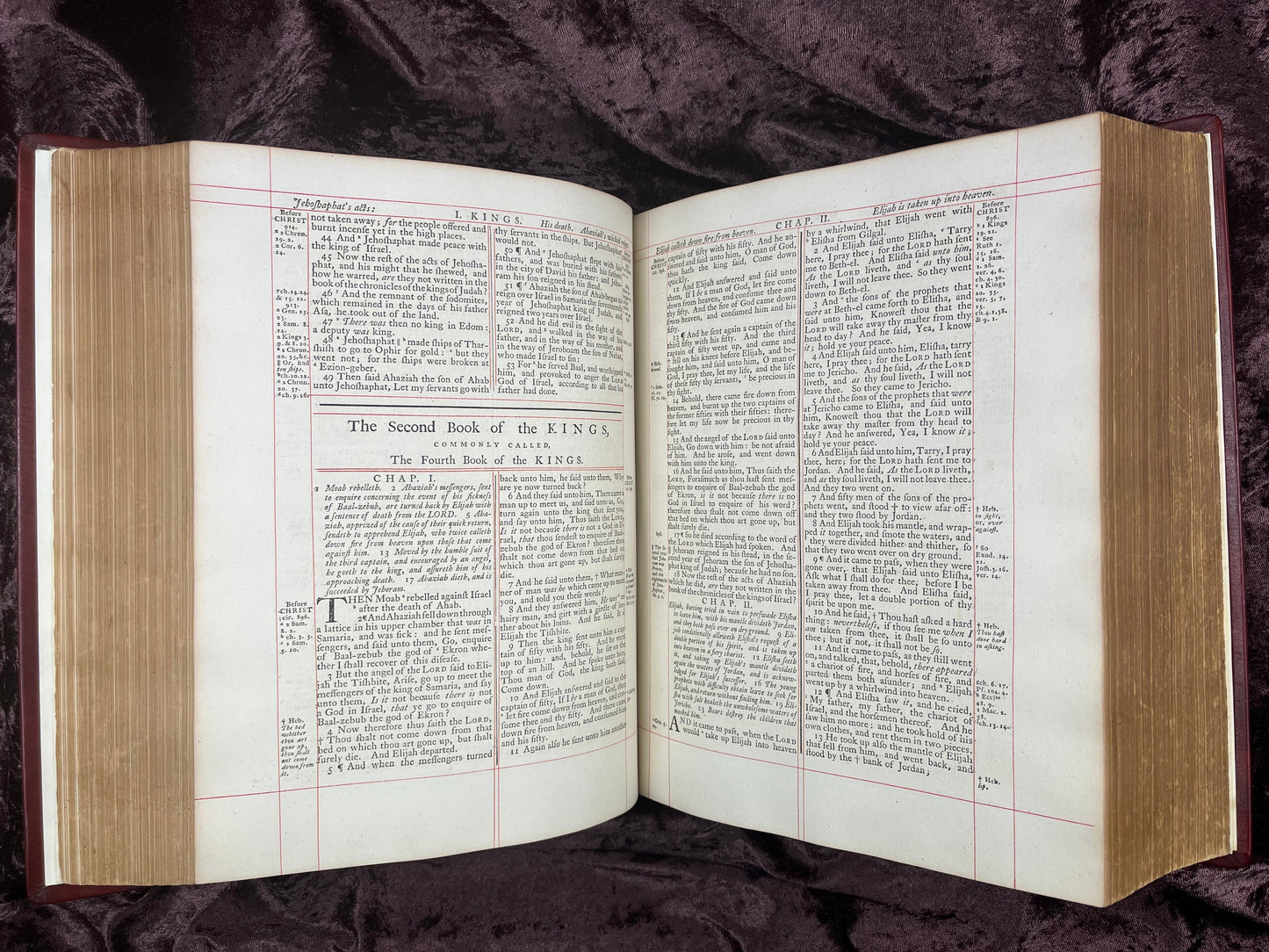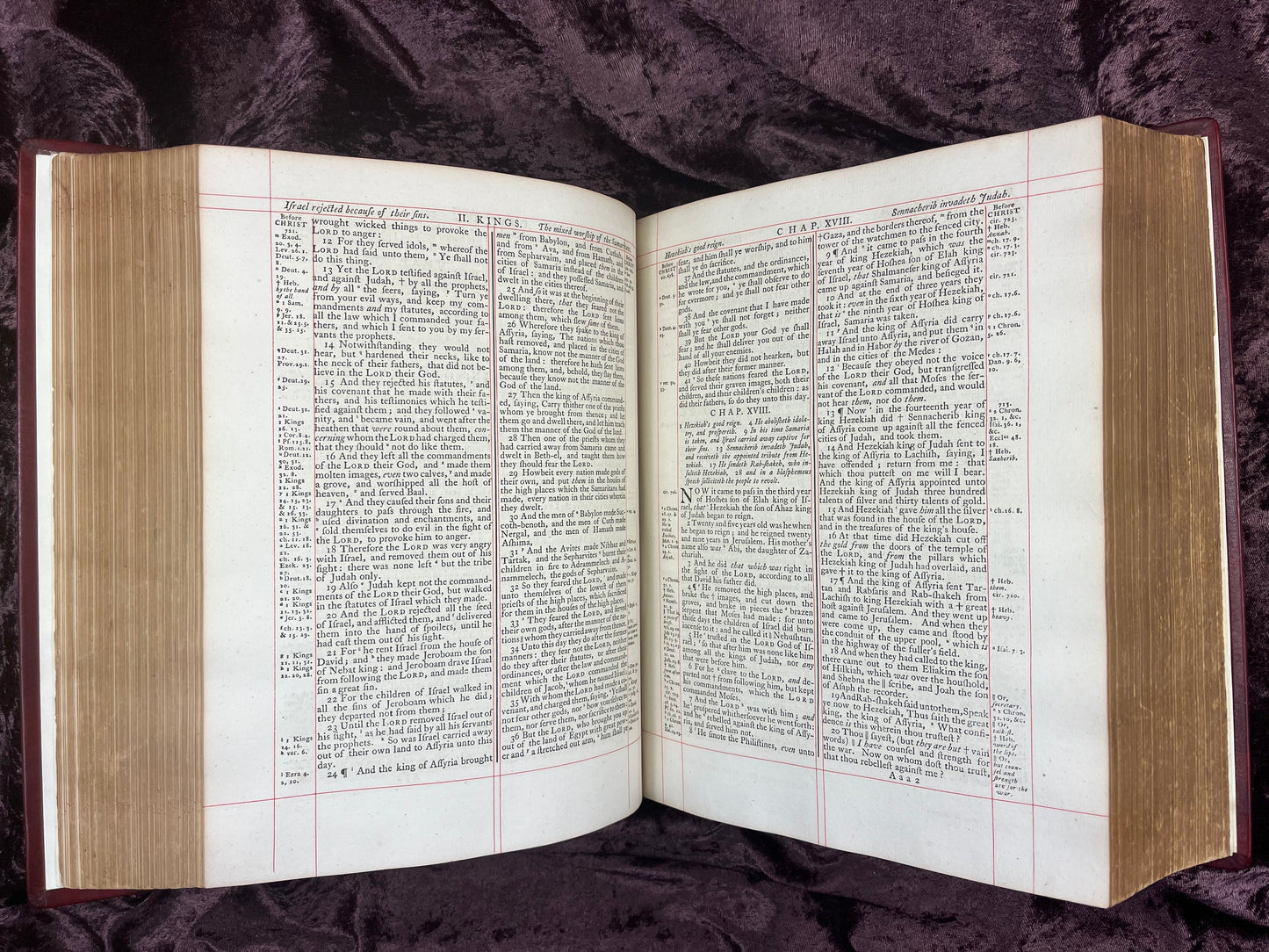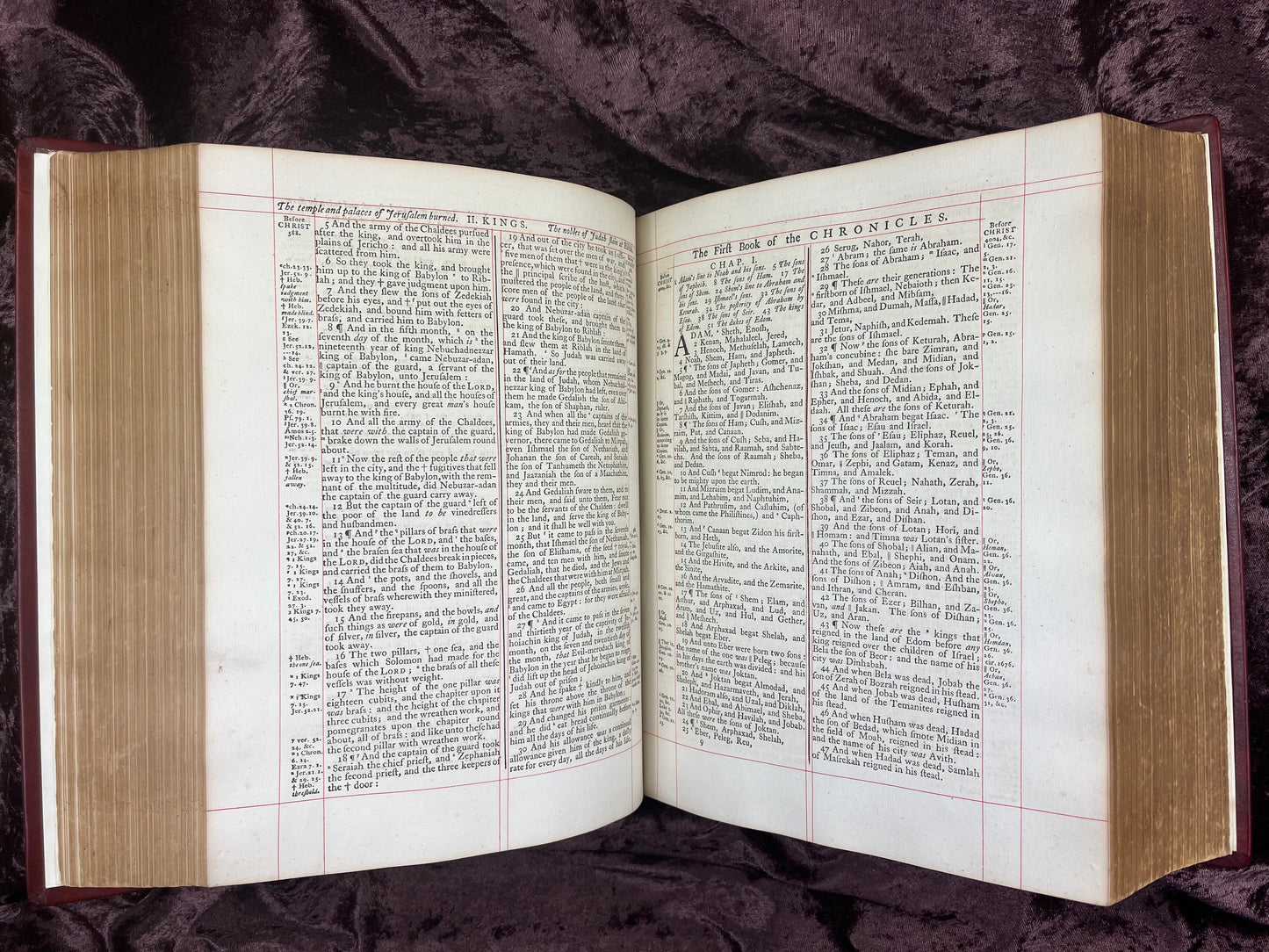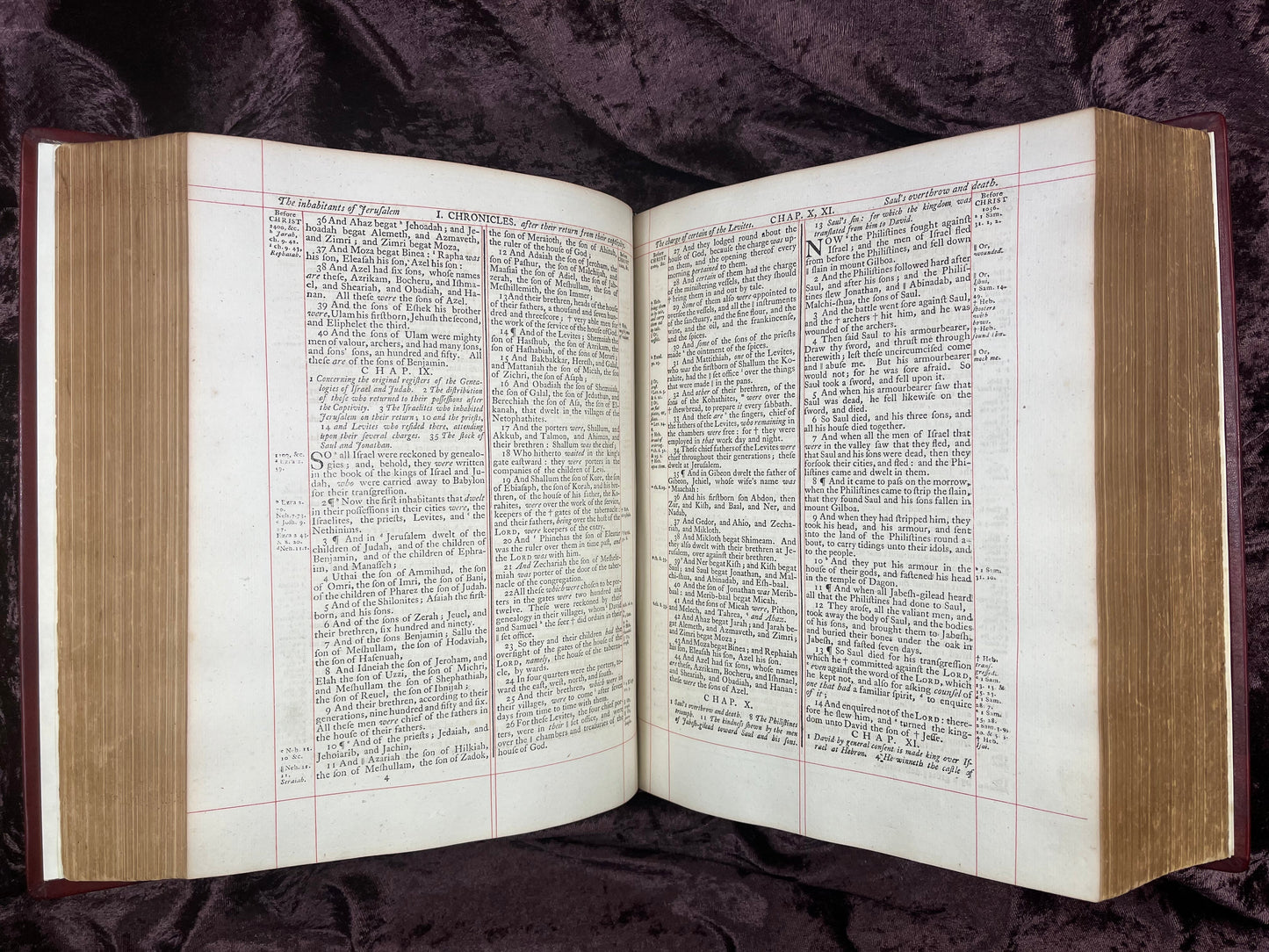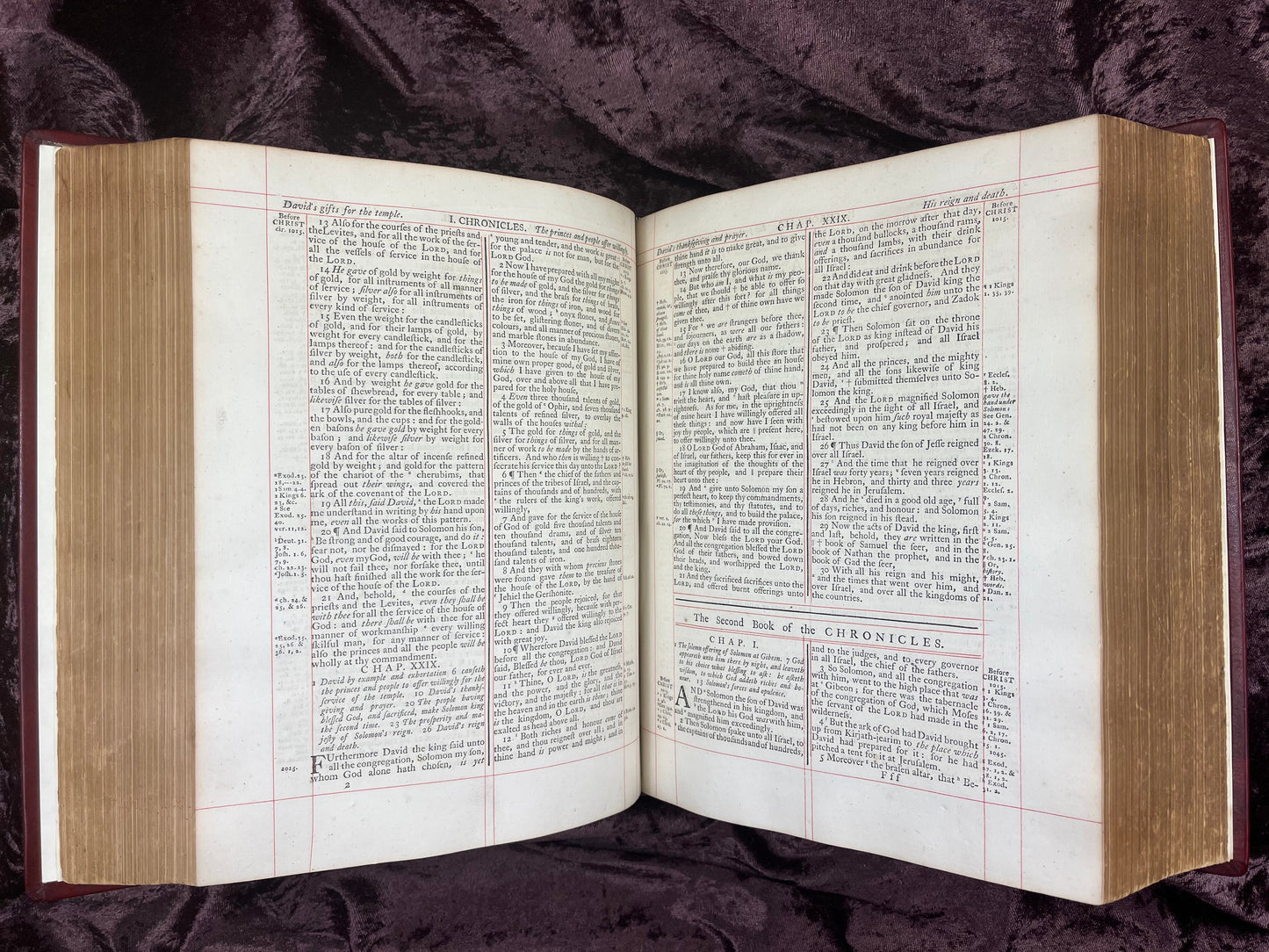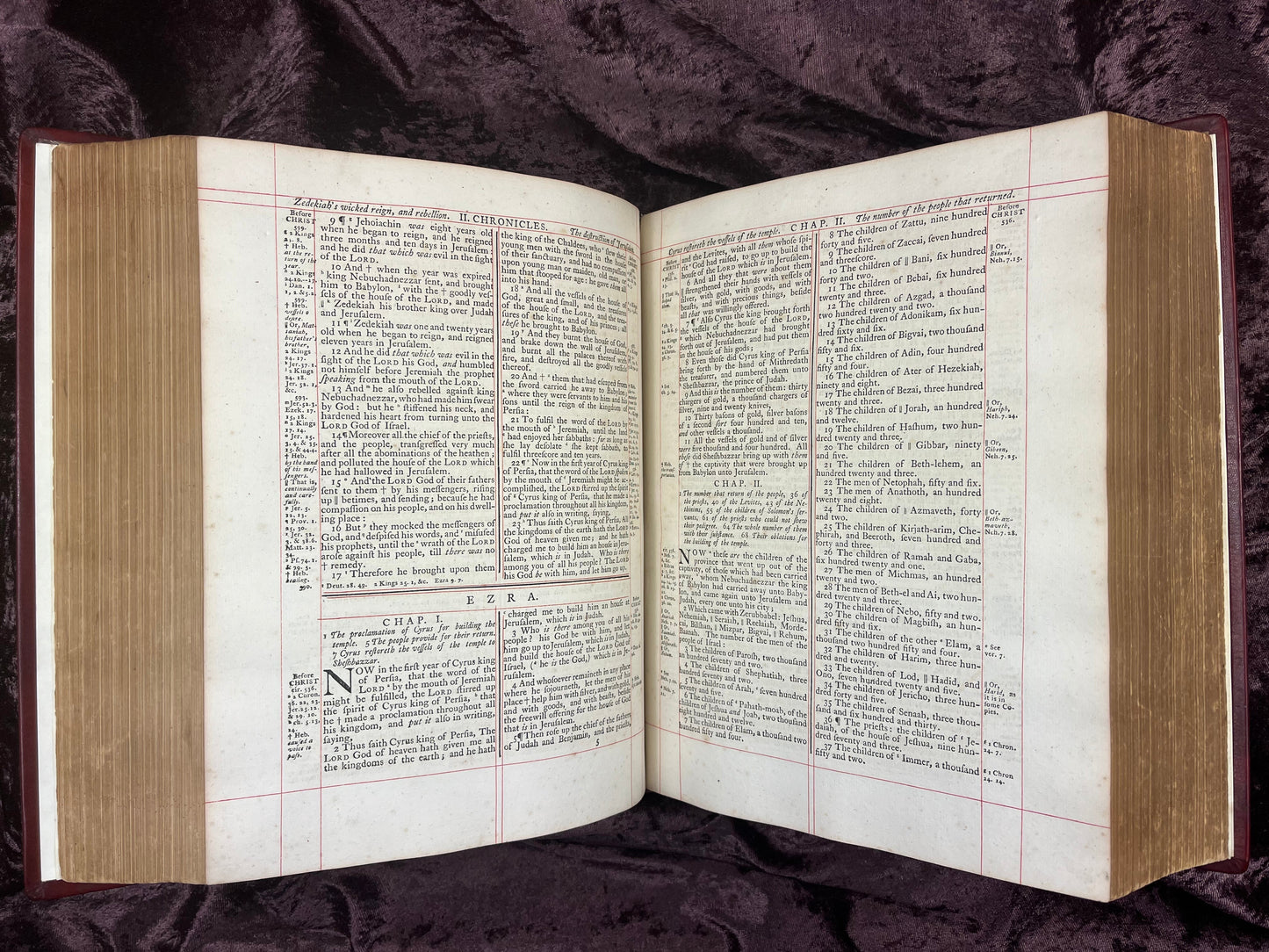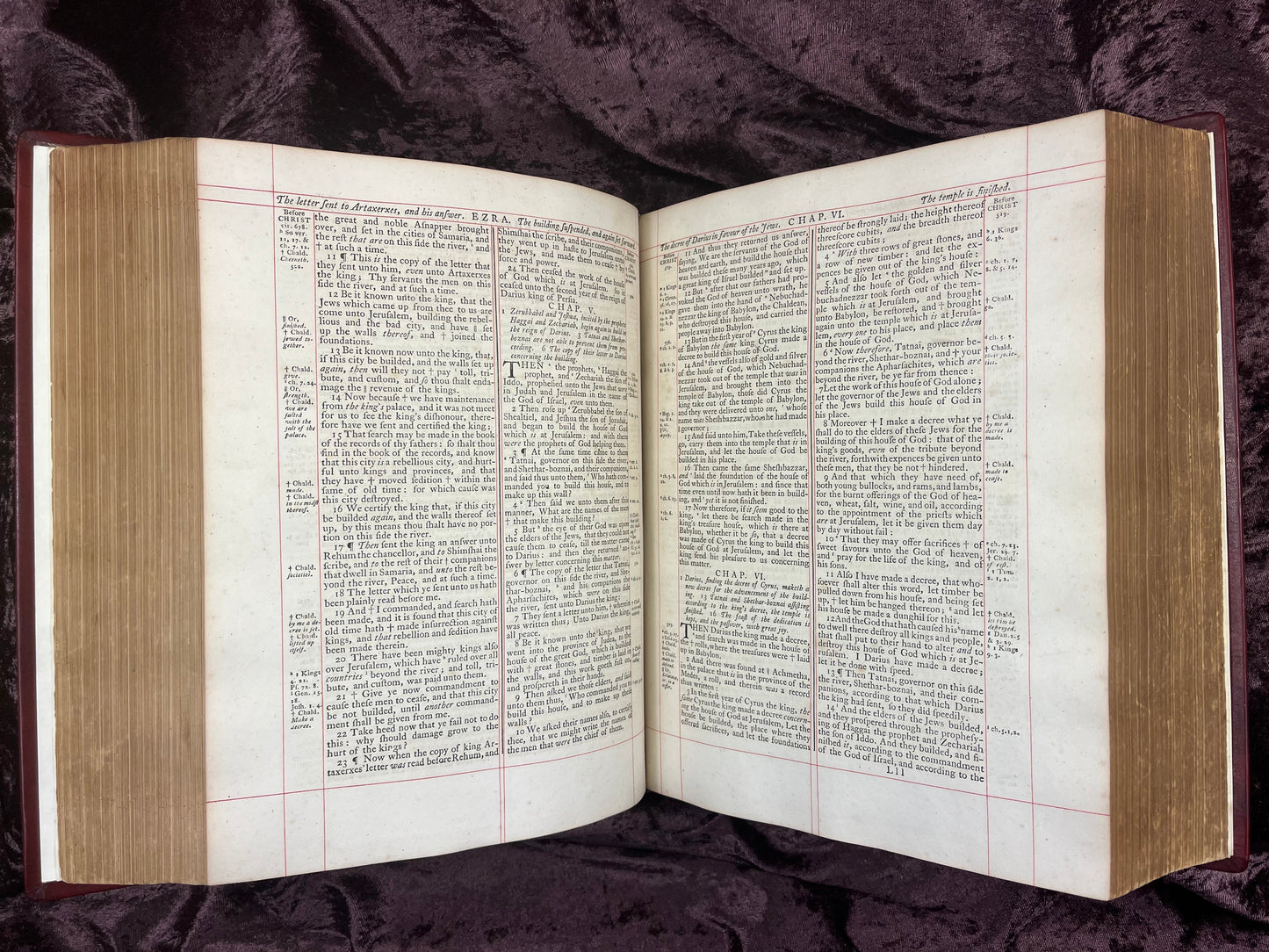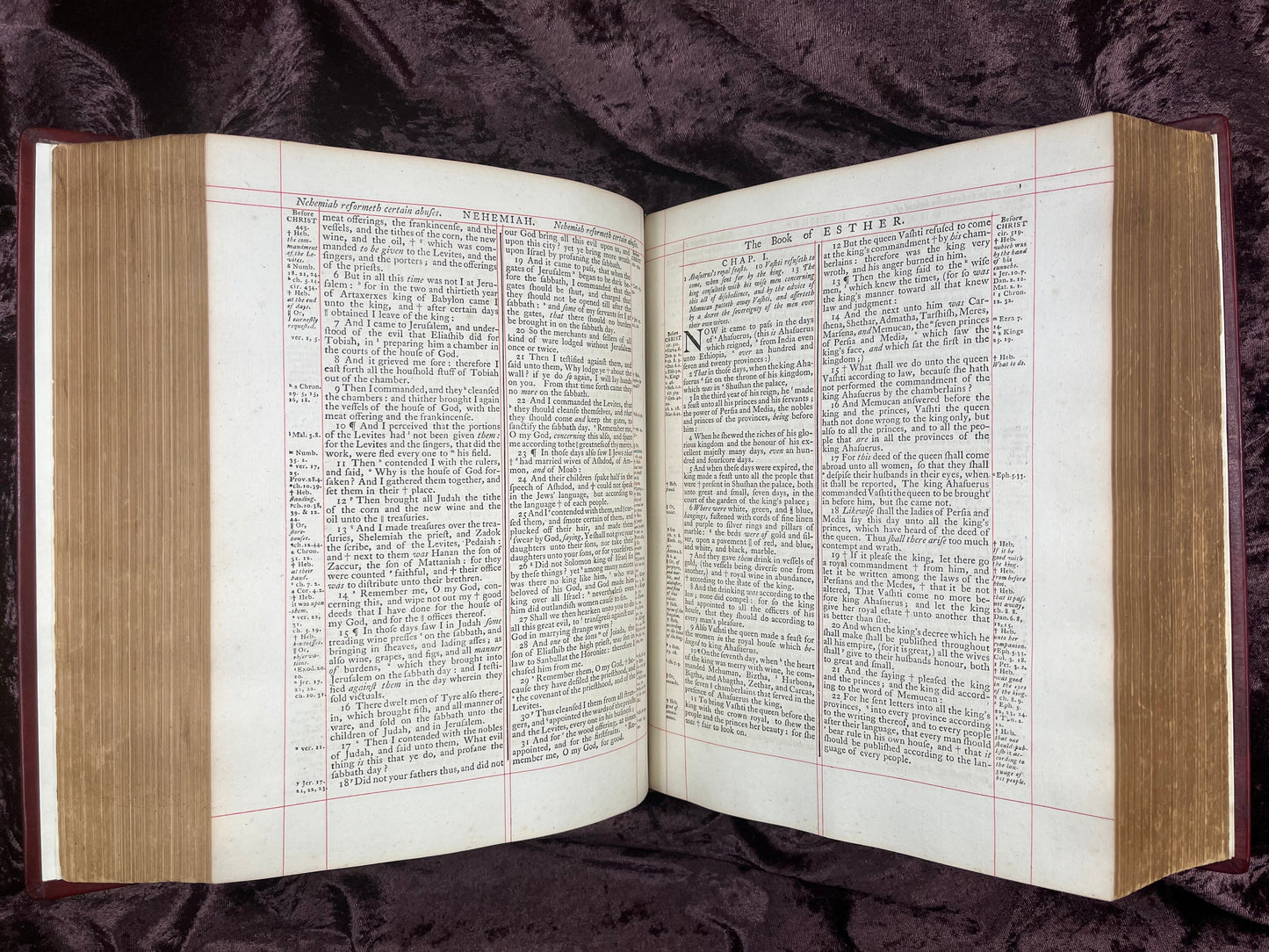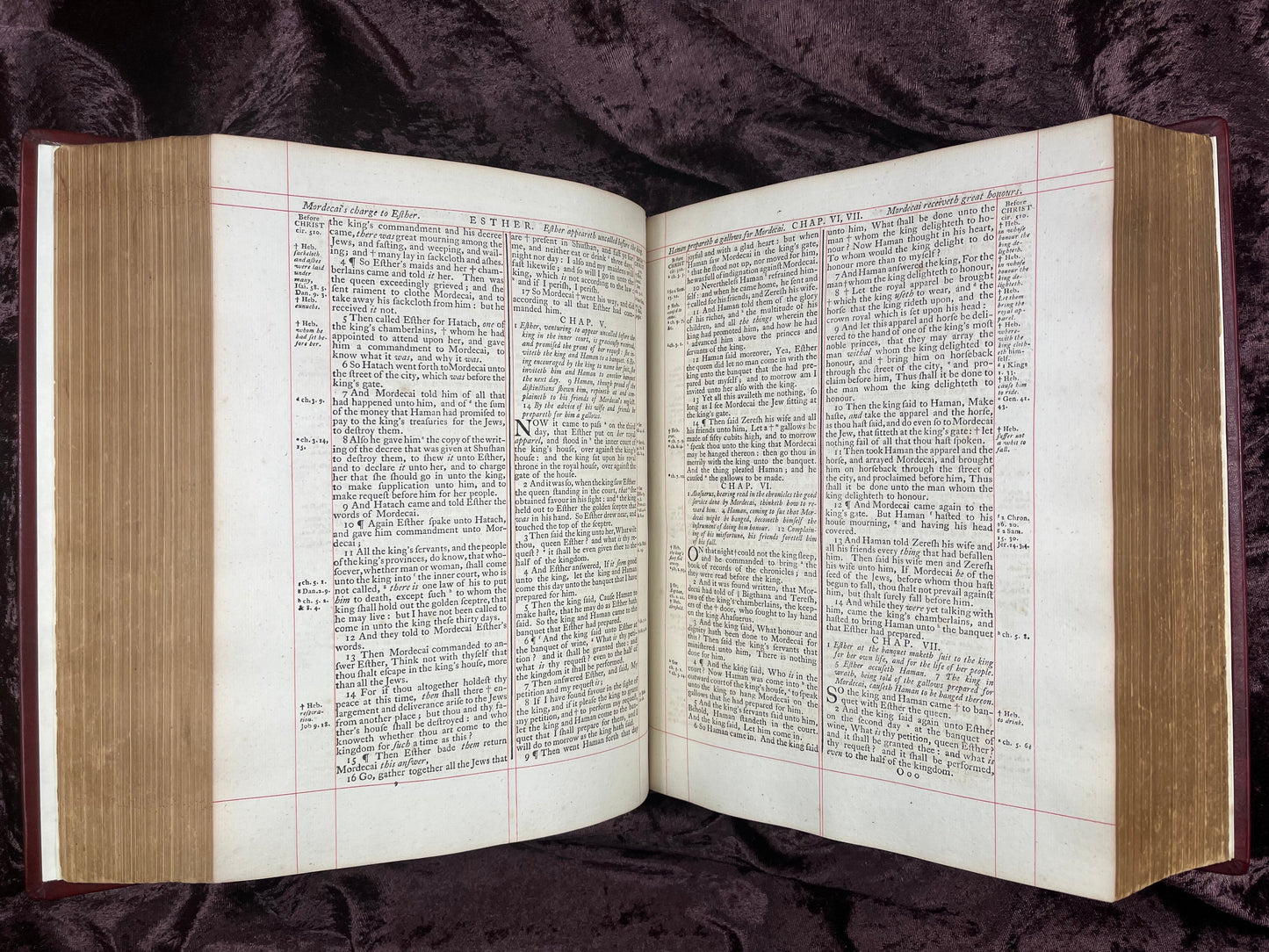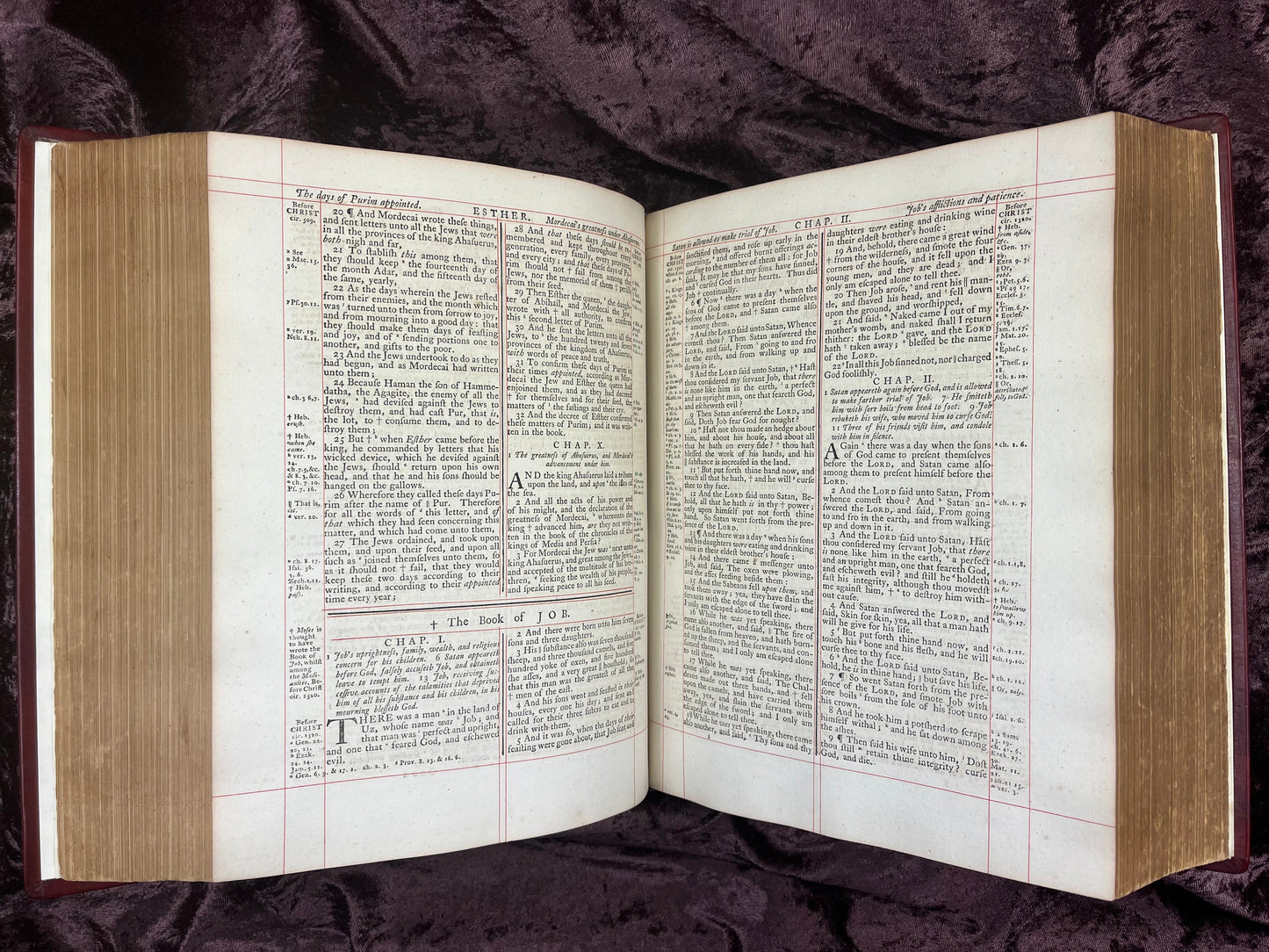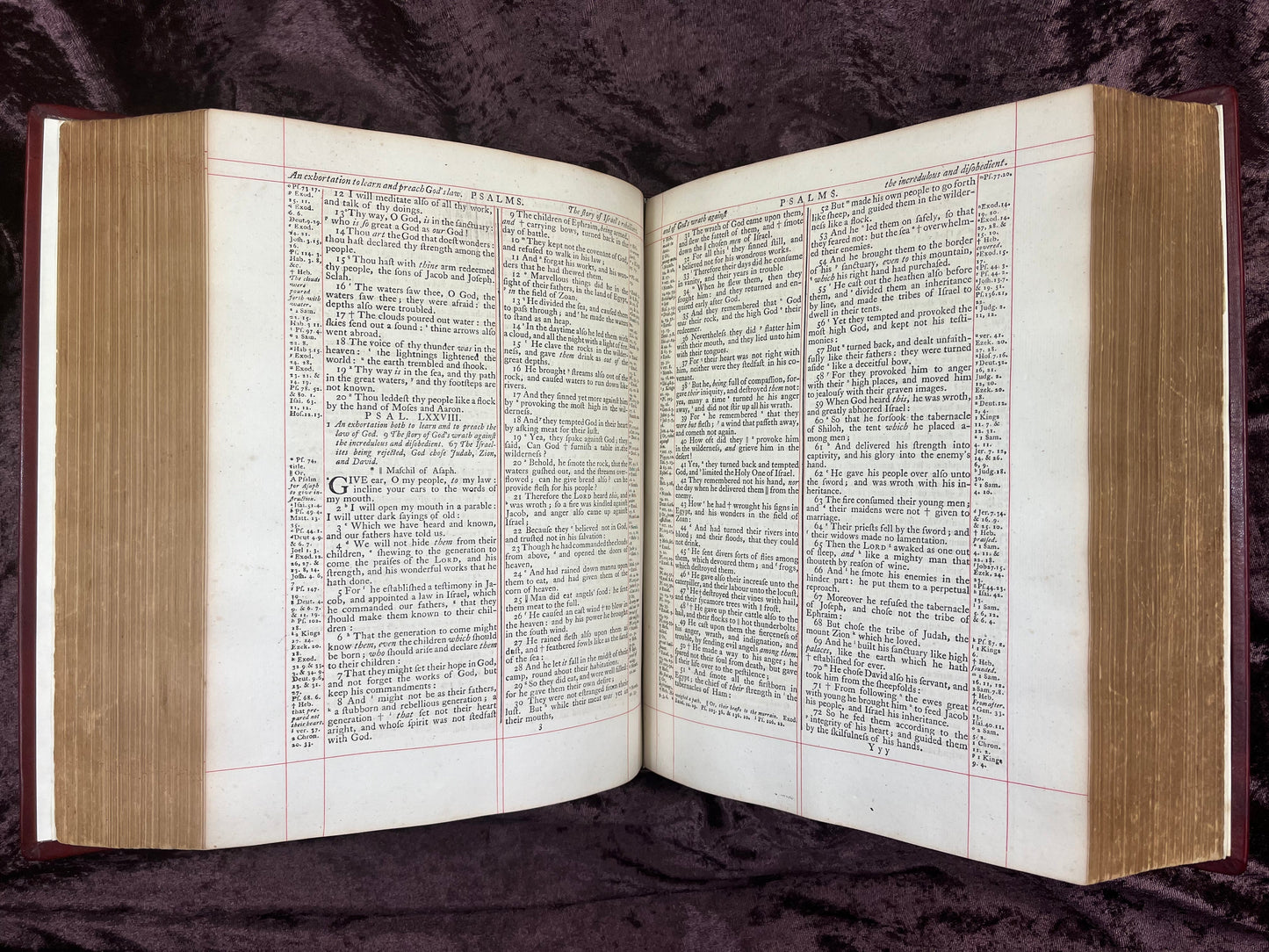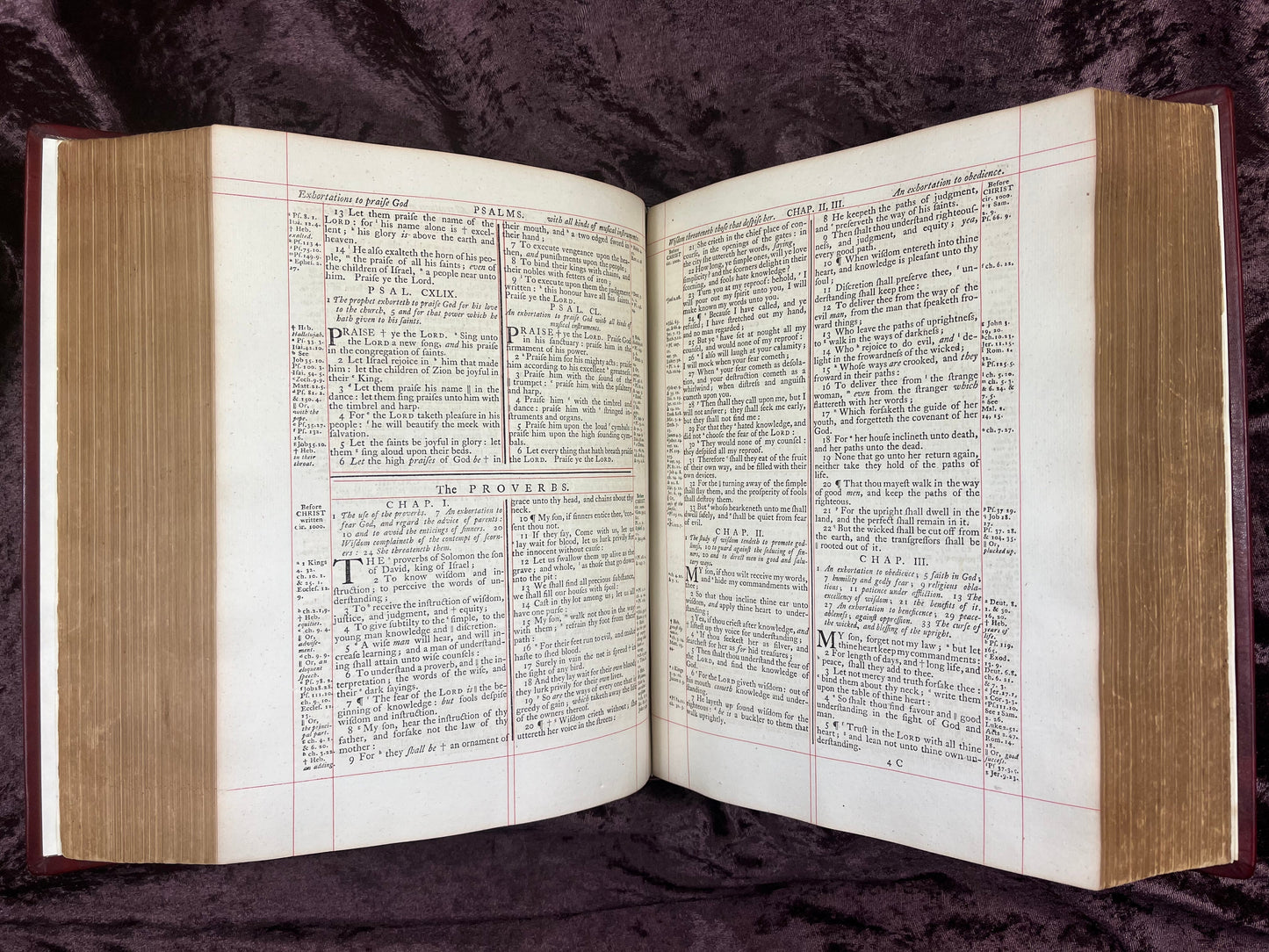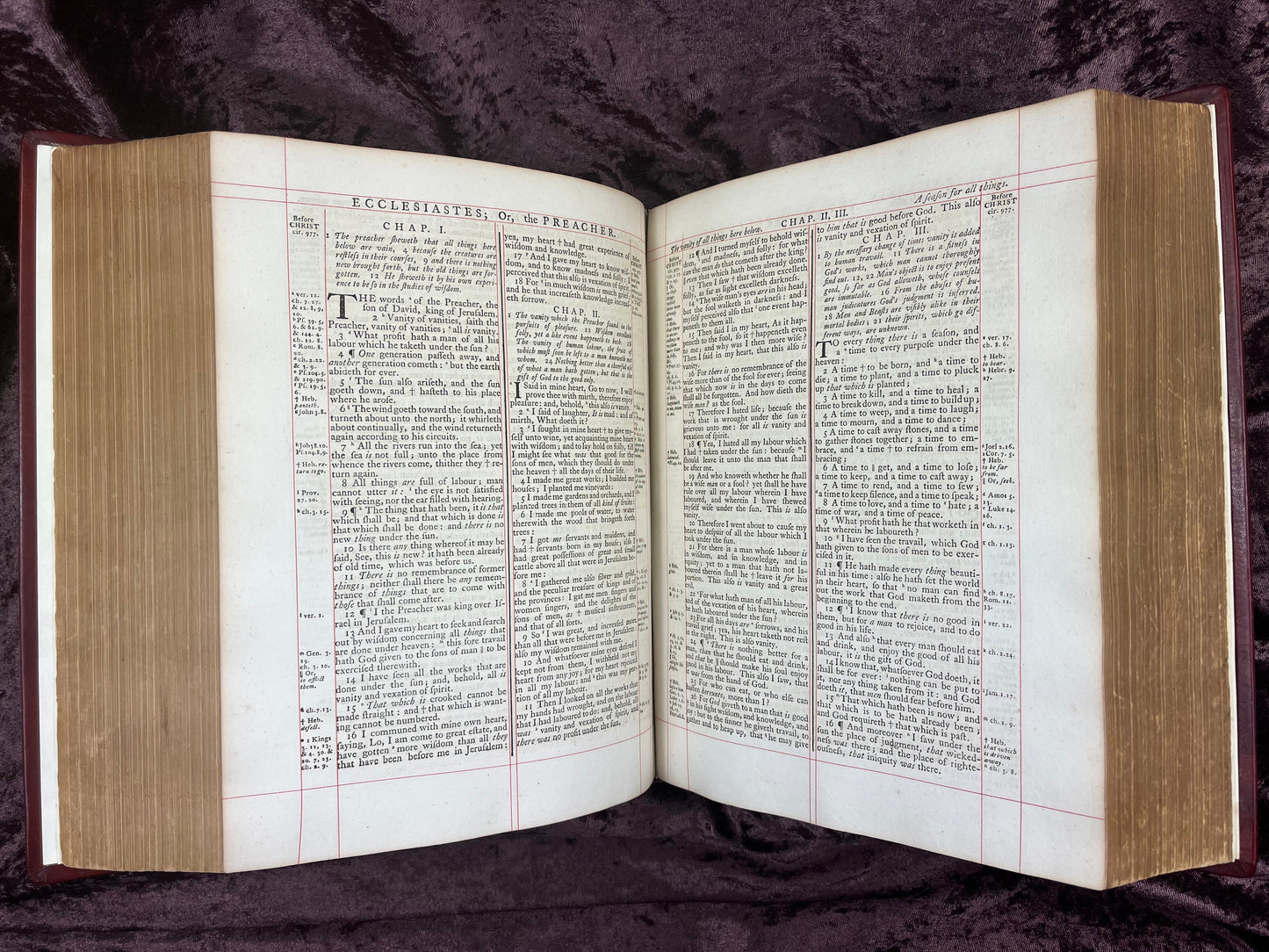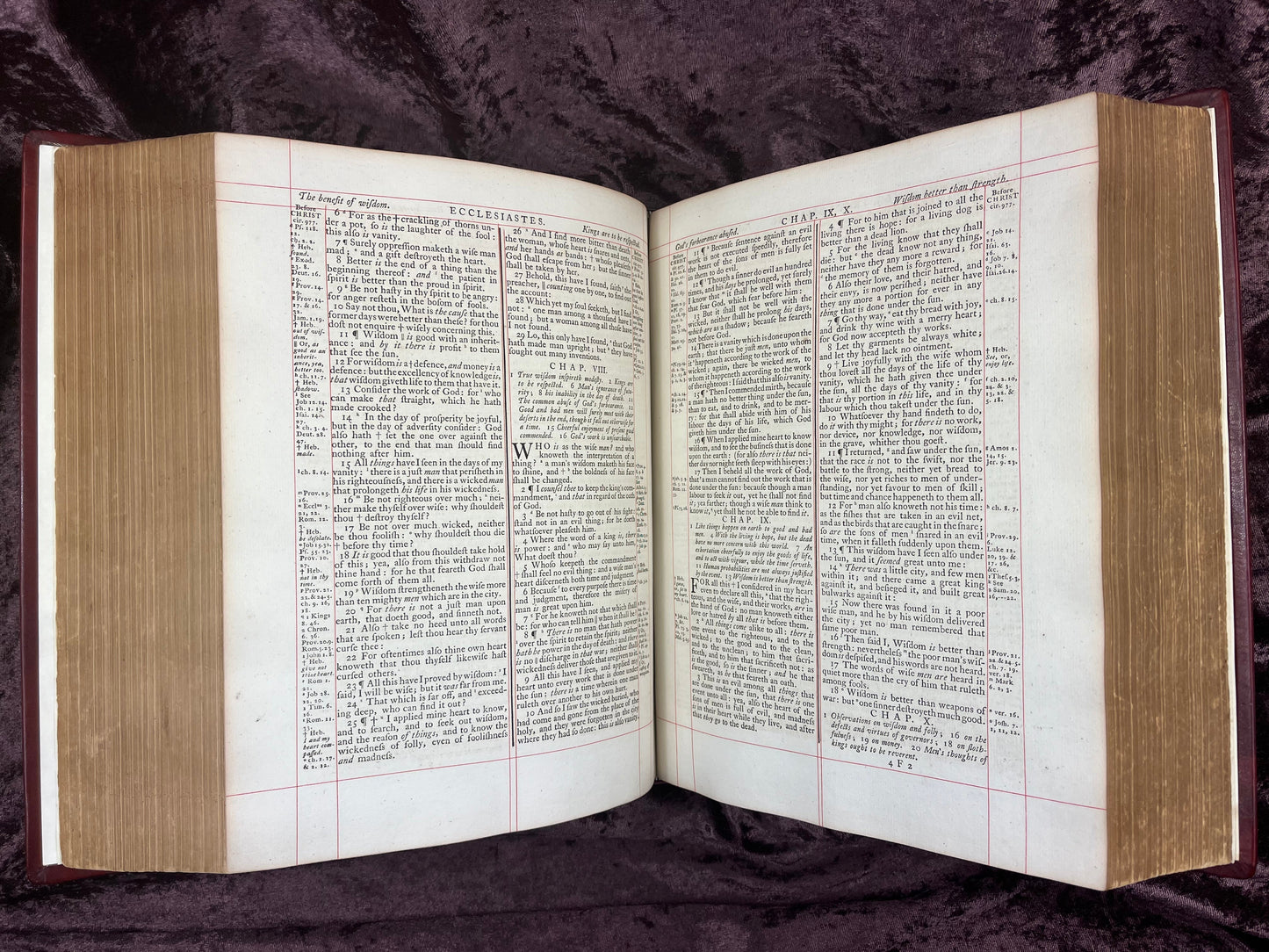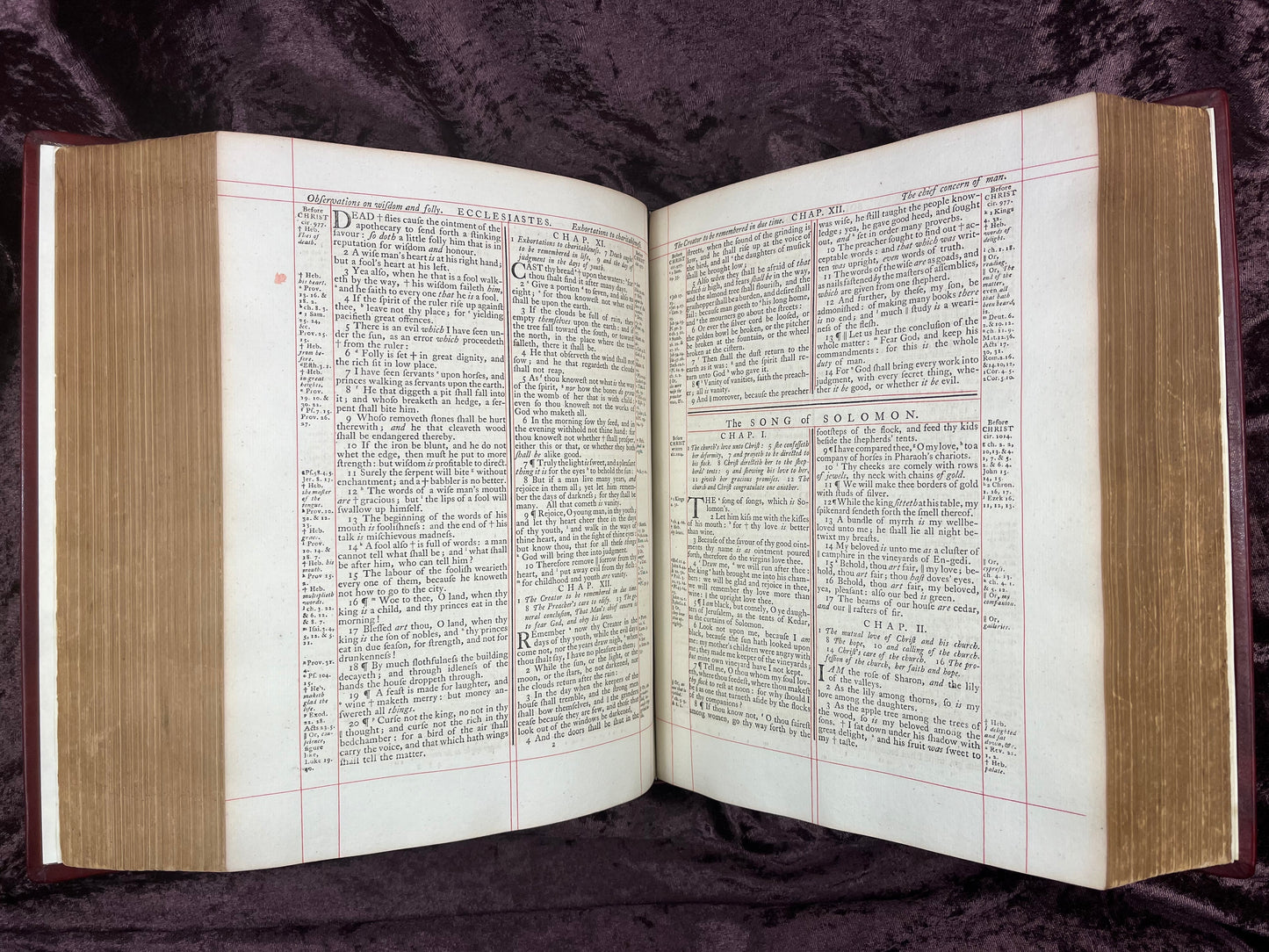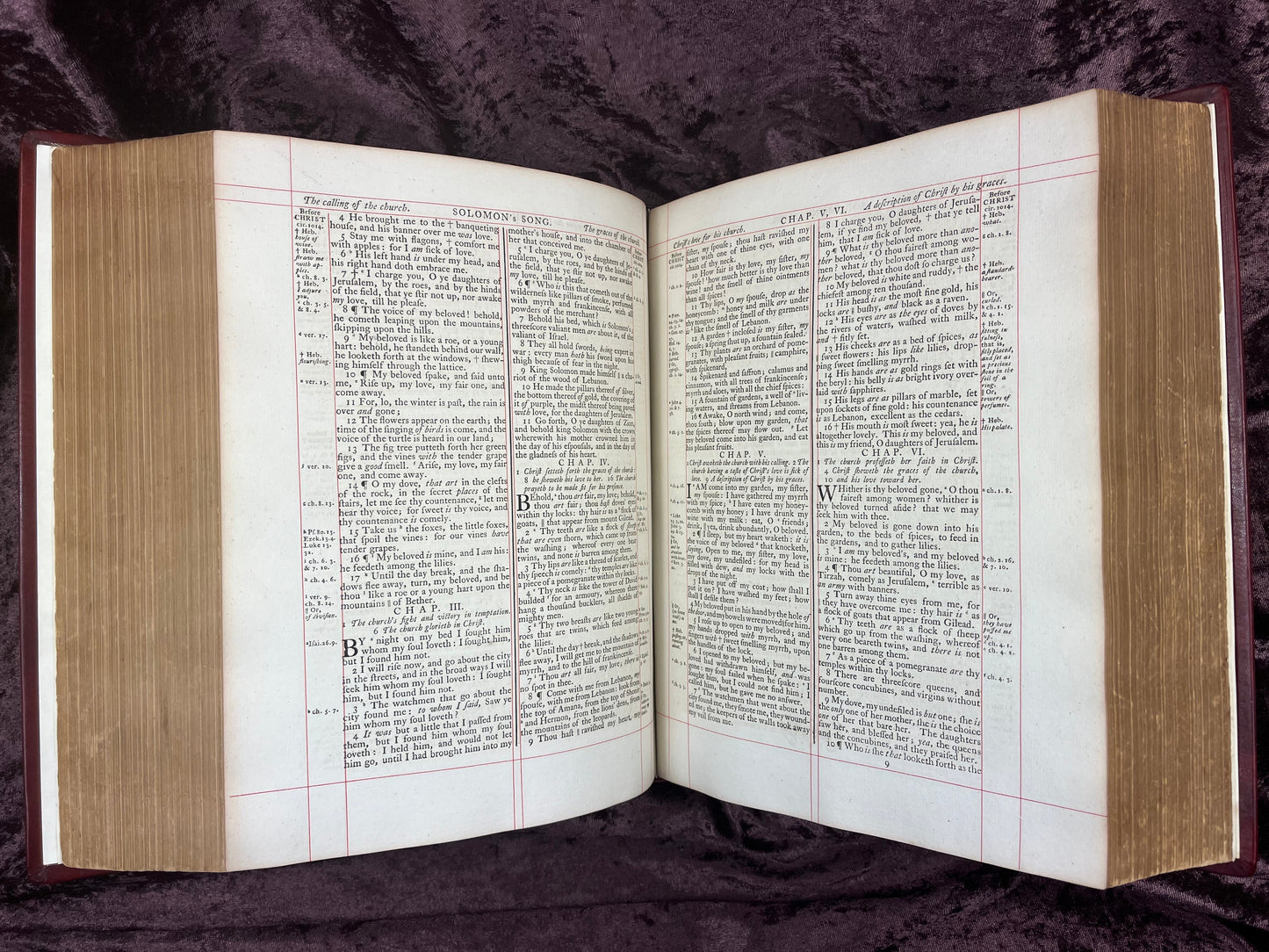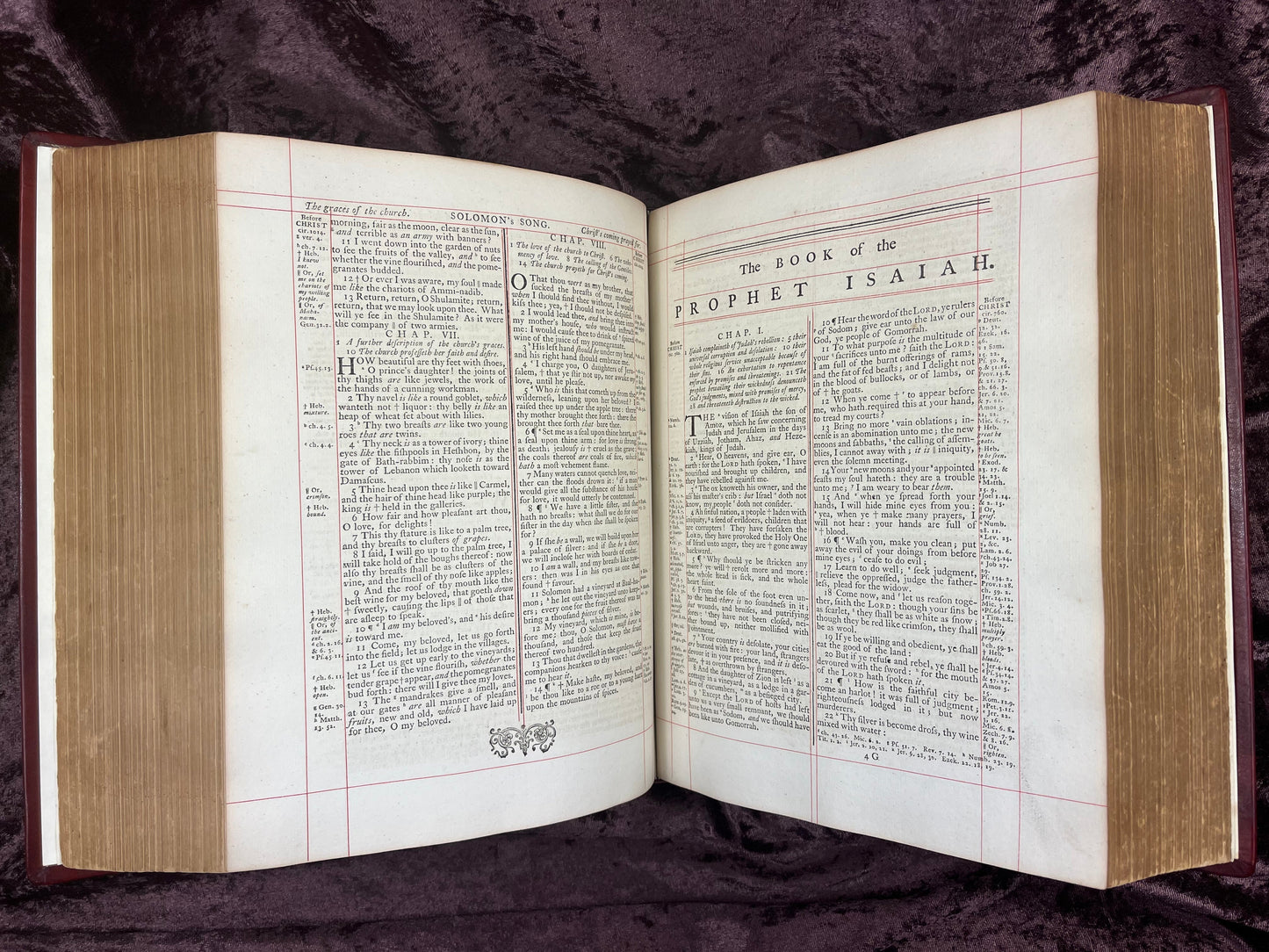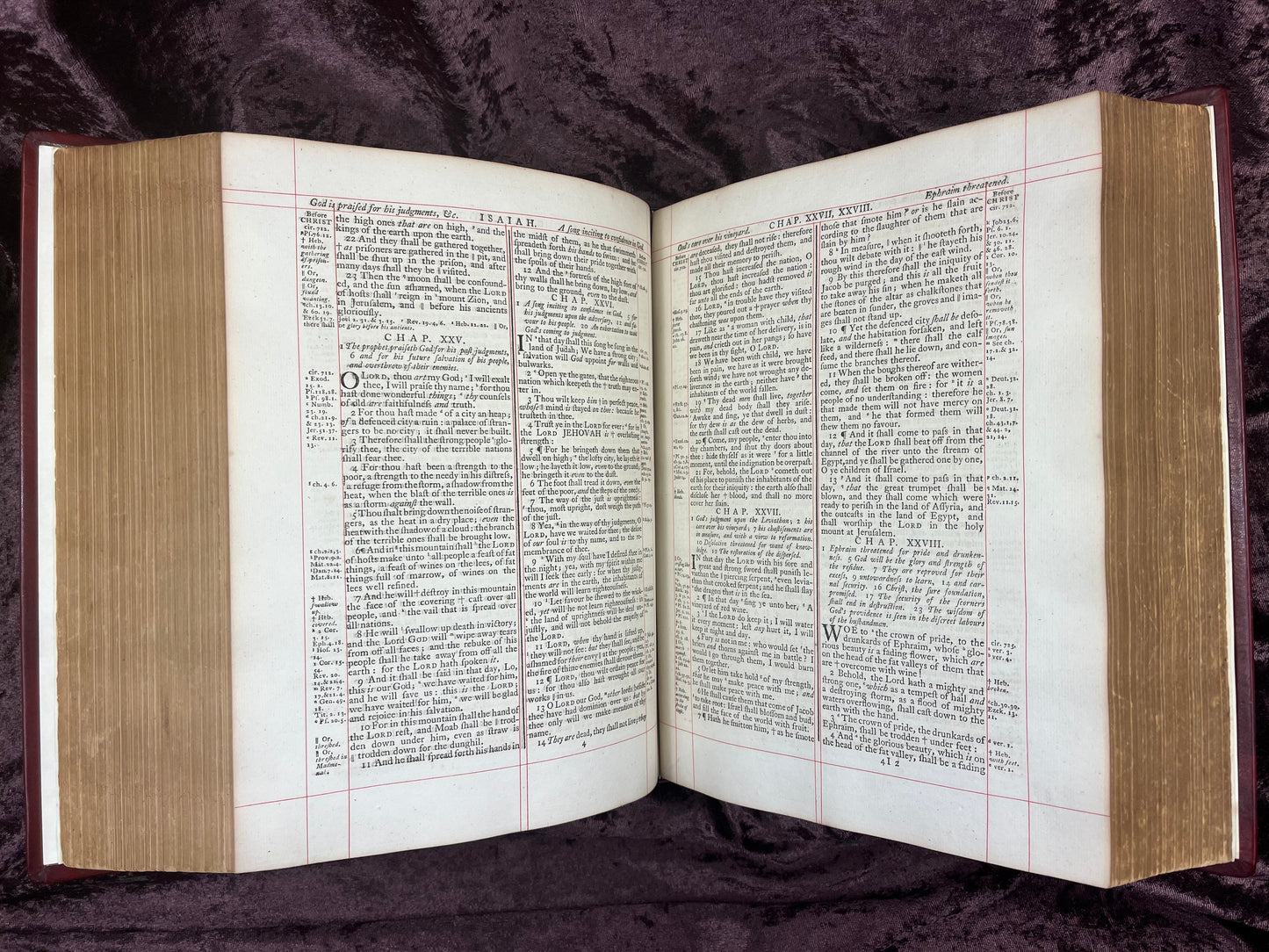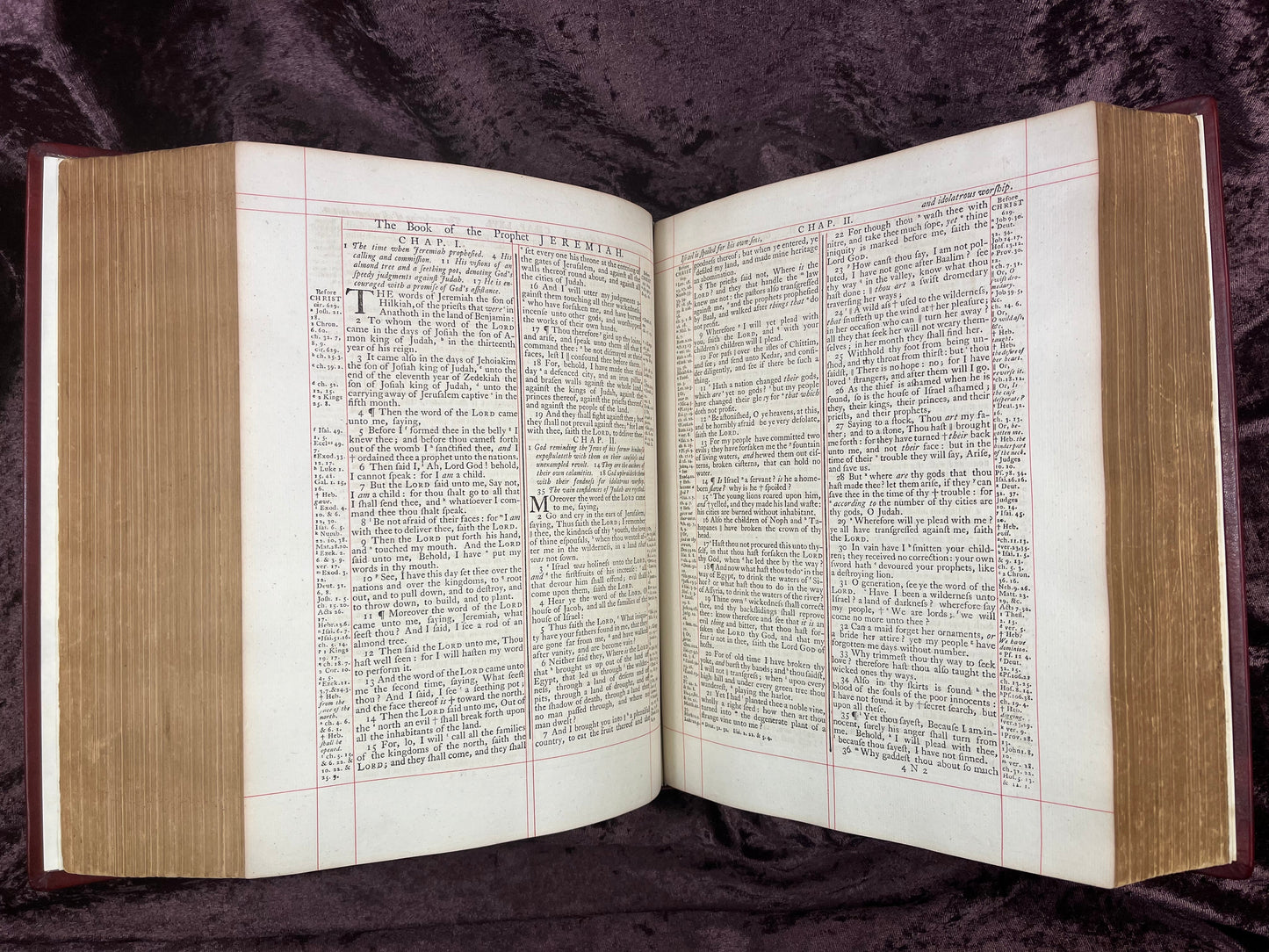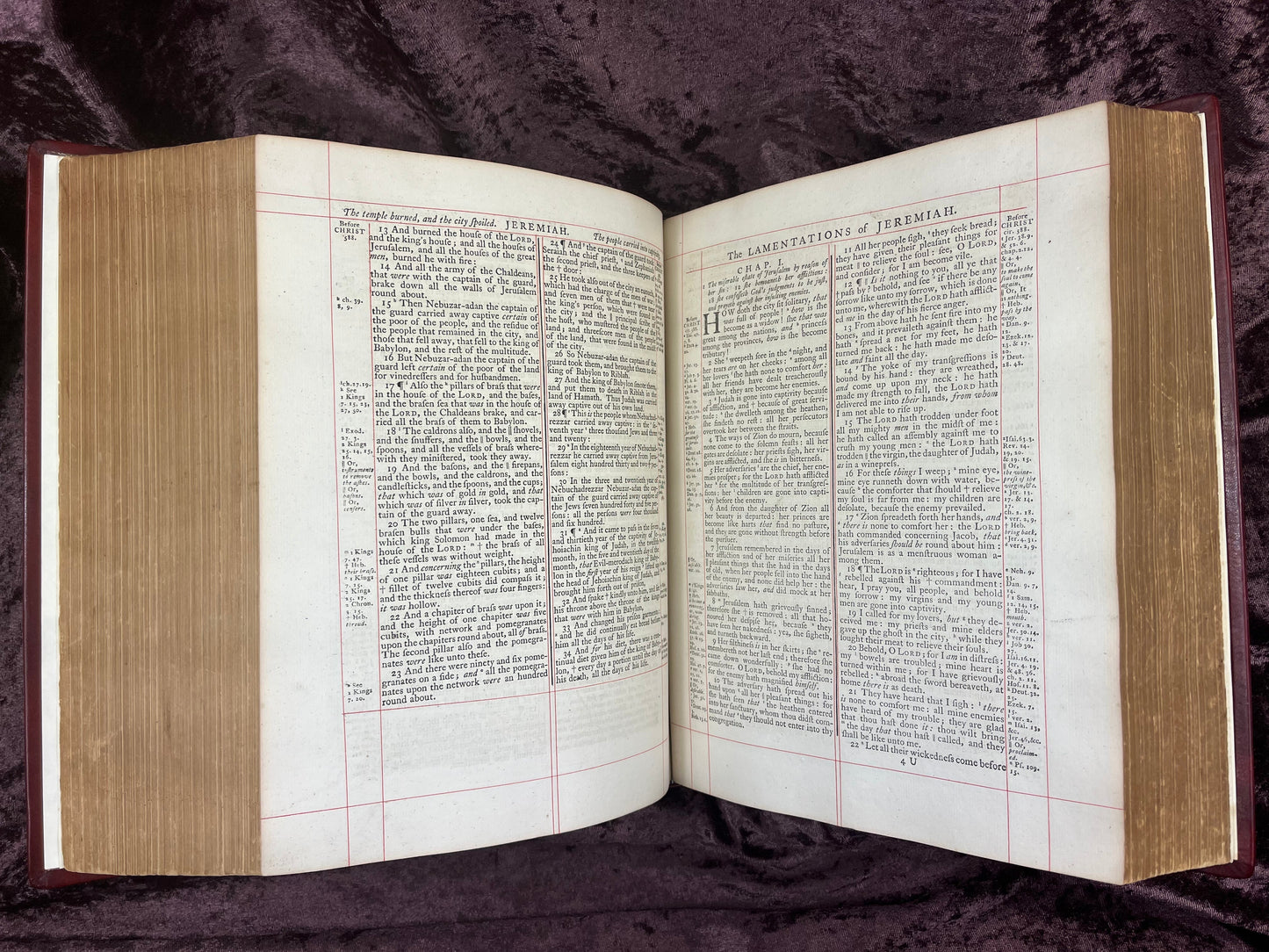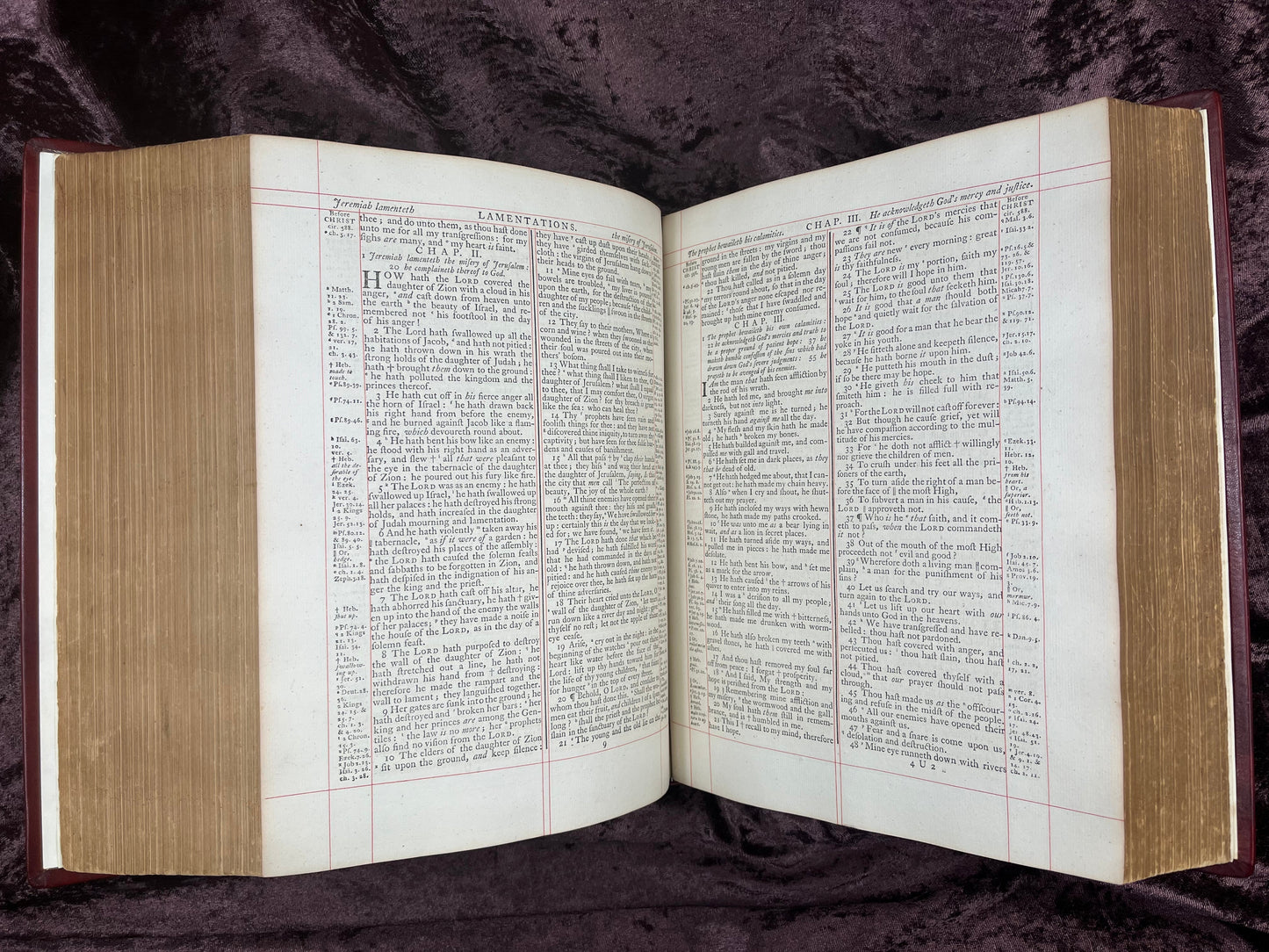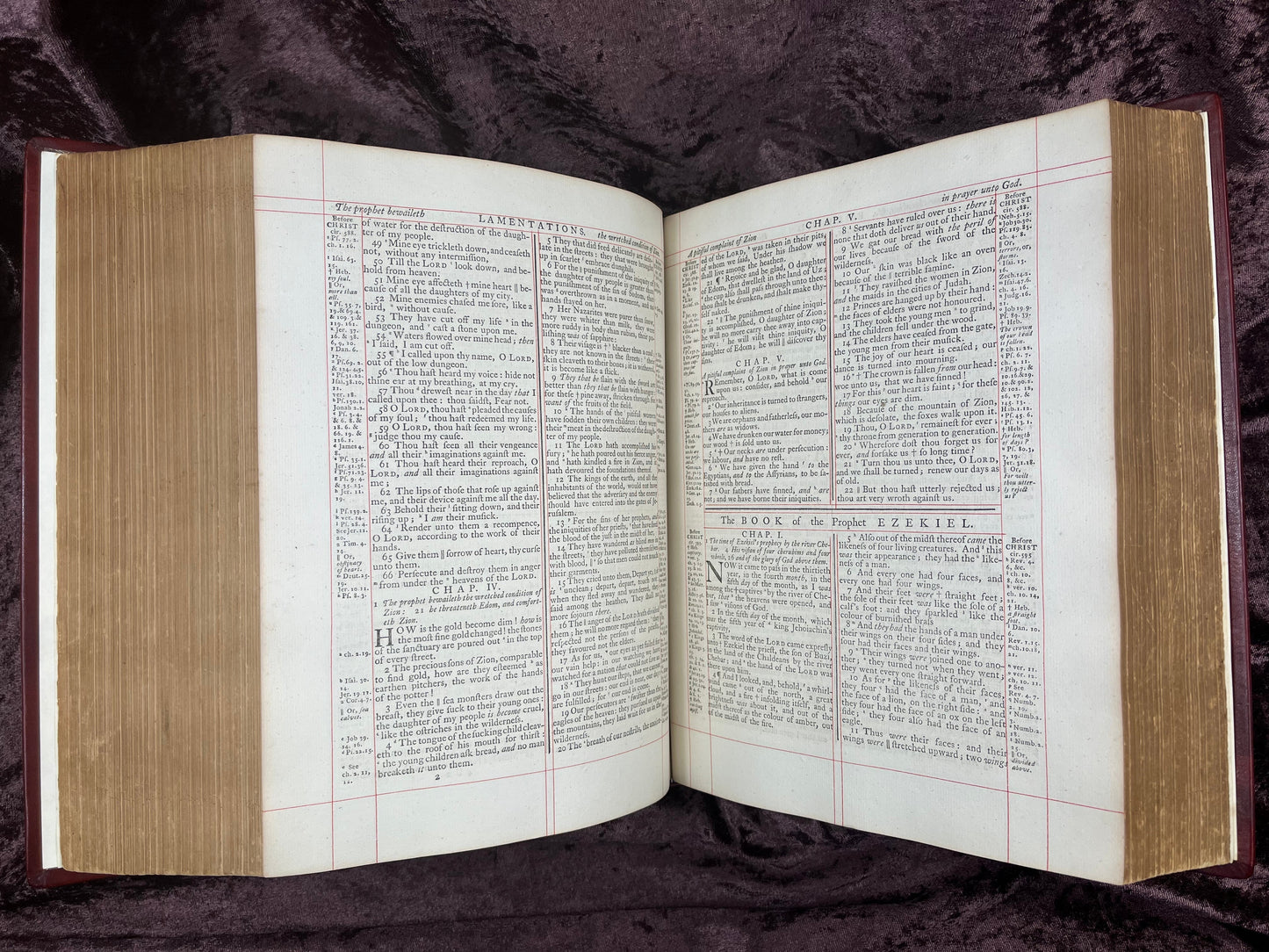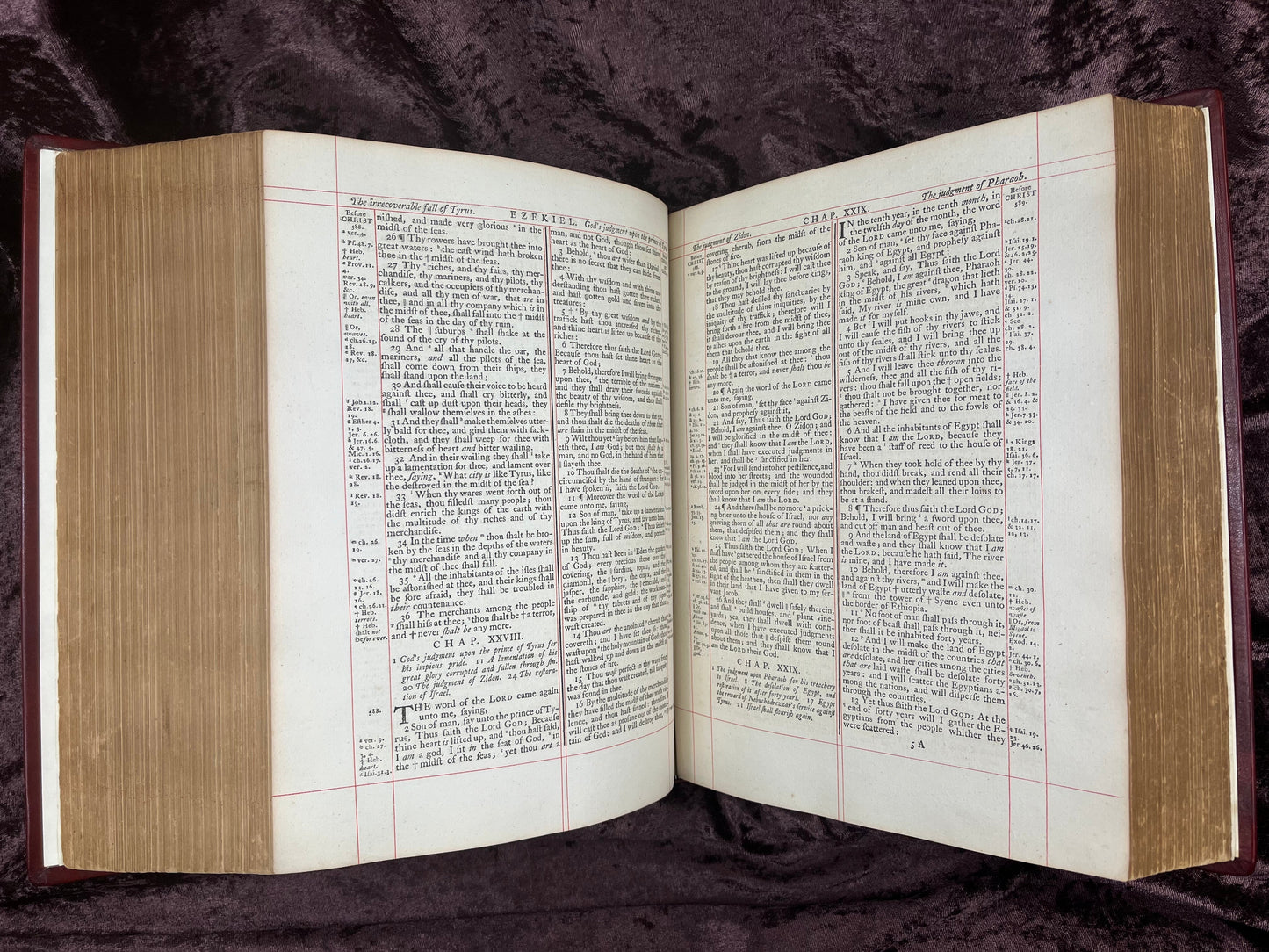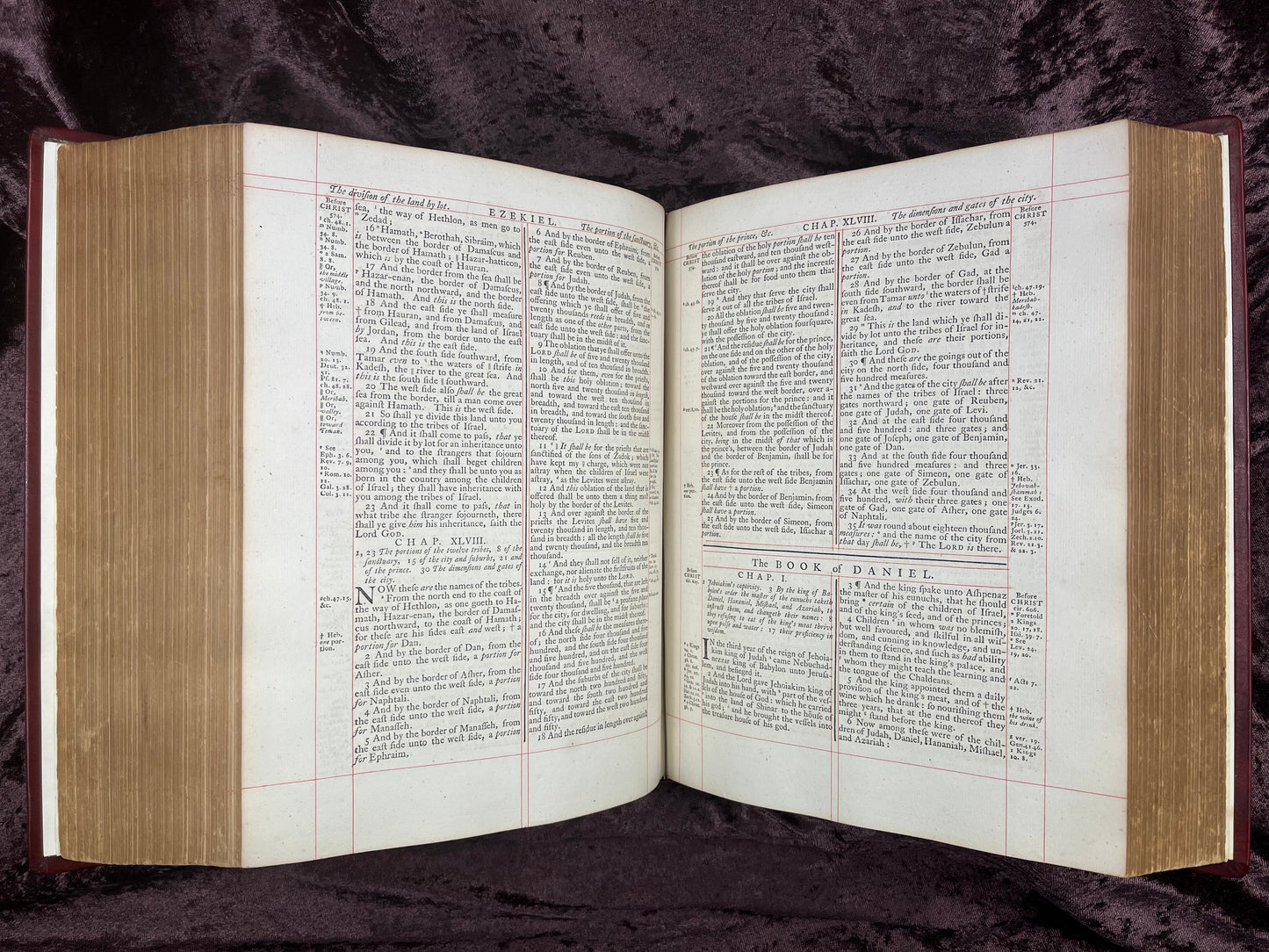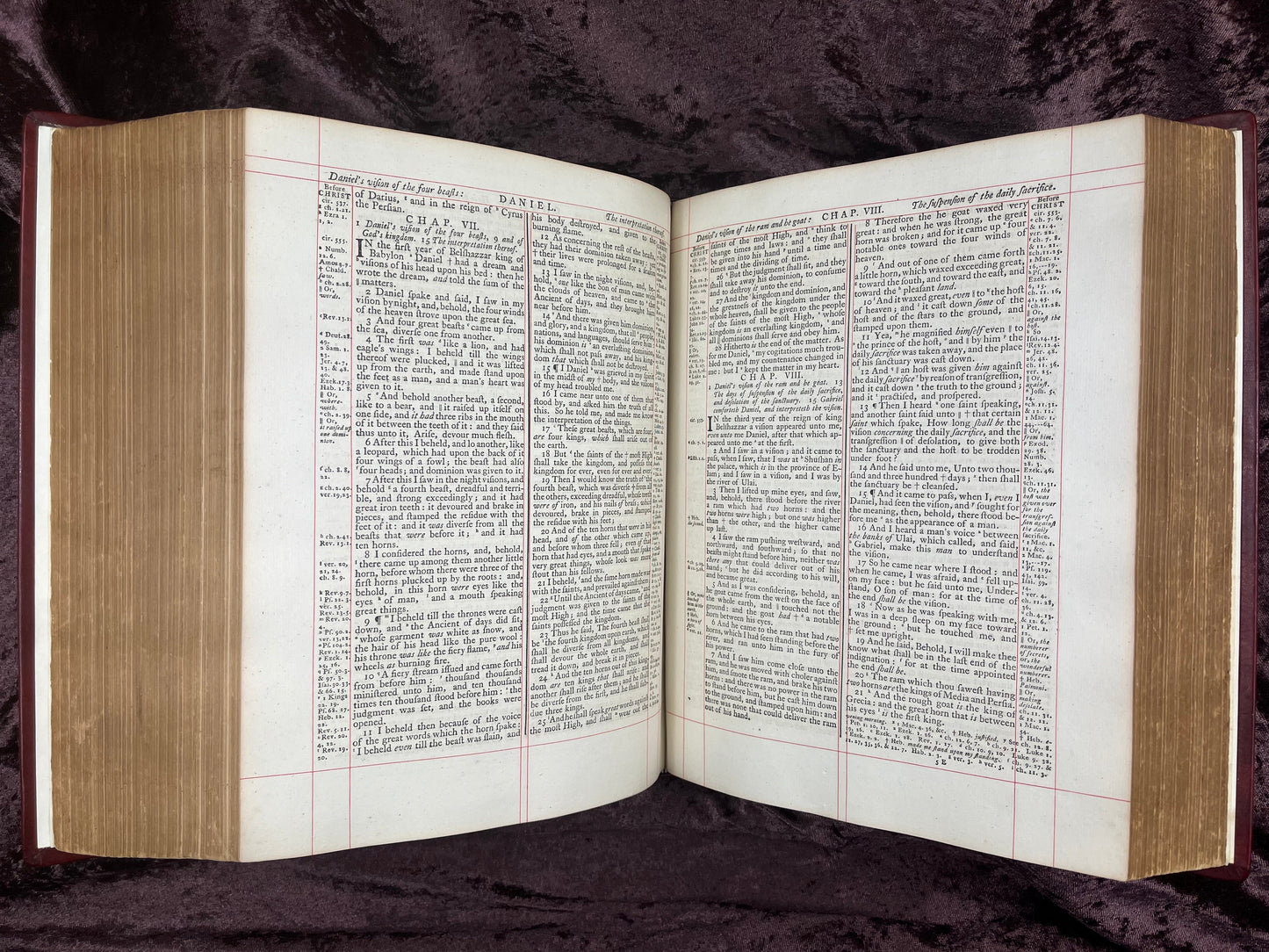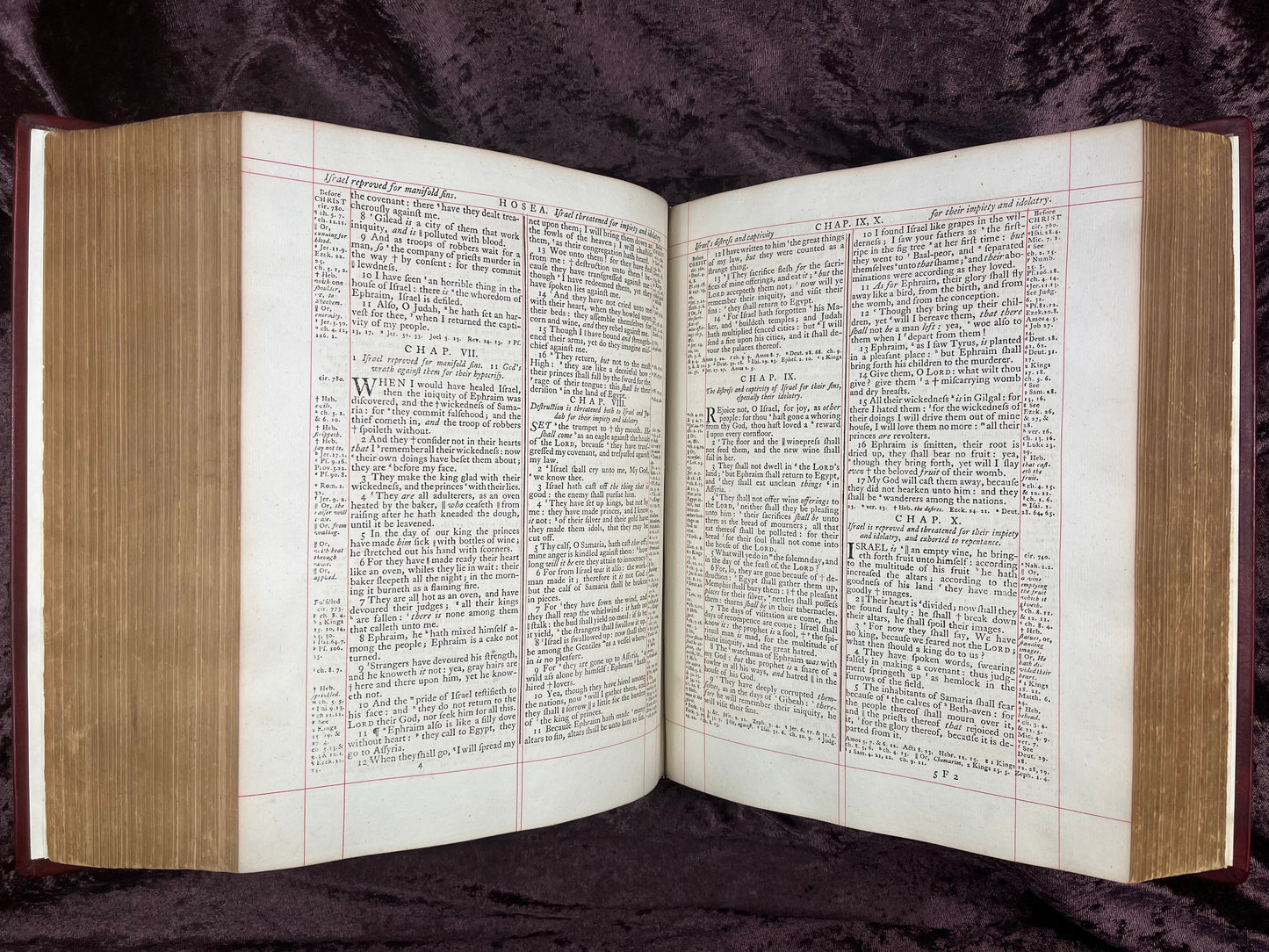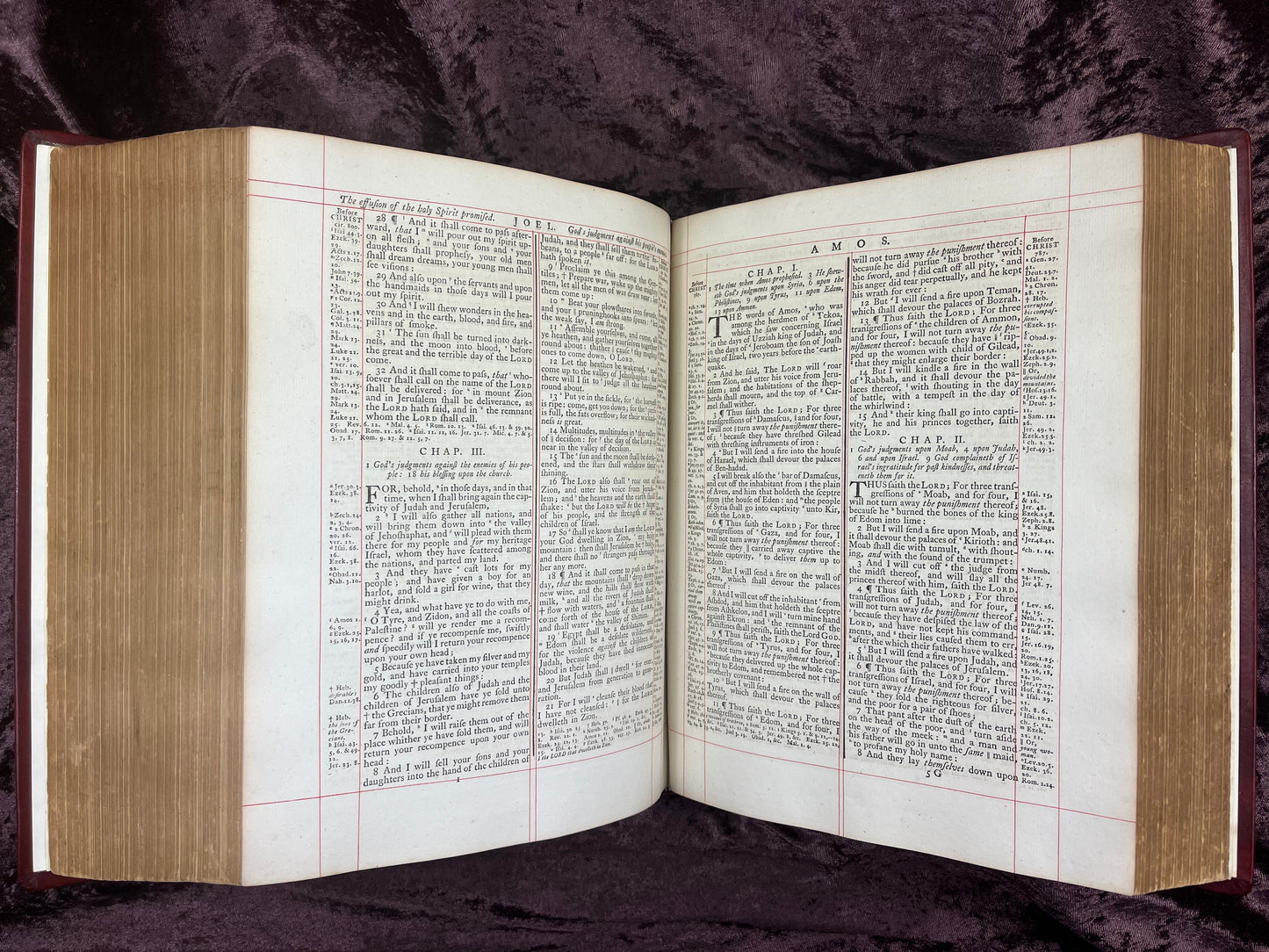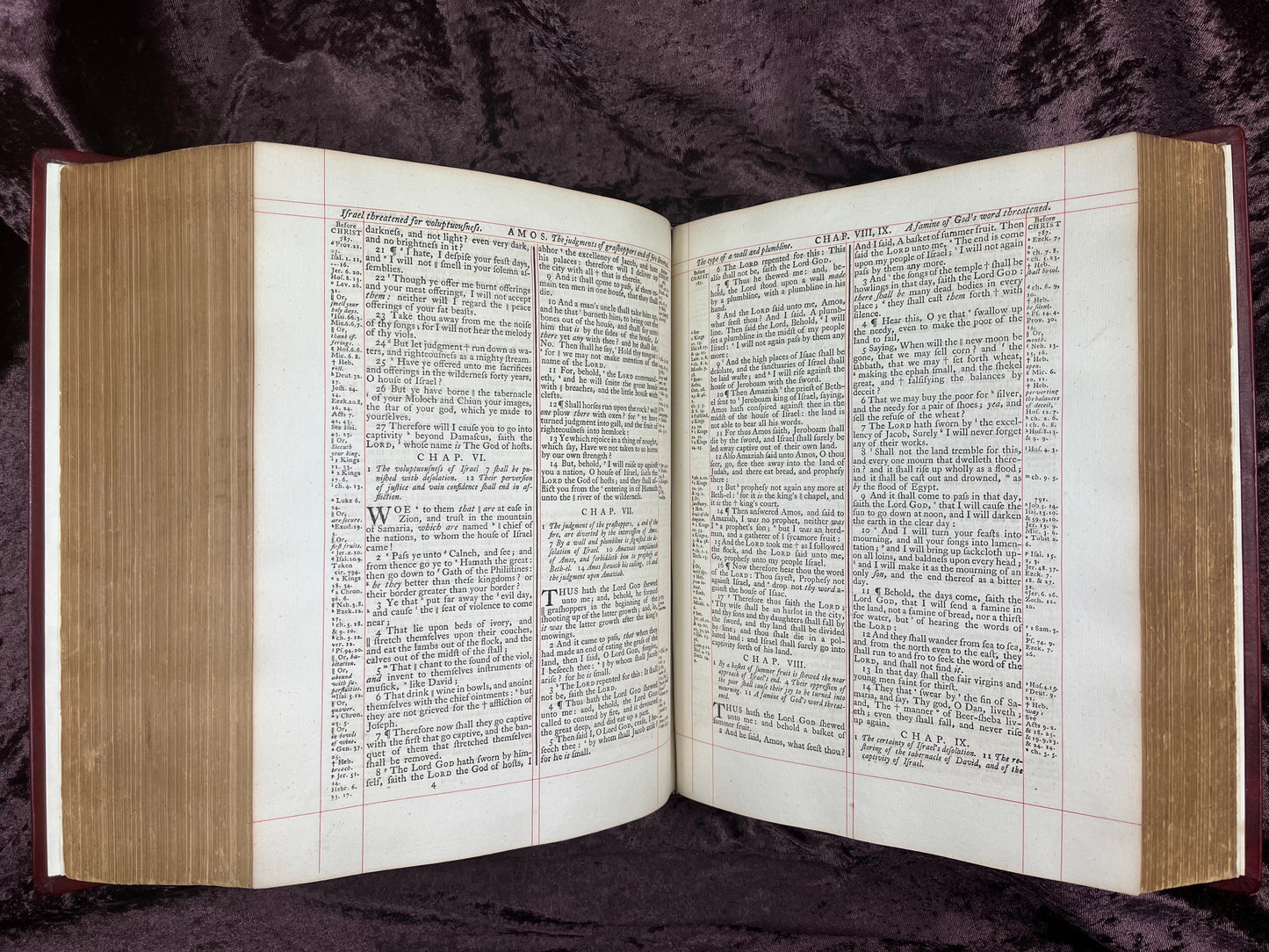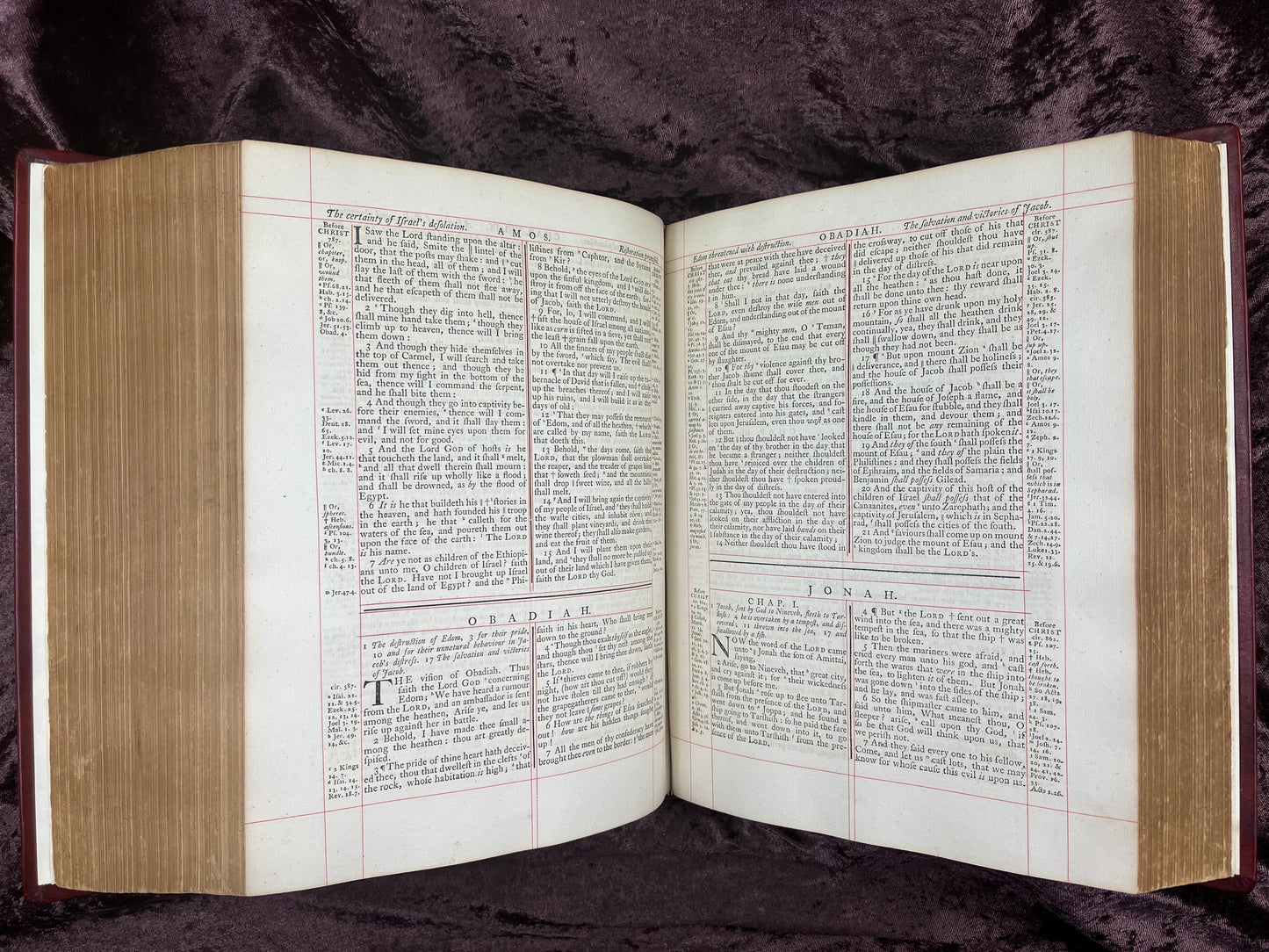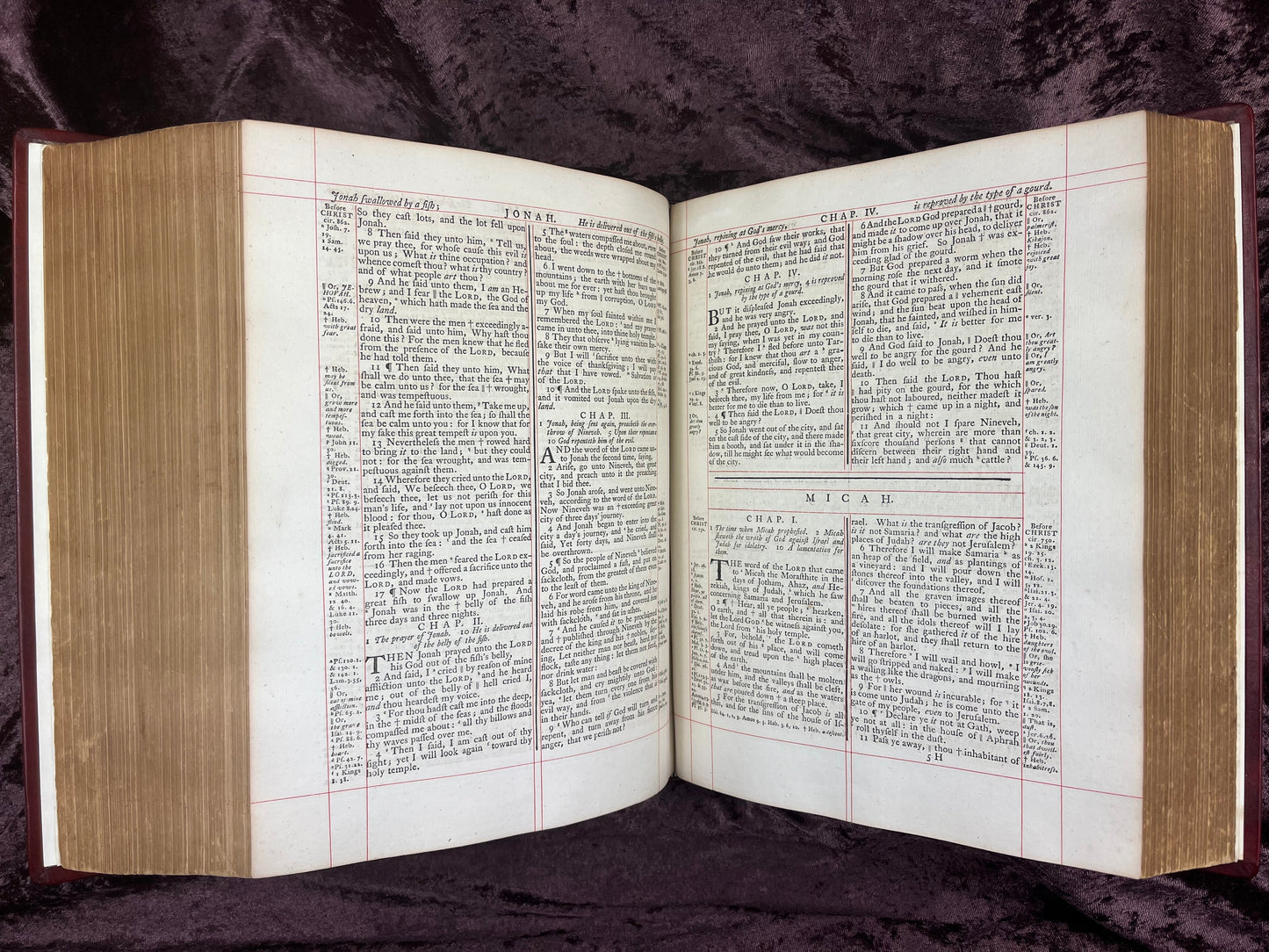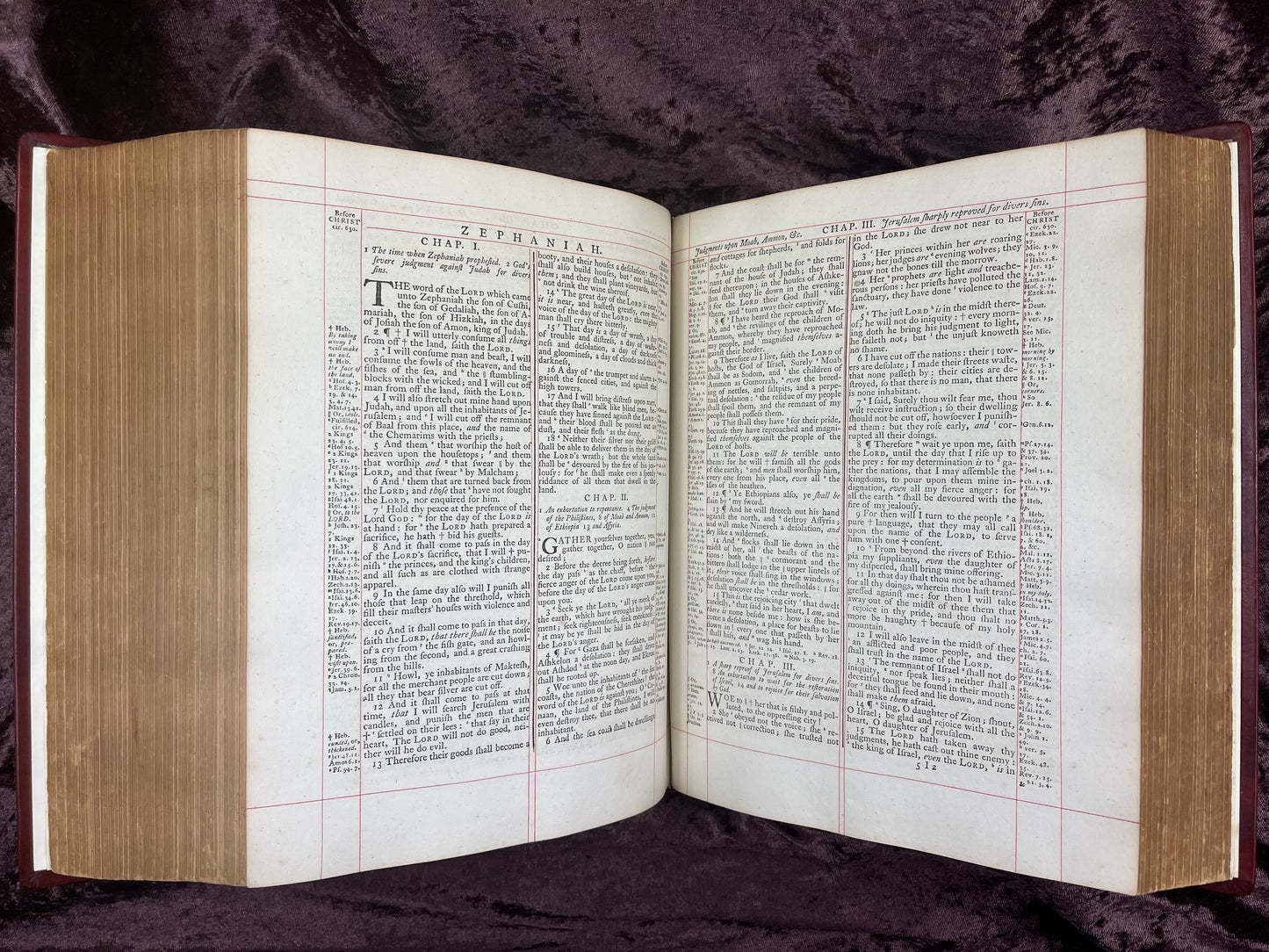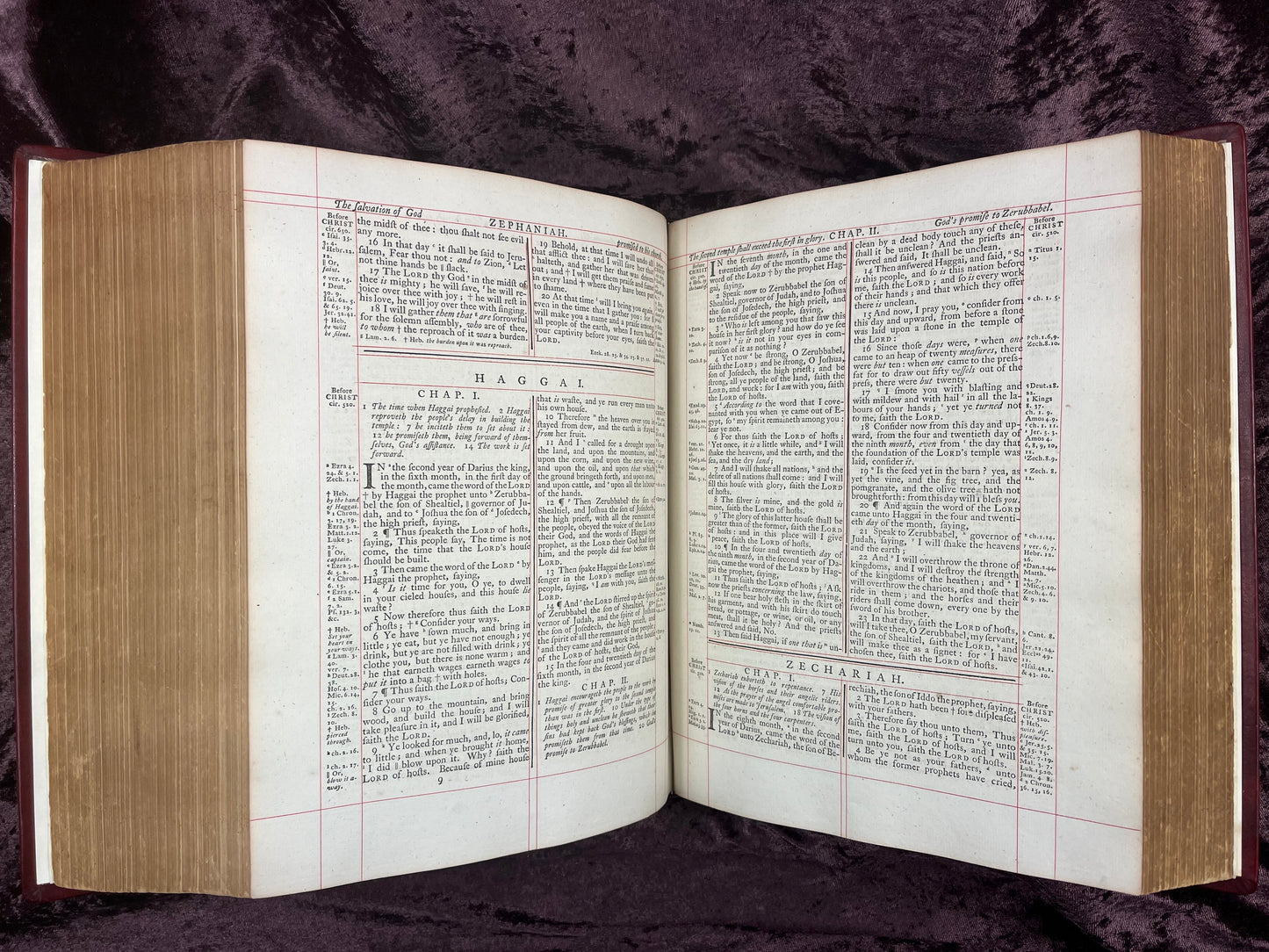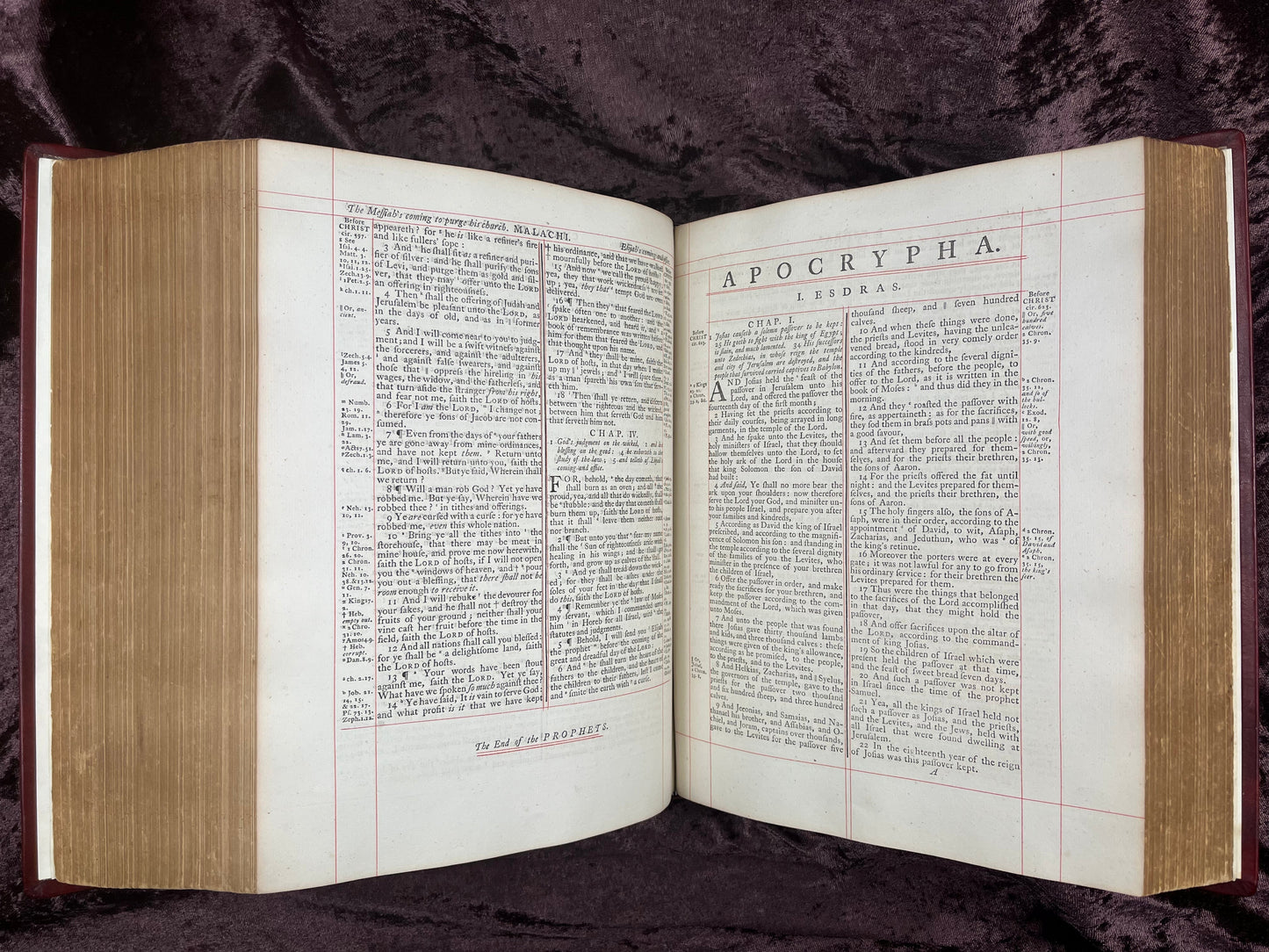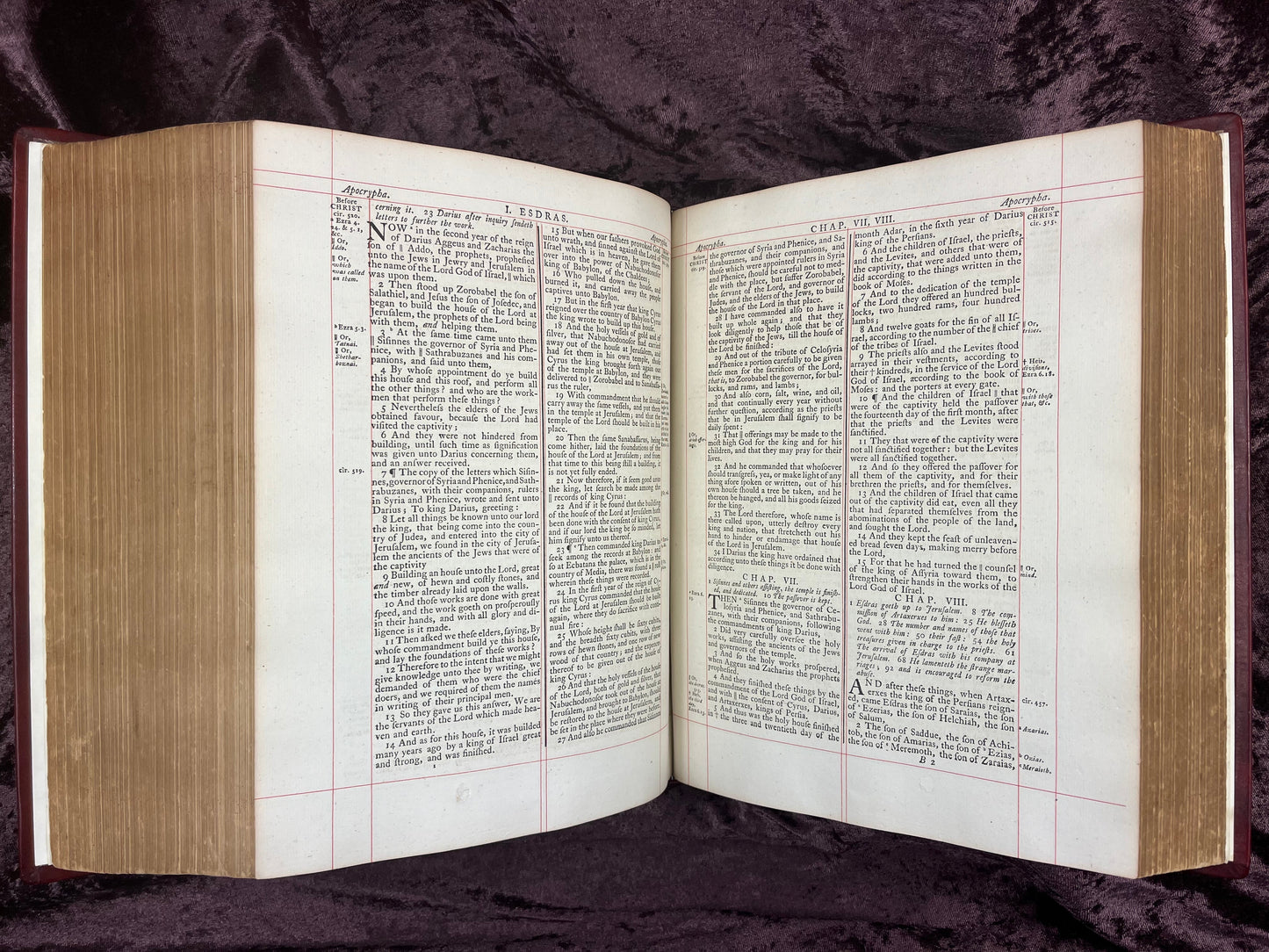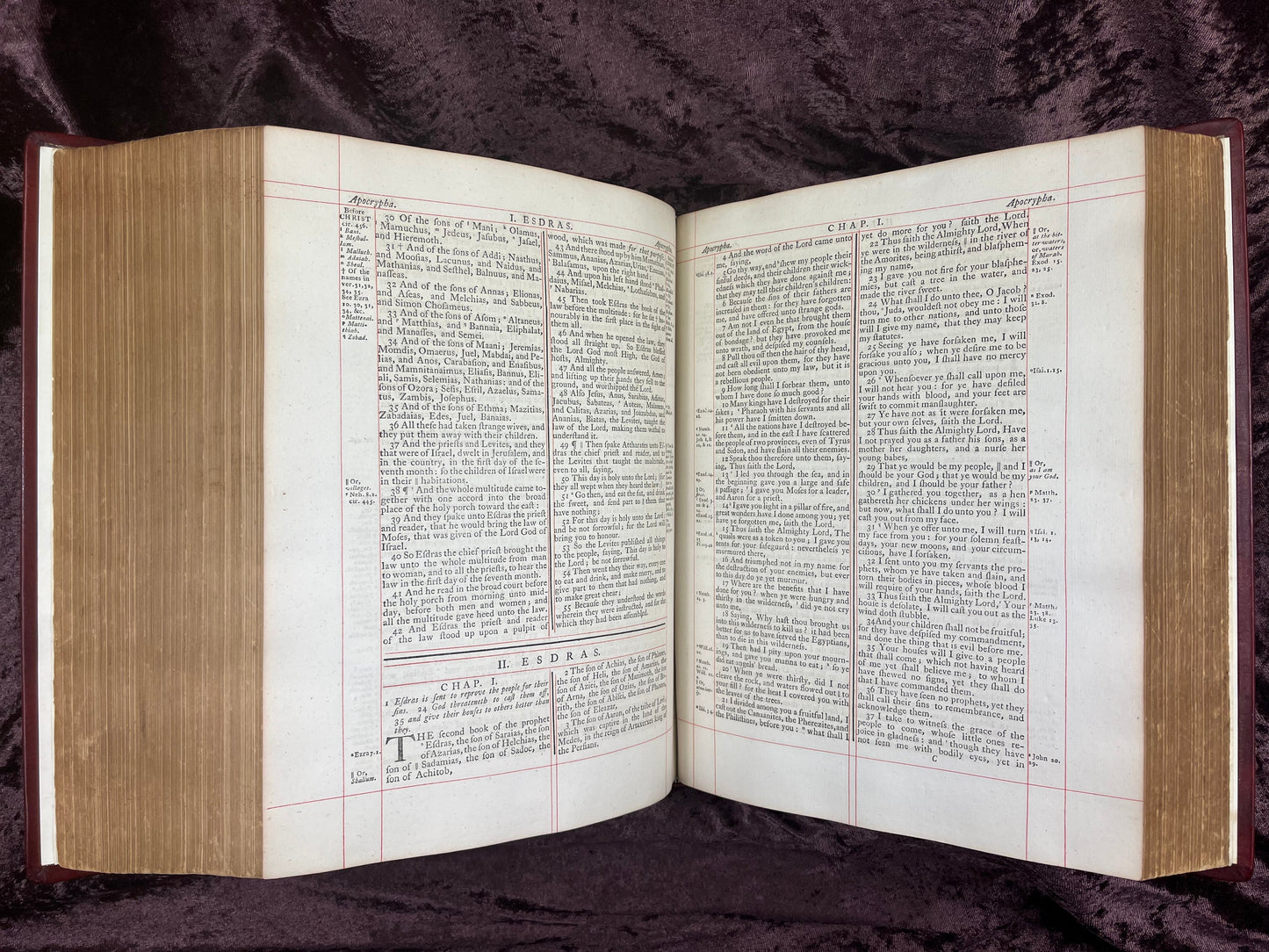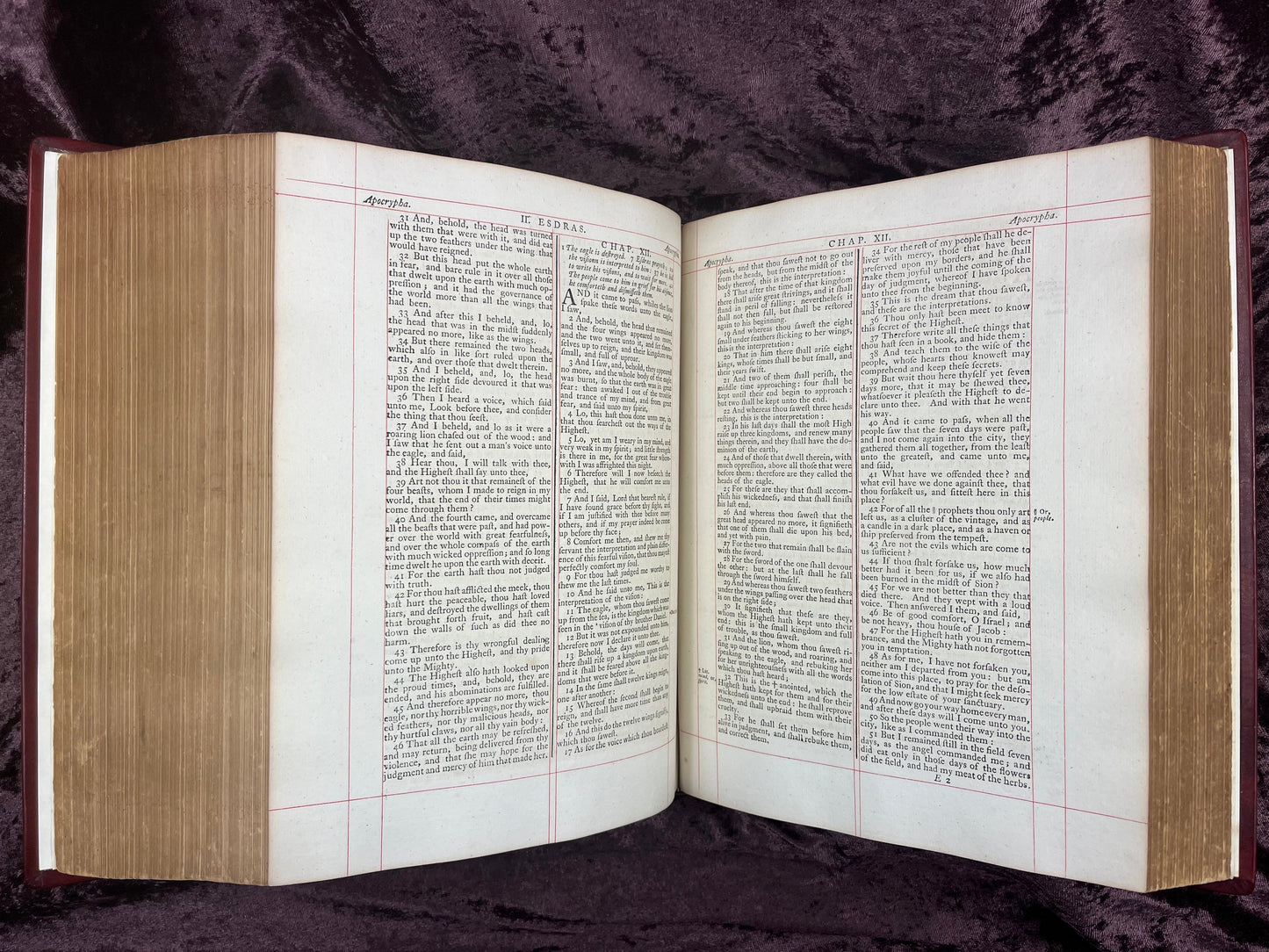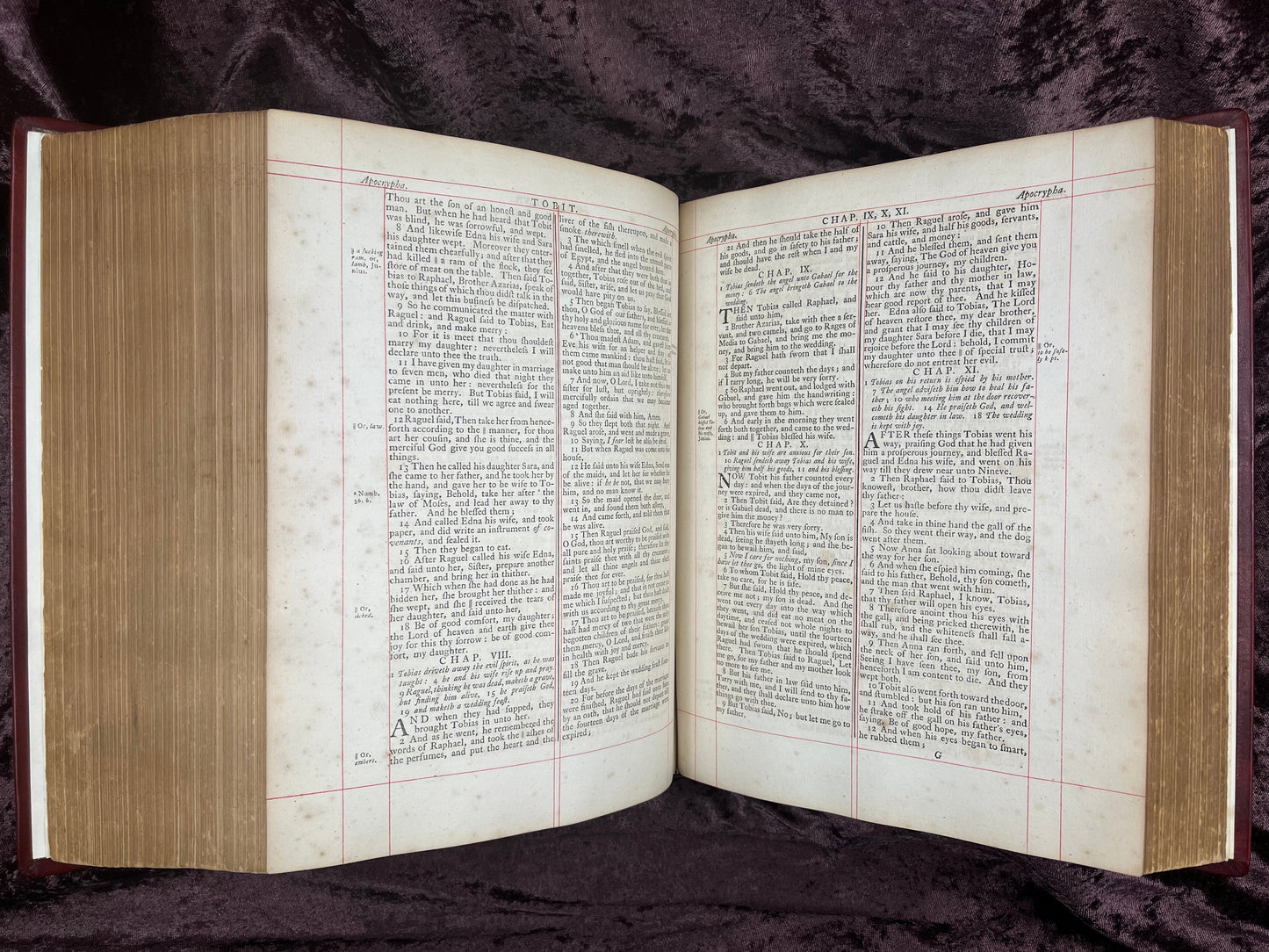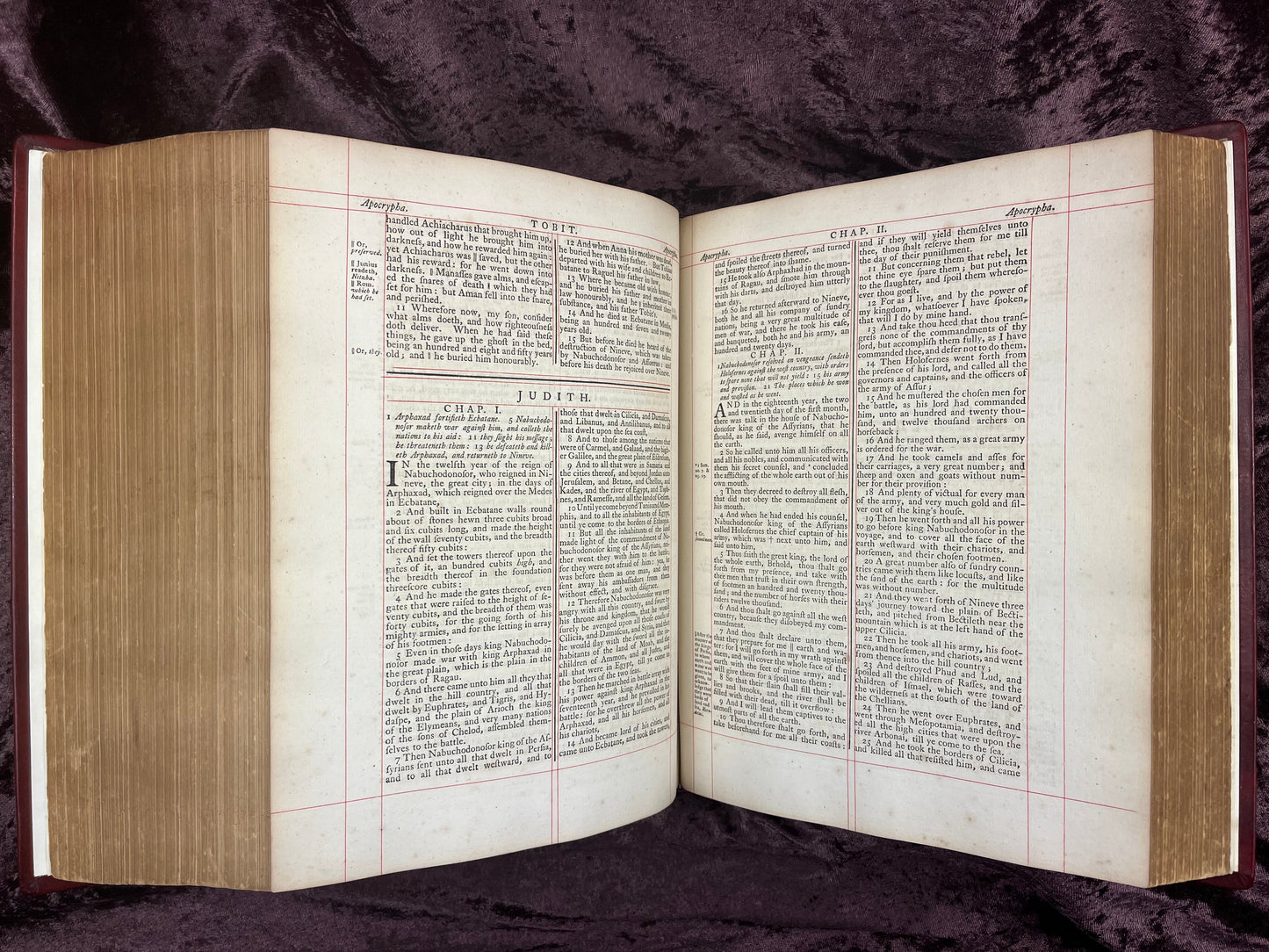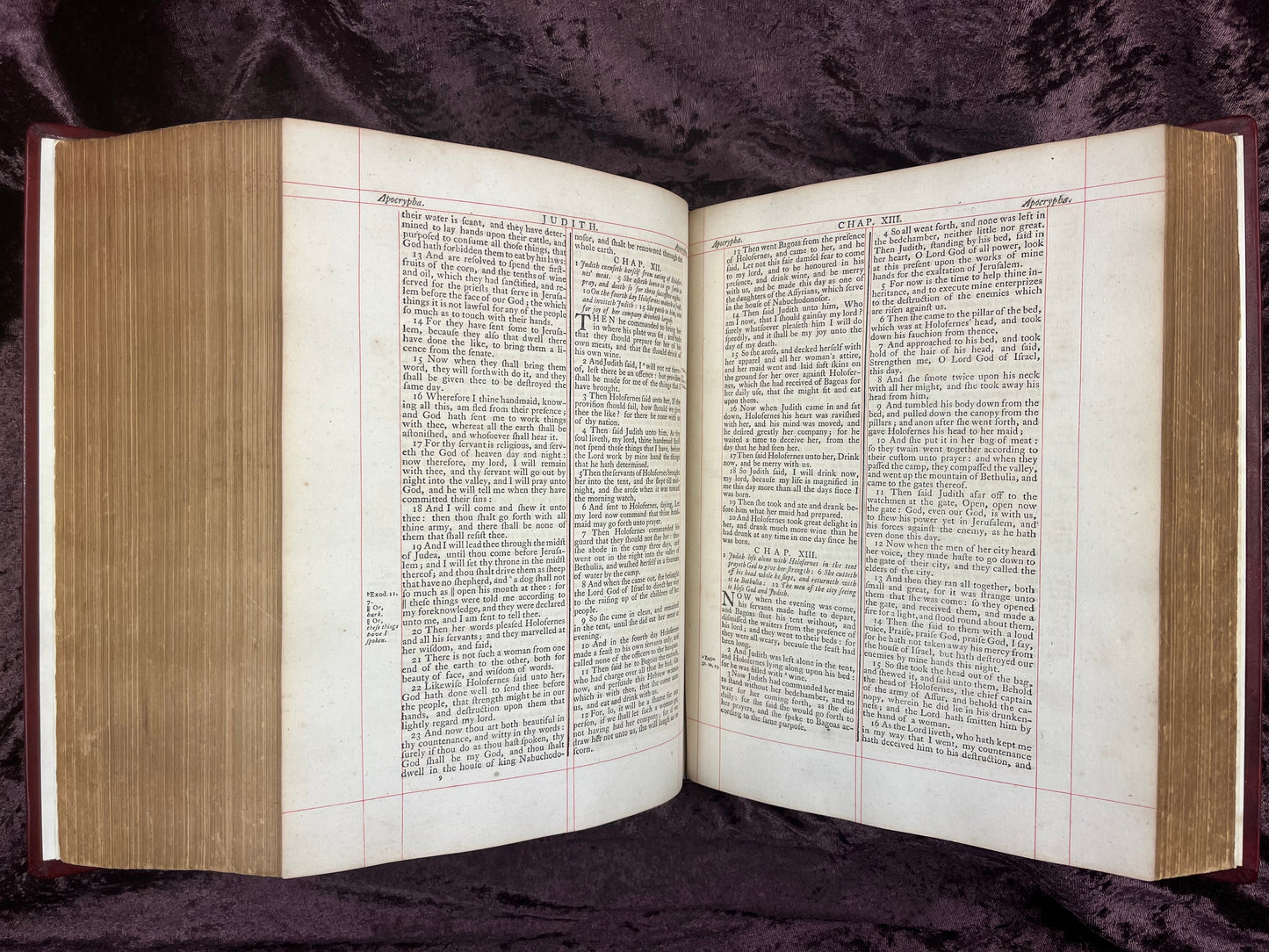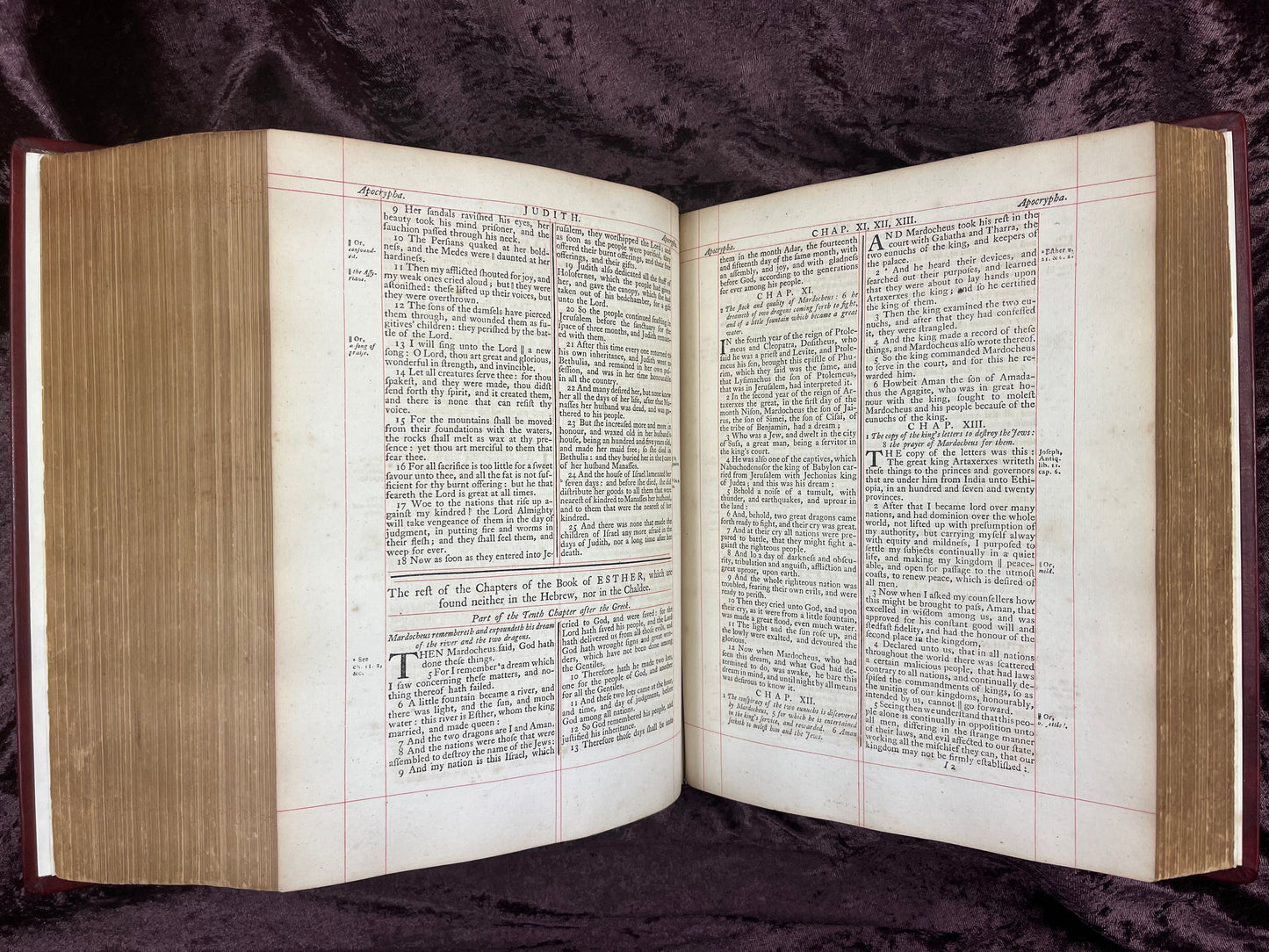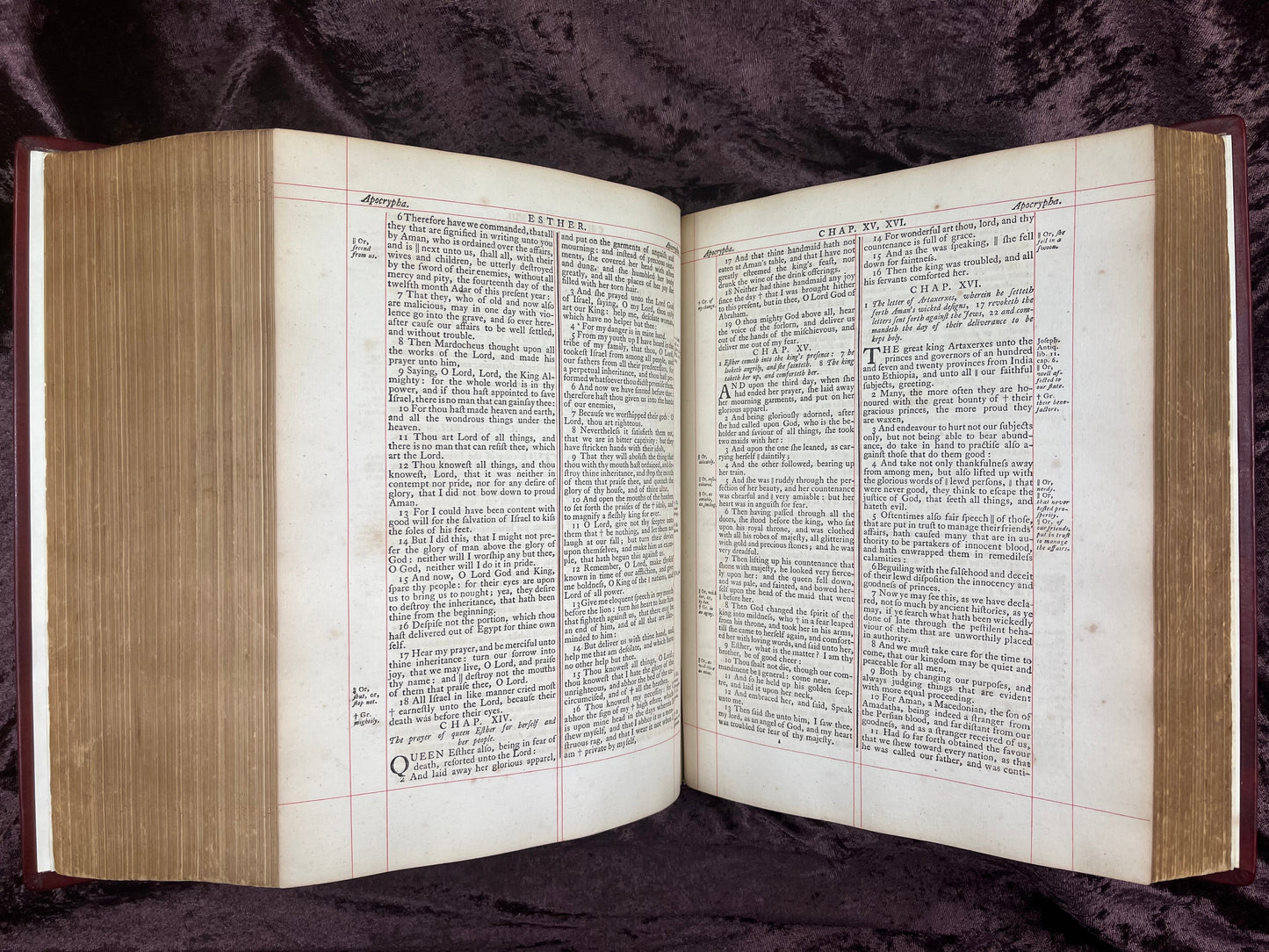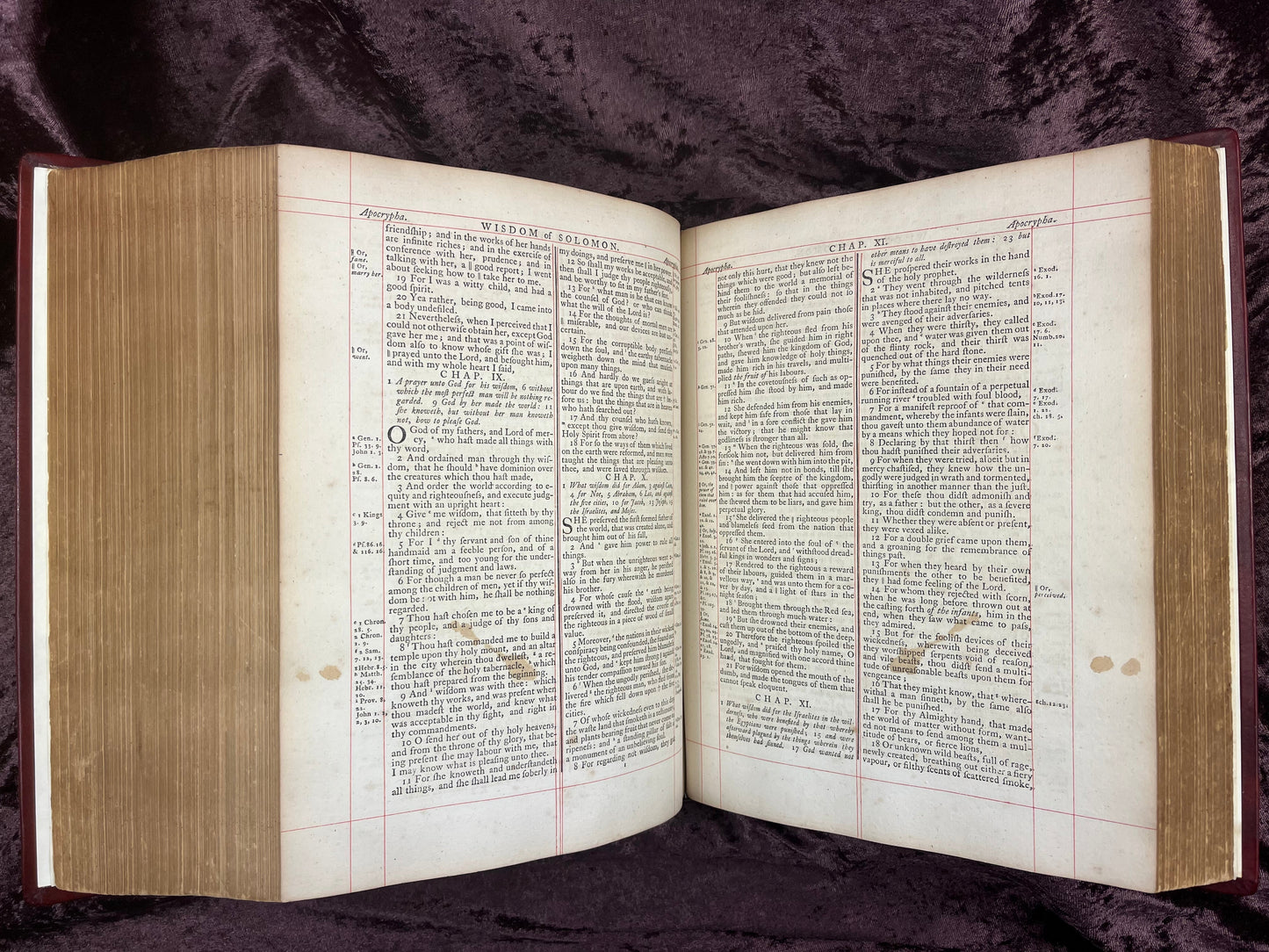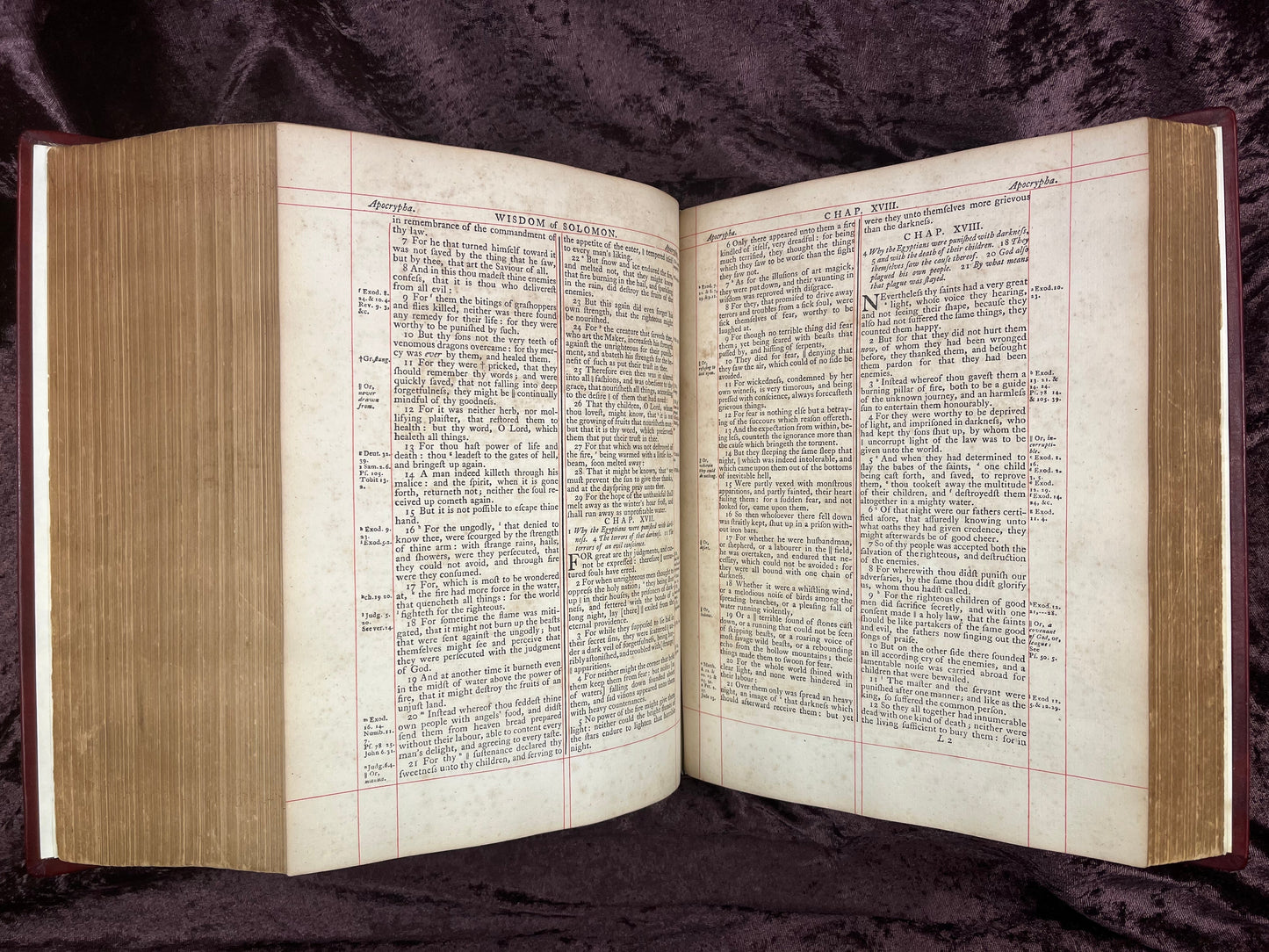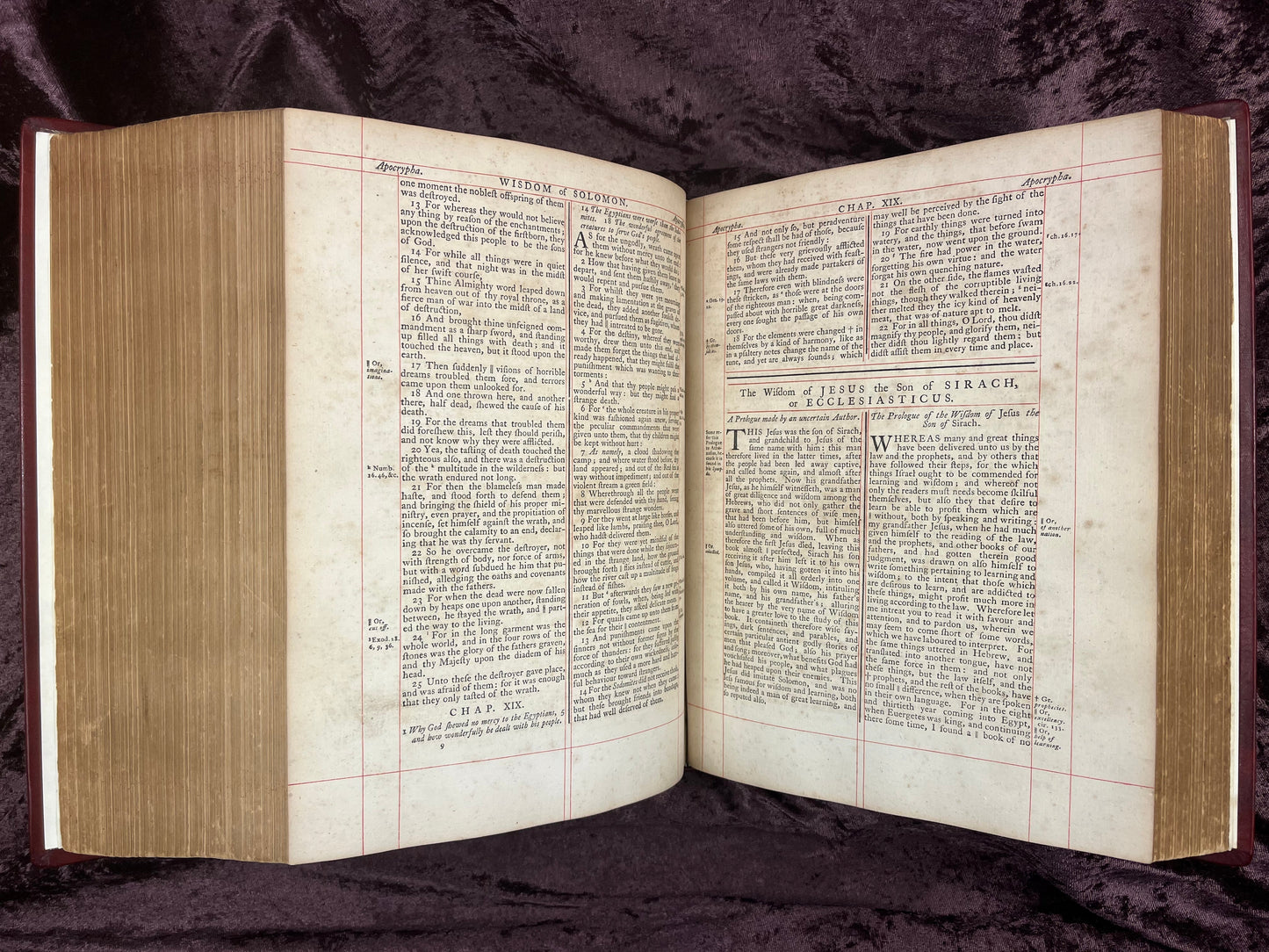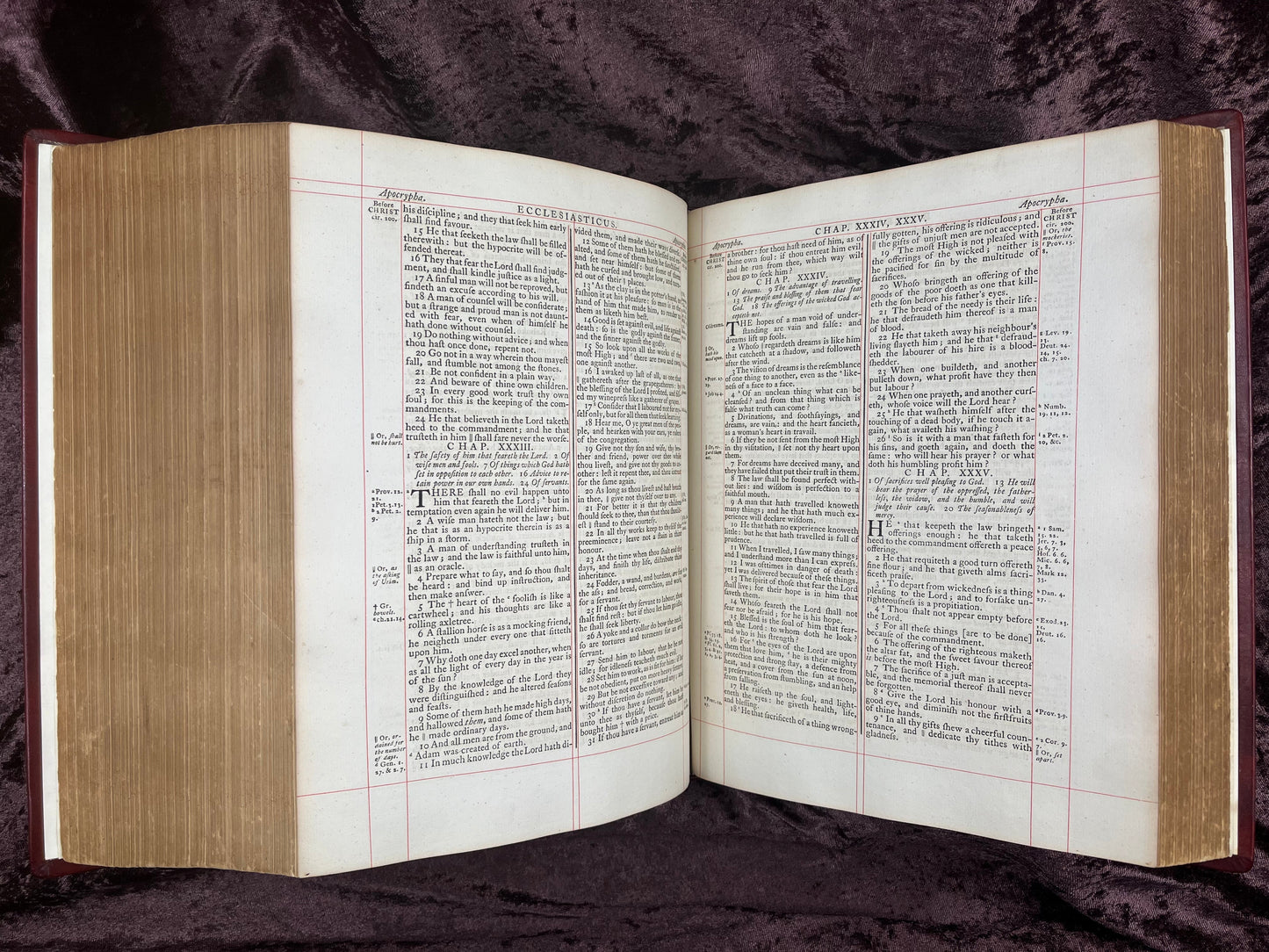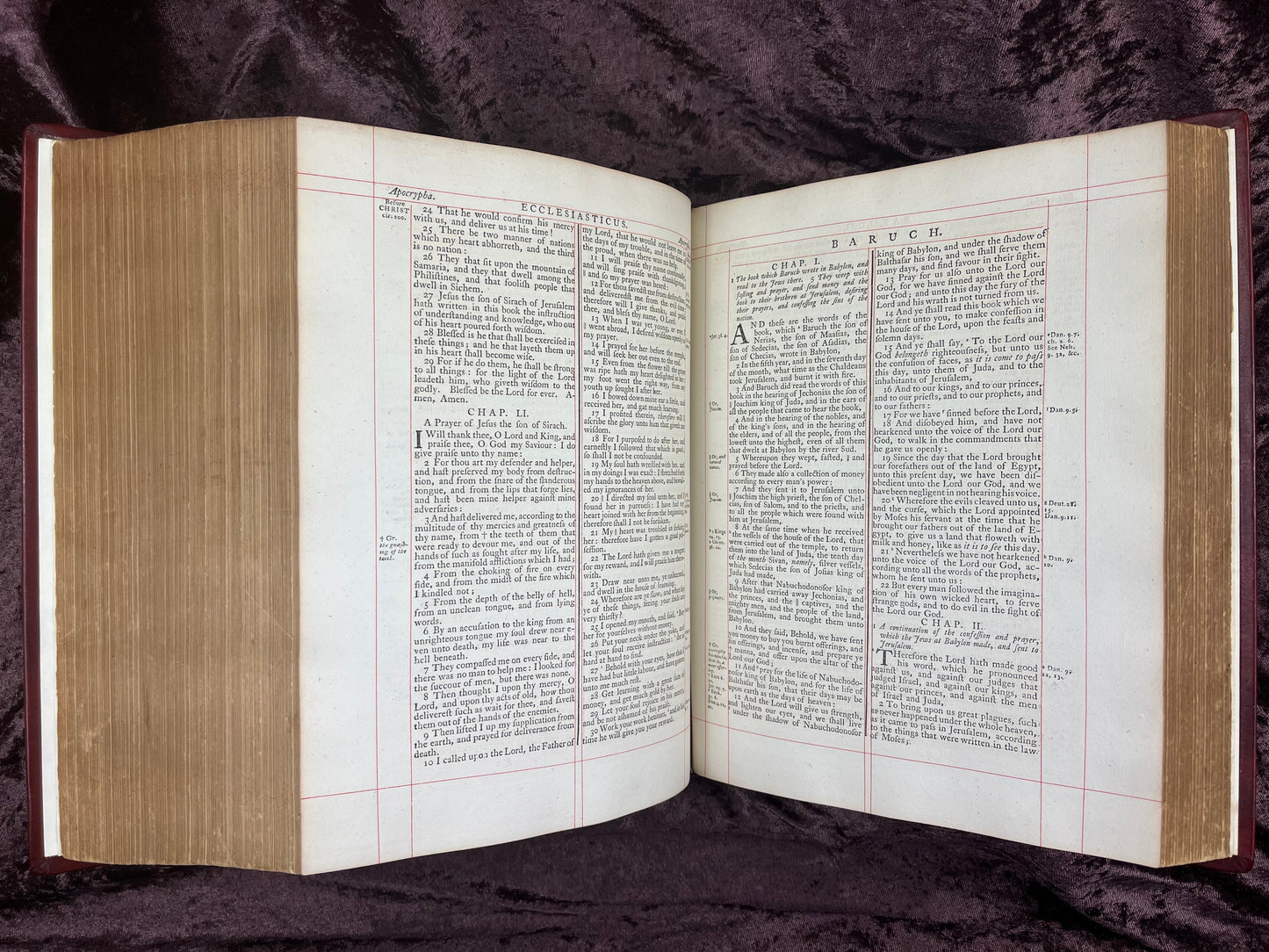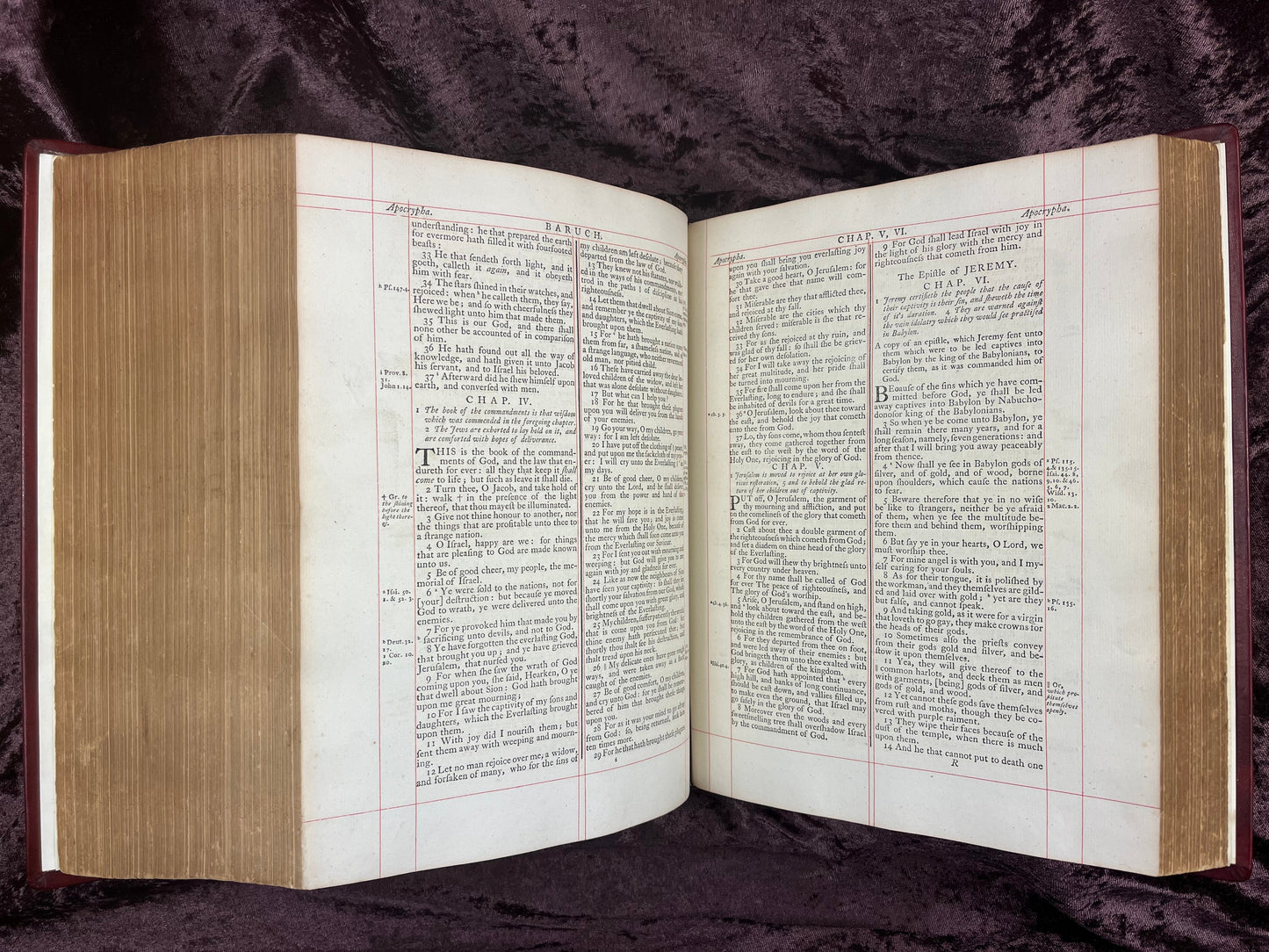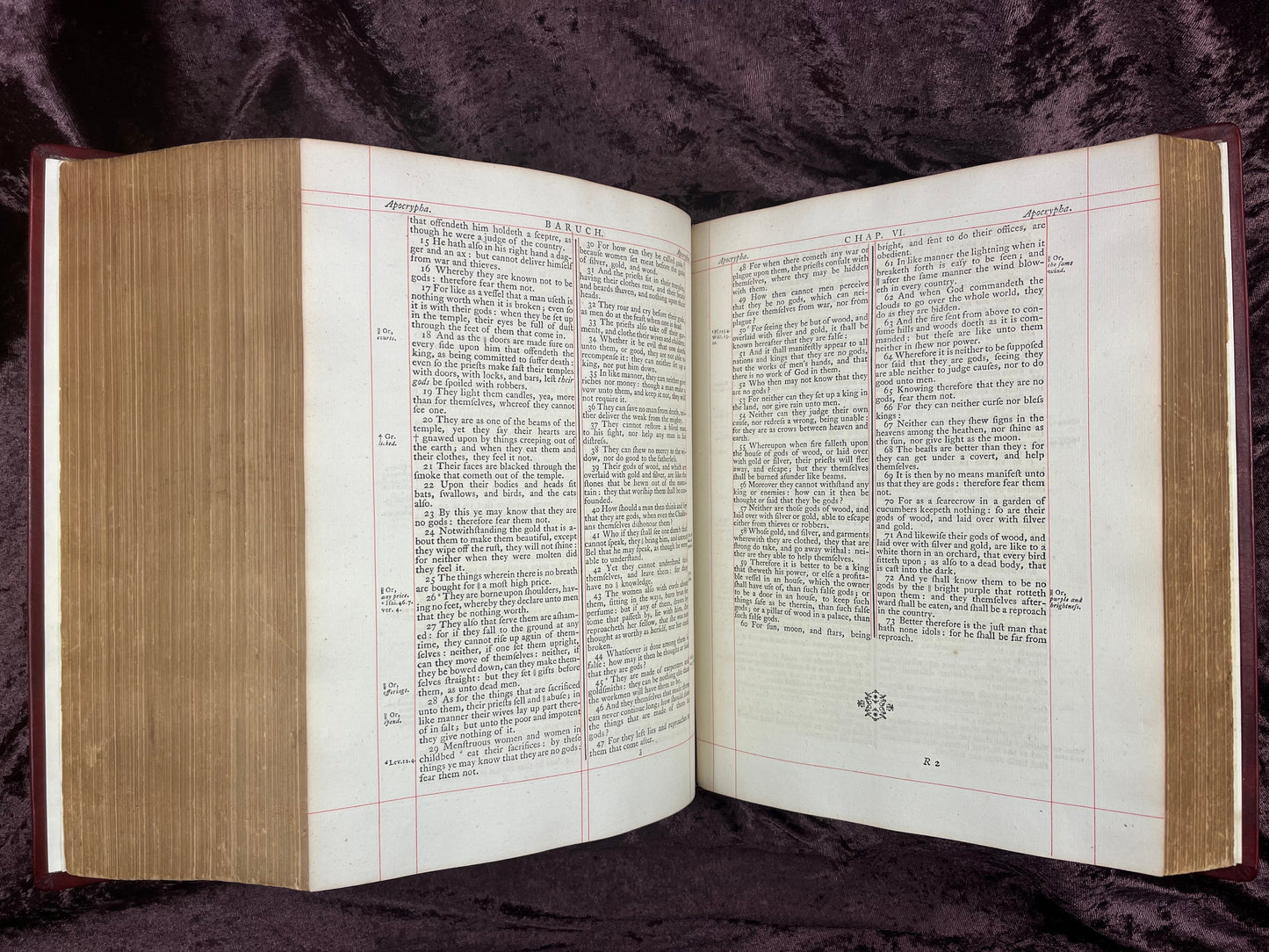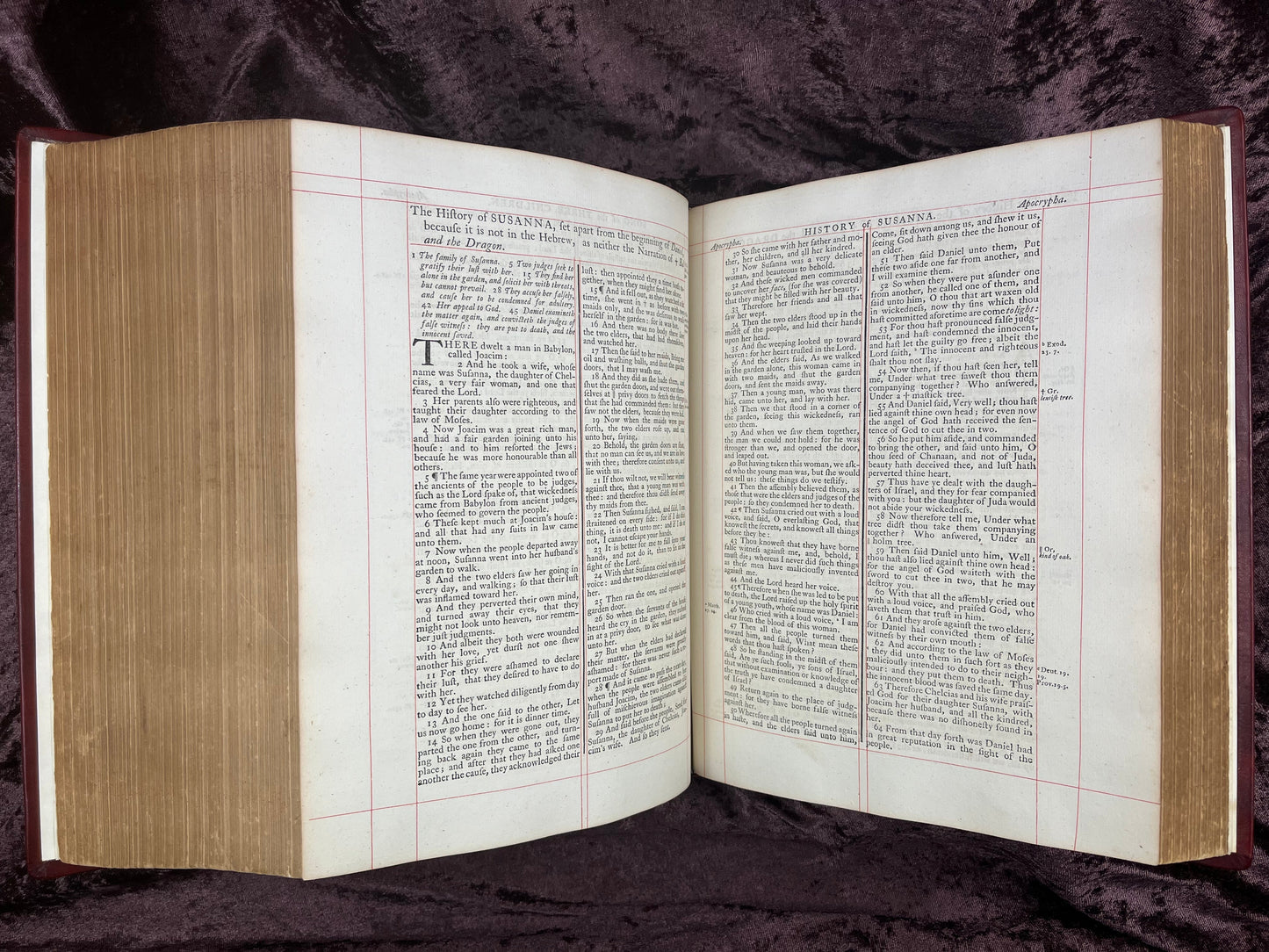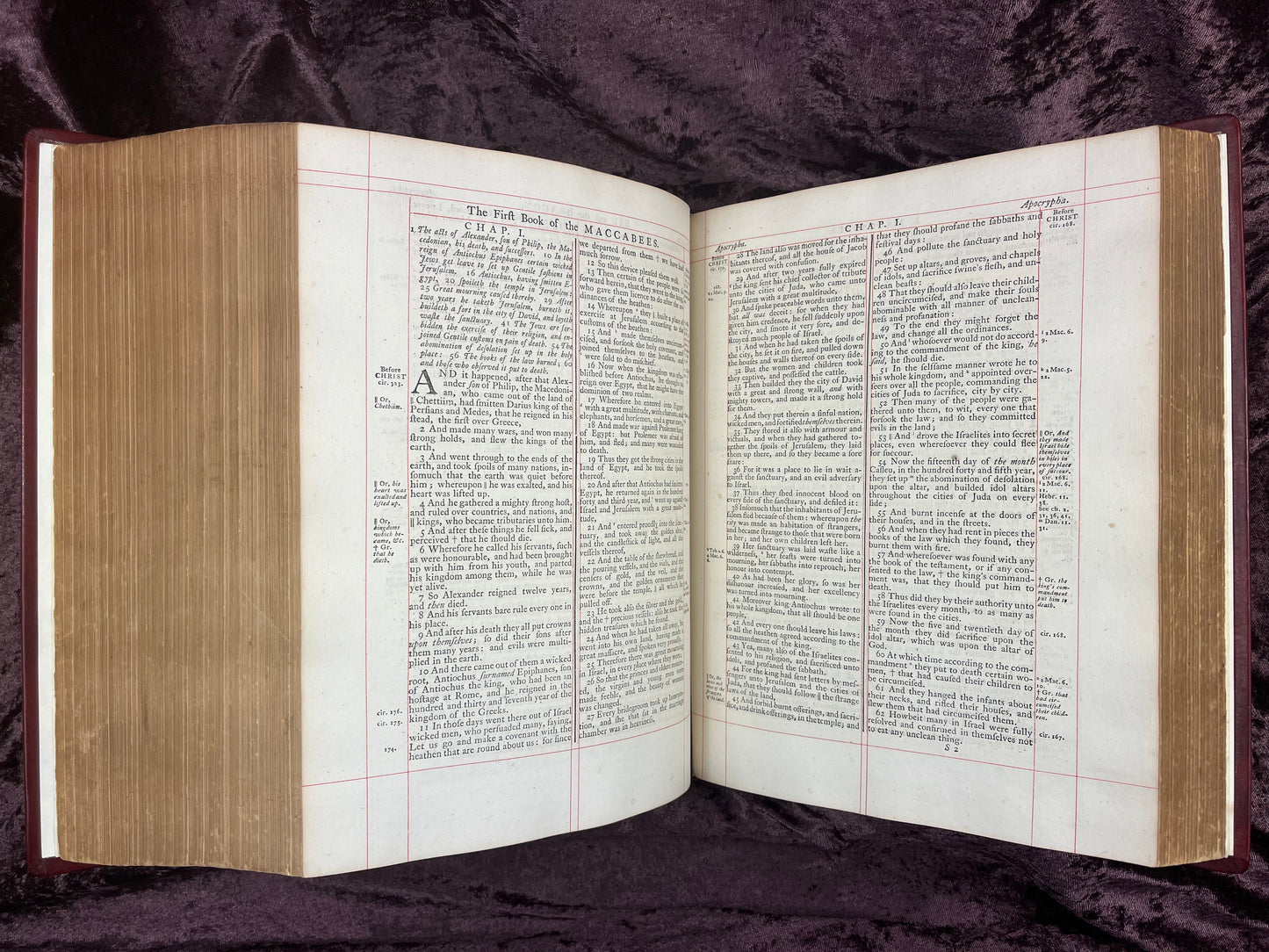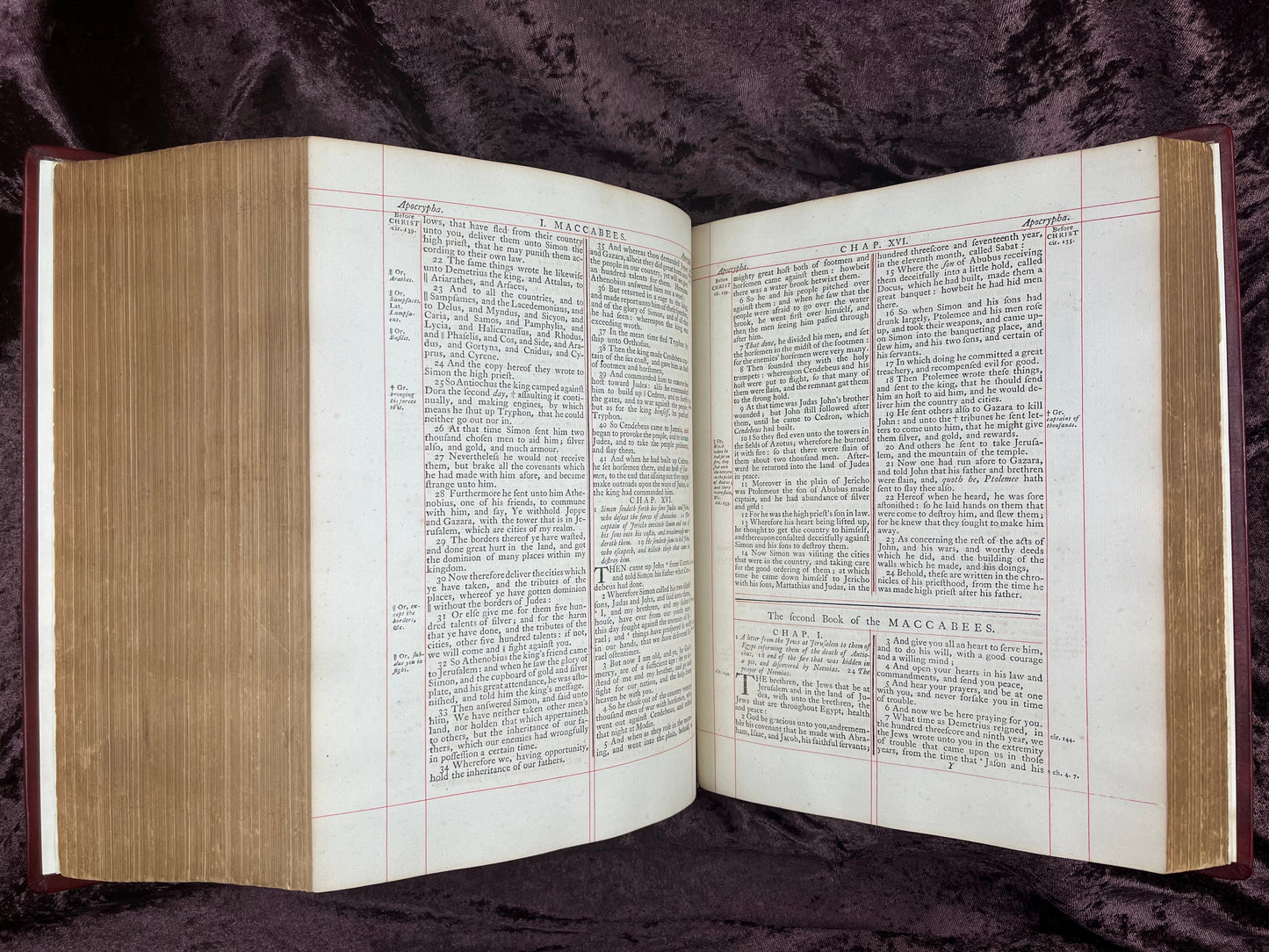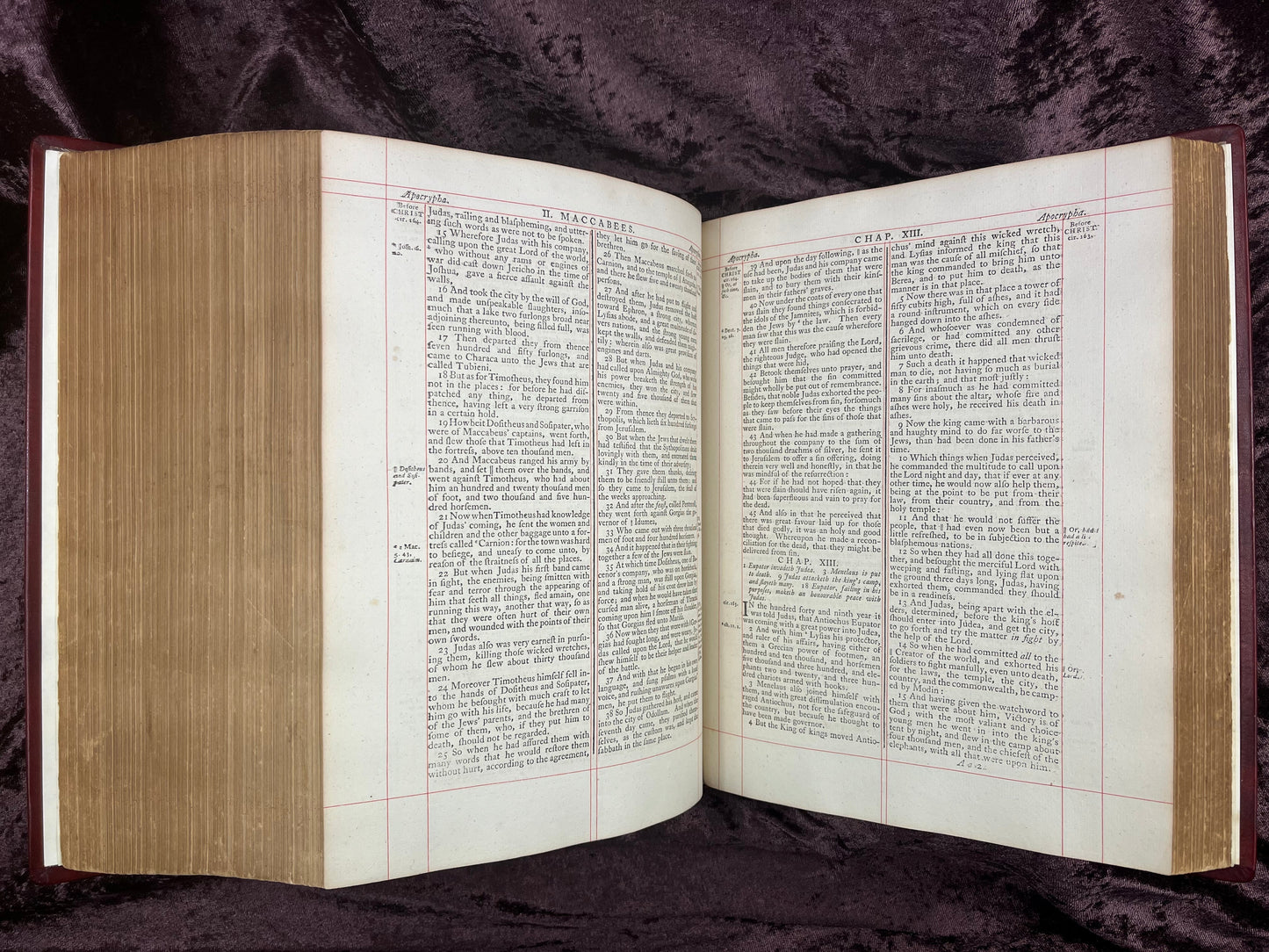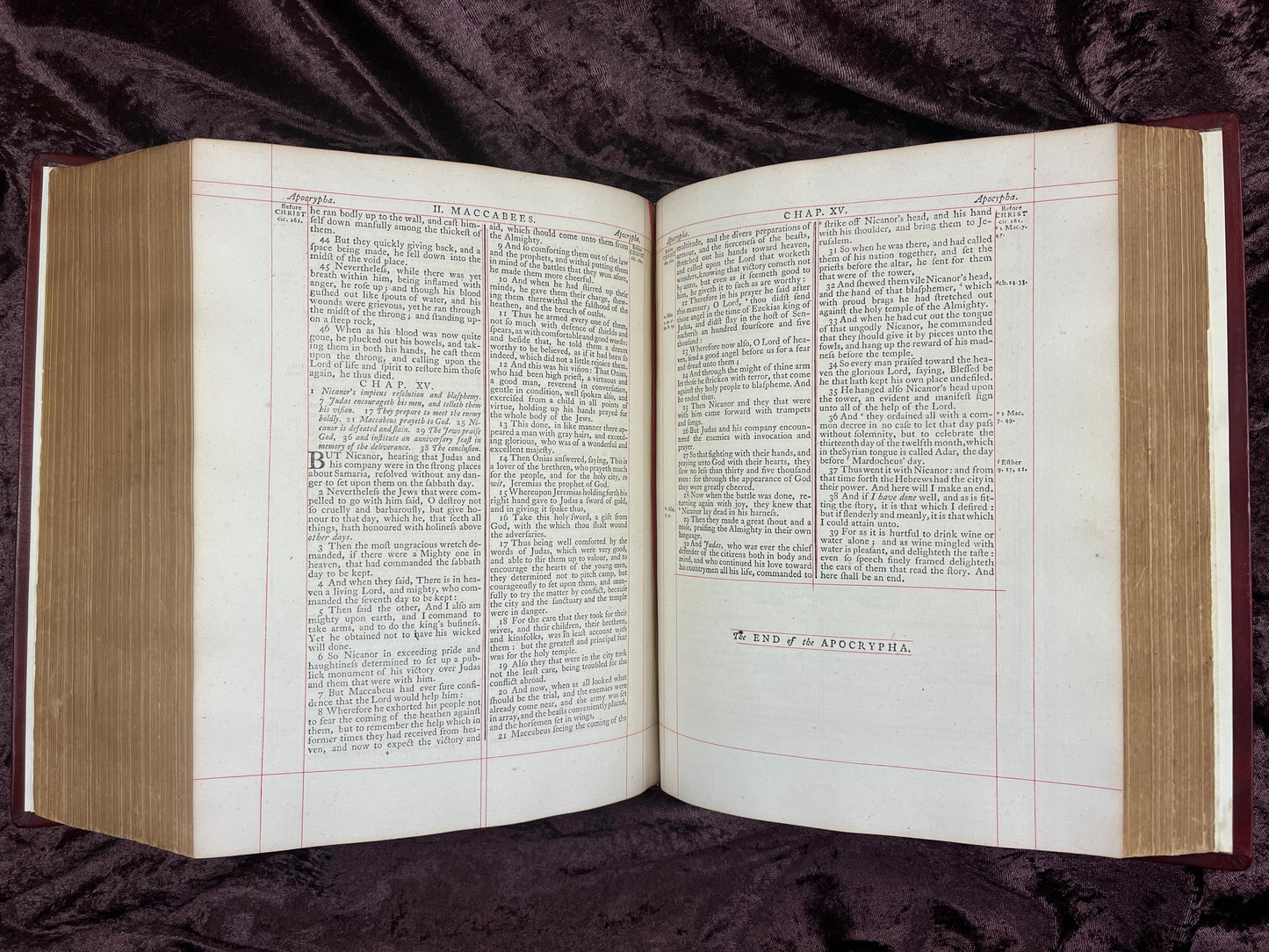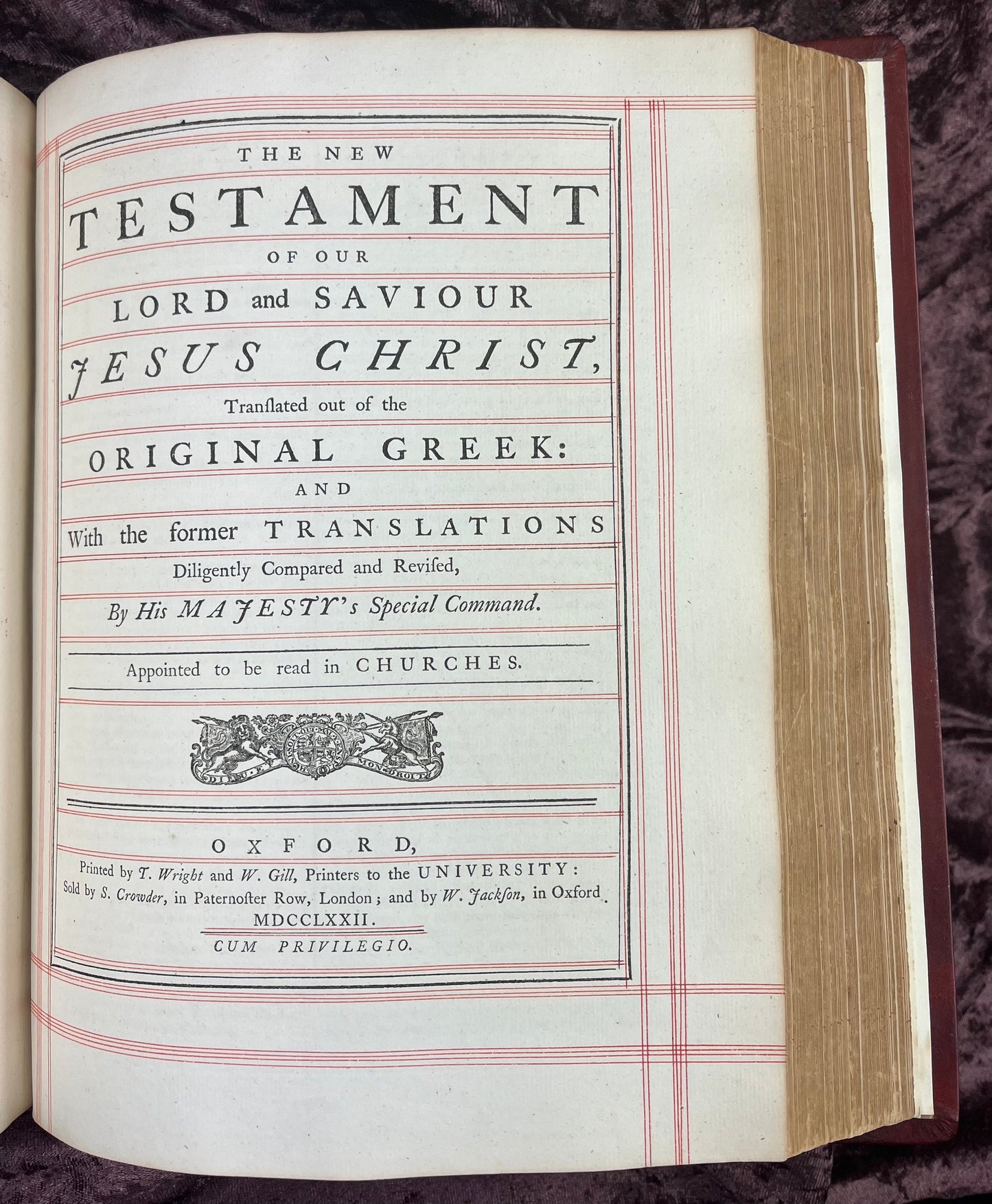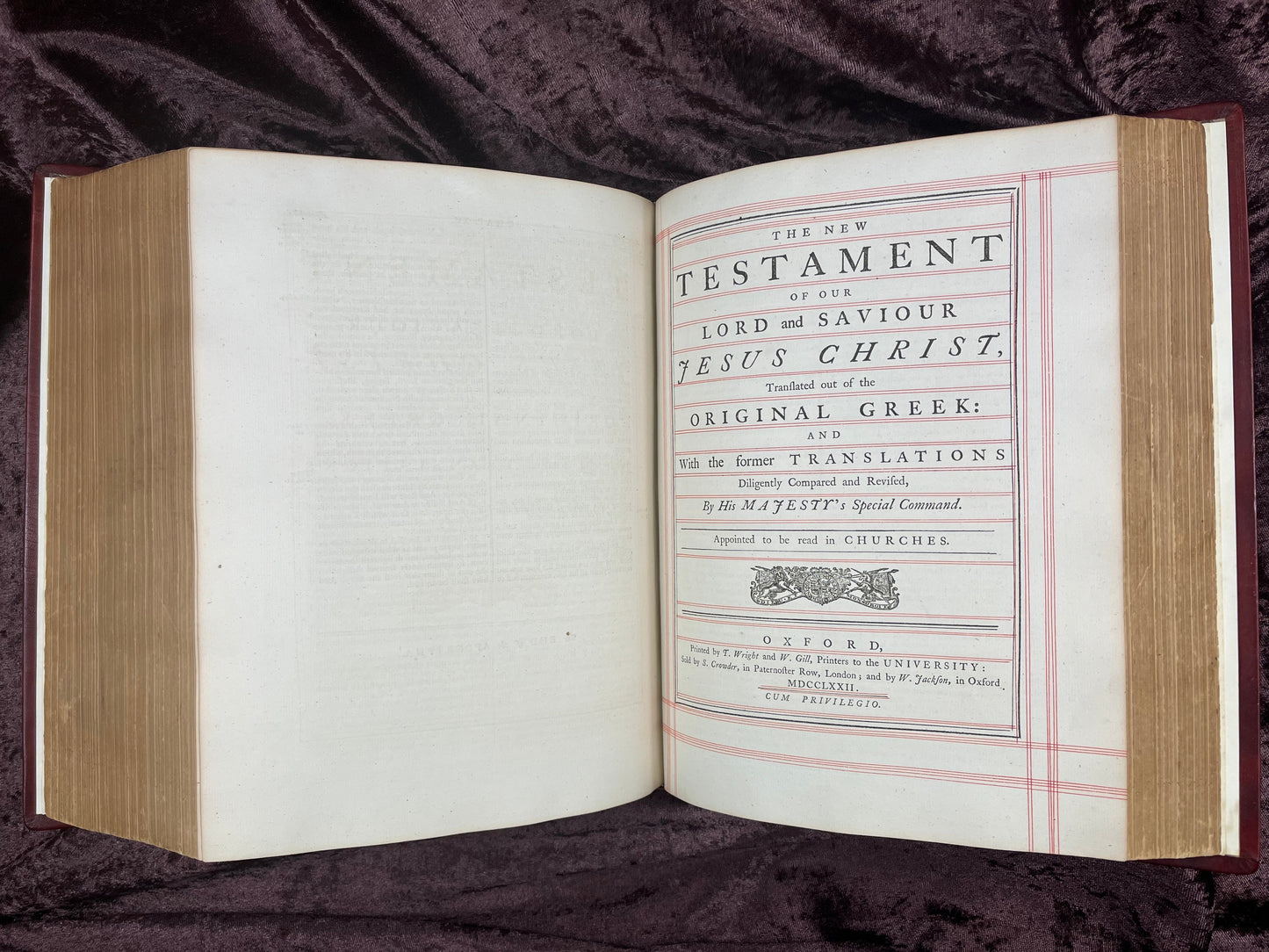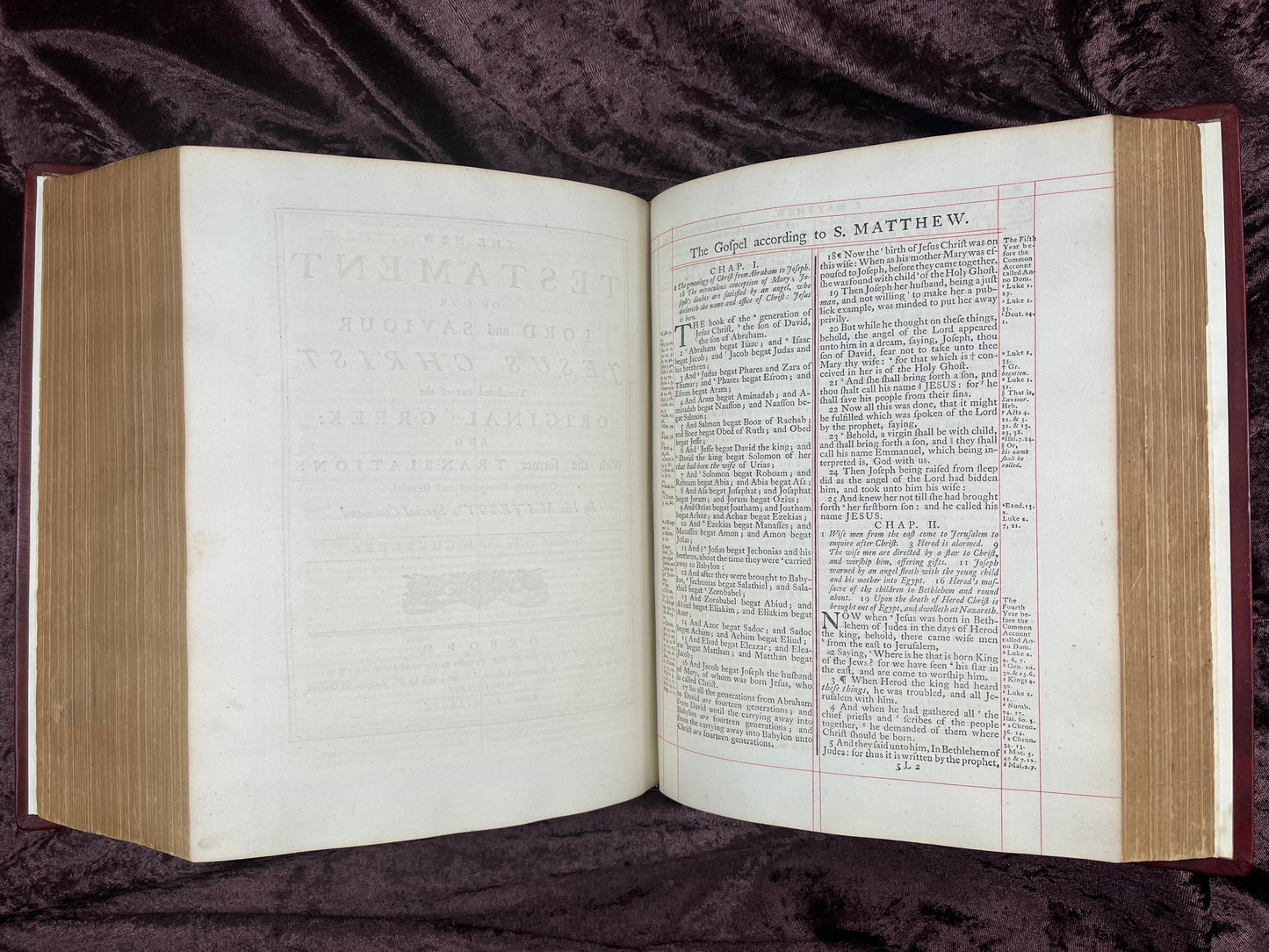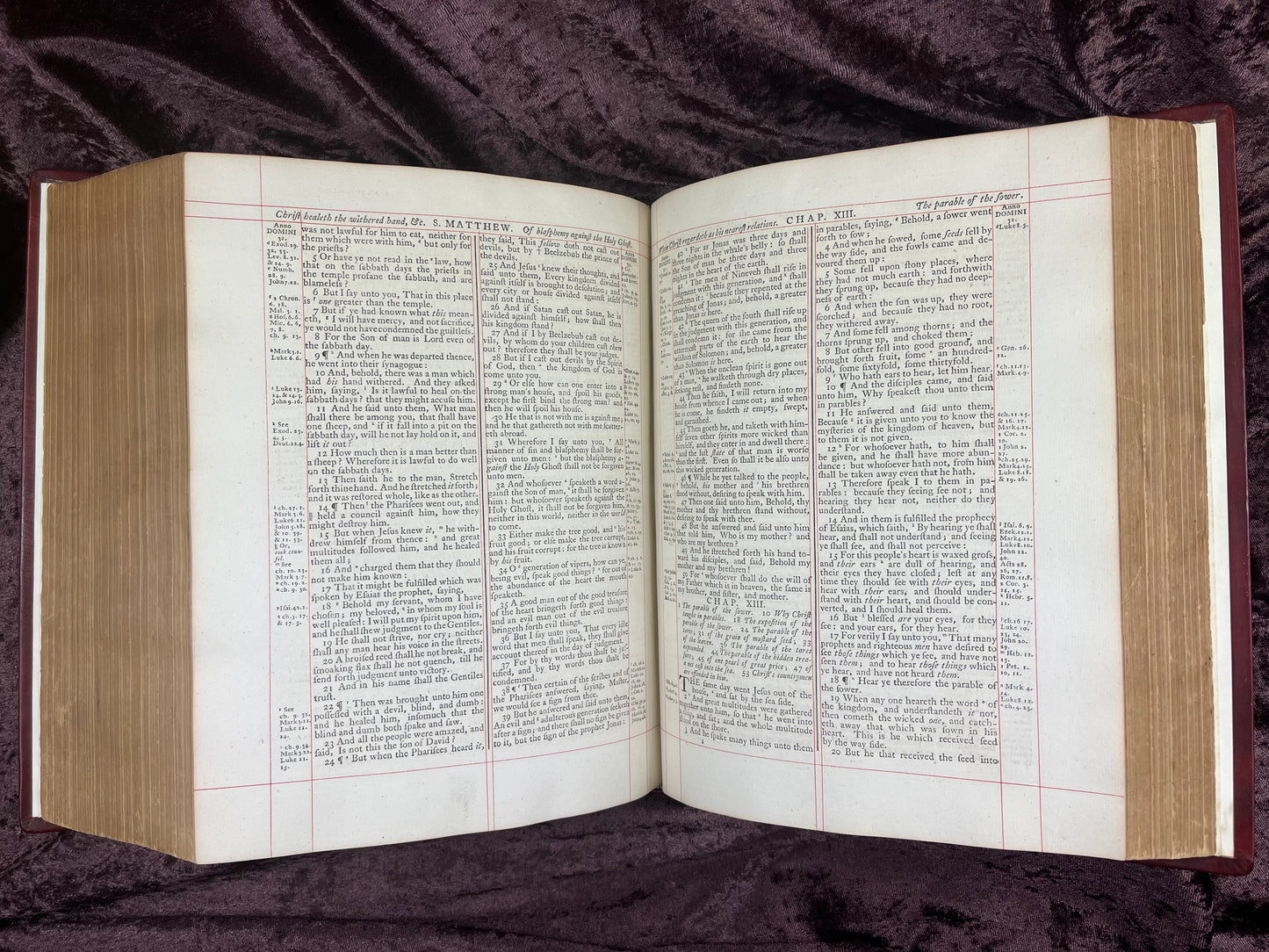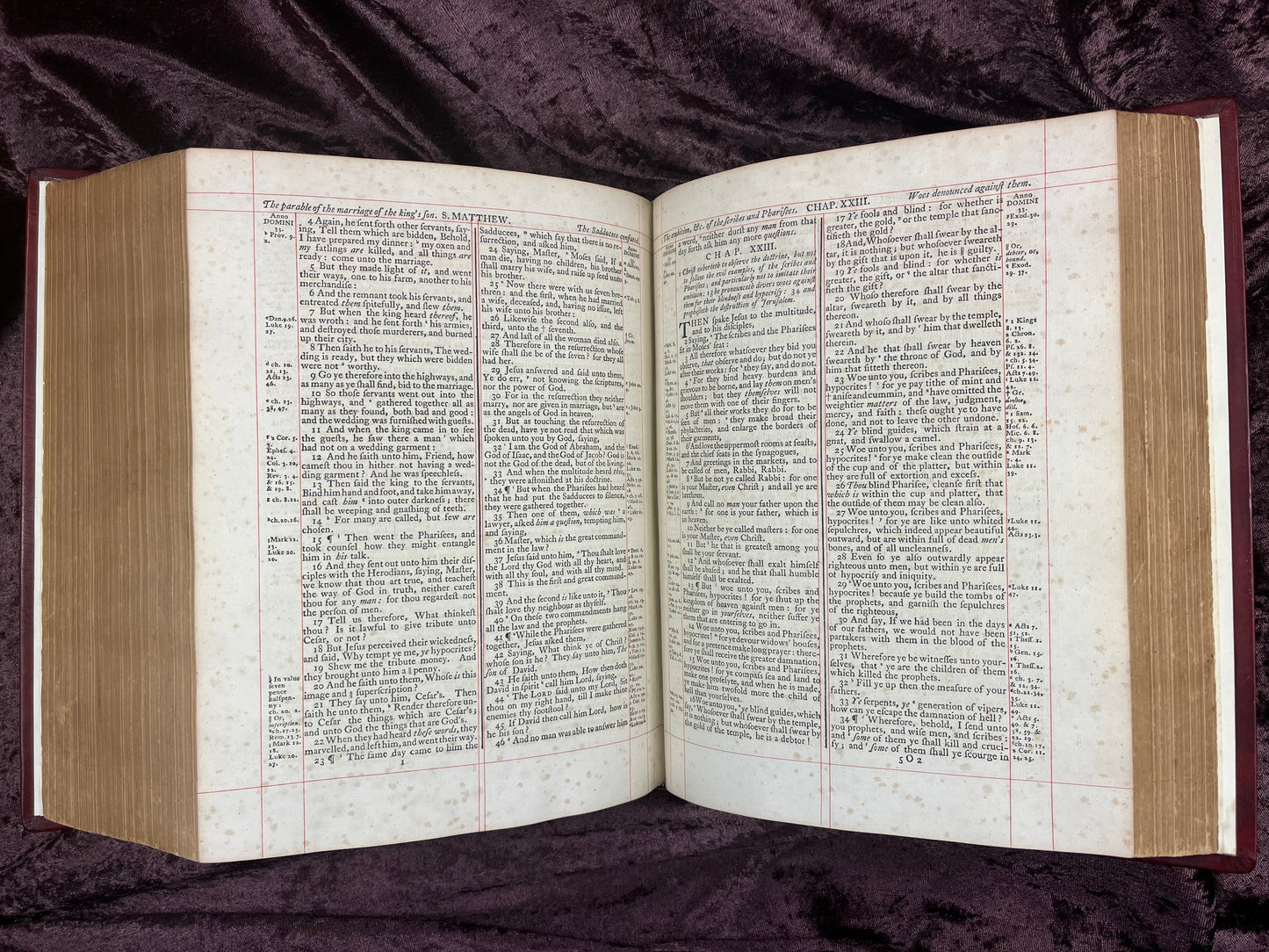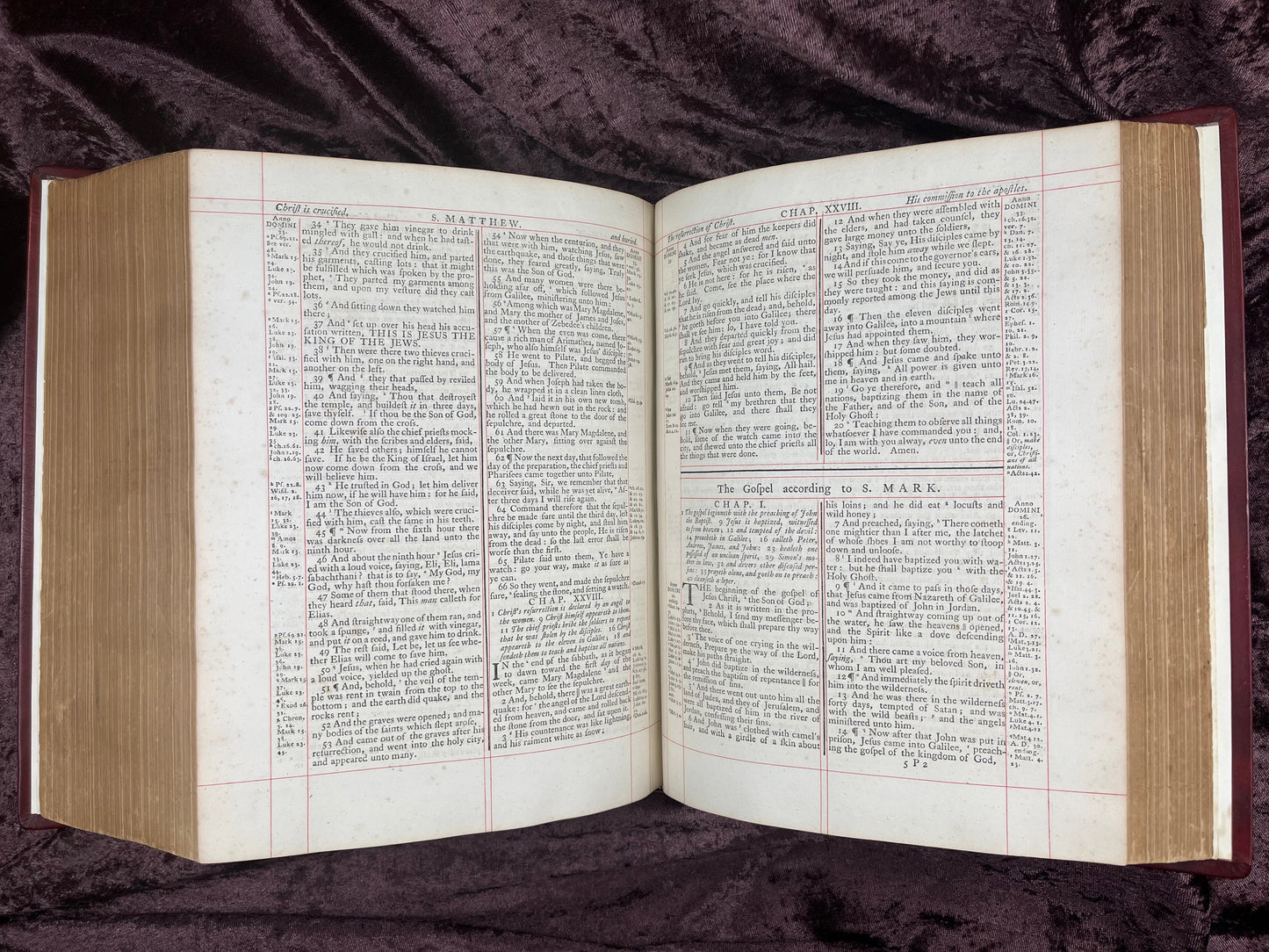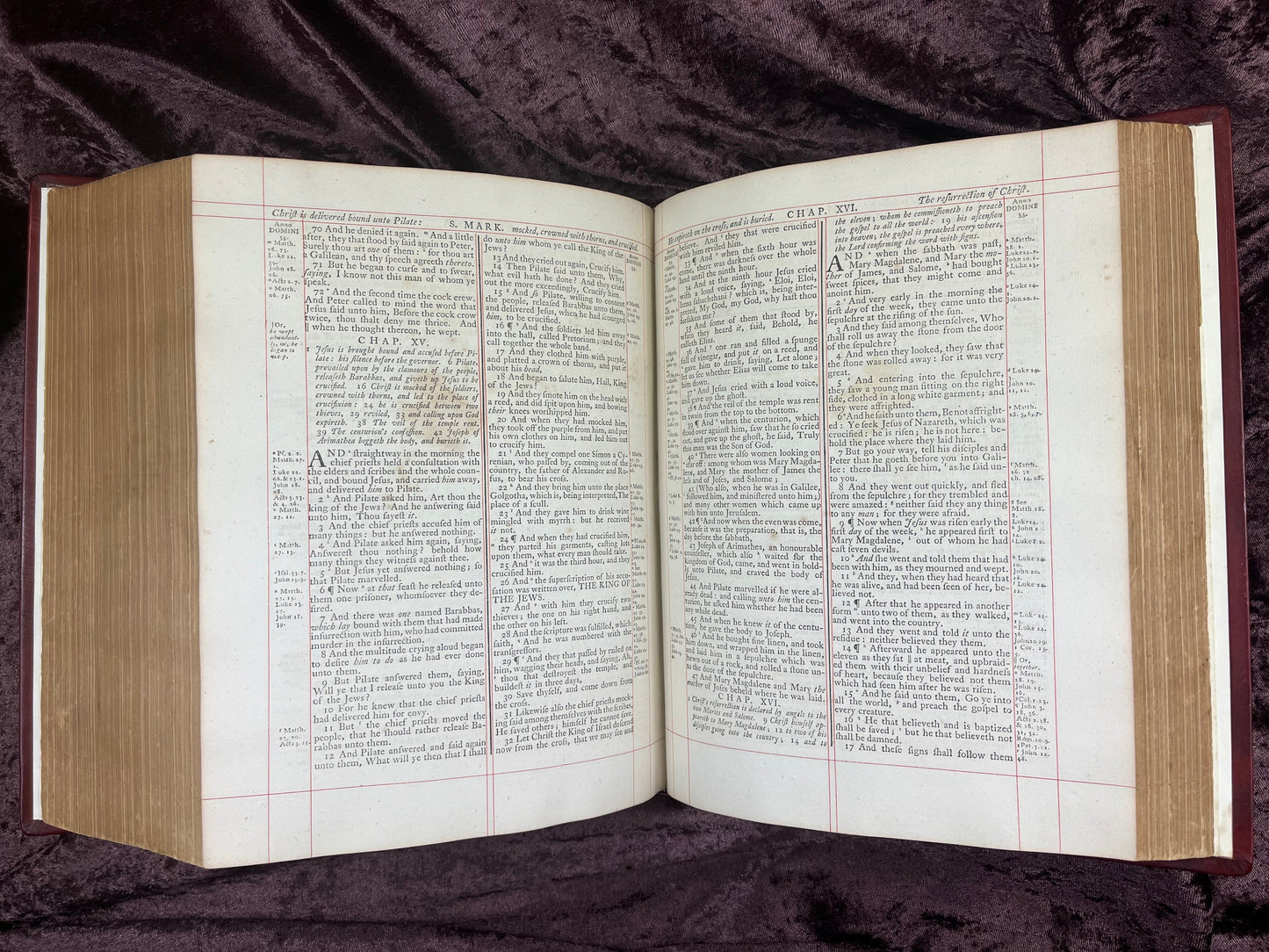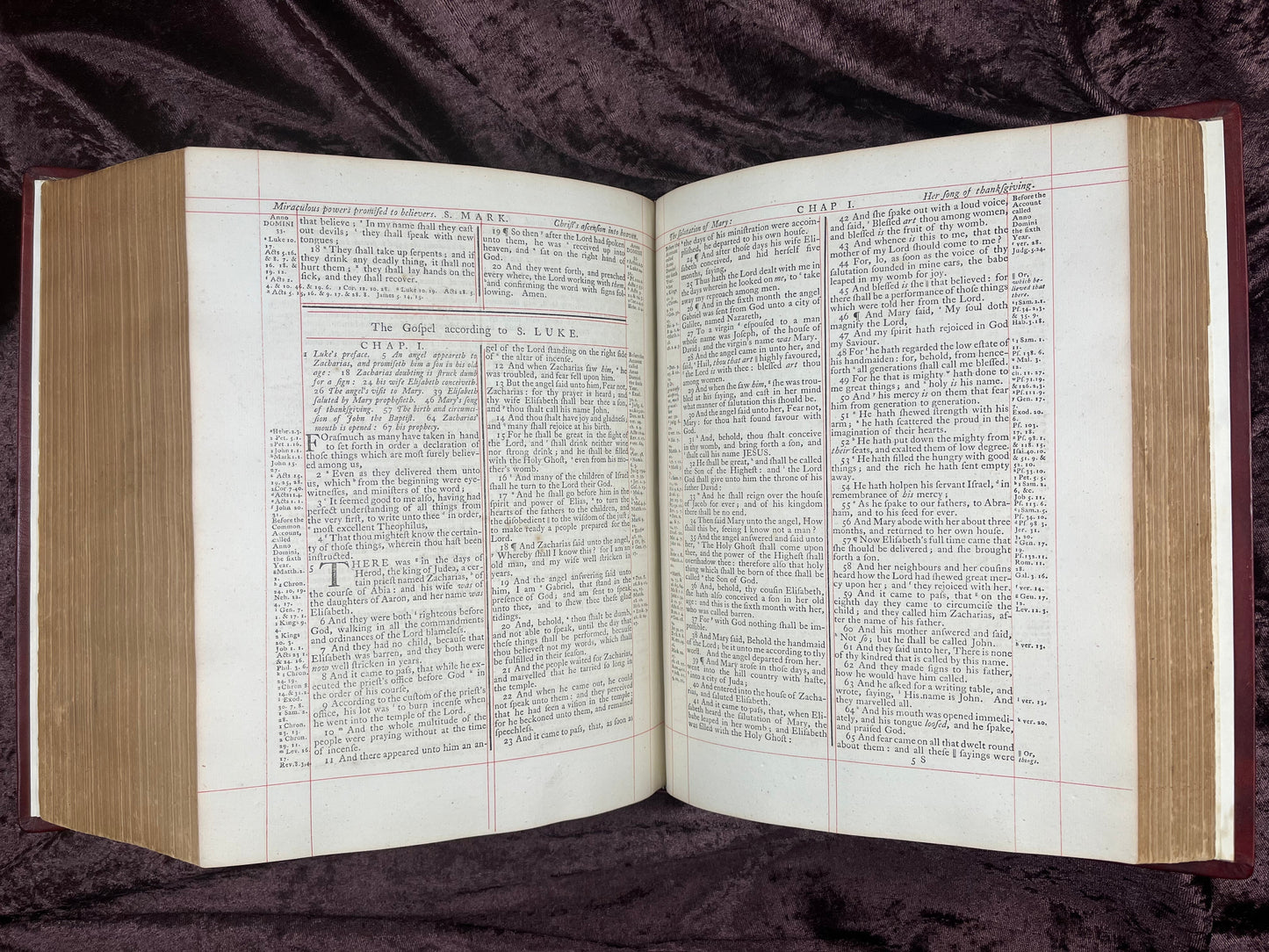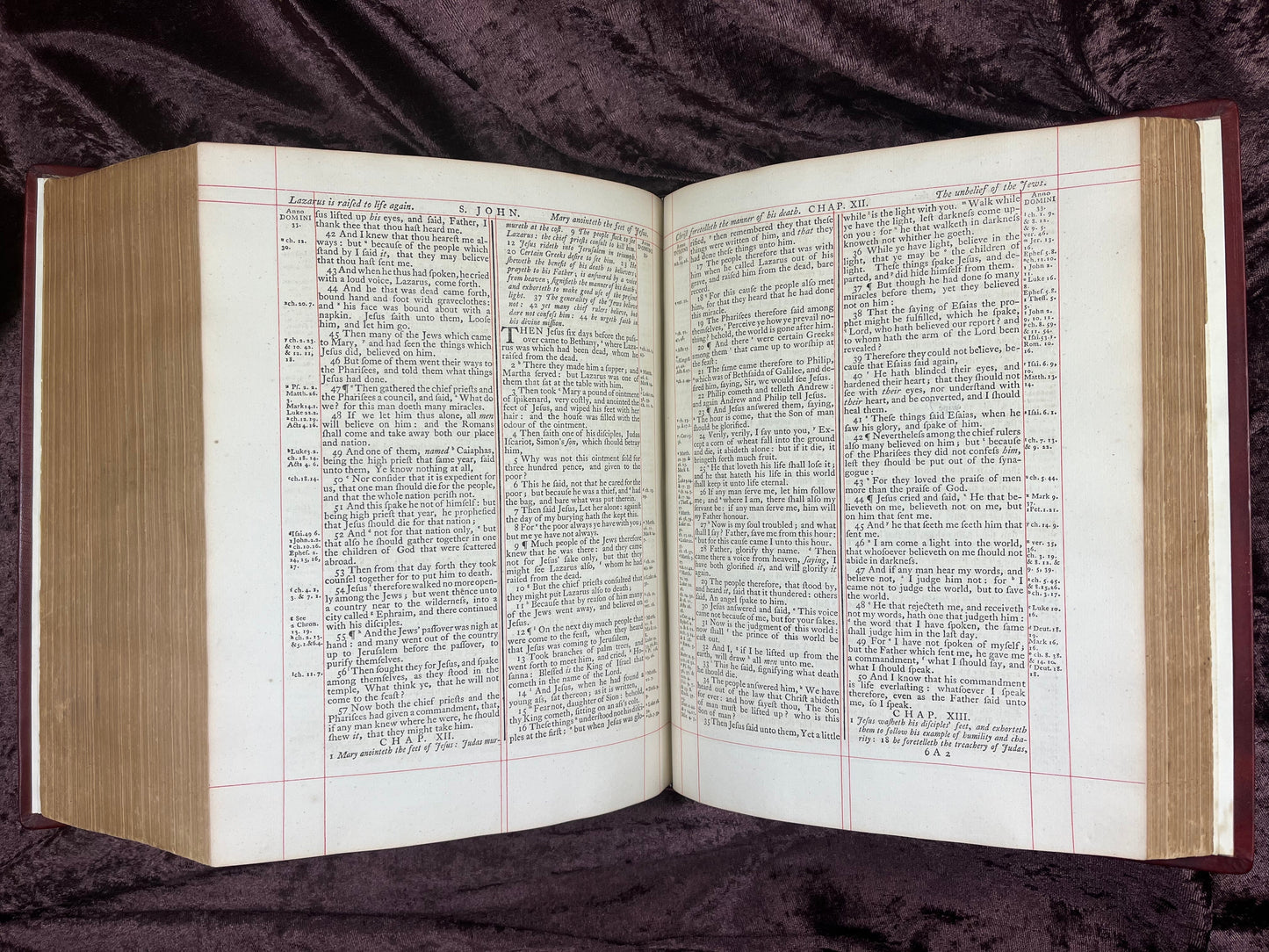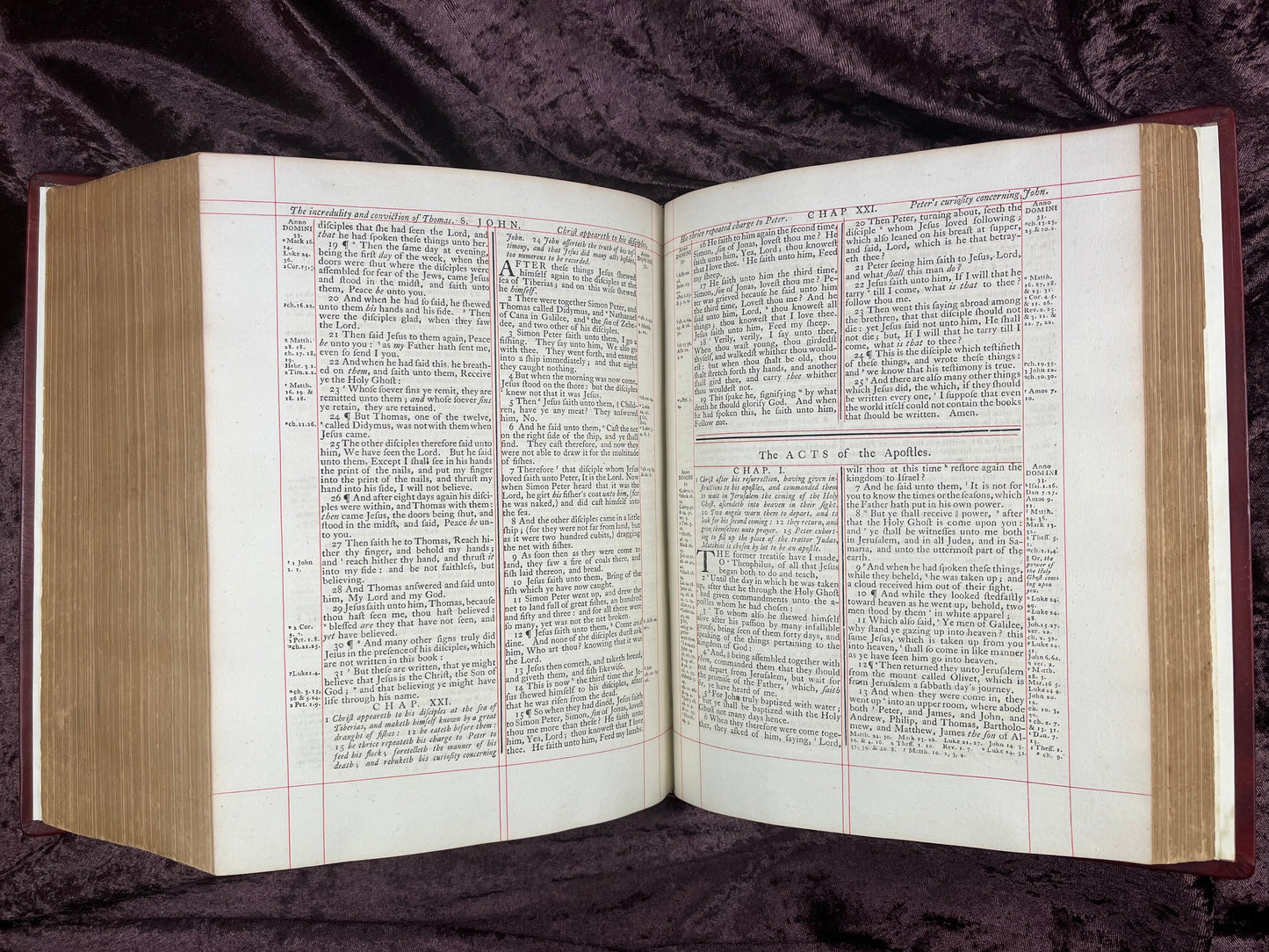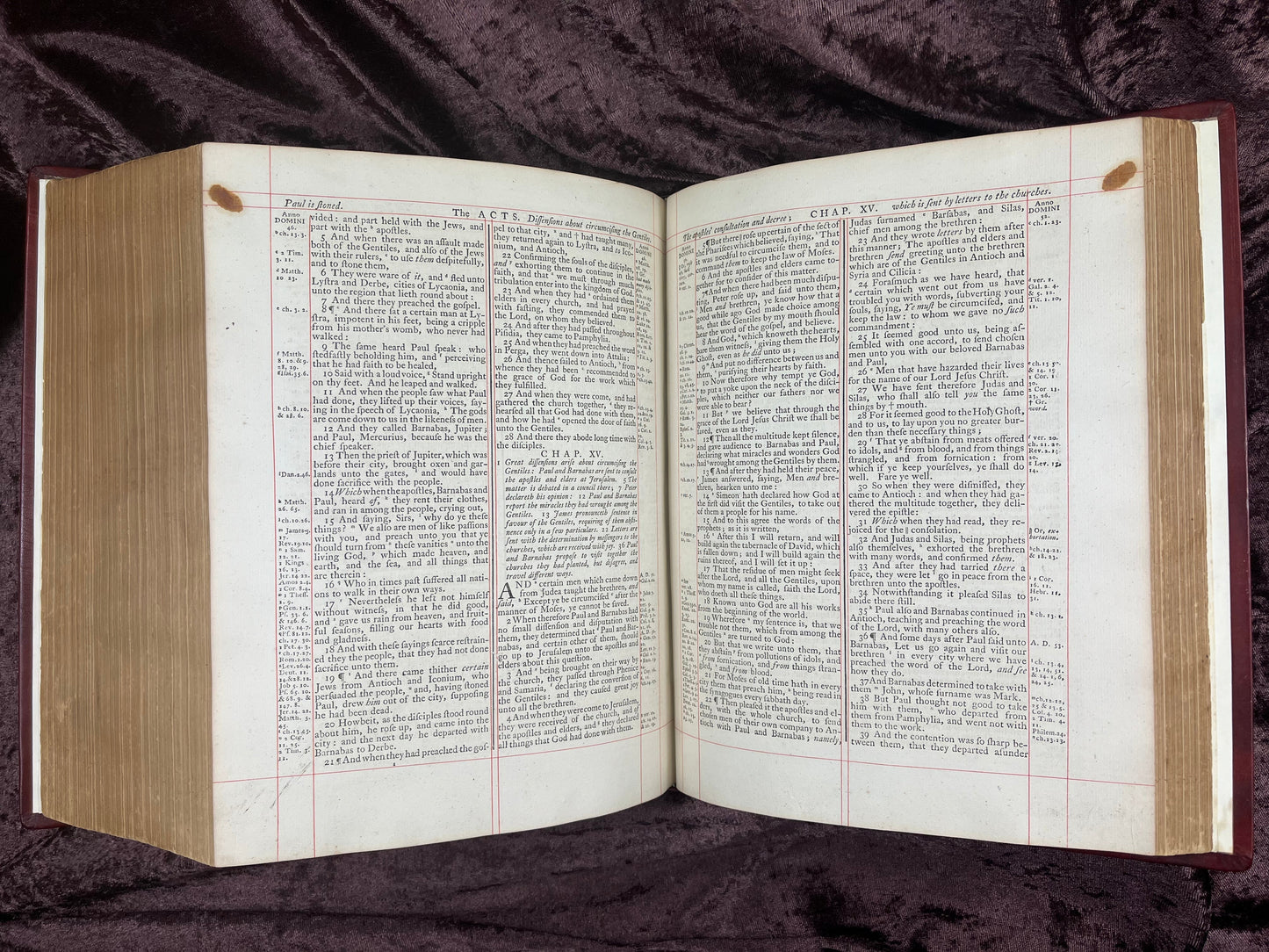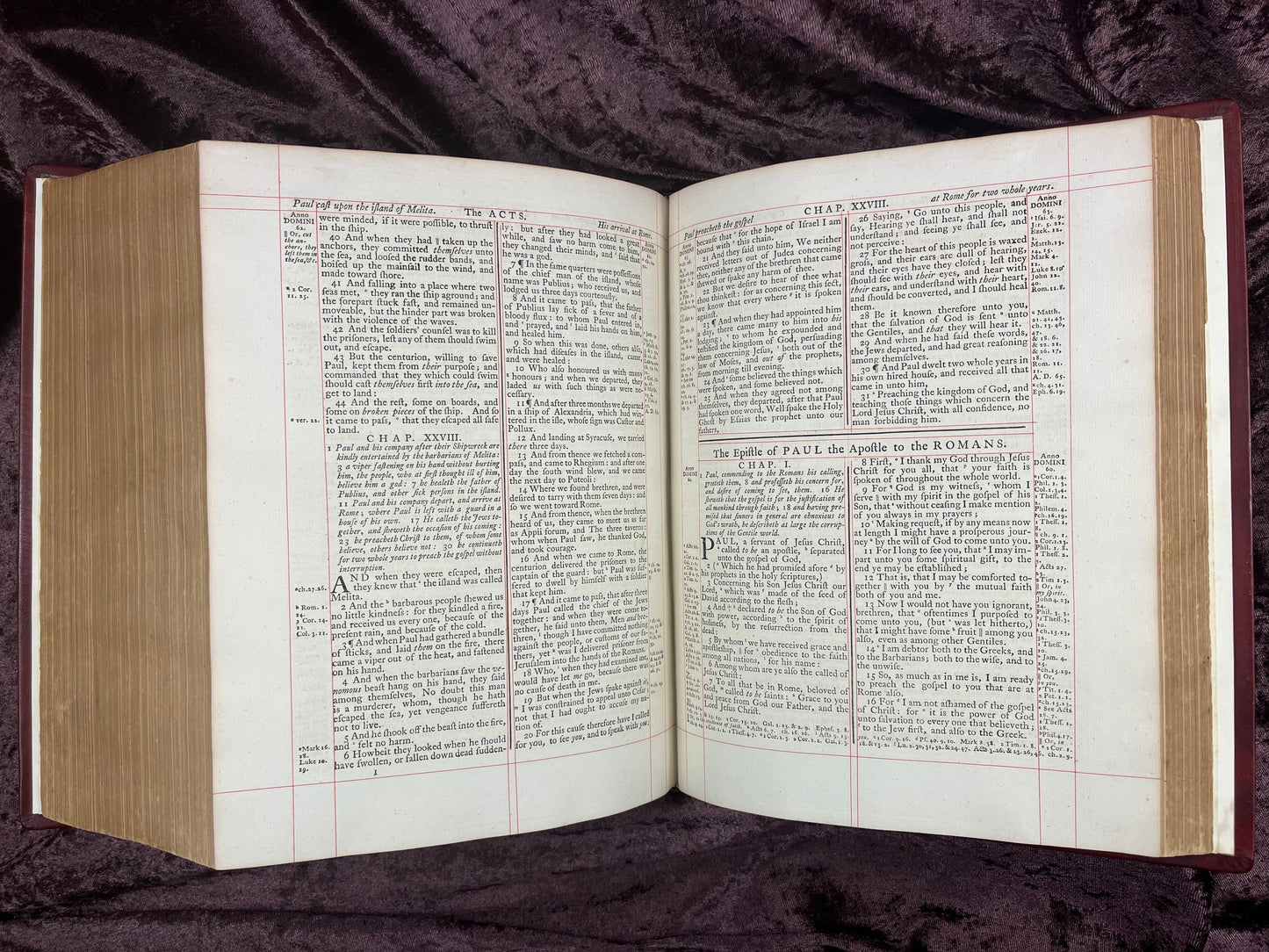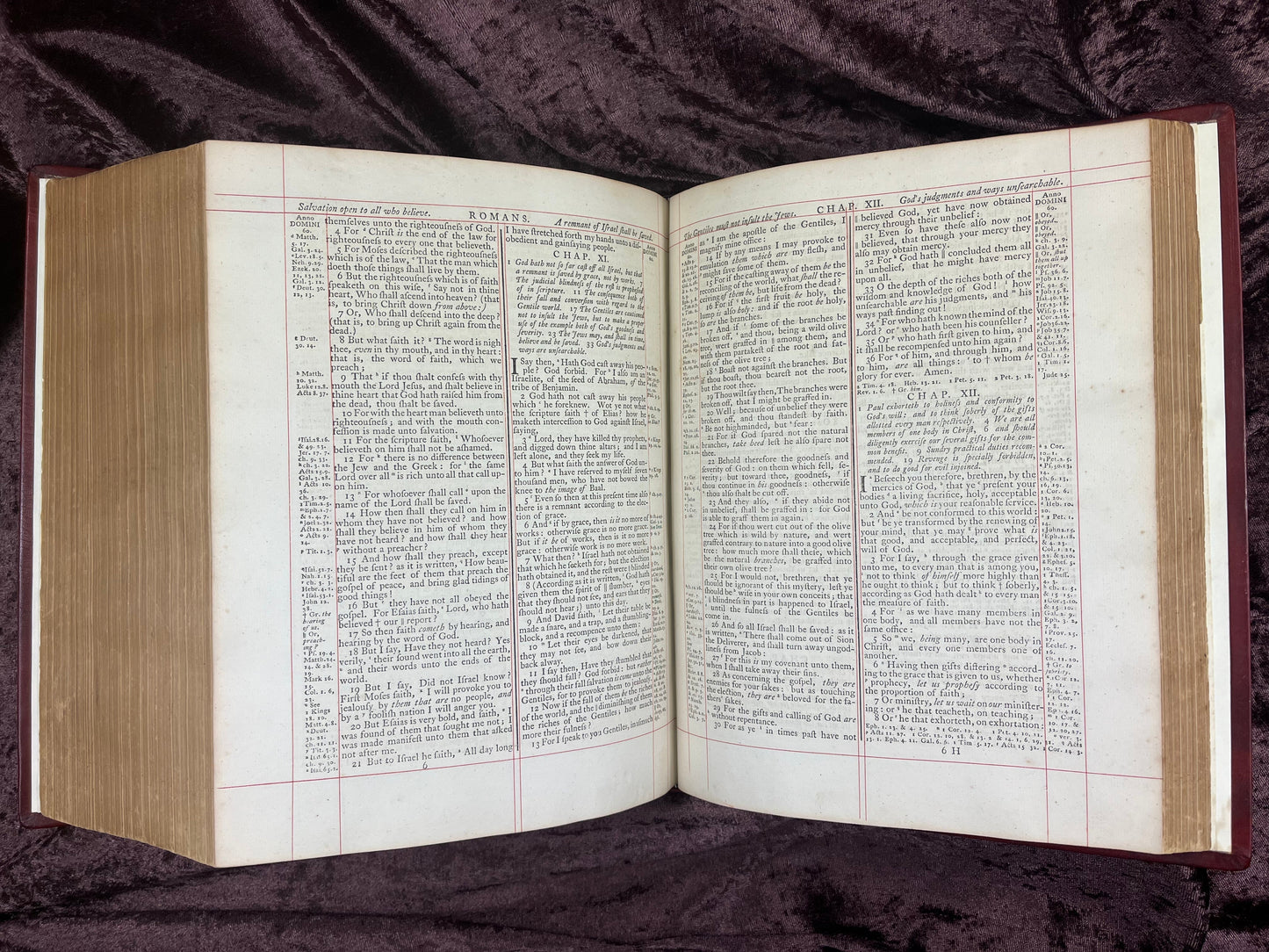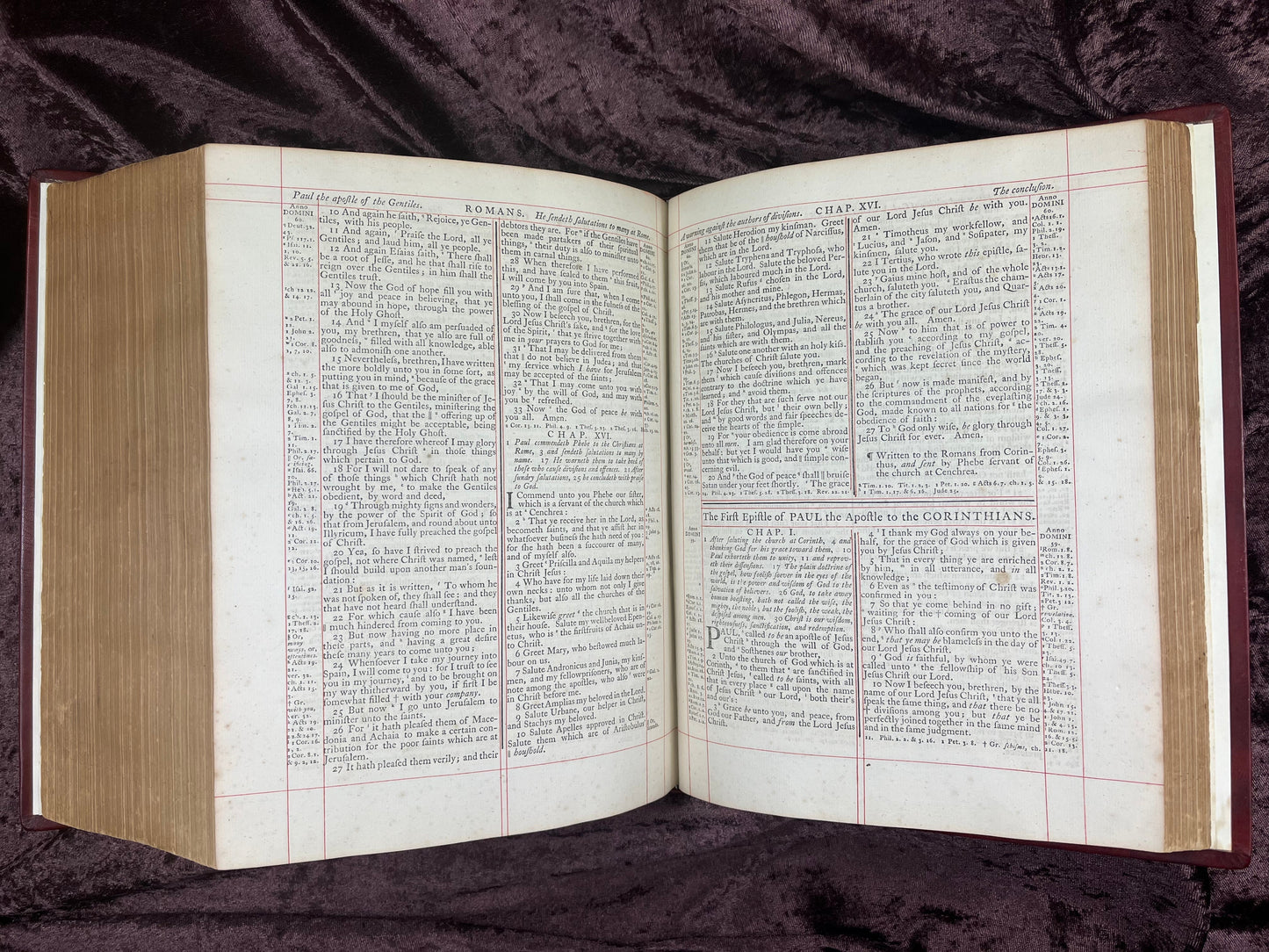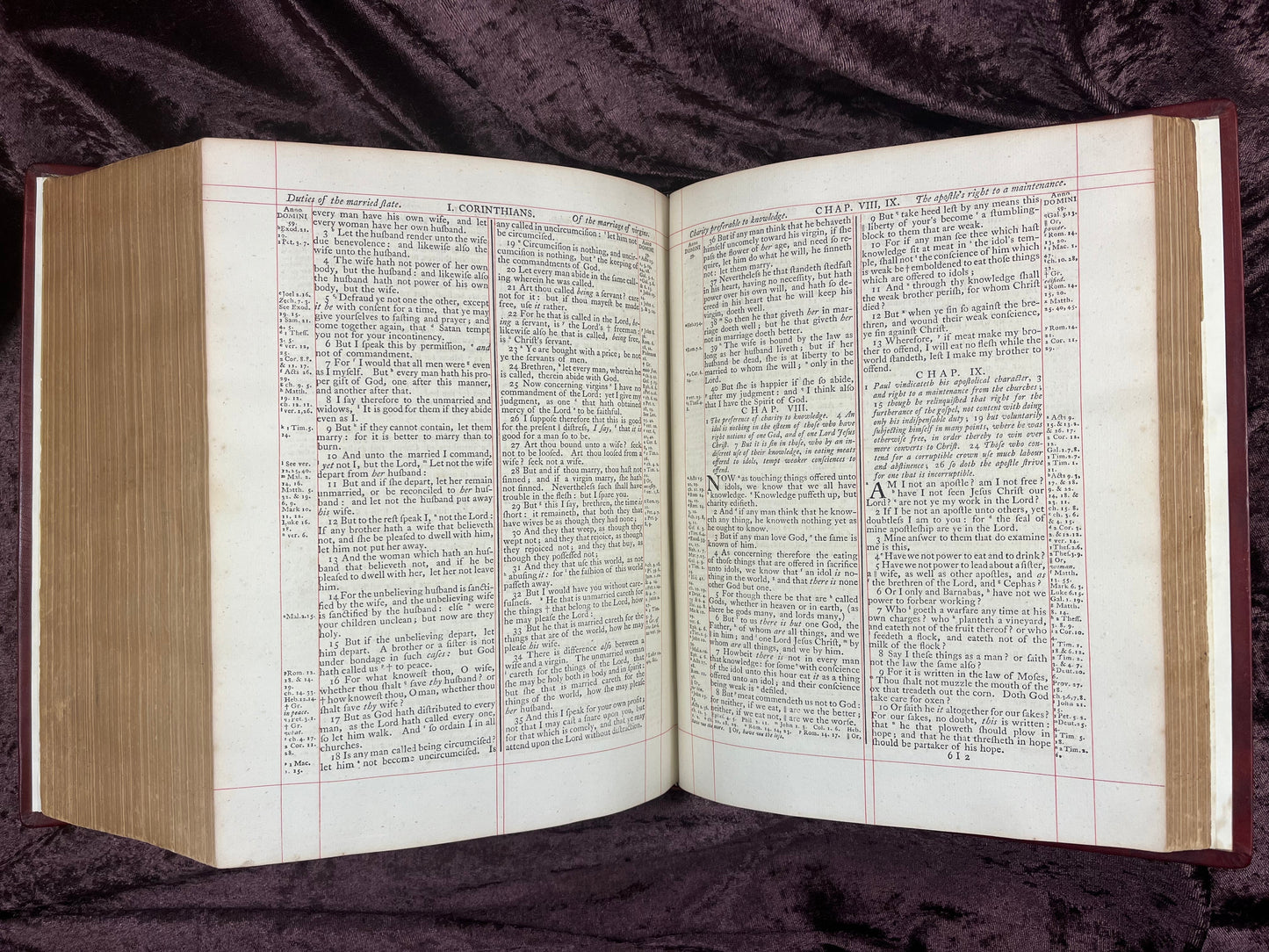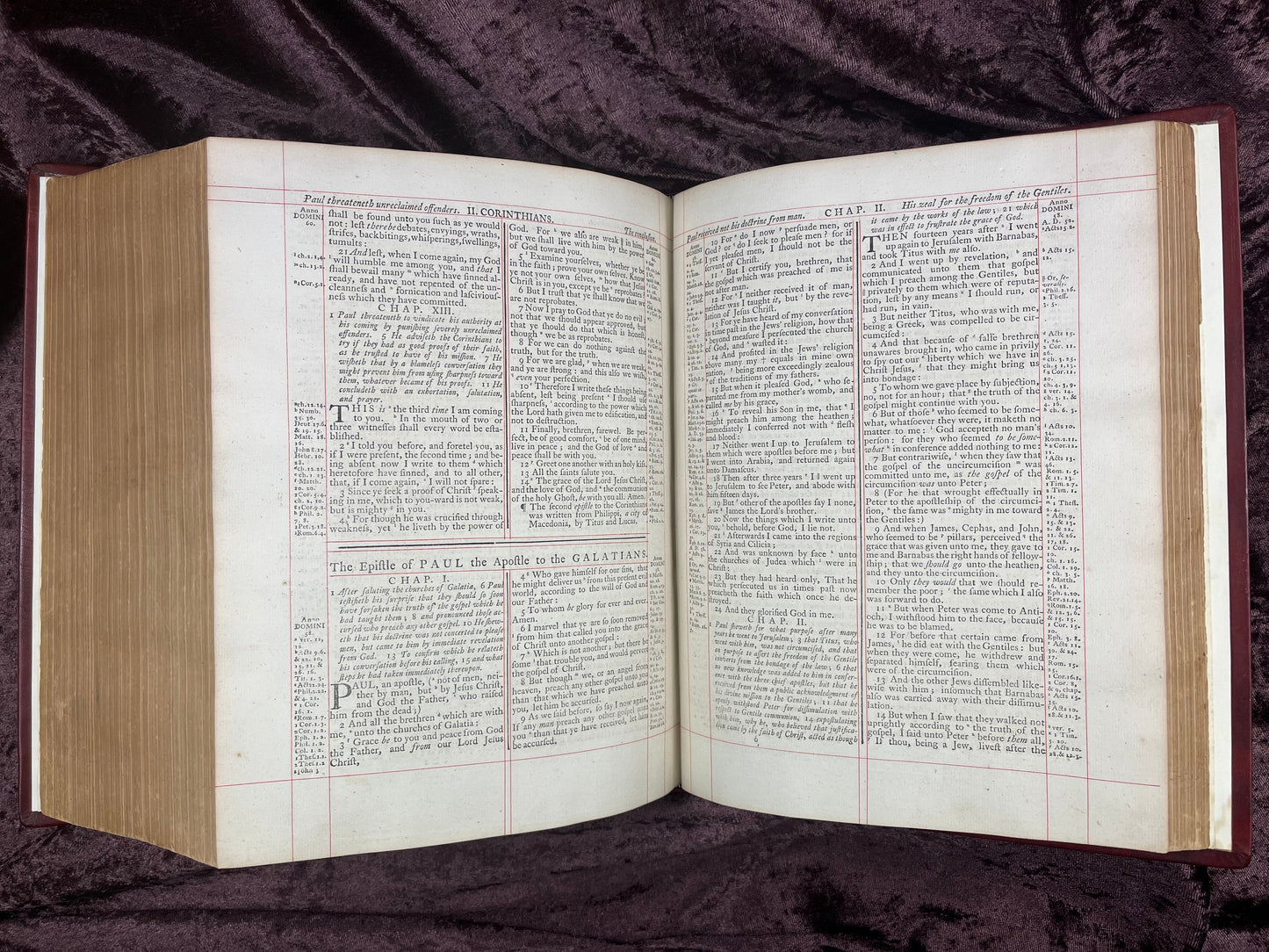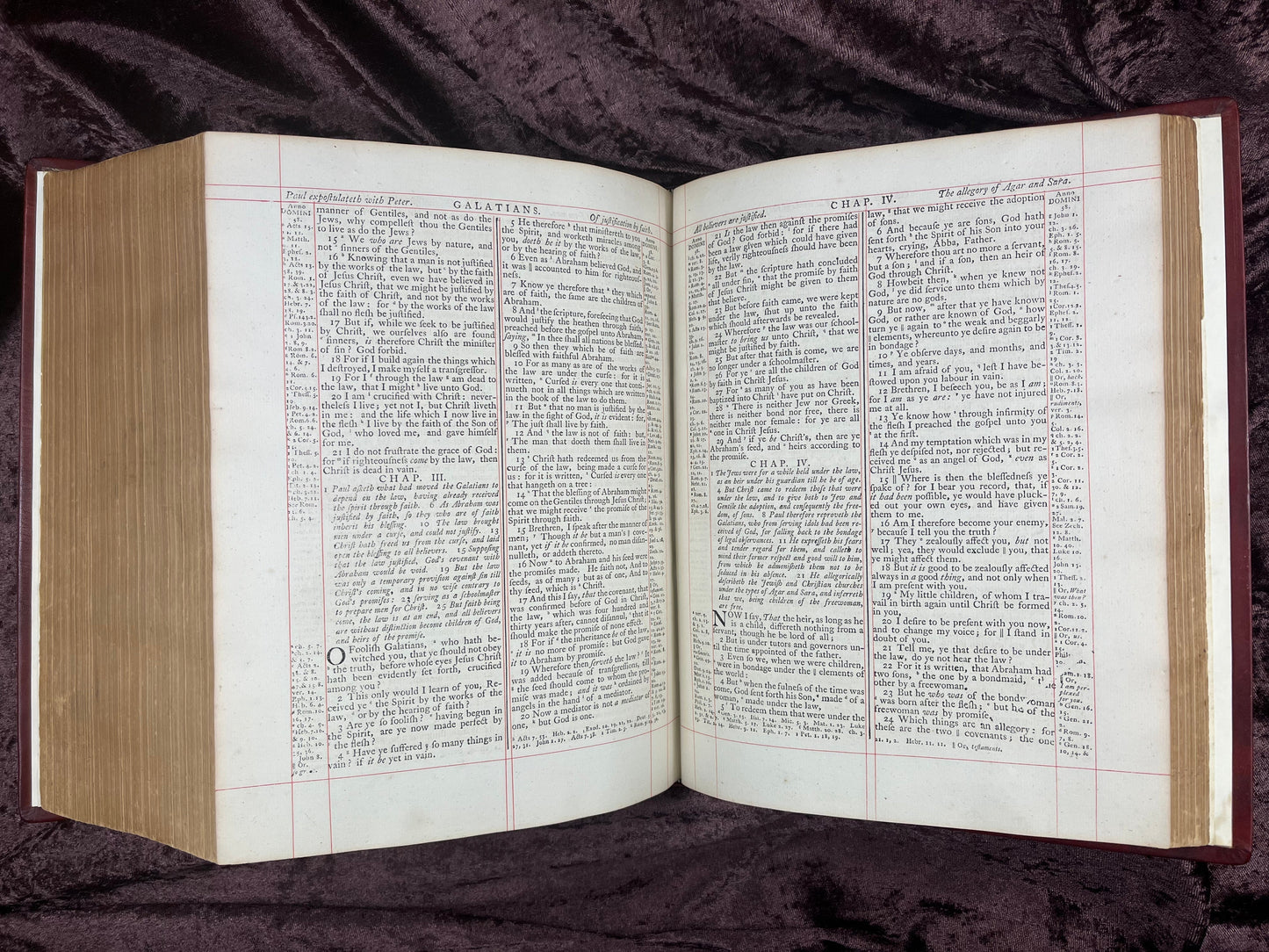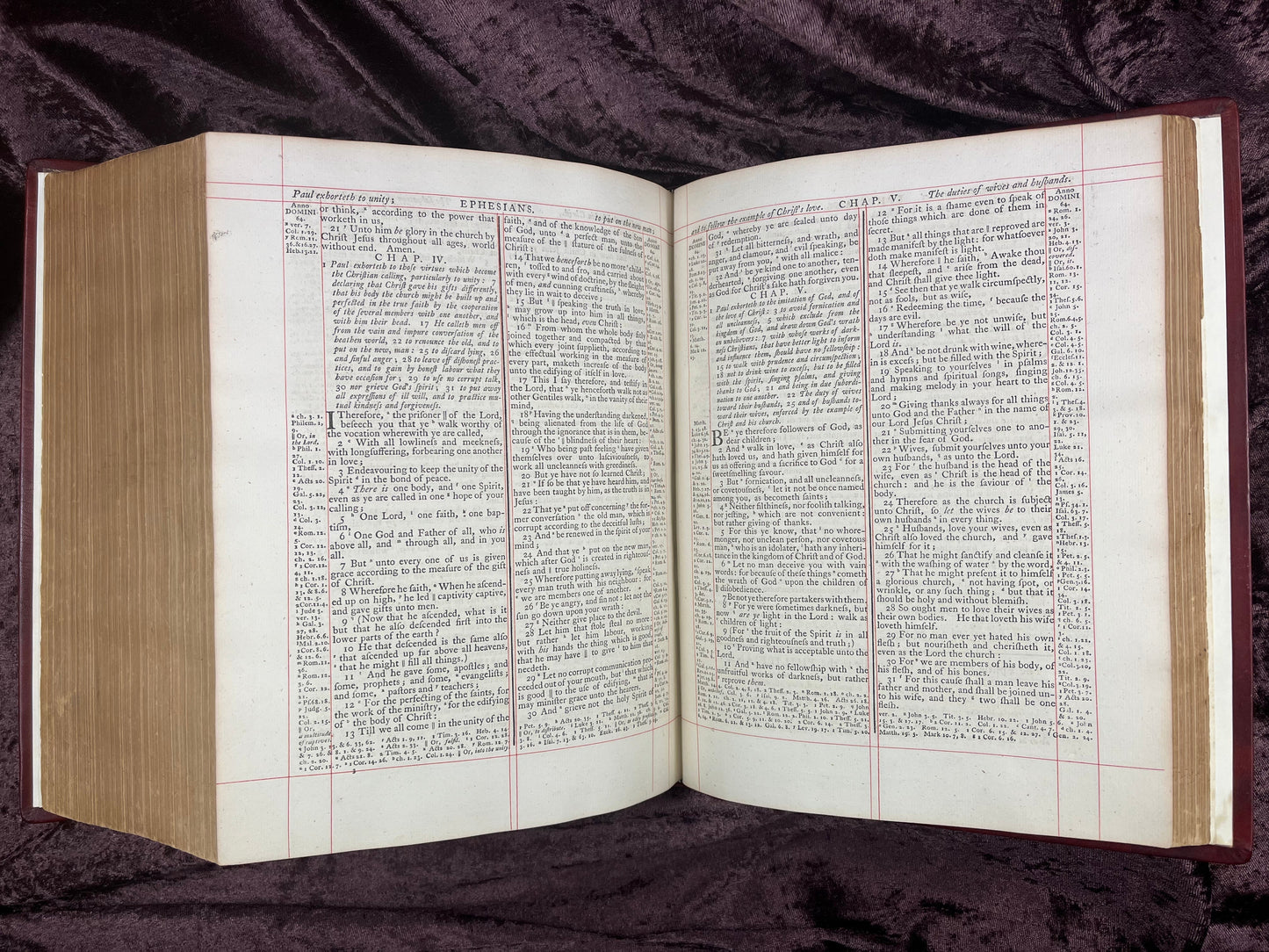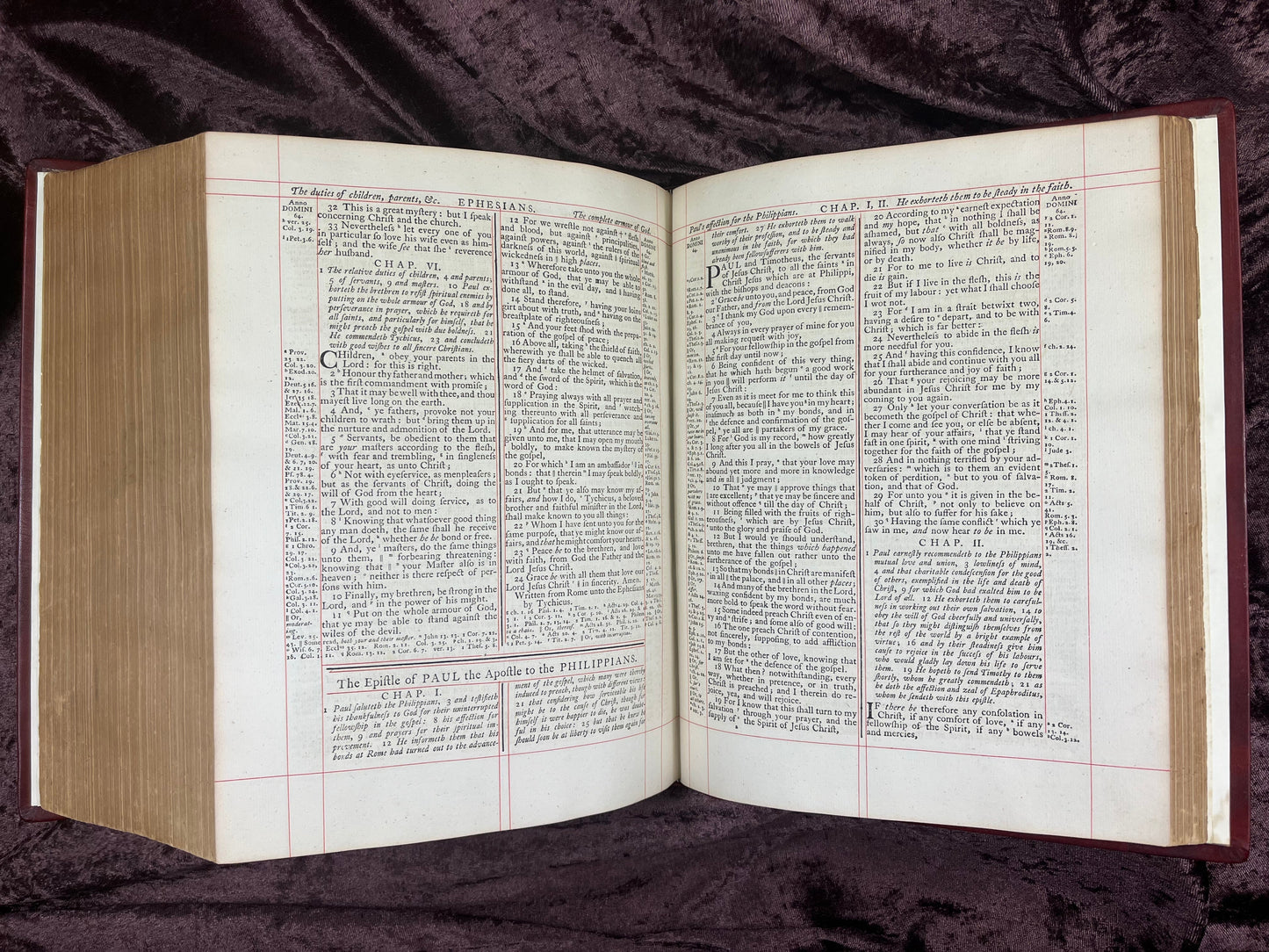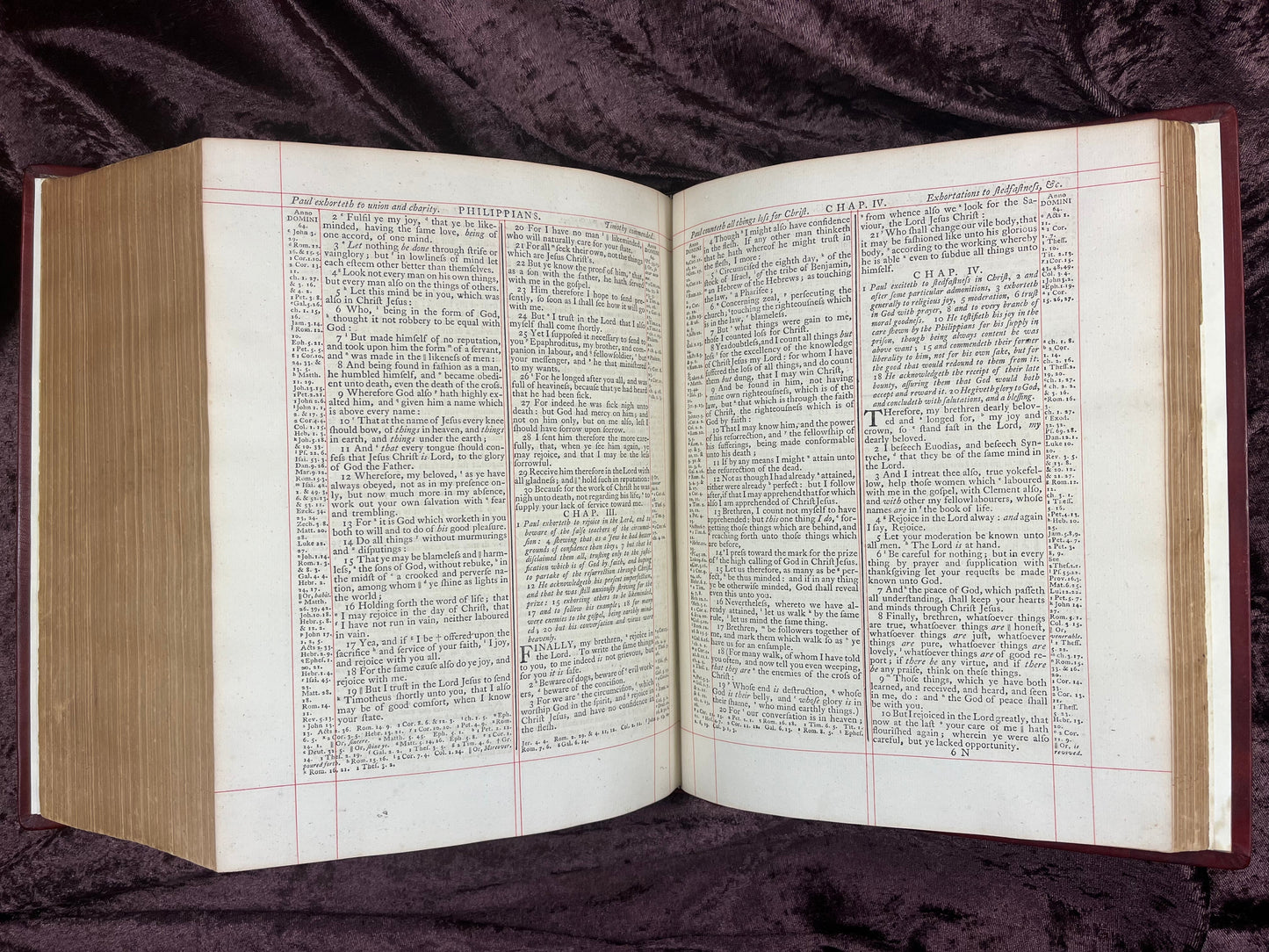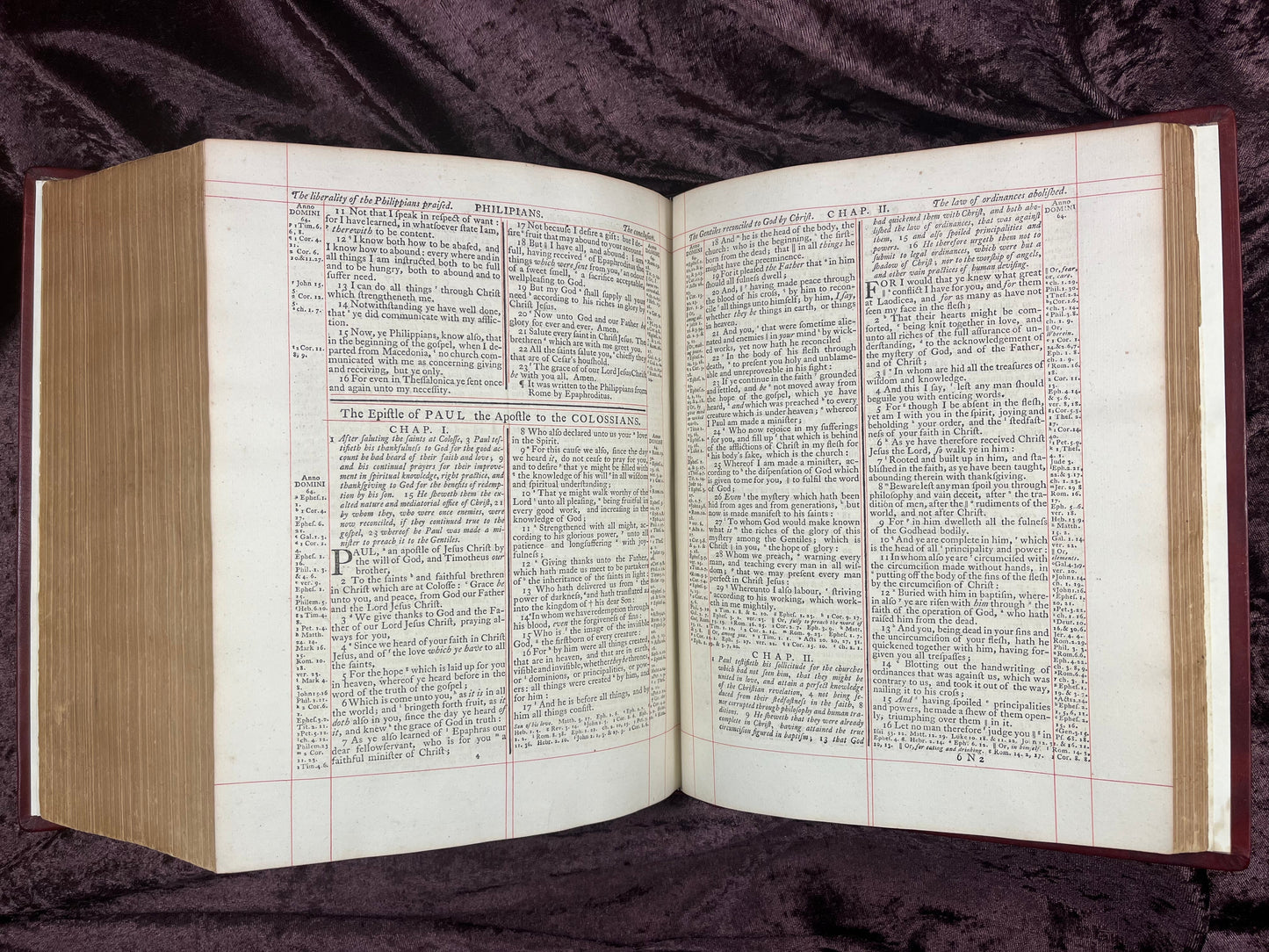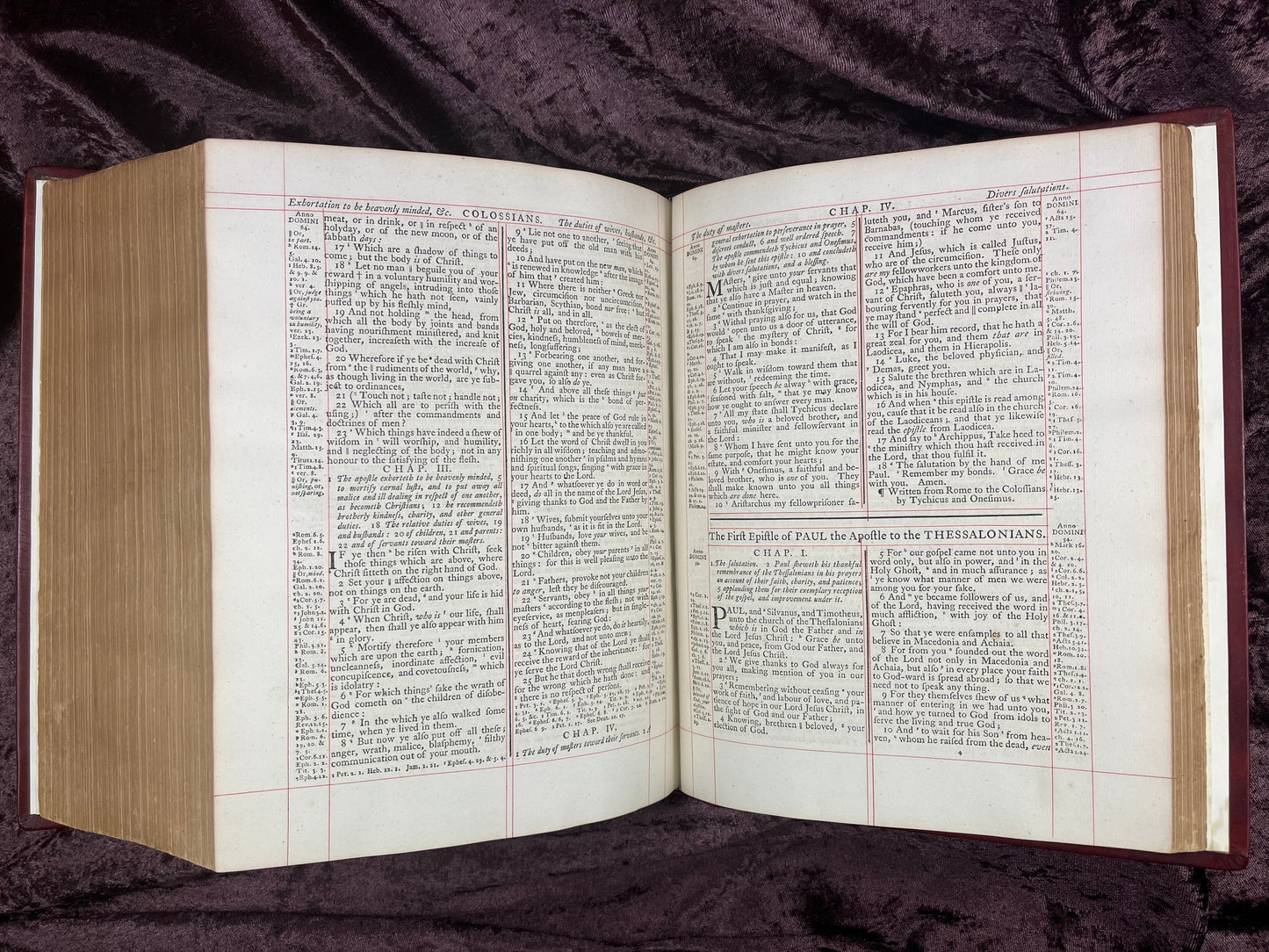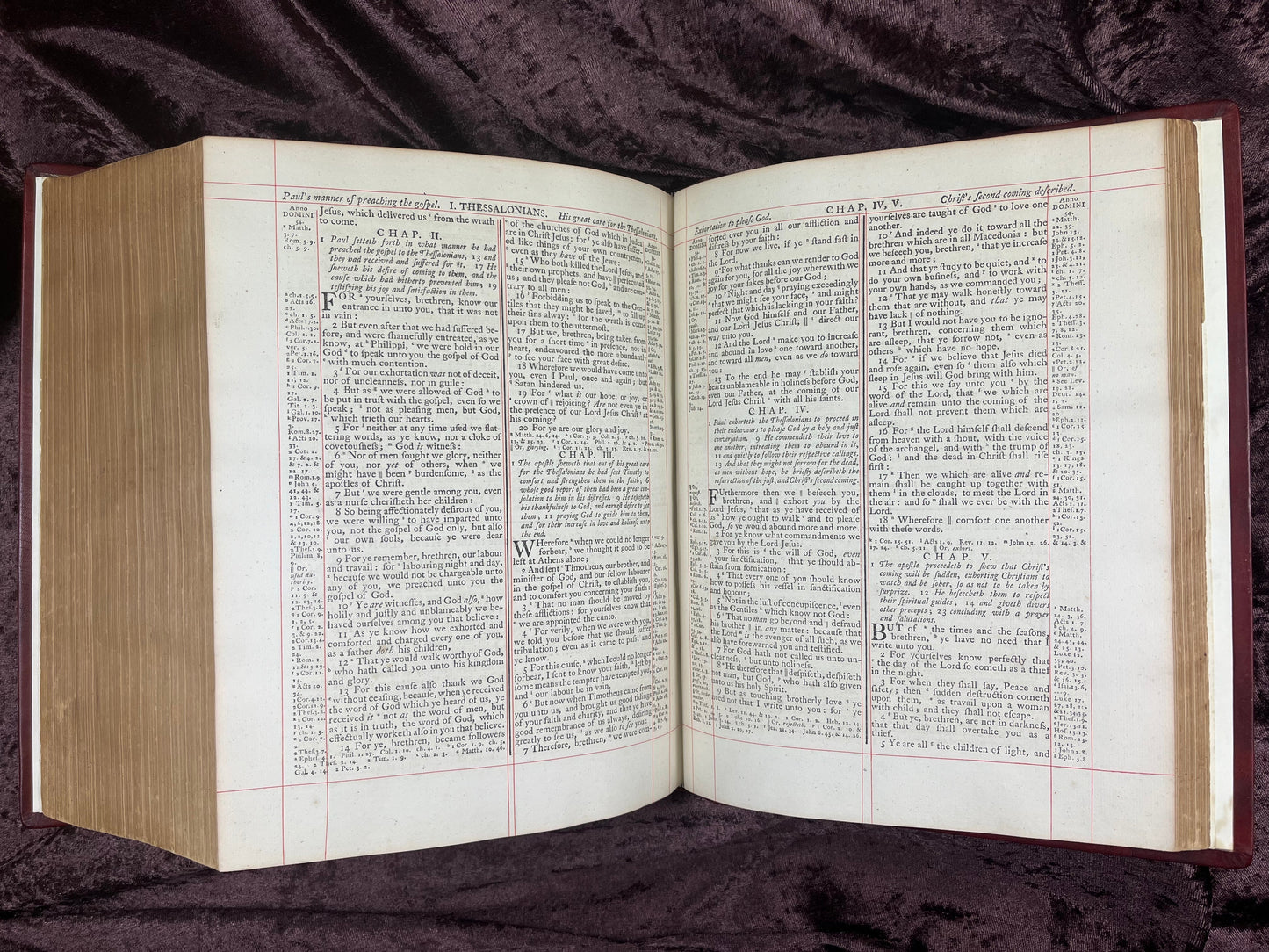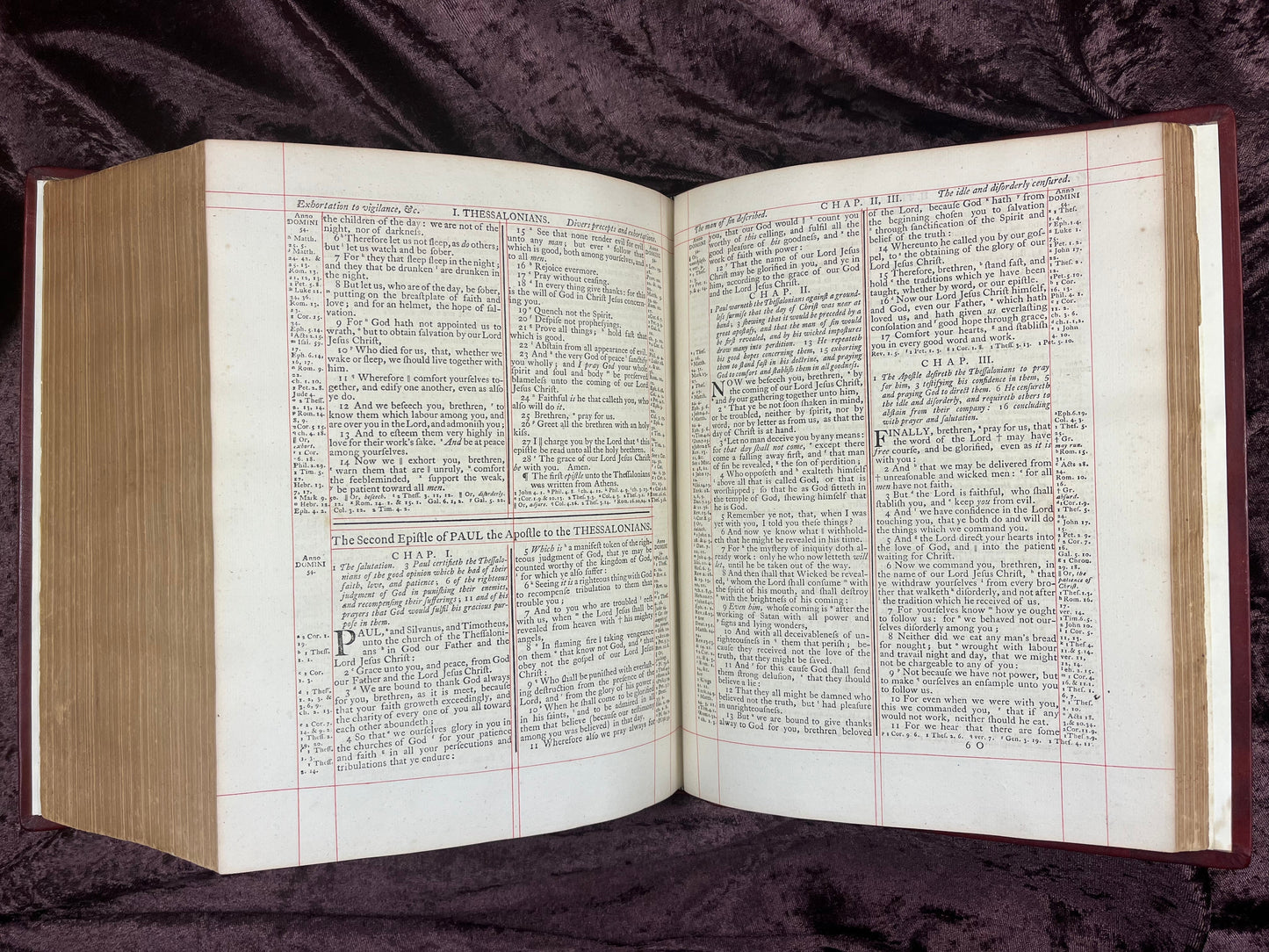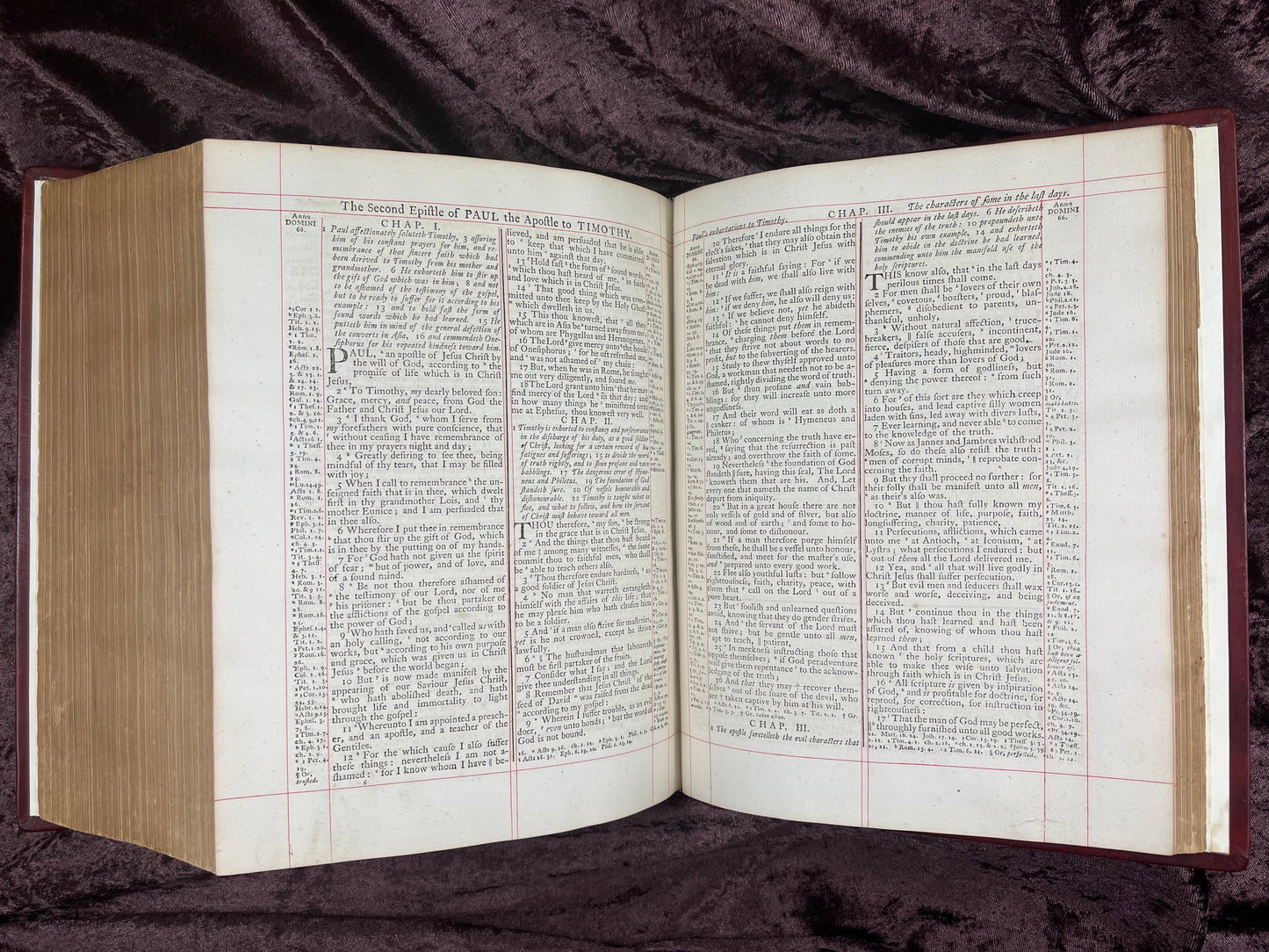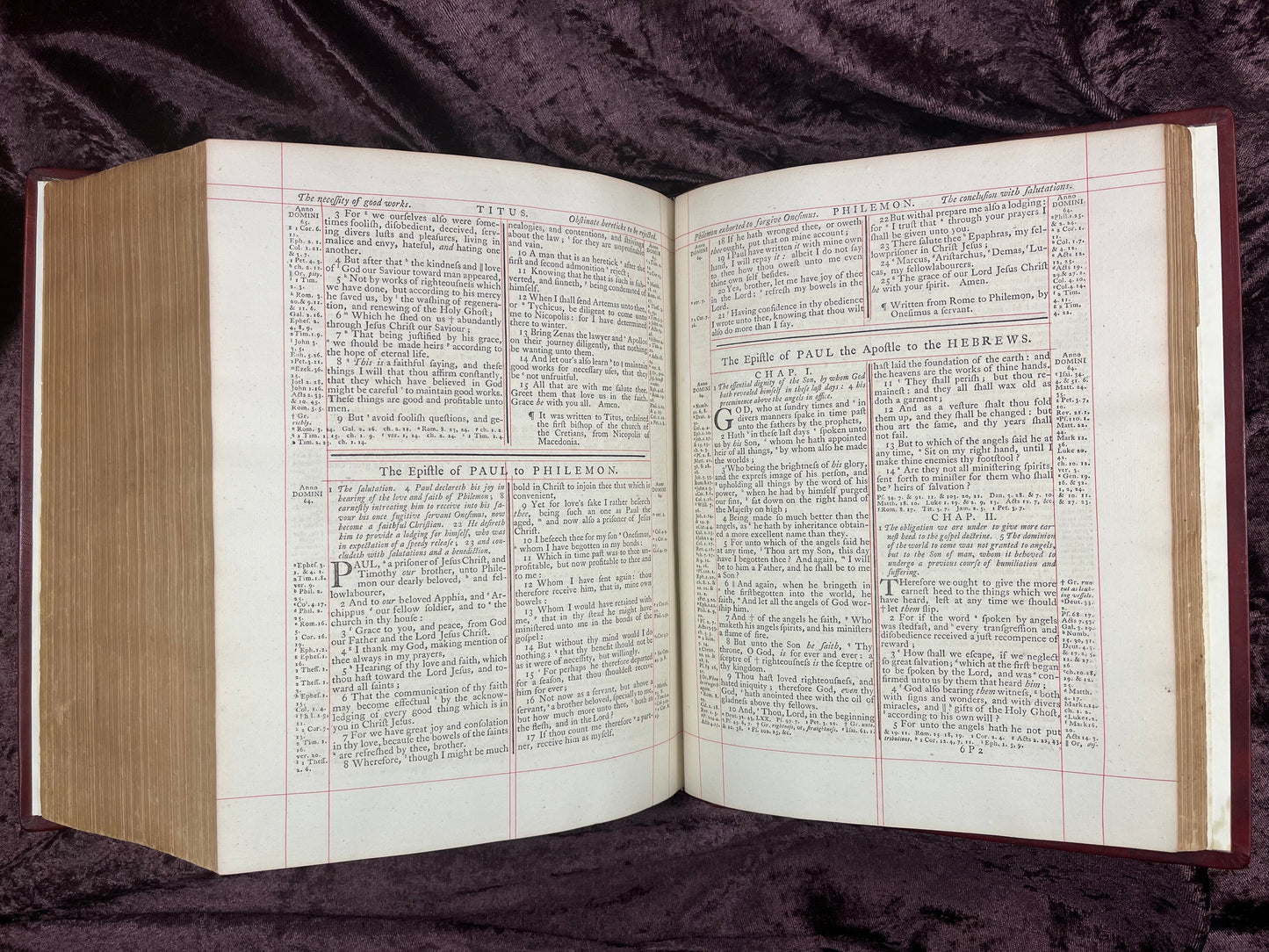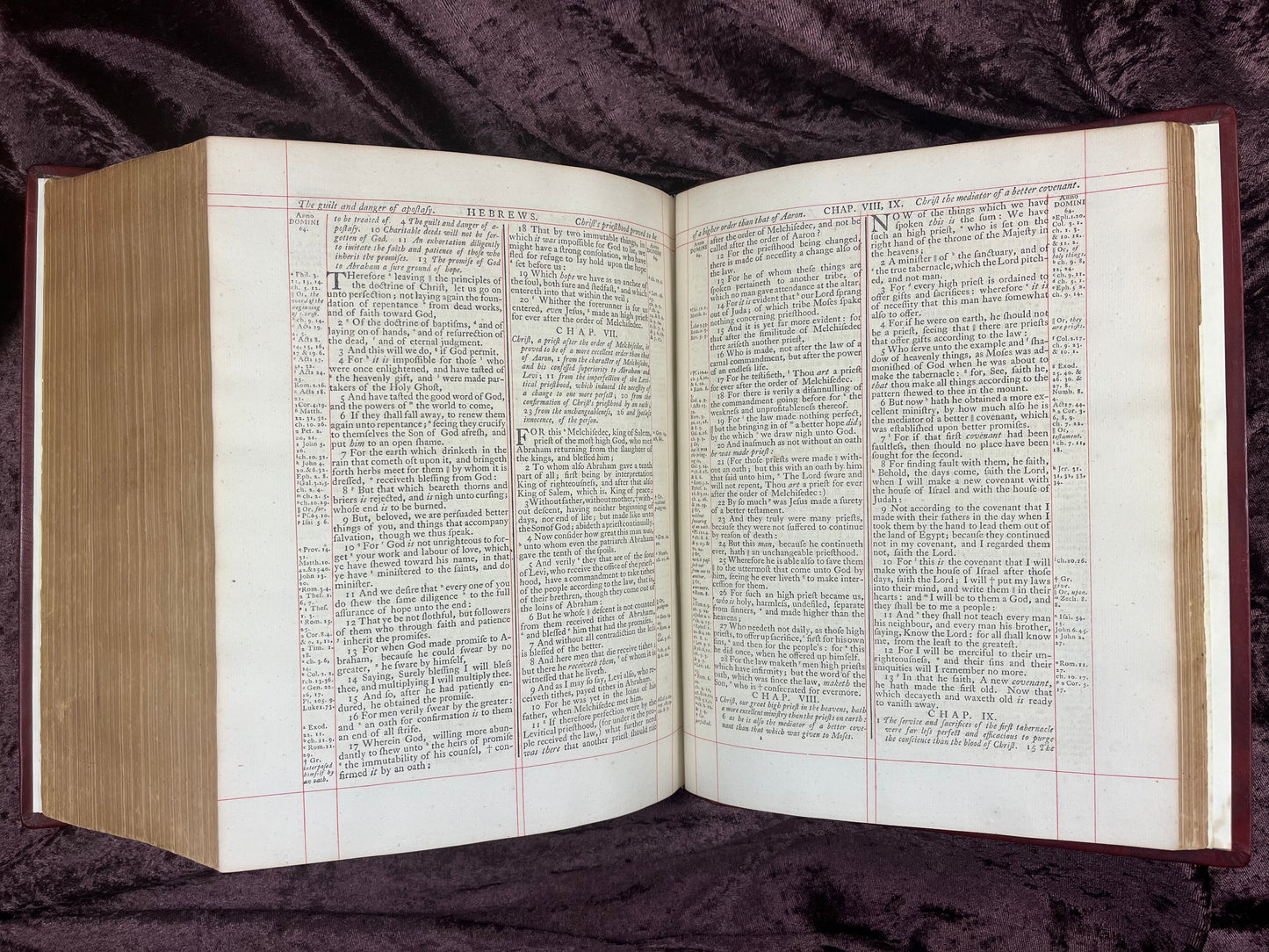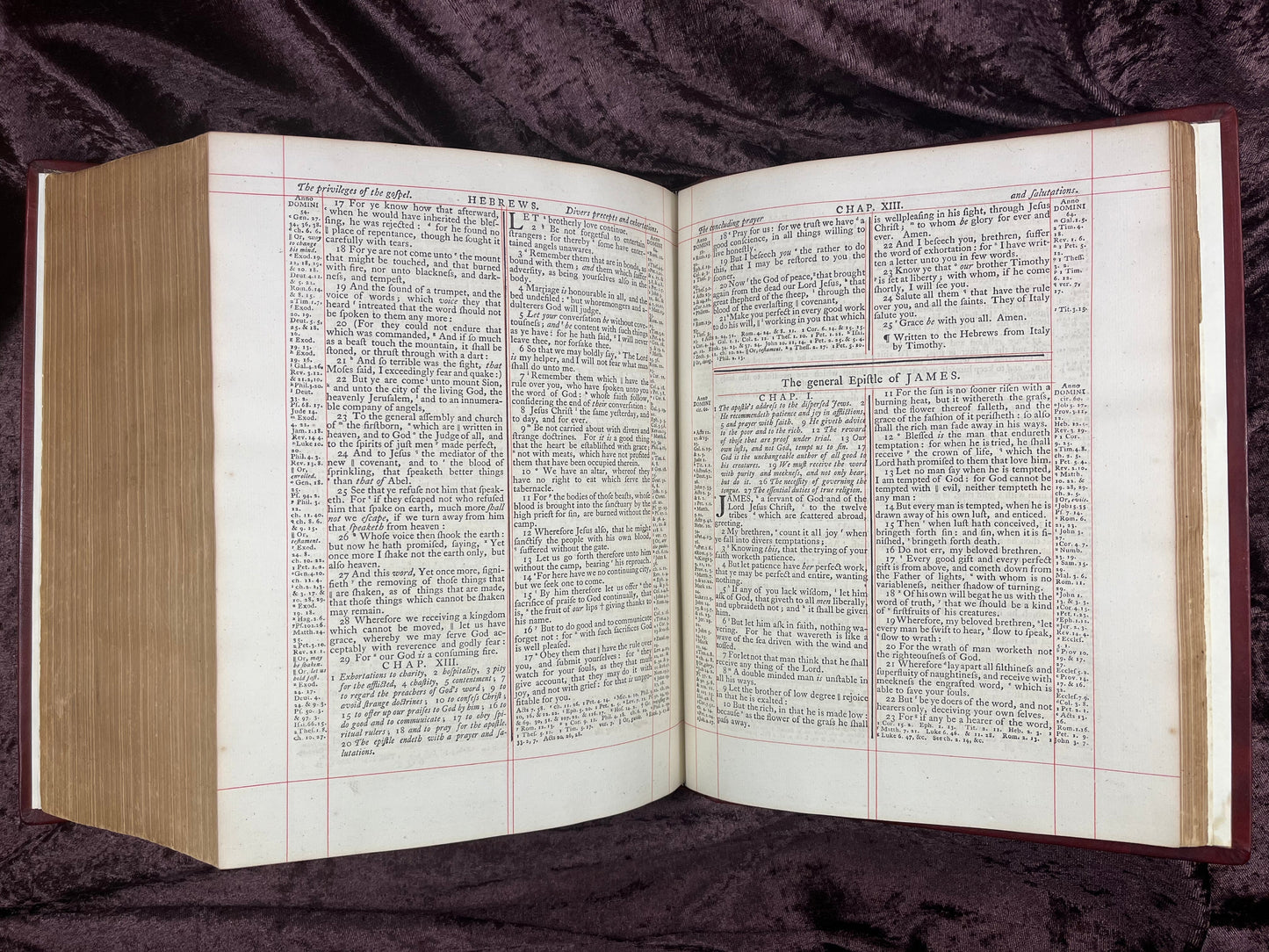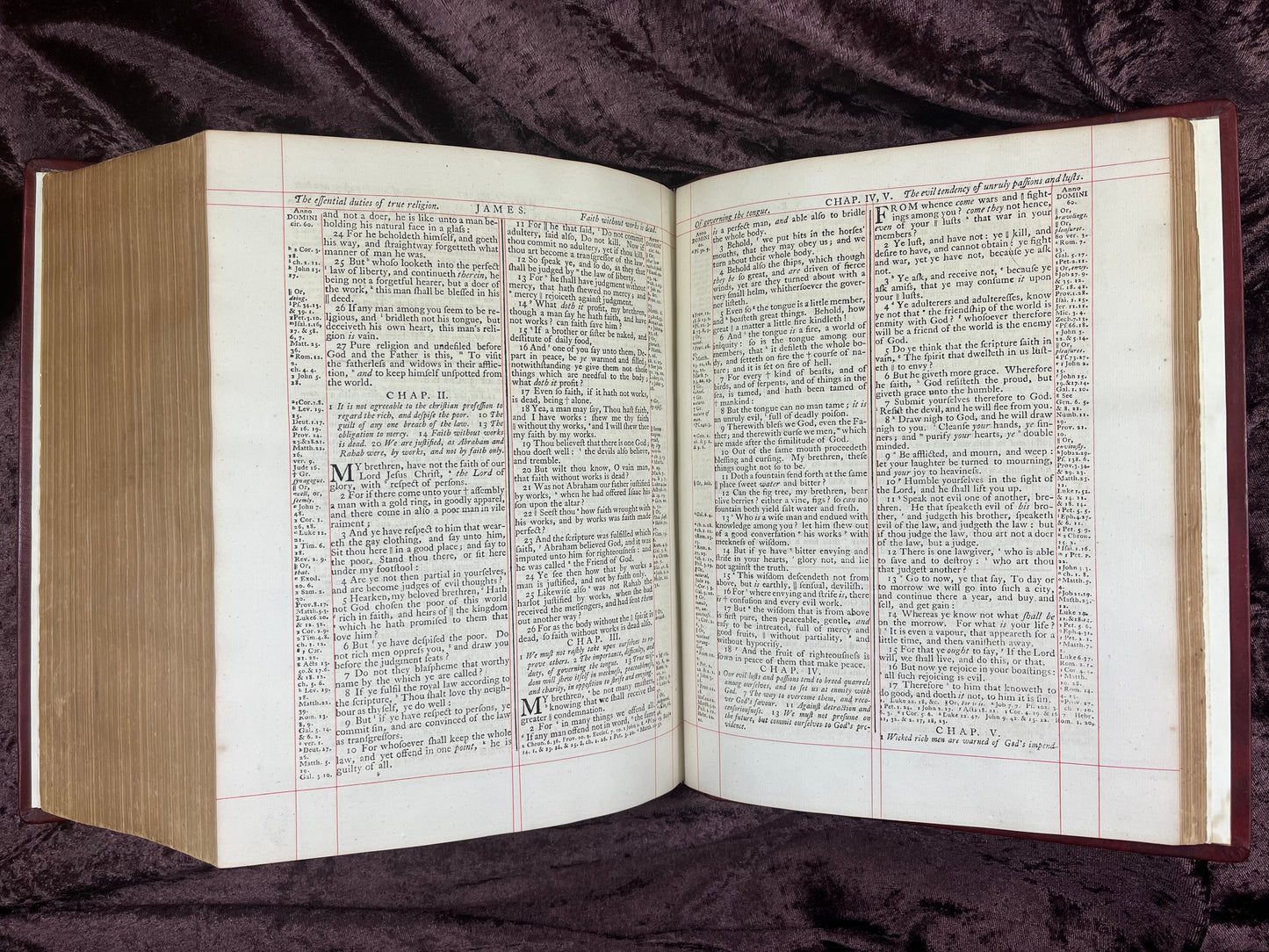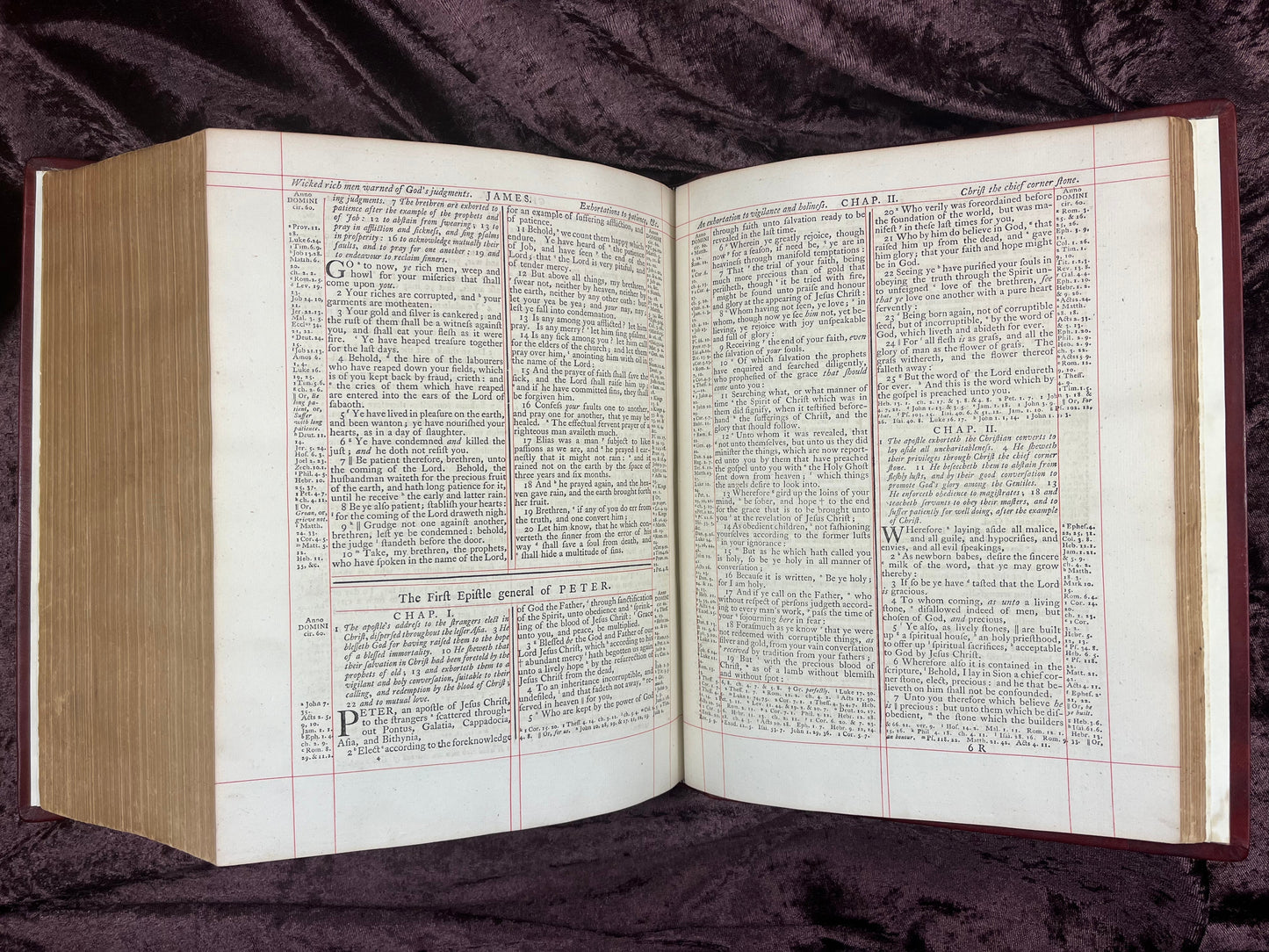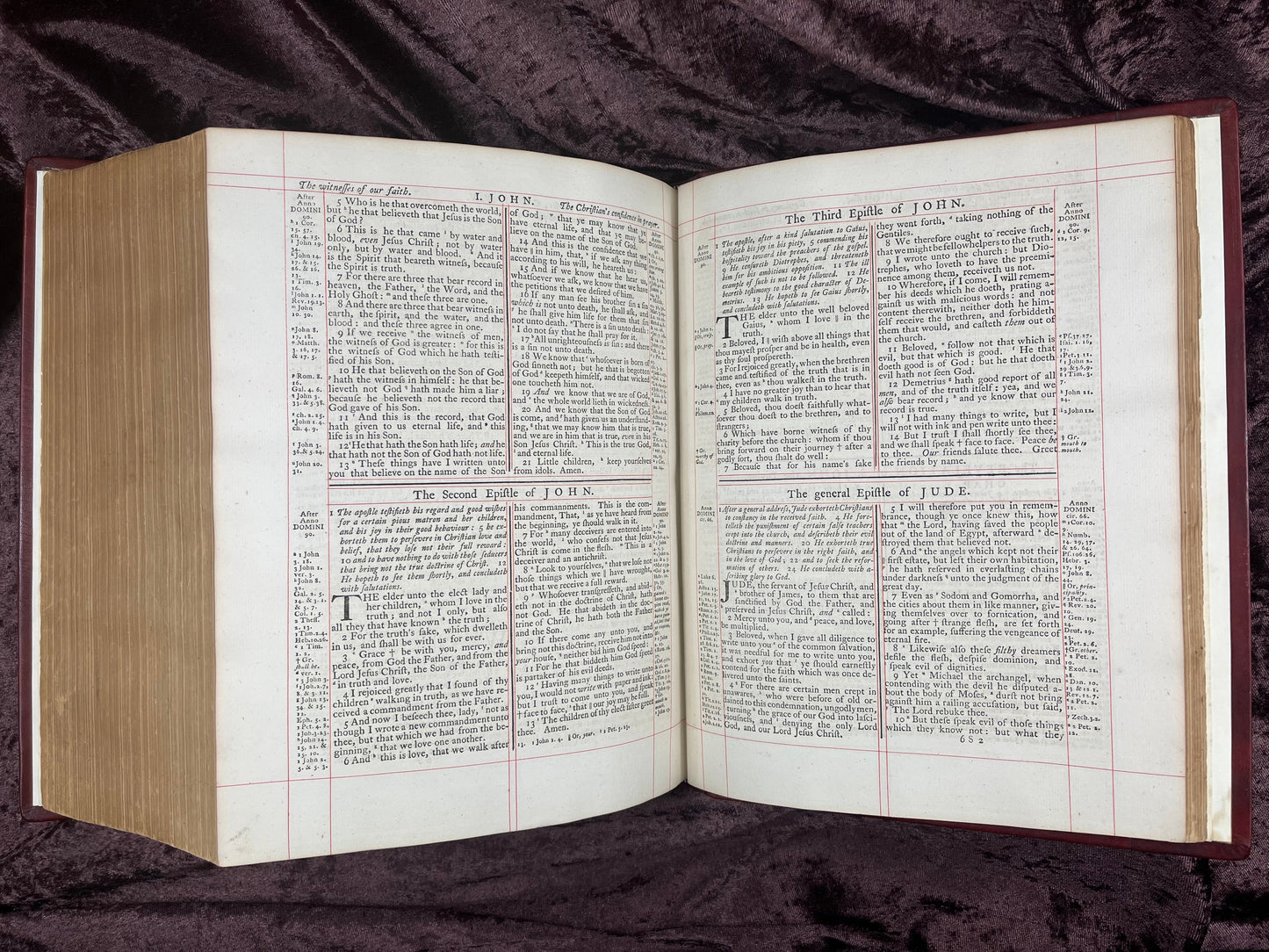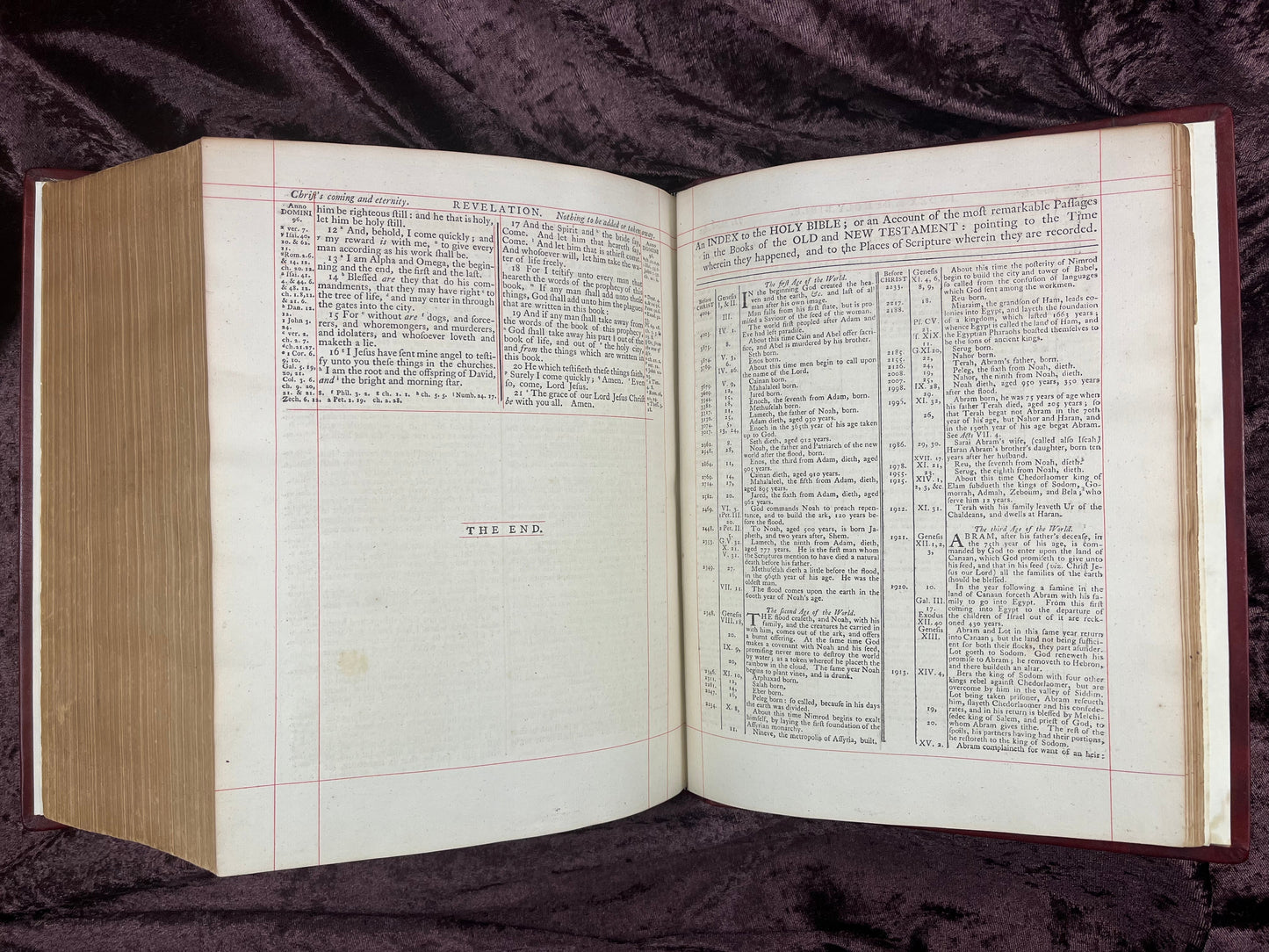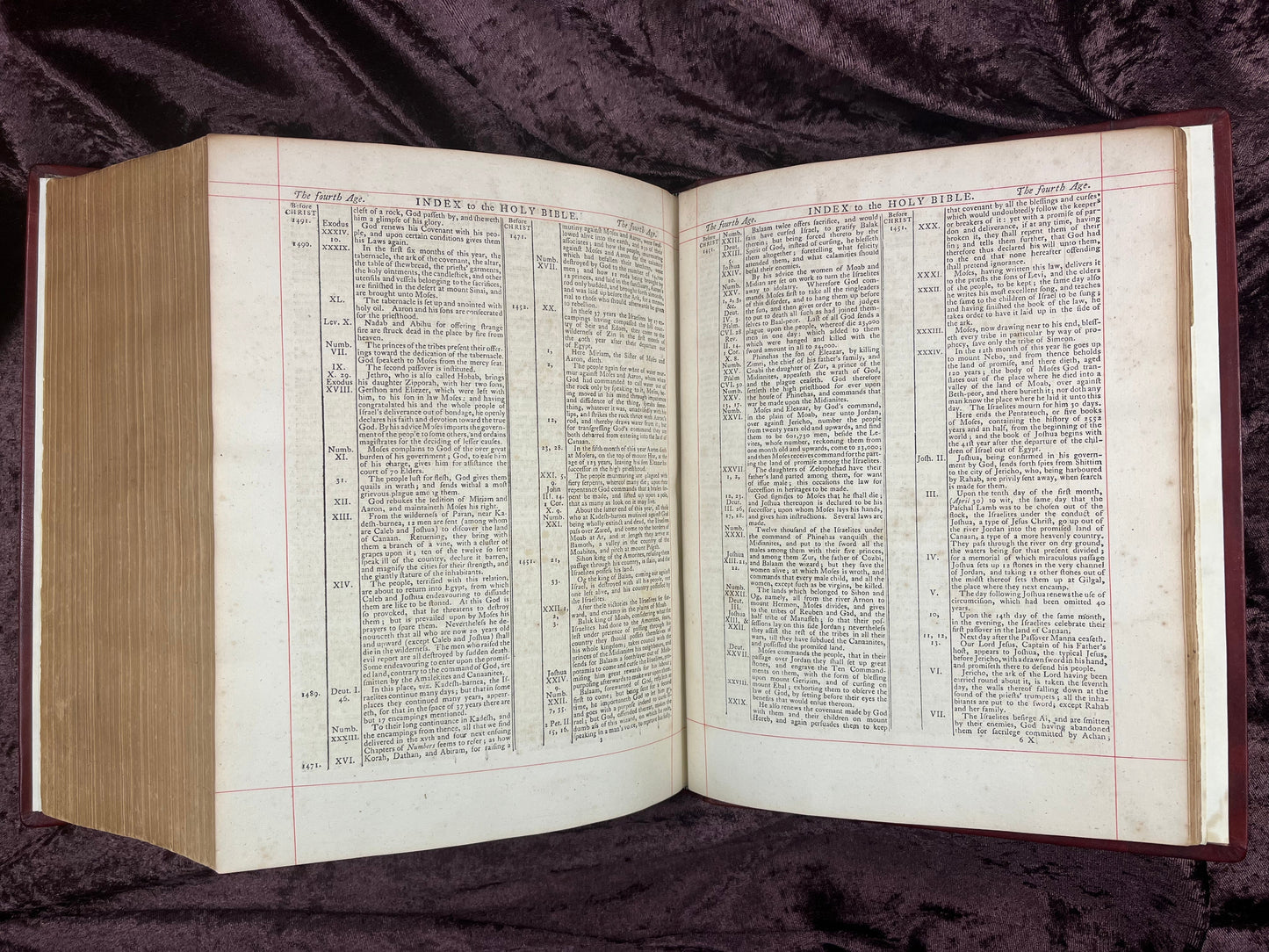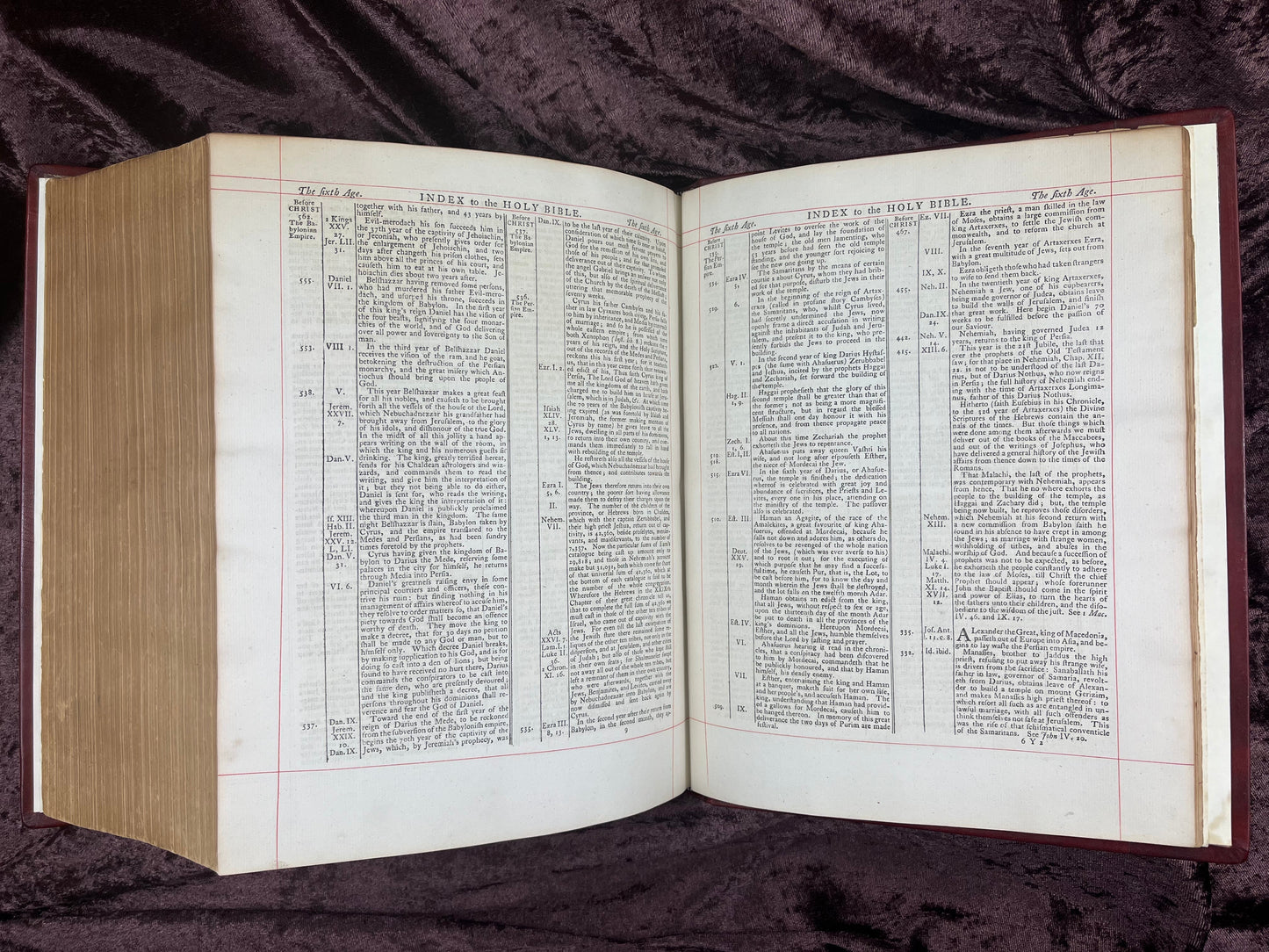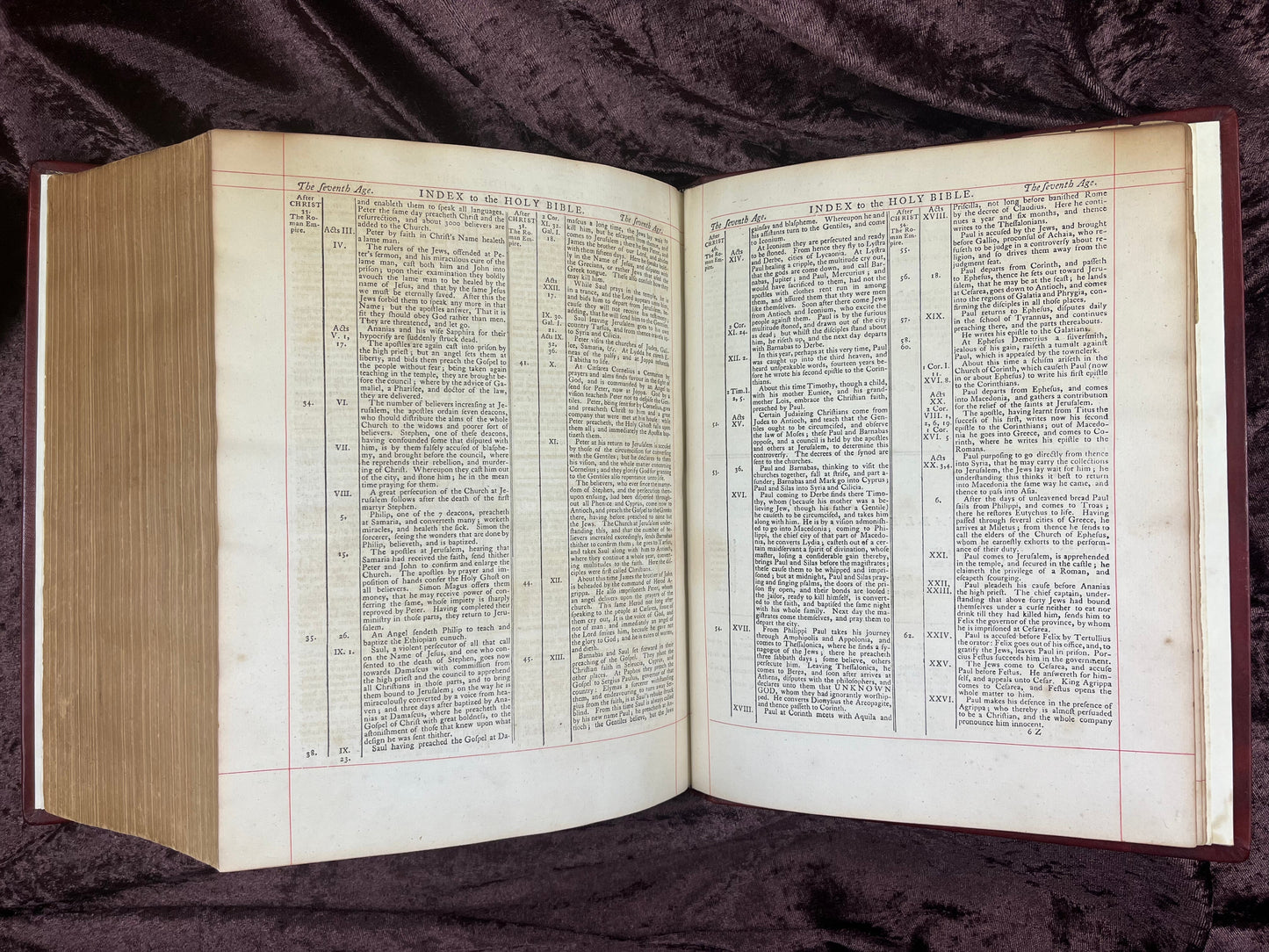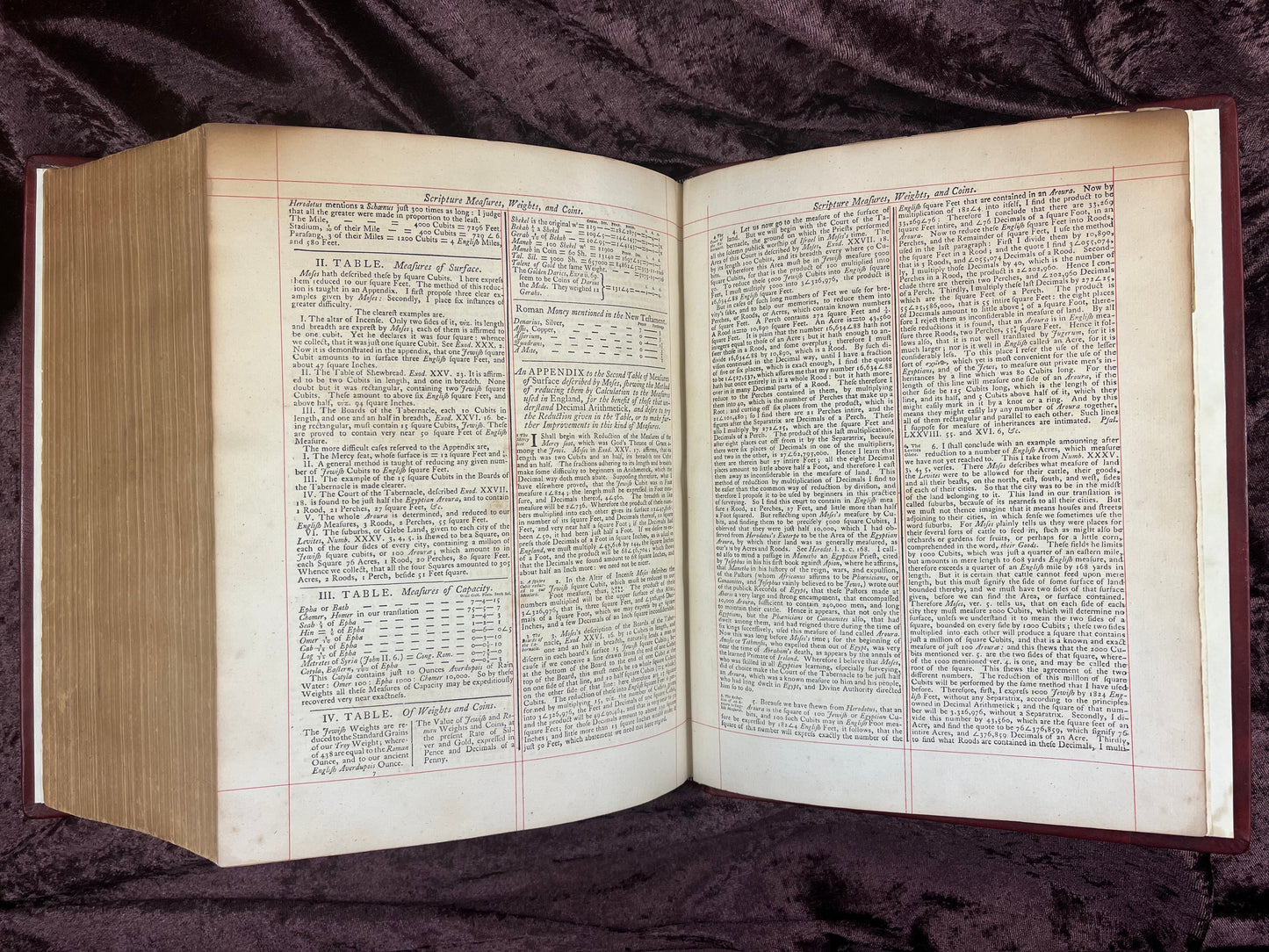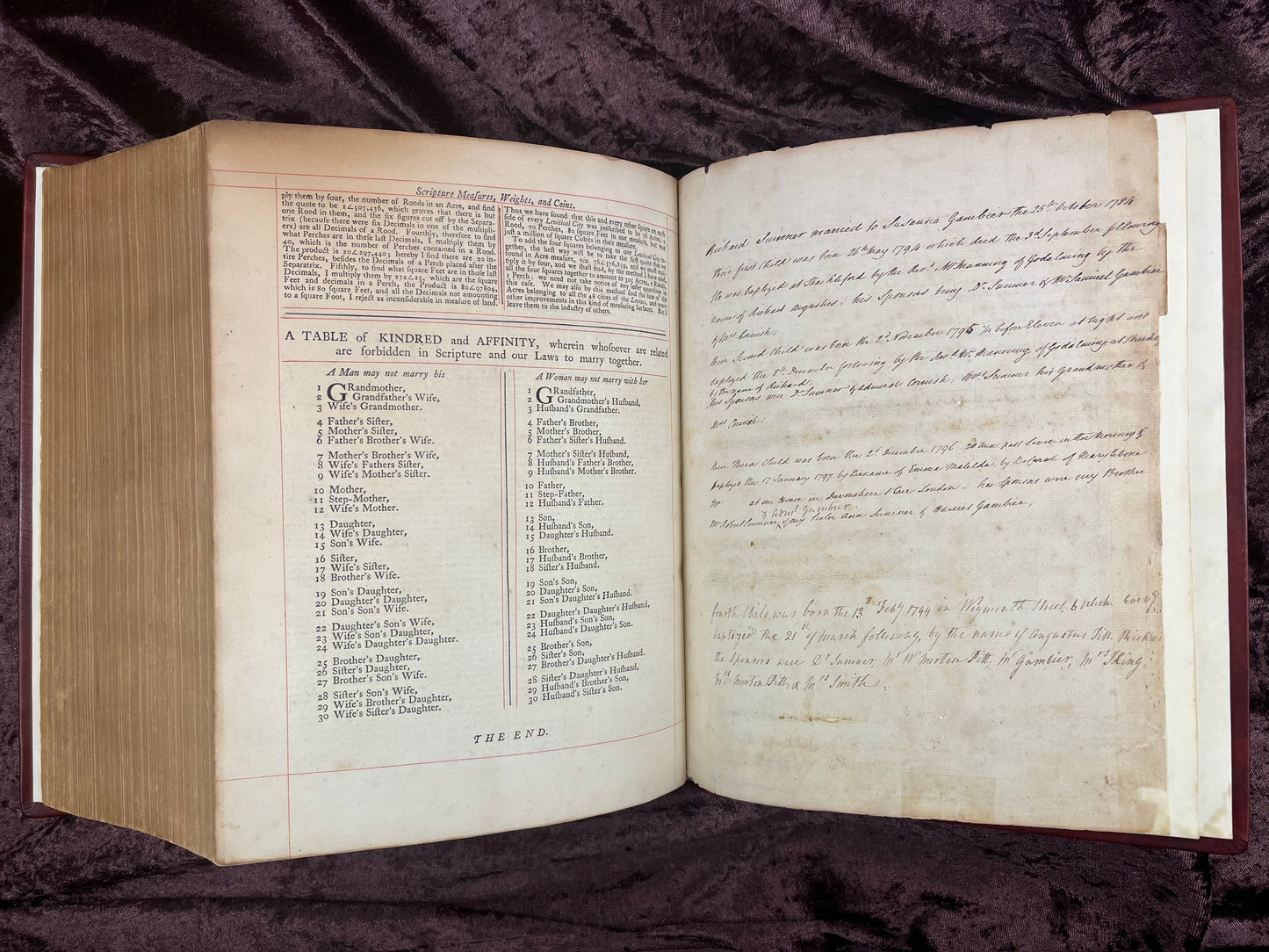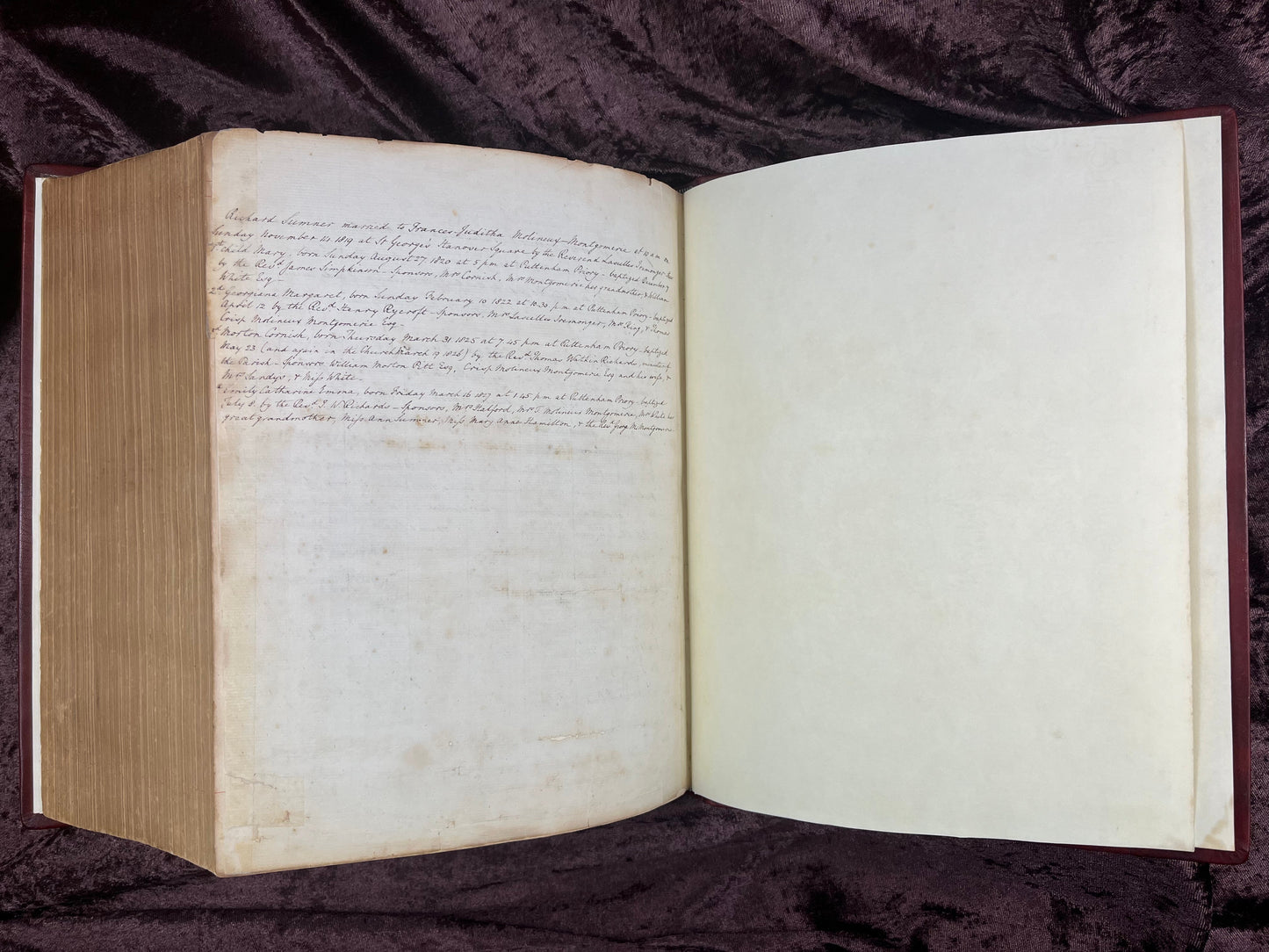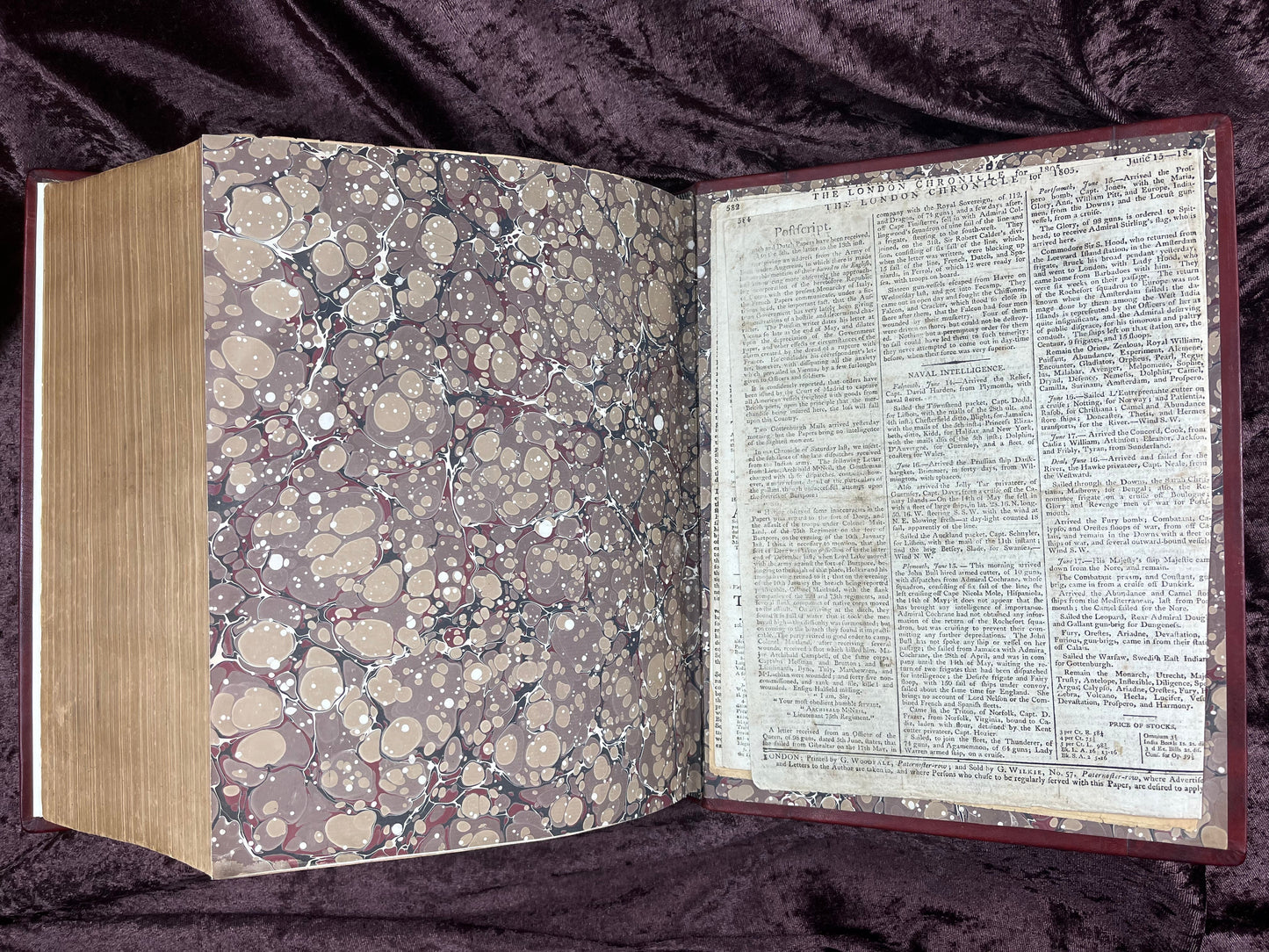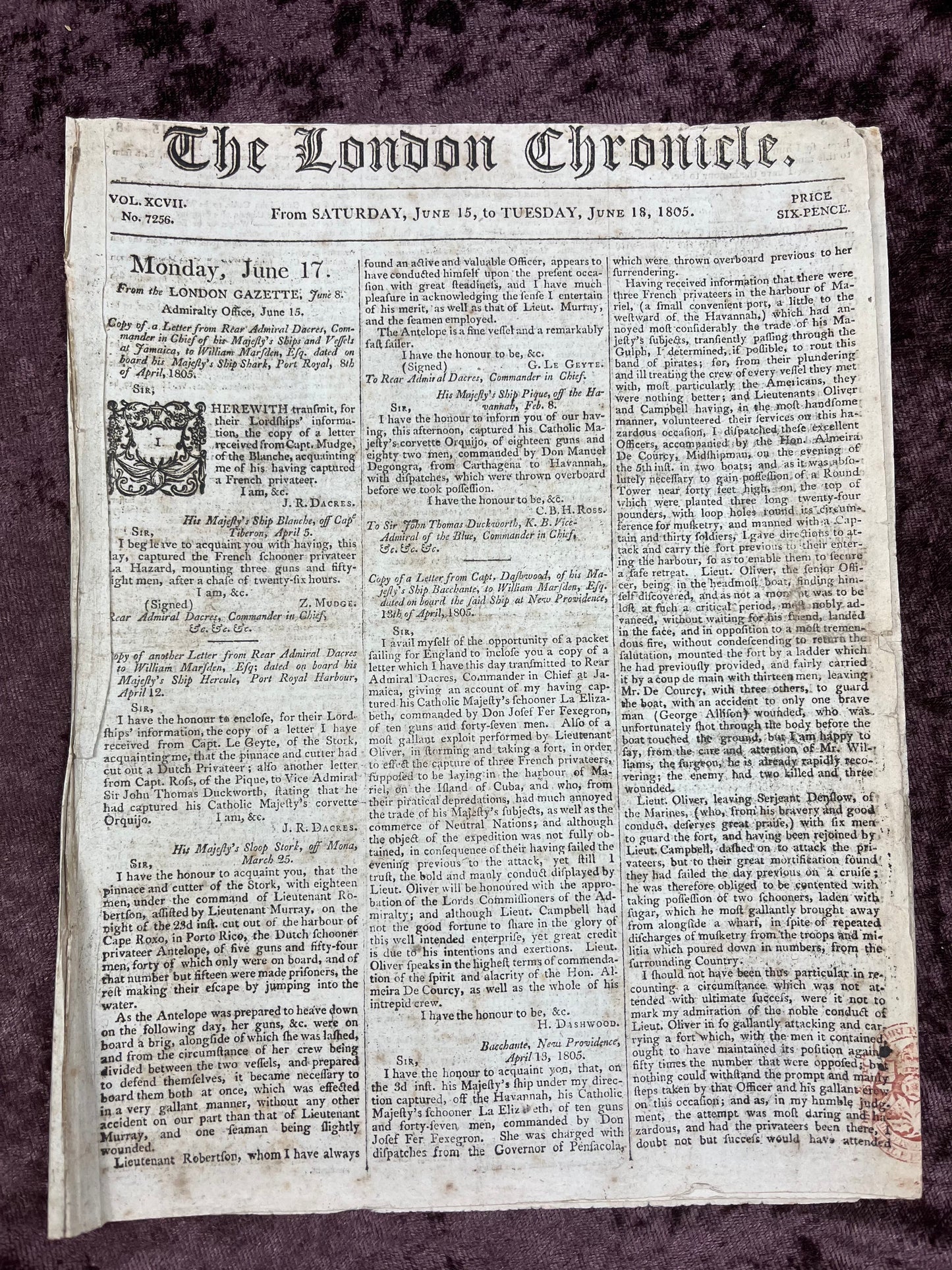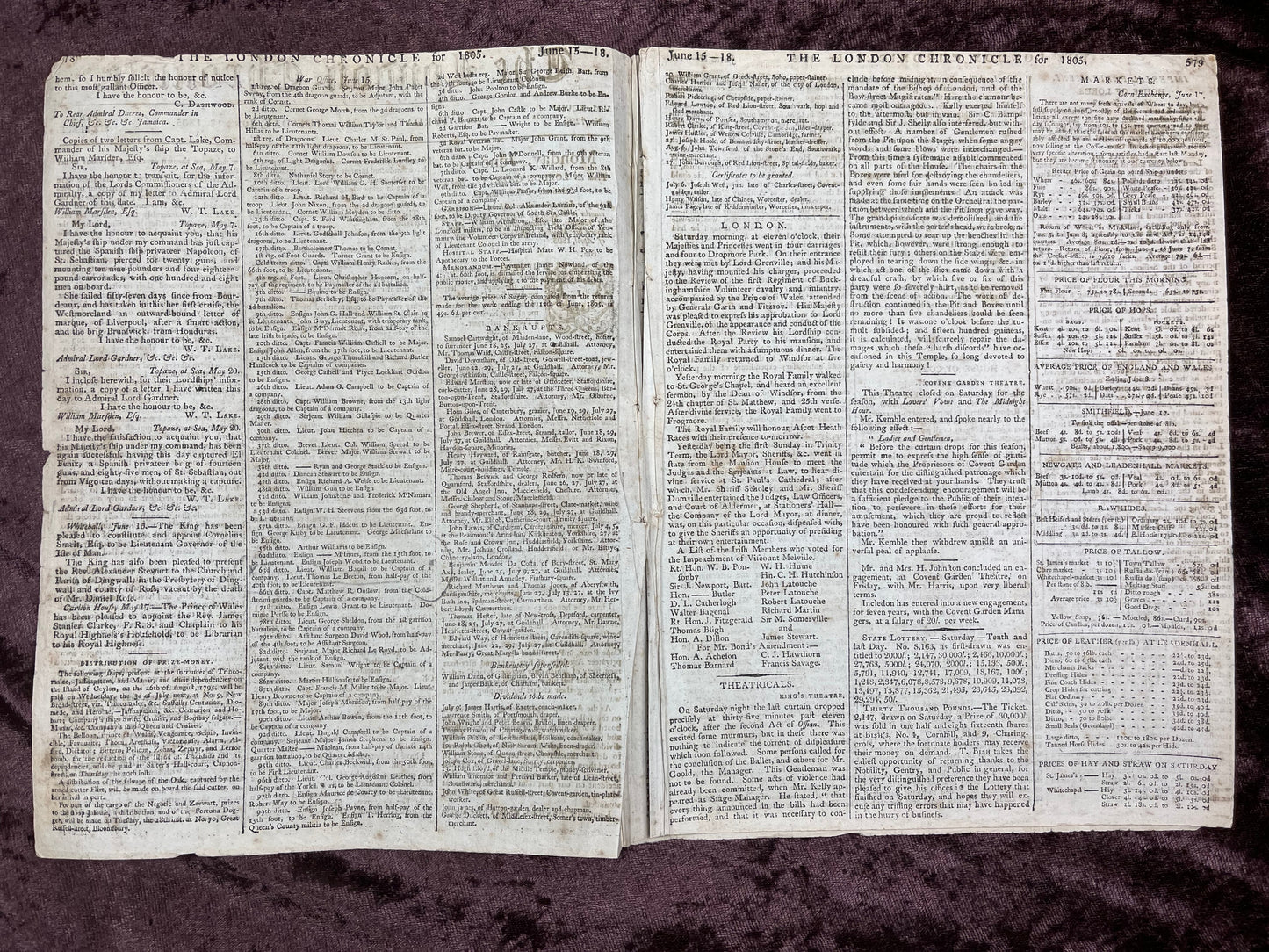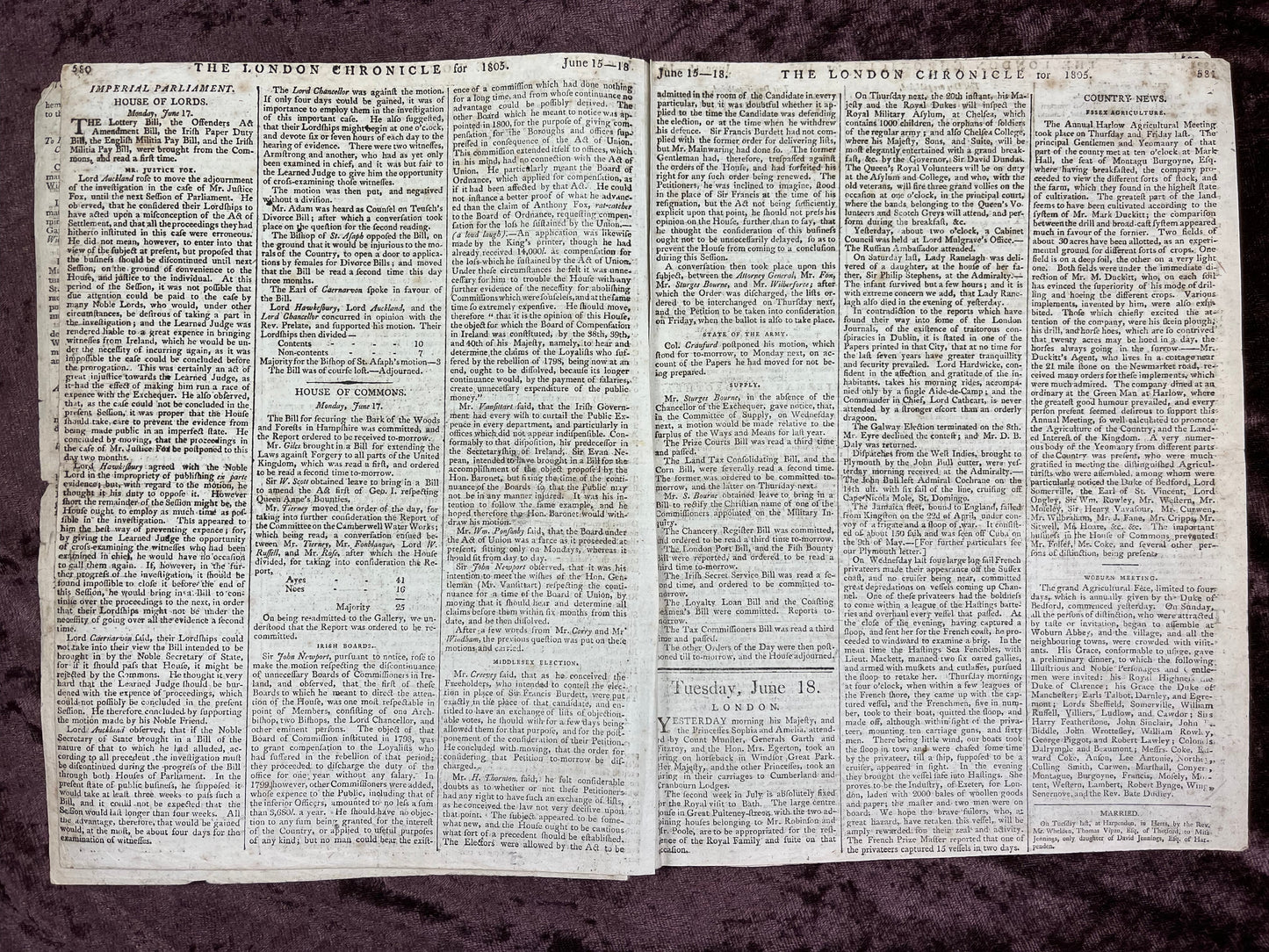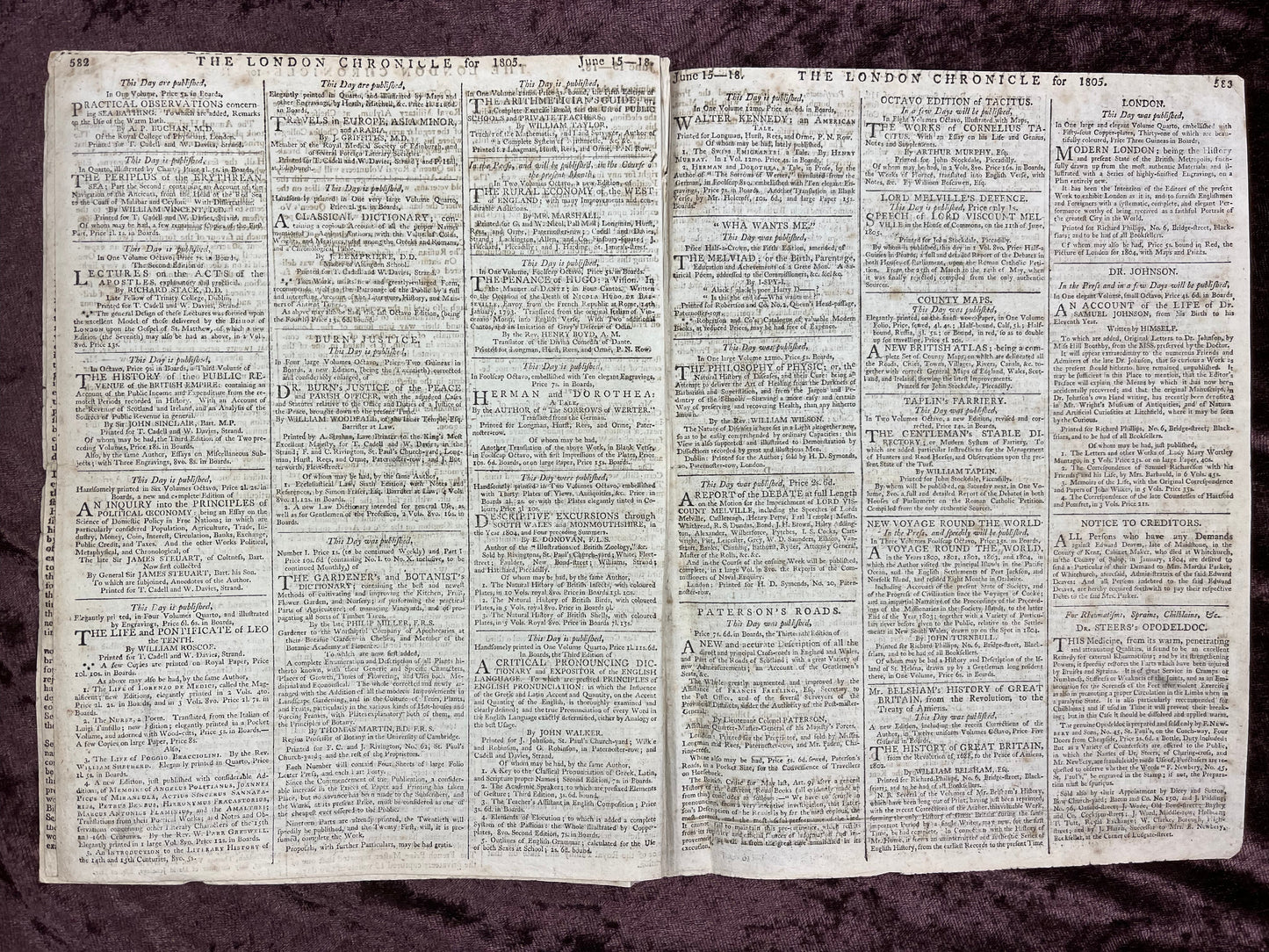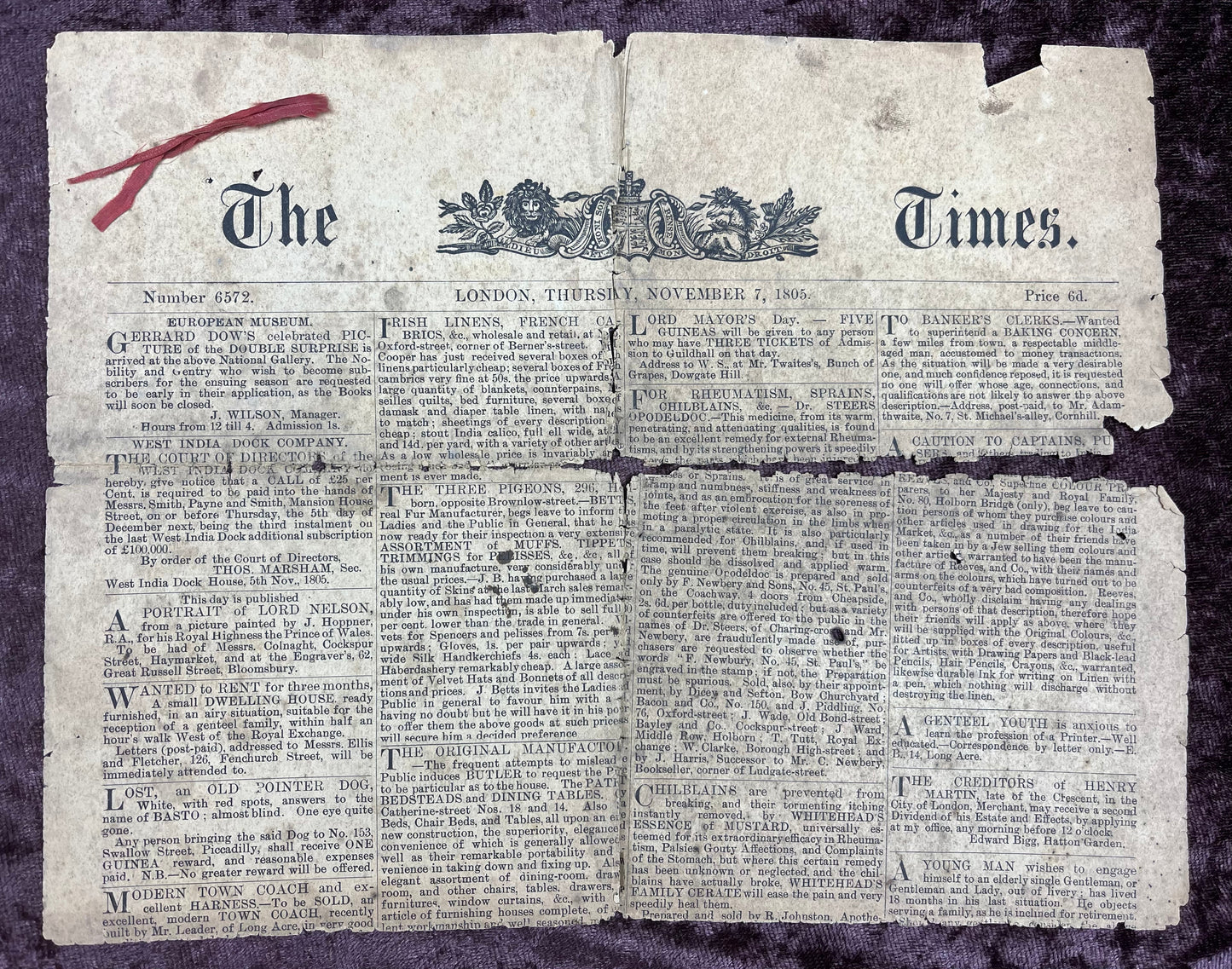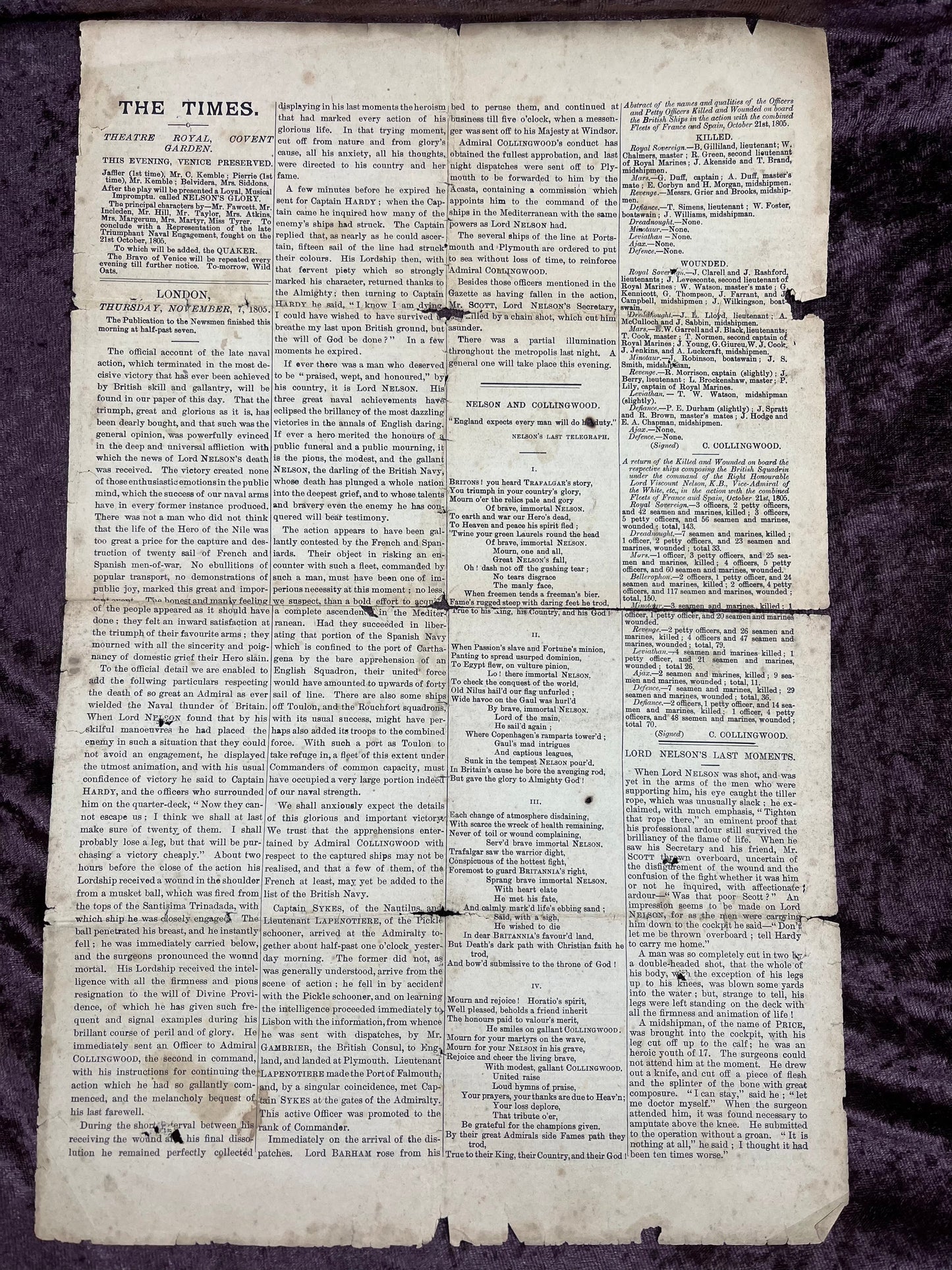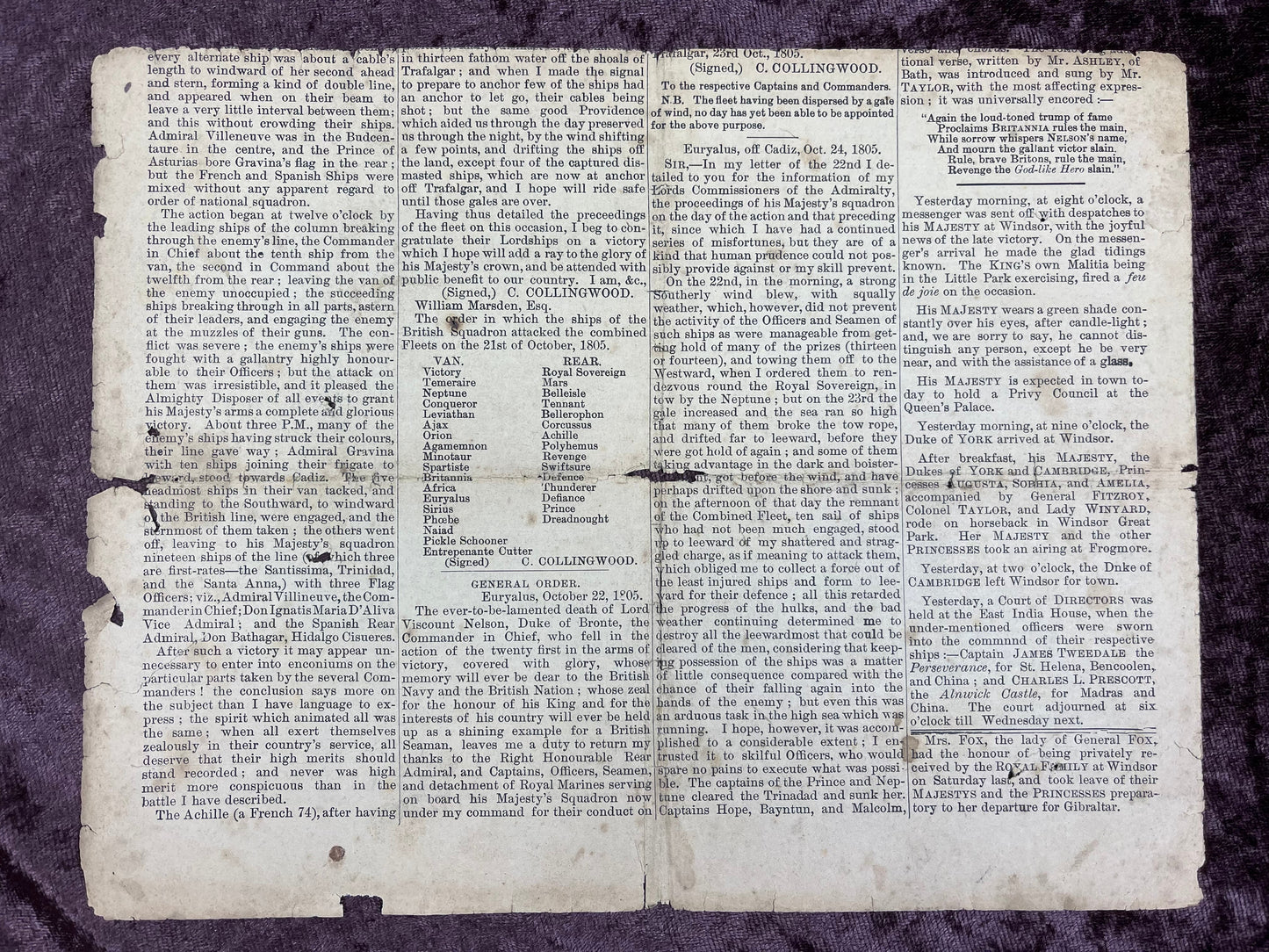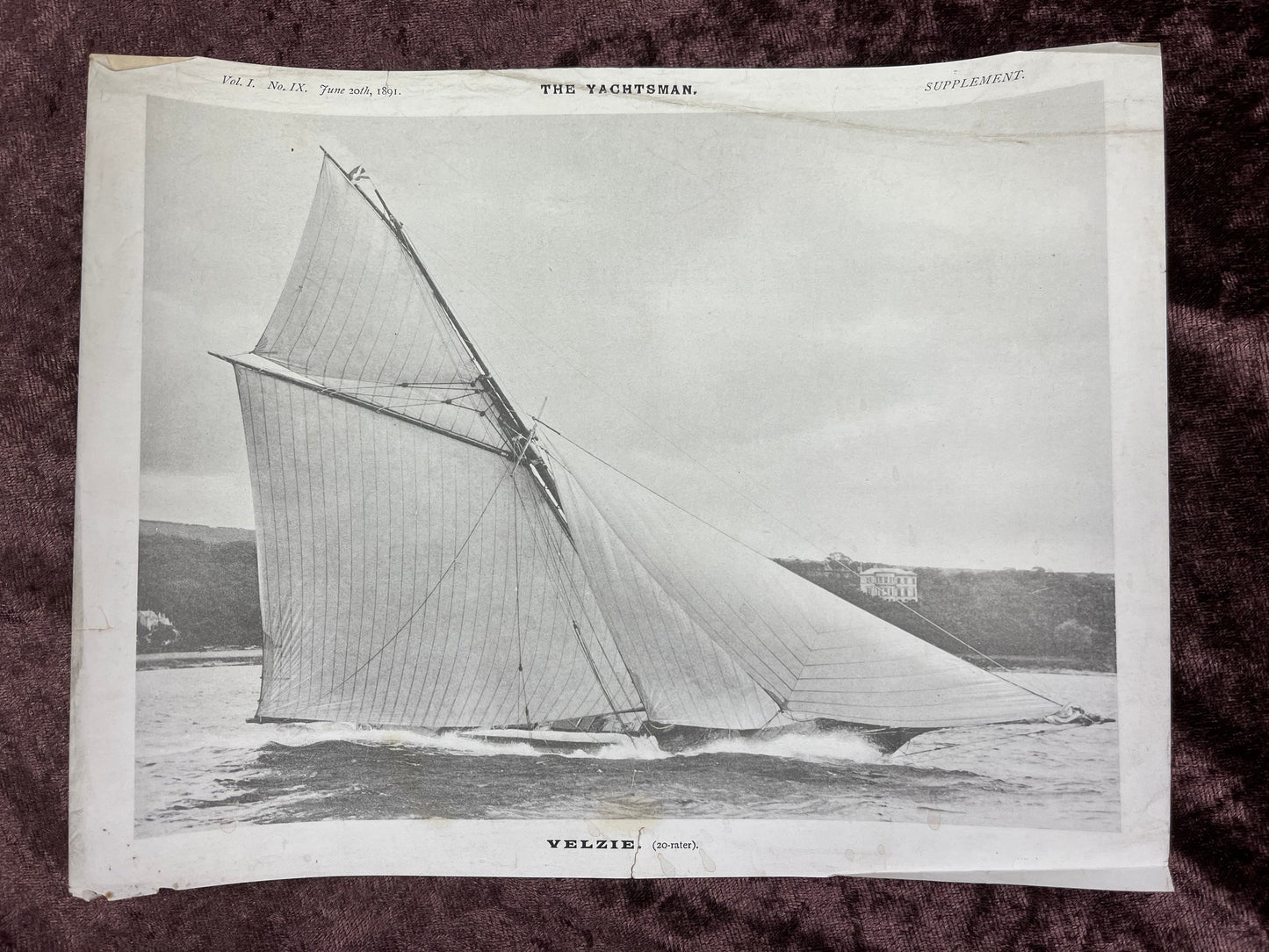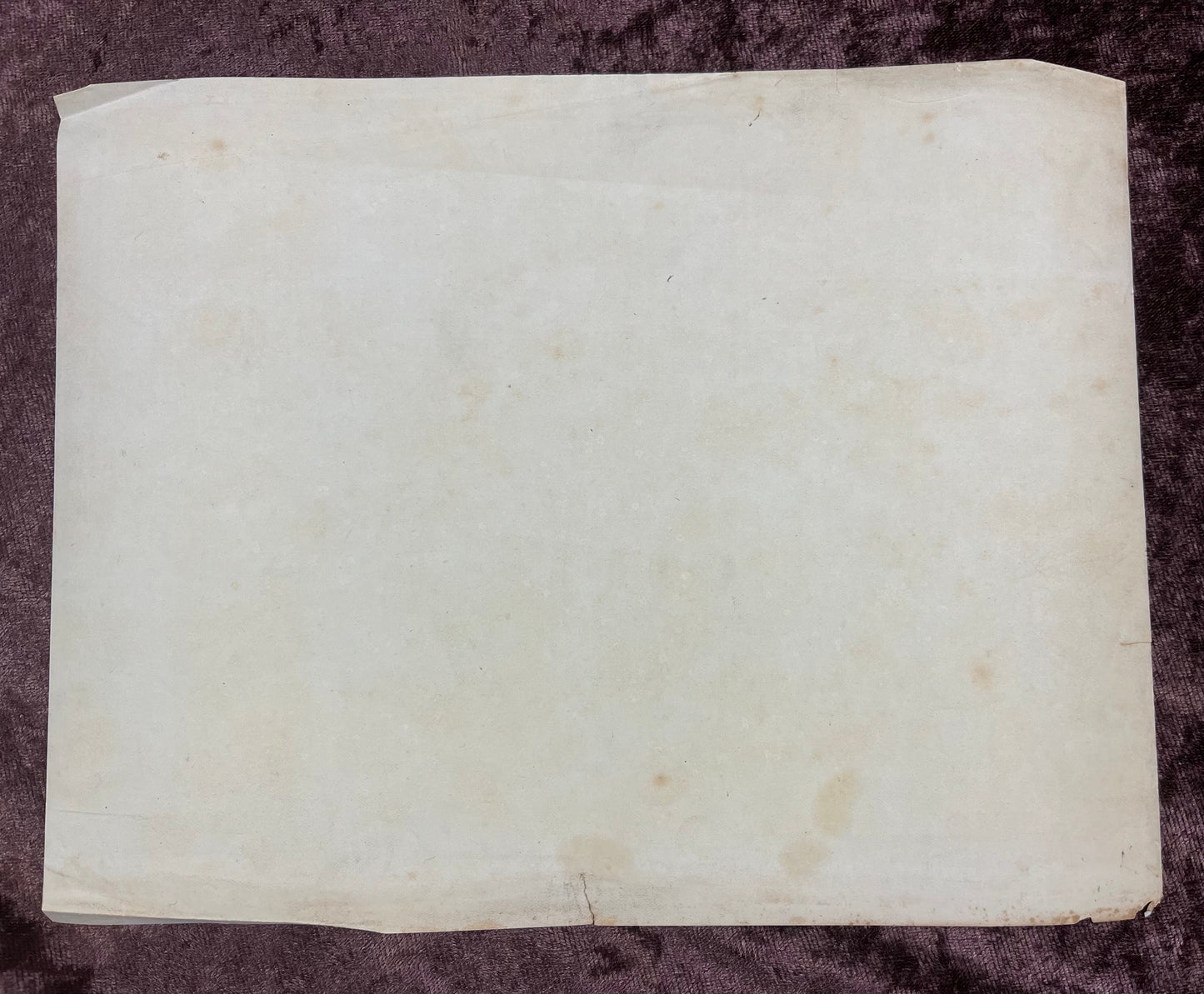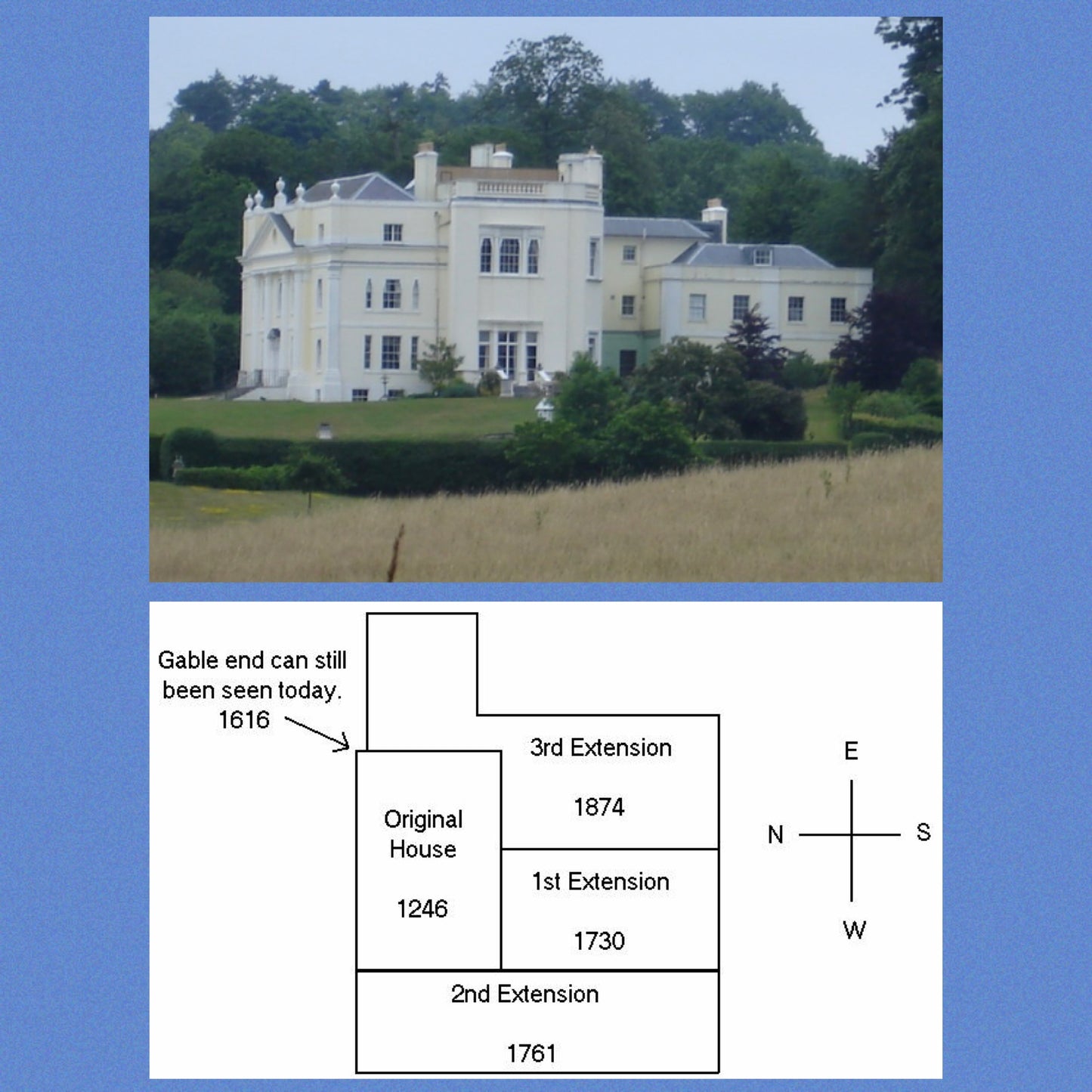1772 Large Quarto First Edition Second Issue King James Bible Ruled in red Printed in Oxford and Edited By Dr. Benjamin Blayney-Historically Owned By The Sumner Family
1772 Large Quarto First Edition Second Issue King James Bible Ruled in red Printed in Oxford and Edited By Dr. Benjamin Blayney-Historically Owned By The Sumner Family
Couldn't load pickup availability
Share
Importance: The first edition second issue of Dr. Benjamin Blayney’s famous 1769 Oxford standard quarto edition. Editing the King James Bible was a monumental project, and it was first initiated in 1755 after Dr. Samuel Johnson published his first edition English dictionary. The editing was completed in 1762 by Dr. F. S. Paris of Sidney Sussex College (Cambridge) and H. Therold a fellow of Magdalene. In 1762 Dr. Benjamin Blayney of Hertford College was employed by the Clarendon Press to edit Paris’ 1762 King James Bible edition, which would ultimately be completed in 1769. Dr. Blayney incorporated most of Paris’ improvements, increased his marginalia, and repeated not a few of his errors. The result was astounding, this became the most popular edition of the King James Bible, with proof of over 250 years of reprinting.
Dr. Blayney notes that the quarto was actually finished first, with the rare folio edition being issued later that same year, printed from the same type, and differently disposed. A manuscript note by Josiah Pratt states that “a great part of the folio edition of 1769 having been destroyed at Woodmason’s fire, a copy of that edition is scarcely to be purchased at any price. A copy of this edition is also very rarely to be met with; sometimes it may be found with a New Testament of later date substituted for that of 1769.” Harry Carter's History of the Oxford University Press praises both the scholarship and typography of the Bible, crediting editor Benjamin Blayney's careful collation of earlier editions for producing "a remarkably correct edition," which the pressmen made "very restful to the eye."
This is a Royal Bible since it bears the Royal Coat of Arms of King George III. Which means this copy was associated with the King’s Court, and someone really important once owned it. A remarkably clean large paper copy with unusually thick paper that was finely Ruled-red. It is very rare to find a Bible Ruled in red after 1740.
Binding: Thick Large Quarto (13” x 10.5” x 4.625”). 14 lb 14 oz. Modern full fine red morocco leather with relaid contemporary elaborately gilt tooled King George III embossed leather covers with a.e.g. Spine with five raised single blind-lined bands. Second compartment with gilt tooled green morocco leather label and title in capitals HOLY BIBLE. Modern marbled endpapers with a contemporary rear fly-leaf. Covers faded and upper boards’ inner hinge at the head has a minor tear.
Provenance: Late 18th c. monogram bookplate (owners initials) to front paste down RS (Richard Sumner 1751-1798). Contemporary rear fly-leaf with genealogical manuscript entries and baptisms of the wealthy Sumner Families. Fairbairn’s Book of Crests (1905 Edition), notes this particular Crest is The Sumner Family Crest. Sumner of Puttenham, Surrey, a Lion’s Head Erased Arg., Ducally Gorged Or.
Richard Sumner Esq. (1751-1798) married Susana Gambier (circa 1762-1812) October 25th 1784. They had four children: 1st child died without name (May 26th 1794), 2nd Richard Sumner (November 2nd 1795-1874), 3rd Emma Matilda Sumner (December 2nd 1796), 4th Augustus Pitt Richard Sumner (February 9th 1799). Records indicate that the Gambier Family (French Roots) was a wealthy family as they had a history of Governors, Captains, etc. Some examples are James Gambier (1723-1789) an English Vice Admiral who was the father of Susana Gambier (circa 1762-1812), John Gambier (1723-1782) who was a Lieutenant Governor of the Bahamas and the brother of James, Samuel Gambier (1726-17??) who was a Lawyer and the brother of John, and Admiral Lord Samuel Gambier (1752-1813) who was the First Commander of the Navy and the brother of Susana Gambier, etc.
Richard Sumner Esq. (the 2nd child of Richard Sumner November 2nd 1795-1873) married Frances Juditha Molineuy-Montgomerie, Sunday November 14th 1819. They had four children: 1st Mary Sumner (August 27th 1820), 2nd Georgiana Margaret Sumner (February 10th 1822), 3rd Morton Cornish Sumner (March 31st 1825-1878), 4th Emily Catharine Emma Sumner (March 16th 1827). All of the children were born in the historical Puttenham Priory which is a large house located in the eastern end of the village called Puttenham, and at one point this Bible was housed inside it. Below is a summary of the history of Puttenham Priory.
1246 The house was first owned by Beatrice de Fay. When she died she left it to her two daughters and one of them gave her half to the Prior of Newark. This half was called Puttenham priory and the other half was Puttenham bury. It was never really known as the Priory until the 18th c. 1347 Became the home of the priory’s steward and remain with the Newark priory until it was sold in 1545. 1545 It was brought by William Lussher. When Lady Lussher and three of her children died during the plague it was sold to Sir Oliph Leigh. At this time it was known as the manor. 1728 It was passed on by marriage to Jasper Jones. About this time he took a mortgage on the property to raise funds to build the first Extension in 1730. This modest house would have been a typical early Georgian house, more elegant and with larger windows than before. 1744 The house was bought by Brigadier-General James Edward Oglethorpe, founder of the colony of Georgia, as an investment and did not live there. 1761 Brigadier-General James Edward Oglethorpe, sold it to Thomas Parker who added the second extension and re-named it Puttenham Priory. He added the Palladian front you can see today and rebuilt the interior in a modern style and with elegant taste. 1775 Puttenham Priory was then sold to Captain Samuel Pitchford Cornish (1739-1816). Cornish married Mary Gambier (17??-18??) in October 16th 1771 and appears to have not had any children. Cornish was able to make such a purchase thanks to the great fortune left by his uncle, Sir Samuel Cornish. Sir Samuel Cornish was 1st Baronet (1715- October 30th 1770) and a British naval commander who fought in the Seven Years War and conquered Manila on 6 October 1762, this victory gave him great wealth. In 1749 Sir Cornish was elected a Fellow of the Royal Society, and after his victory there was a Town in New Hampshire named Cornish after him. 1819 When Cornish died a sundial was erected in the garden by his family. His widow sold the house to her nephew, Richard Sumner, who was not the most popular person to own the Priory. He persuaded the rector to demolish the rectory and move the road away from the house to where it is today. He also built the high wall to screen it from the road and new kitchen quarters were added to the east end of the house. He died in 1873. 1874 The house was passed on to his son Morton Cornish Sumner who demolished the kitchens that his father had built and built new ones in the basement at the east end. He also added a new south front. In 1878 Morton Cornish Sumner died and the estate was passed on to his sisters Emily and Georgiana. 1890 The house was let to Elizabeth Anne, Countess Guidobon Visconti. 1904 The last Sumner sister died. The priory was bought by Mark and his son Ferdinand Smallpeice. The countesses lease was renewed until she died in 1910. A chalice in the church is in her memory. 1931 Until now the house had several tenants until it was sold to Dame Ethel, Dowager Viscountess Harcourt. 1946 The house was sold to Edward Hutton. 1950 Acquired by the Ministry of Health and was used as a geriatric hospital until it closed in 1976. 1977 The priory was bought by Mr. Sanders who spent four years restoring it back to a typical Georgian style to be used again as a private house. 1982 Mr. Sanders then put the priory up for sale and was bought by Mr. Dunning. Present The house is now the home of Queen drummer, Roger Taylor.
Collation & Notes: OT has [414] ff or [828] pp: A2 ([A1r] G.T.P.), B4, A-Z4, Aa-Zz4, Aaa-Zzz4, Aaaa-Zzzz4, Aaaaa-Kkkkk4 (ends Kkkkk4v). Apocrypha has [96] ff or [192] pp: A-Z4, Aa4 (ends Aa4r). NT has [143] ff or [286] pp: Lllll-Zzzzz4 ([5L1r] T.P.), Aaaaaa-Yyyyyy4, Zzzzzz3 (ends 6U2v & Index ends 6Z3v). Total [653] ff or [1,306] pp.
Complete, with two original title pages and Index. Horizontal chain lines. Contemporary rear fly-leaf with vertical chain lines. Darlow & Moule 885, 887, 901. Herbert 1194, 1196, 1220. ESTC records no copies. Revelation 18:22 omitted as in 1769 and no craftsmen, of whatsoever craft he be, shall be found any more in thee;.
Condition: Leaves (12.375” x 9.75”). Head slightly bumped. Occasional minor marginal tears (some mended) and edge wear, with light staining (plus from pressed leaves and red ribbon markers). Some foxing in Apocrypha, early in NT, and Index. 6D3v-4r (1”) head corner stain (fades fast). Near the end Index leaves start to darken toward head corners. Contemporary rear fly-leaf remargined.

